Substituted pyrrolo[1,2-a]pyrimidines and their use in the treatment of medical disorders
Skerlj , et al. A
U.S. patent number 10,751,341 [Application Number 16/453,109] was granted by the patent office on 2020-08-25 for substituted pyrrolo[1,2-a]pyrimidines and their use in the treatment of medical disorders. This patent grant is currently assigned to Lysosomal Therapeutics Inc.. The grantee listed for this patent is Lysosomal Therapeutics Inc.. Invention is credited to Elyse Marie Josee Bourque, Andrew C. Good, Dimitri Krainc, Peter T. Lansbury, Richard B. Silverman, Renato T. Skerlj, Jianbin Zheng.

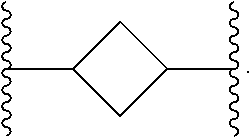
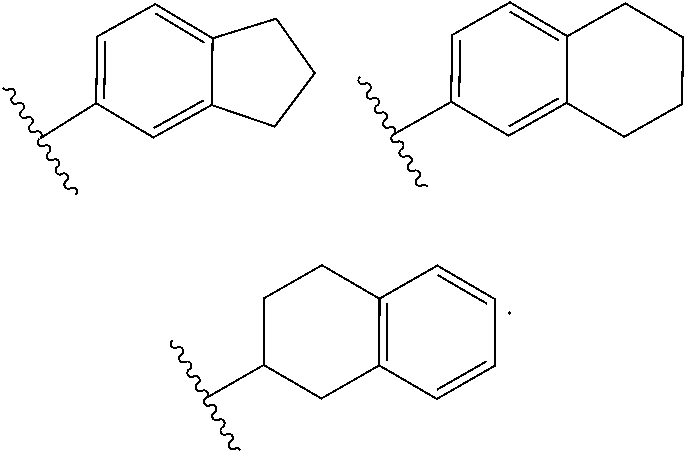

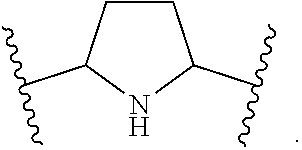






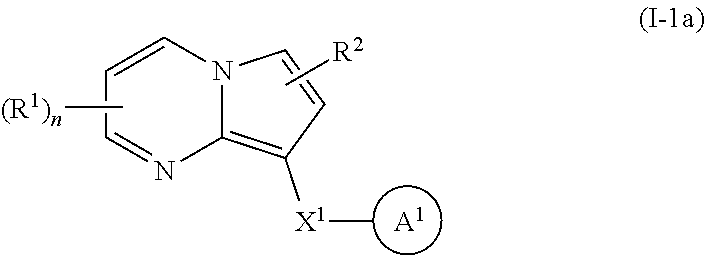
View All Diagrams
| United States Patent | 10,751,341 |
| Skerlj , et al. | August 25, 2020 |
Substituted pyrrolo[1,2-a]pyrimidines and their use in the treatment of medical disorders
Abstract
The invention provides substituted pyrrolo[1,2-a]pyrimidines and related organic compounds, compositions containing such compounds, medical kits, and methods for using such compounds and compositions to treat medical disorders, e.g., Gaucher disease, Parkinson's disease, Lewy body disease, dementia, or multiple system atrophy, in a patient. Exemplary substituted pyrrolo[1,2-a]pyrimidines compounds described herein include substituted 2,4-dimethyl-N-phenylpyrrolo[1,2-a]pyrimidine-8-carboxamide compounds and variants thereof.
| Inventors: | Skerlj; Renato T. (West Newton, MA), Lansbury; Peter T. (Brookline, MA), Good; Andrew C. (Wallingford, CT), Bourque; Elyse Marie Josee (L'etang-du-Nord, CA), Silverman; Richard B. (Evanston, IL), Krainc; Dimitri (Evanston, IL), Zheng; Jianbin (Evanston, IL) | ||||||||||
|---|---|---|---|---|---|---|---|---|---|---|---|
| Applicant: |
|
||||||||||
| Assignee: | Lysosomal Therapeutics Inc.
(Cambridge, MA) |
||||||||||
| Family ID: | 55909881 | ||||||||||
| Appl. No.: | 16/453,109 | ||||||||||
| Filed: | June 26, 2019 |
Prior Publication Data
| Document Identifier | Publication Date | |
|---|---|---|
| US 20200030331 A1 | Jan 30, 2020 | |
Related U.S. Patent Documents
| Application Number | Filing Date | Patent Number | Issue Date | ||
|---|---|---|---|---|---|
| 15523775 | |||||
| PCT/US2015/059534 | Nov 6, 2015 | ||||
| 62076076 | Nov 6, 2014 | ||||
| Current U.S. Class: | 1/1 |
| Current CPC Class: | C07D 519/00 (20130101); A61P 25/16 (20180101); A61P 25/18 (20180101); A61K 31/519 (20130101); C07D 487/04 (20130101); A61K 31/165 (20130101) |
| Current International Class: | C07D 487/04 (20060101); A61P 25/18 (20060101); A61K 31/519 (20060101); C07D 519/00 (20060101); A61P 25/16 (20060101); A61K 31/165 (20060101) |
References Cited [Referenced By]
U.S. Patent Documents
| 4838925 | June 1989 | Tseng |
| 7550470 | June 2009 | Fraley |
| 7723336 | May 2010 | Vaccaro et al. |
| 7795273 | September 2010 | Imbach et al. |
| 8163759 | April 2012 | Tanimoto et al. |
| 8372851 | February 2013 | Rice et al. |
| 8680159 | March 2014 | Reich et al. |
| 9085560 | July 2015 | Ren et al. |
| 9127000 | September 2015 | Ren et al. |
| 9353117 | May 2016 | Marugan et al. |
| 9732089 | August 2017 | Skerlj et al. |
| 9840510 | December 2017 | Skerlj et al. |
| 9868742 | January 2018 | Skerlj et al. |
| 9920061 | March 2018 | Skerlj et al. |
| 2006/0287324 | December 2006 | Sun et al. |
| 2007/0082902 | April 2007 | Paruch et al. |
| 2008/0176870 | July 2008 | Nolte et al. |
| 2008/0255153 | October 2008 | Bremberg et al. |
| 2012/0015962 | January 2012 | Arora et al. |
| 2012/0071461 | March 2012 | Reich et al. |
| 2013/0095089 | April 2013 | Larsen et al. |
| 2013/0245021 | September 2013 | Bi et al. |
| 2014/0288093 | September 2014 | Krainc et al. |
| 2014/0349993 | November 2014 | Casaubon et al. |
| 2015/0175610 | June 2015 | Bi et al. |
| 2015/0183791 | July 2015 | Bi et al. |
| 2015/0191474 | July 2015 | Takahashi et al. |
| 2016/0159808 | June 2016 | Kawasaki et al. |
| 2017/0001976 | January 2017 | Krainc et al. |
| 2017/0002013 | January 2017 | Krainc et al. |
| 2017/0333435 | November 2017 | Skerlj et al. |
| 2017/0334916 | November 2017 | Skerlj et al. |
| 2018/0185368 | July 2018 | Skerlj et al. |
| 2019/0119283 | April 2019 | Skerlj et al. |
| 2019/0216813 | July 2019 | Skerlj et al. |
| 2019/0315751 | October 2019 | Skerlj et al. |
| 102004049363 | Apr 2006 | DE | |||
| 1878727 | Jan 2008 | EP | |||
| 2269990 | Jan 2011 | EP | |||
| 2746265 | Nov 2015 | EP | |||
| 3026051 | Jun 2016 | EP | |||
| 2000-318321 | Nov 2000 | JP | |||
| 2000-327681 | Nov 2000 | JP | |||
| 2004277337 | Oct 2004 | JP | |||
| WO-2002064545 | Aug 2002 | WO | |||
| WO-2003002584 | Jan 2003 | WO | |||
| WO-2003035649 | May 2003 | WO | |||
| WO-2003074525 | Sep 2003 | WO | |||
| WO-2004026869 | Apr 2004 | WO | |||
| WO-2004052315 | Jun 2004 | WO | |||
| WO-2004094418 | Nov 2004 | WO | |||
| WO-2005046611 | May 2005 | WO | |||
| WO-2005058837 | Jun 2005 | WO | |||
| WO-2005068426 | Jul 2005 | WO | |||
| WO-2005077953 | Aug 2005 | WO | |||
| WO-2005123738 | Dec 2005 | WO | |||
| WO-2006015737 | Feb 2006 | WO | |||
| WO-2006078676 | Jul 2006 | WO | |||
| WO-2006084634 | Aug 2006 | WO | |||
| WO-2007048066 | Apr 2007 | WO | |||
| WO-2007108750 | Sep 2007 | WO | |||
| WO-2008019363 | Feb 2008 | WO | |||
| WO-2008063669 | May 2008 | WO | |||
| WO-2008063671 | May 2008 | WO | |||
| WO-2008116898 | Oct 2008 | WO | |||
| WO-2008138889 | Nov 2008 | WO | |||
| WO-2008157575 | Dec 2008 | WO | |||
| WO-2009060197 | May 2009 | WO | |||
| WO-2009060835 | May 2009 | WO | |||
| WO-2009070567 | Jun 2009 | WO | |||
| WO-2009100375 | Aug 2009 | WO | |||
| WO-2009134973 | Nov 2009 | WO | |||
| WO-2010043893 | Apr 2010 | WO | |||
| WO-2010051549 | May 2010 | WO | |||
| WO-2010086040 | Aug 2010 | WO | |||
| WO-2011022439 | Feb 2011 | WO | |||
| WO-2012007375 | Jan 2012 | WO | |||
| WO-2012034095 | Mar 2012 | WO | |||
| WO-2012038081 | Mar 2012 | WO | |||
| WO-2012075393 | Jun 2012 | WO | |||
| WO-2012078855 | Jun 2012 | WO | |||
| WO-2012116237 | Aug 2012 | WO | |||
| WO-2012129258 | Sep 2012 | WO | |||
| WO-2012177997 | Dec 2012 | WO | |||
| WO-2013030288 | Mar 2013 | WO | |||
| WO-2013059587 | Apr 2013 | WO | |||
| WO-2013096060 | Jun 2013 | WO | |||
| WO-2013134079 | Sep 2013 | WO | |||
| WO-2013148333 | Oct 2013 | WO | |||
| WO-2013178591 | Dec 2013 | WO | |||
| WO-2014025651 | Feb 2014 | WO | |||
| WO-2014037340 | Mar 2014 | WO | |||
| WO-2014075168 | May 2014 | WO | |||
| WO-2014085607 | Jun 2014 | WO | |||
| WO-2014089379 | Jun 2014 | WO | |||
| WO-2014141129 | Sep 2014 | WO | |||
| WO-2014144455 | Sep 2014 | WO | |||
| WO-2015012328 | Jan 2015 | WO | |||
| WO-2015035117 | Mar 2015 | WO | |||
| WO-2015073267 | May 2015 | WO | |||
| WO-2015147639 | Oct 2015 | WO | |||
| WO-2016007736 | Jan 2016 | WO | |||
| WO-2016073889 | May 2016 | WO | |||
| WO-2016073891 | May 2016 | WO | |||
| WO-2016073895 | May 2016 | WO | |||
| WO-2017004408 | Jan 2017 | WO | |||
| WO-2017040877 | Mar 2017 | WO | |||
| WO-2017079519 | May 2017 | WO | |||
| WO-2017176960 | Oct 2017 | WO | |||
| WO-2017176961 | Oct 2017 | WO | |||
| WO-2017176962 | Oct 2017 | WO | |||
| WO-2017192841 | Nov 2017 | WO | |||
| WO-2017192929 | Nov 2017 | WO | |||
| WO-2017192930 | Nov 2017 | WO | |||
| WO-2017192931 | Nov 2017 | WO | |||
| WO-2019126776 | Jun 2019 | WO | |||
Other References
|
"Symptoms of Gaucher Disease" retrieved from the internet Apr. 17, 2017 from url: http://www.gaucherdisease.org/about-gaucher-disease/symptoms/. cited by applicant . Ahmetaj, S. et al. "Parallel synthesis of 7-heteroaryl-pyrazolo[1,5-a]pyrimidine-3-carboxamides" Molecular Diversity (2013) vol. 17, No. 4, pp. 731-743. cited by applicant . CAS Registry No. 1022459-94-4, STN entry date: May 25, 2008, chemical name: 5-(2-furanyl)-N-[(4-methylphenyl)methyl]-7-(trifluoromethyl)-pyrazo- lo[1,5-a]pyrimidine-3-carboxamide. cited by applicant . CAS Registry No. 1027839-50-4, STN entry date: Jun. 13, 2008, chemical name: 8-Quinazolinecarboxamide, N-ethyl-2-(2-propoxyphenyl)-. cited by applicant . CAS Registry No. 1090443-11-0, STN entry date: Dec. 26, 2008, chemical name: N-(dicyclopropylmethyl)-5,7-dimethyl-pyrazolo[1,5-a]pyrimidine-3-ca- rboxamide. cited by applicant . CAS Registry No. 1099976-59-6, STN entry date: Feb. 3, 2009, chemical name: N-(1-cyclopropyl-4-piperidinyl)-5,7-dimethyl-pyrazolo[1,5-a]pyrimid- ine-3-carboxamide. cited by applicant . CAS Registry No. 1121583-22-9, STN entry date: Mar. 16, 2009, chemical name: pyrrolo[1,2-a]pyrimidine-8-carboxamide, 6-chloro-N-(3-methylphenyl)-. cited by applicant . CAS Registry No. 1121584-90-4, STN entry date: Mar. 16, 2009, chemical name: pyrrolo[1,2-a]pyrimidine-8-carboxamide, 6-chloro-N-[2-(1-piperidinyl)ethyl]-. cited by applicant . CAS Registry No. 1224940-28-6, STN entry date: May 24, 2010, chemical name: N-cyclohexyl-5-methoxy-pyrazolo[1,5-a]pyrimidine-3-carboxamide. cited by applicant . CAS Registry No. 1224940-60-6, STN entry date: May 24, 2010, chemical name: N-cyclohexyl-5-(ethylamino)-pyrazolo[1,5-a]pyrimidine-3-carboxamide- . cited by applicant . CAS Registry No. 1260846-47-6, STN entry date: Jan. 27, 2011, chemical name: N-(1,1-dimethylethyl)-5-[(2R)-2-(3-fluorophenyl)-4-oxo-1-pyrrolidin- yl]-pyrazolo[1,5-a]pyrimidine-3-carboxamide. cited by applicant . CAS Registry No. 1348484-20-7, STN entry date: Dec. 4, 2011, chemical name: Imidazo[1,2-a]pyridine-8-carboxamide, N-[(1-butyl-4-piperidinyl)methyl]-6-chloro-2-ethyl-5-(methylamino)-. cited by applicant . CAS Registry No. 1348704-16-4, STN entry date: Dec. 4, 2011, chemical name: Imidazo[1,2-a]pyridine-8-carboxamide, N-[(1-butyl-4-piperidinyl)methyl]-6-chloro-2-methyl-5-(methylamino)-. cited by applicant . CAS Registry No. 1825314-78-0, STN entry date: Dec. 8, 2015, chemical name: 4-Benzoxazolecarboxamide, 2-methyl-N-6-oxa-2-thiaspiro[4.5]dec-9-yl-. cited by applicant . CAS Registry No. 696640-82-1, STN entry date: Jun. 21, 2004, chemical name: 7-(difluoromethyl)-5-(4-methoxyphenyl)-N-(tricyclo[3.3.1.13,7]dec-1- -ylmethyl)-pyrazolo[1,5-a]pyrimidine-3-carboxamide. cited by applicant . CAS Registry No. 765896-16-0, STN entry date: Oct. 20, 2004, chemical name: Imidazo[1,2-a]pyridine-8-carboxamide, 5-amino-2-ethyl-N-[[1-(3-methoxypropyl)-4-piperidinyl]methyl]-. cited by applicant . CAS Registry No. 895779-11-0, STN entry date: Jul. 25, 2006, chemical name: 5-(4-bromophenyl)-N-[(4-methoxyphenyl)methyl]-7-(trifluoromethyl)-p- yrazolo[1,5-a]pyrimidine-3-carboxamide. cited by applicant . CAS Registry No. 1116067-90-3, STN entry date: Mar. 5, 2009, chemical name: N-[3-(hexahydro-lH-azepin-l-yl)propyl]-6-phenyl-1,2,4-Triazolo[4,3-- b]pyridazine-3-carboxamide. cited by applicant . Huppatz, J. L. "Systemic Fungicides. The Synthesis of Pyrazolo[1,5-a]pyrimidine Analogues of Carboxin," Australian J. Chem. (1985) vol. 38, No. 1, pp. 221-230. (Abstract Only). cited by applicant . International Search Report and Written Opinion for PCT/US2015/059534 dated Feb. 5, 2016. (14 pages). cited by applicant . Liu K. C. C. et al. "Quinazolines with intra-molecular hydrogen bonding scaffold (iMHBS) as PI3K/mTOR dual inhibitors," Bioorg. Med. Chem. Lett. (2011) vol. 21, Issue 4, pp. 1270-1274. cited by applicant . Marugan, J. J. et al. "Evaluation of Quinazoline Analogues as Glucocerebrosidase Inhibitors with Chaperone Activity," J. Med. Chem. (2011) vol. 54, pp. 1033-1058. cited by applicant . Mata, I. F. et al. "Glucocerebrosidase Gene Mutations: A Risk Factor for Lewy Body Disorders," Arch. Neurol. (2008) vol. 65, No. 3, pp. 379-382. cited by applicant . Ortega, R. A. et al. "Glucocerebrosidase enzyme activity in GBA mutation Parkinson's disease," J. Clin. Neurosci. (2016) vol. 28, p. 185-186. (Abstract Only--Retrieved from the internet on Apr. 17, 2017 from url: https://www.ncbi.nlm.nih.gov/pubmed/26857292). cited by applicant . STN Chemical Structure Search Results (dated Aug. 24, 2015). (26 pages). cited by applicant . STN Chemical Structure Search Results (dated Aug. 6, 2014). (61 pages). cited by applicant . STN Chemical Structure Search Results (dated Jul. 1, 2014). (44 pages). cited by applicant . STN Chemical Structure Search Results (dated Jul. 1, 2014). (8 pages). cited by applicant . STN Chemical Structure Search Results (dated Jul. 8, 2014). (108 pages). cited by applicant . STN Chemical Structure Search Results (dated Jul. 8, 2014). (38 pages). cited by applicant . STN Chemical Structure Search Results (dated Jun. 10, 2015). (26 pages). cited by applicant . STN Chemical Structure Search Results Part I (dated Aug. 18, 2016). (29 pages). cited by applicant . STN Chemical Structure Search Results Part I (dated Mar. 13, 2016). (39 pages). cited by applicant . STN Chemical Structure Search Results Part I (dated Mar. 14, 2016). (108 pages). cited by applicant . STN Chemical Structure Search Results Part II (dated Aug. 18, 2016). (87 pages). cited by applicant . STN Chemical Structure Search Results Part II (dated Mar. 13, 2016). (115 pages). cited by applicant . STN Chemical Structure Search Results Part II (dated Mar. 14, 2016). (28 pages). cited by applicant . Wang, X. et al. "Discovery of novel pyrazolo[1,5-a]pyrimidines as potent pan-Pim inhibitors by structure- and property-based drug design," Bioorg. Med. Chem. Lett. (2013) vol. 23, pp. 3149-3153. cited by applicant . Almeida, MR."Glucocerebrosidase Involvement in Parkinson Disease and other Synucleinopathies," Frontiers in Neurology Apr. 27;3:65 2012. cited by applicant . Caira M. R. "Crystalline Polymorphism of Organic Compounds." Topics in Current Chemistry. Springer, Berlin, DE, vol. 198, Jan. 1, 1998, pp. 163-208. cited by applicant . CAS registry No. 1477723-10-6, STN entry date: Nov. 21, 2013, chemical name: Pyrazolo[1,5-a]pyrimidine-3-carboxamide, N-[2-(aminomethyl)cyclopentyl]-5,7-dimethyl-. cited by applicant . CAS registry No. 1486188-70-8, STN entry date: Dec. 3, 2013, chemical name: Pyrazolo[1,5-a]pyrimidine-3-carboxamide, N-[1-(hydroxymethyl)cyclopentyl]-5,7-dimethyl-. cited by applicant . CAS registry No. 1487377-87-6, STN entry date: Dec. 5, 2013, chemical name: Pyrazolo[1,5-a]pyrimidine-3-carboxamide, N-[1-(aminomethyl)cyclopentyl]-5,7-dimethyl-. cited by applicant . CAS registry No. 1626061-70-8, STN entry date: Sep. 25, 2014, chemical name: Pyrazolo[1,5-a]pyrimidine-3-carboxamide, 2-methyl-N-[[2-(2-methylpropoxy)phenyl]methyl]-. cited by applicant . CAS registry No. 1626265-70-0, STN entry date: Sep. 25, 2014, chemical name: Pyrazolo[1,5-a]pyrimidine-3-carboxamide, 2-methyl-N-[[4-(2-methylpropoxy)phenyl]methyl]-. cited by applicant . CAS registry No. 1626915-96-5, STN entry date: Sep. 26, 2014, chemical name: Pyrazolo[1,5-a]pyrimidine-3-carboxamide, N-[1[3-methoxy-4-(pentyloxy)phenyl]ethyl]-2-methyl. cited by applicant . CAS registry No. 1713613-74-1, STN entry date: May 27, 2015, chemical name: Pyrazolo[1,5-a]pyrimidine-3-carboxamide, N-[1-(hydroxymethyl)cyclopropyl]-5,7-dimethyl-. cited by applicant . CAS registry No. 1775586-63-4, STN entry date: Jun. 8, 2015, chemical name: Pyrazolo[1,5-a]pyrimidine-3-carboxamide, N-[1-(hydroxymethyl)cyclobutyl]-5,7-dimethyl-. cited by applicant . CAS registry No. 422537-28-8, STN entry date: May 29, 2002, chemical name: Pyrazolo[1,5-a]pyrimidine-3-carboxamide, 5,7-dimethyl-N-(4-phenoxphenyl)-. cited by applicant . CAS registry No. 1050831-16-7, STN entry date: Sep. 21, 2008, chemical name: Pyrazolo[1,5-a]pyrimidine-3-carboxamide, 5,7-dimethyl-N-(1,2,3,4-tetrahydro-1-naphthalenyl)-. cited by applicant . CAS registry No. 1147832-58-3, STN entry date: May 20, 2009, chemical name: Pyrazolo[1,5-a]pyrimidine-3-carboxamide, N-[3-chloro-4-(2-methylpropoxy)phenyl]-. cited by applicant . CAS registry No. 1280061-59-7 , STN entry date: Apr. 14, 2011, chemical name: Pyrazolo[1,5-a]pyrimidine-3-carboxamide, N-(2-butoxy-5-methoxyphenyl)-2,5,7-trimethyl-. cited by applicant . CAS registry No. 1541365-83-6, STN entry date: Feb. 11, 2014, chemical name:Cyclobutanecarboxylic acid, 1-[[(5,7-dimethylpyrazolo[1,5-a]pyrimidin-3-yl)carbonyl]amino]-. cited by applicant . Graeme R. Robb et al. "Design of pyrazolo-pyrimidines as 11.beta.-HSD1 inhibitors through optimisation of molecular electrostatic potential" MedChemComm, vol. 6, No. 5, 2015, pp. 926-934, XP0555534025. cited by applicant . Patnaik et al., "Discovery, Structure-Activity Relationship,and Biological Evaluation of Non-inhibitory Small Molecule Chaperones of Glucocerebrosidase," Journal of Medicinal Chemistry, 55(12) 5734-5748 (2012). cited by applicant . Database Registry [Online]Chemical Abstracts Service, Columbus, Ohio, US; Sep. 18, 2012 (Sep. 18, 2012), XP002794417, Database accession No. 1394732-89-8 * Compounds with the Registry Nos. 1394732-89-8, 1394738-37-4, 1394760-10-1, 139478928-6 and 1394793-42-0 *. cited by applicant . Database Registry [Online] Chemical Abstracts Service, Columbus, Ohio, US; May 14, 2013 (May 14, 2013), XP002794418, Database accession No. 1423757-47-4 * Compounds with the Registry Nos. 1423757-47-4 and 1423807-67-3 *. cited by applicant . Database Registry [Online] Chemical Abstracts Service, Columbus, Ohio, US; Jun. 9, 2013 (Jun. 9, 2013), XP002794419, Database accession No. 1436029-77-4 * Compounds with the Registry Nos. 1436029-77-4, 1436085-73-2, 1436108-94-9, 1436139-15-9 and 1436367-43-9 *. cited by applicant . Database Registry [Online] Chemical Abstracts Service, Columbus, Ohio, US; Sep. 29, 2015 (Sep. 29, 2015), XP002794420, Database accession No. 1808330-01-9 * Compounds with the Registry Nos. 1808330-01-9, 1808808-91-4 and 1808880-93-4 *. cited by applicant . Database Registry [Online] Chemical Abstracts Service, Columbus, Ohio, US; Jul. 16, 2013 (Jul. 16, 2013), XP002794421, Database accession No. 1444105-29-6 * Compound with the Registry No. 1444105-29-6 *. cited by applicant . Moraski Garrett C et al: "Scaffold-switching: An exploration of 5,6-fused bicyclic heteroaromatics systems to afford antituberculosis activity akin to the imidazo[l,2-a]pyridine-3-carboxylates", Bioorganic & Medicinal Chemistry Letters, Pergamon, Amsterdam, NL, vol. 24, No. 15, May 28, 2014 (May 28, 2014), pp. 3493-3498, XP028864111. cited by applicant . Database Registry [Online] Chemical Abstracts Service, Columbus, Ohio, US; Feb. 9, 2014 (Feb. 9, 2014), XP002794580, Database accession No. 1539876-08-8 * compound with the Registry No. 1539876-08-8 *. cited by applicant . Database Registry [Online] Chemical Abstracts Service, Columbus, Ohio, US; Feb. 7, 2014 (Feb. 7, 2014), XP002794581, Database accession No. 1539191-30-4 * compound with the Registry No. 1539191-30-4 *. cited by applicant . Database Registry [Online] Chemical Abstracts Service, Columbus, Ohio, US; Feb. 6, 2014 (Feb. 6, 2014), XP002794582, Database accession No. 1537972-48-7 * compound with the Registry No. 1537972-48-7 *. cited by applicant . Database Registry [Online] Chemical Abstracts Service, Columbus, Ohio, US; Jan. 24, 2014 (Jan. 24, 2014), XP002794583, Database accession No. 1529636-26-7 * compound with the Registry No. 1529636-26-7 *. cited by applicant . Database Registry [Online] Chemical Abstracts Service, Columbus, Ohio, US; Jan. 16, 2014 (Jan. 16, 2014), XP002794584, Database accession No. 1521766-89-1 * compounds with the Registry Nos. 1521766-89-1 and 1522335-76-7 *. cited by applicant . Database Registry [Online] Chemical Abstracts Service, Columbus, Ohio, US; Jan. 13, 2014 (Jan. 13, 2014), XP002794585, Database accession No. 1518103-84-8 * compound with the Registry No. 1518103-84-8 *. cited by applicant . Database Registry [Online] Chemical Abstracts Service, Columbus, Ohio, US; Jan. 12, 2014 (Jan. 12, 2014), XP002794586, Database accession No. 1517327-54-6 * compound with the Registry No. 1517327-54-6 *. cited by applicant . Database Registry [Online] Chemical Abstracts Service, Columbus, Ohio, US; Jan. 6, 2014 (Jan. 6, 2014), XP002794587, Database accession No. 1512267-66-1 * compound with the Registry No. 1512267-66-1 *. cited by applicant . Database Registry [Online] Chemical Abstracts Service, Columbus, Ohio, US; Jan. 5, 2014 (Jan. 5, 2014), XP002794588, Database accession No. 1511391-62-0 * compound with the Registry Nos. 1511391-62-0 and 1510939-79-3 *. cited by applicant . Database Registry [Online] Chemical Abstracts Service, Columbus, Ohio, US; Dec. 31, 2013 (Dec. 31, 2013), XP002794589, Database accession No. 1508094-23-2 * compound with the Registry No. 1508094-23-2 *. cited by applicant . Database Registry [Online] Chemical Abstracts Service, Columbus, Ohio, US; Dec. 30, 2013 (Dec. 30, 2013), XP002794590, Database accession No. 1507166-09-7 * compound with the Registry No. 1507166-09-7 *. cited by applicant . Database Registry [Online] Chemical Abstracts Service, Columbus, Ohio, US; Dec. 29, 2013 (Dec. 29, 2013), XP002794591, Database accession No. 1506311-11-0 * compound with the Registry No. 1506311-11-0 *. cited by applicant . Database Registry [Online] Chemical Abstracts Service, Columbus, Ohio, US; Dec. 27, 2013 (Dec. 27, 2013), XP002794592, Database accession No. 1505014-97-0 * compound with the Registry No. 1505014-97-0 *. cited by applicant . Database Registry [Online] Chemical Abstracts Service, Columbus, Ohio, US; Dec. 23, 2013 (Dec. 23, 2013), XP002794593, Database accession No. 1502022-92-5 * compound with the Registry No. 1502022-92-5 *. cited by applicant . Database Registry [Online] Chemical Abstracts Service, Columbus, Ohio, US; Dec. 22, 2013 (Dec. 22, 2013), XP002794594, Database accession No. 1500341-69-4 * compound with the registry No. 1500341-69-4 *. cited by applicant . Brogi Simone et al: 3D-QSAR using pharmacophore-based alignment and virtual screening for discovery of novel MCF-7 cell line inhibitors11 , Composites: Part A: Applied Science and Manufacturing vol. 67, Jul. 1, 2013 (Jul. 1, 2013), pp. 344-351, XP028710082. cited by applicant. |
Primary Examiner: Kifle; Bruck
Attorney, Agent or Firm: Goodwin Procter LLP
Parent Case Text
CROSS REFERENCE TO RELATED APPLICATIONS
This application is a continuation of U.S. patent application Ser. No. 15/523,775, filed May 2, 2017, which is the national stage of International (PCT) Patent Application Serial No. PCT/US2015/059534, filed Nov. 6, 2015 which claims the benefit of and priority to U.S. Provisional Patent Application Ser. No. 62/076,076, filed Nov. 6, 2014, the contents of each of which are hereby incorporated by reference.
Claims
What is claimed is:
1. A compound of Formula I: ##STR00691## or a pharmaceutically acceptable salt thereof, wherein: R.sup.1 and R.sup.2 each represent independently for each occurrence hydrogen, deuterium, C.sub.1-4 alkyl, C.sub.1-4 haloalkyl, C.sub.1-4 deuteroalkyl, C.sub.1-4 alkoxyl, --(C.sub.1-4 alkylene)-(2-6 membered heteroalkyl), cyclopropyl, cyano, halogen, hydroxyl, or --N(R.sup.4).sub.2; R.sup.3 represents independently for each occurrence hydrogen, C.sub.1-6 alkyl, or C.sub.3-6 cycloalkyl; R.sup.4 represents independently for each occurrence hydrogen, C.sub.1-4 alkyl, cyclopropyl, or --C(O)R.sup.3; R.sup.5 represents independently for each occurrence C.sub.1-4 alkyl or C.sub.3-6 cycloalkyl; X.sup.1 is one of the following: (a) a carbonyl-containing linker selected from --C(O)N(H)-.psi., --C(O)N(H)(C.sub.1-6 alkylene)-.psi., and --C(O)-(3-6 membered heterocycloalkylene containing at least one ring --N(H)--group)-.psi.; where .psi. is a bond to A.sup.1; or (b) an amine-containing linker selected from --(C.sub.1-4 alkylene)-N(H)-.psi. and --(C.sub.1-4 alkylene)-N(H)--(C.sub.1-4 alkylene)-.psi.; A.sup.1 is C.sub.3-10 cycloalkyl substituted by 1 or 2 occurrences of Y.sup.1 and 0, 1, 2, or 3 occurrences of Y.sup.2; Y.sup.1 represents, independently for each occurrence, one of the following: 2-8 membered heteroalkyl optionally substituted by a 6-10 membered aryl, a 3-10 membered heterocyclyl, or C.sub.3-6 halocycloalkyl; 3-10 membered heterocyclyl, 6-10 membered aryl, C.sub.3-7 cycloalkyl, --O--C.sub.3-7 cycloalkyl, --O-(3-6 membered heterocyclyl), --O-(6-10 membered aryl), or --O--(C.sub.2-6 alkynyl); C.sub.2-6 alkynyl, --C.ident.C--(C.sub.1-6 alkylene)-OR.sup.4, --C.ident.C--(C.sub.1-6 alkylene)-N(R.sup.3).sub.2, --(C.sub.2-4 alkynylene)-(5-6 membered heteroaryl), or C.sub.2-6 alkenyl; or C.sub.1-6 haloalkyl, C.sub.1-6 alkyl, halogen, cyano, --CO.sub.2R.sup.3, --C(O)R.sup.5, --S(O).sub.2R.sup.5, --C(O)N(R.sup.5).sub.2, --C(O)N(R.sup.3).sub.2, --N(R.sup.3)C(O)R.sup.5, or --O--(C.sub.1-8 haloalkyl); Y.sup.2 represents, independently for each occurrence, deuterium, C.sub.1-6 alkyl, C.sub.3-6 cycloalkyl, halogen, C.sub.1-6 haloalkyl, C.sub.1-6 hydroxyalkyl, hydroxyl, C.sub.1-6 alkoxyl, cyano, azido, --N(R.sup.3).sub.2, --(C.sub.1-6 alkylene)-(5-6 membered heterocyclyl), --(C.sub.1-6 alkylene)-CO.sub.2R.sup.3, or C.sub.1-6 haloalkyl-substituted C.sub.3-6 cycloalkyl; m is 1 or 2; n is 1, 2, or 3; and provided that at least one occurrence of R.sup.1 or R.sup.2 is other than hydrogen when Y.sup.2 is halogen.
2. The compound of claim 1, wherein R.sup.1 represents independently for each occurrence C.sub.1-4 alkyl, C.sub.1-4haloalkyl, --(C.sub.1-4 alkylene)-(2-6 membered heteroalkyl), cyclopropyl, halogen, or --N(R.sup.4).sub.2.
3. The compound of claim 1, wherein R.sup.1 is methyl.
4. The compound of claim 1, wherein n is 2.
5. The compound of claim 4, wherein the R.sup.1 groups are located at the 2 and 4 positions of the pyrrolo[1,2-a]pyrimidinyl.
6. The compound of claim 1, wherein R.sup.2 is hydrogen.
7. The compound of claim 1, wherein R.sup.3 and R.sup.4 each represent independently for each occurrence hydrogen, methyl, or ethyl.
8. The compound of claim 1, wherein X.sup.1 is --C(O)N(H)-.psi..
9. The compound of claim 1, wherein X.sup.1 is --C(O)N(H)(C.sub.1-6 alkylene)-.psi. or --C(O)-(3-6 membered heterocycloalkylene containing at least one ring --N(H)-- group)-.psi..
10. The compound of claim 1, wherein A.sup.1 is C.sub.5-10 cycloalkyl substituted once by Y.sup.1 and 0-1 occurrences of Y.sup.2.
11. The compound of claim 1, wherein A.sup.1 is C.sub.3-7 cycloalkyl substituted once by Y.sup.1 and 0-1 occurrences of Y.sup.2.
12. The compound of claim 1, wherein A.sup.1 is a bicyclic carbocyclyl that is partially unsaturated or a bicyclic heterocyclyl, each of which is substituted by 0 or 1 occurrence of Y.sup.1 and 0, 1, or 2 occurrences of Y.sup.2.
13. The compound of claim 1, wherein any occurrence of Y.sup.2 is independently C.sub.1-6 alkyl, C.sub.3-6 cycloalkyl, halogen, C.sub.1-6 haloalkyl, or hydroxyl.
14. The compound of claim 1, wherein any occurrence of Y.sup.2 is independently C.sub.1-3 alkyl.
15. The compound of claim 1, wherein Y.sup.2 is C.sub.1-6 haloalkyl-substituted C.sub.3-6 cycloalkyl.
16. The compound of claim 1, wherein Y.sup.1 is a 2-8 membered heteroalkyl optionally substituted by a 6-10 membered aryl or a 3-10 membered heterocyclyl.
17. The compound of claim 1, wherein Y.sup.1 is --O--(C.sub.1-7 alkyl).
18. The compound of claim 1, wherein Y.sup.1 is --O-butyl, --O-pentyl, or --O-hexyl.
19. The compound of claim 1, wherein Y.sup.1 is --(C.sub.1-3 alkylene)-O-(5-6 membered heteroaryl).
20. The compound of claim 1, wherein Y.sup.1 is a 3-10 membered heterocyclyl, 6-10 membered aryl, C.sub.3-7 cycloalkyl, --O-(3-6 membered heterocyclyl), --O-(6-10 membered aryl), or --O--(C.sub.2-6 alkynyl).
21. The compound of claim 1, wherein Y.sup.1 is a 3-10 membered heterocyclyl selected from the group consisting of a 5-6 membered heteroaryl and a 5-6 membered heterocycloalkyl.
22. The compound of claim 1, wherein Y.sup.1 is 5-membered heteroaryl.
23. The compound of claim 1, wherein Y.sup.1 is furanyl, pyrrolyl, thiophenyl, imidazolyl, pyrazolyl, oxazolyl, or thiazolyl.
24. The compound of claim 1, wherein Y.sup.1 is C.sub.2-6 alkynyl, --C.ident.C--(C.sub.1-6 alkylene)-OR.sup.4, --C.ident.C--(C.sub.1-6 alkylene)-N(R.sup.3).sub.2, --(C.sub.2-4 alkynylene)-(5-6 membered heteroaryl), or C.sub.2-6 alkenyl.
25. The compound of claim 1, wherein Y.sup.1 is C.sub.2-6 alkynyl.
26. The compound of claim 1, wherein Y.sup.1 is --C.ident.CH.
27. The compound of claim 1, wherein Y.sup.1 is --C.ident.C--(C.sub.1-6 alkylene)-OR.sup.4.
28. The compound of claim 1, wherein Y.sup.1 is --C.ident.C--CH.sub.2--O--CH.sub.3.
29. A pharmaceutical composition, comprising a compound of claim 1 and a pharmaceutically acceptable carrier.
30. A compound of Formula I-D: ##STR00692## or a pharmaceutically acceptable salt thereof, wherein: R.sup.1 and R.sup.2 each represent independently for each occurrence hydrogen, deuterium, C.sub.1-4 alkyl, C.sub.1-4 haloalkyl, C.sub.1-4 deuteroalkyl, C.sub.1-4 alkoxyl, --(C.sub.1-4 alkylene)-(2-6 membered heteroalkyl), cyclopropyl, cyano, halogen, hydroxyl, or --N(R.sup.4).sub.2; R.sup.3 represents independently for each occurrence hydrogen, C.sub.1-6 alkyl, or C.sub.3-6 cycloalkyl; R.sup.4 represents independently for each occurrence hydrogen, C.sub.1-4 alkyl, cyclopropyl, or --C(O)R.sup.3; R.sup.5 represents independently for each occurrence C.sub.1-4 alkyl or C.sub.3-6 cycloalkyl; X.sup.1 is one of the following: (c) a carbonyl-containing linker selected from --C(O)N(H)-.psi., --C(O)N(H)(C.sub.1-6 alkylene)-.psi., and --C(O)-(3-6 membered heterocycloalkylene containing at least one ring --N(H)-- group)-.psi.; where .psi. is a bond to A.sup.1; or (d) an amine-containing linker selected from --(C.sub.1-4 alkylene)-N(H)-.psi. and --(C.sub.1-4 alkylene)-N(H)--(C.sub.1-4 alkylene)-.psi.; A.sup.1 is phenyl substituted by 1 or 2 occurrences of Y.sup.1 and 0, 1, 2, or 3 occurrences of Y.sup.2; Y.sup.1 represents, independently for each occurrence, one of the following: 2-8 membered heteroalkyl optionally substituted by a 6-10 membered aryl, a 3-10 membered heterocyclyl, or C.sub.3-6 halocycloalkyl; 3-10 membered heterocyclyl, 6-10 membered aryl, C.sub.3-7 cycloalkyl, --O--C.sub.3-7 cycloalkyl, --O-(3-6 membered heterocyclyl), --O-(6-10 membered aryl), or --O--(C.sub.2-6 alkynyl); C.sub.2-6 alkynyl, --C.ident.C--(C.sub.1-6 alkylene)-OR.sup.4, --C.ident.C--(C.sub.1-6 alkylene)-N(R.sup.3).sub.2, --(C.sub.2-4 alkynylene)-(5-6 membered heteroaryl), or C.sub.2-6 alkenyl; or C.sub.1-6 haloalkyl, C.sub.1-6 alkyl, halogen, cyano, --CO.sub.2R.sup.3, --C(O)R.sup.5, --S(O).sub.2R.sup.5, --C(O)N(R.sup.5).sub.2, --C(O)N(R.sup.3).sub.2, --N(R.sup.3)C(O)R.sup.5, or --O--(C.sub.1-8 haloalkyl); Y.sup.2 represents, independently for each occurrence, deuterium, C.sub.1-6 alkyl, C.sub.3-6 cycloalkyl, halogen, C.sub.1-6 haloalkyl, C.sub.1-6 hydroxyalkyl, hydroxyl, C.sub.1-6 alkoxyl, cyano, azido, --N(R.sup.3).sub.2, --(C.sub.1-6 alkylene)-(5-6 membered heterocyclyl), --(C.sub.1-6 alkylene)-CO.sub.2R.sup.3, or C.sub.1-6 haloalkyl-substituted C.sub.3-6 cycloalkyl; m is 1 or 2; n is 1, 2, or 3; and provided that at least one occurrence of R.sup.1 or R.sup.2 is other than hydrogen when (i) A.sup.1 is a phenyl substituted only by halogen, or (ii) Y.sup.2 is halogen.
31. A compound of Formula I-E: ##STR00693## or a pharmaceutically acceptable salt thereof, wherein: R.sup.1 and R.sup.2 each represent independently for each occurrence hydrogen, deuterium, C.sub.1-4 alkyl, C.sub.1-4 haloalkyl, C.sub.1-4 deuteroalkyl, C.sub.1-4 alkoxyl, --(C.sub.1-4 alkylene)-(2-6 membered heteroalkyl), cyclopropyl, cyano, halogen, hydroxyl, or --N(R.sup.4).sub.2; R.sup.3 represents independently for each occurrence hydrogen, C.sub.1-6 alkyl, or C.sub.3-6 cycloalkyl; R.sup.4 represents independently for each occurrence hydrogen, C.sub.1-4 alkyl, cyclopropyl, or --C(O)R.sup.3; R.sup.5 represents independently for each occurrence C.sub.1-4 alkyl or C.sub.3-6 cycloalkyl; X.sup.1 is one of the following: (e) a carbonyl-containing linker selected from --C(O)N(H)-.psi., --C(O)N(H)(C.sub.1-6 alkylene)-.psi., and --C(O)-(3-6 membered heterocycloalkylene containing at least one ring --N(H)-- group)-.psi.; where .psi. is a bond to A.sup.1; or (f) an amine-containing linker selected from --(C.sub.1-4 alkylene)-N(H)-.psi. and --(C.sub.1-4 alkylene)-N(H)--(C.sub.1-4 alkylene)-.psi.; A.sup.1 is naphthyl substituted by 1 or 2 occurrences of Y.sup.1 and 0, 1, 2, or 3 occurrences of Y.sup.2; Y.sup.1 represents, independently for each occurrence, one of the following: 2-8 membered heteroalkyl optionally substituted by a 6-10 membered aryl, a 3-10 membered heterocyclyl, or C.sub.3-6 halocycloalkyl; 3-10 membered heterocyclyl, 6-10 membered aryl, C.sub.3-7 cycloalkyl, --O--C.sub.3-7 cycloalkyl, --O-(3-6 membered heterocyclyl), --O-(6-10 membered aryl), or --O--(C.sub.2-6 alkynyl); C.sub.2-6 alkynyl, --C.ident.C--(C.sub.1-6alkylene)-OR.sup.4, --C.ident.C--(C.sub.1-6 alkylene)-N(R.sup.3).sub.2, --(C.sub.2-4 alkynylene)-(5-6 membered heteroaryl), or C.sub.2-6 alkenyl; or C.sub.1-6 haloalkyl, C.sub.1-6 alkyl, halogen, cyano, --CO.sub.2R.sup.3, --C(O)R.sup.5, --S(O).sub.2R.sup.5, --C(O)N(R.sup.5).sub.2, --C(O)N(R.sup.3).sub.2, --N(R.sup.3)C(O)R.sup.5, or --O--(C.sub.1-8 haloalkyl); Y.sup.2 represents, independently for each occurrence, deuterium, C.sub.1-6 alkyl, C.sub.3-6 cycloalkyl, halogen, C.sub.1-6 haloalkyl, C.sub.1-6 hydroxyalkyl, hydroxyl, C.sub.1-6 alkoxyl, cyano, azido, --N(R.sup.3).sub.2, --(C.sub.1-6 alkylene)-(5-6 membered heterocyclyl), --(C.sub.1-6 alkylene)-CO.sub.2R.sup.3, or C.sub.1-6 haloalkyl-substituted C.sub.3-6 cycloalkyl; m is 1 or 2; n is 1, 2, or 3; and provided that at least one occurrence of R.sup.1 or R.sup.2 is other than hydrogen when Y.sup.2 is halogen.
32. A compound of Formula I-F: ##STR00694## or a pharmaceutically acceptable salt thereof, wherein: R.sup.1 and R.sup.2 each represent independently for each occurrence hydrogen, deuterium, C.sub.1-4 alkyl, C.sub.1-4 haloalkyl, C.sub.1-4 deuteroalkyl, C.sub.1-4 alkoxyl, --(C.sub.1-4 alkylene)-(2-6 membered heteroalkyl), cyclopropyl, cyano, halogen, hydroxyl, or --N(R.sup.4).sub.2; R.sup.3 represents independently for each occurrence hydrogen, C.sub.1-6 alkyl, or C.sub.3-6 cycloalkyl; R.sup.4 represents independently for each occurrence hydrogen, C.sub.1-4 alkyl, cyclopropyl, or --C(O)R.sup.3; R.sup.5 represents independently for each occurrence C.sub.1-4 alkyl or C.sub.3-6 cycloalkyl; X.sup.1 is one of the following: (g) a carbonyl-containing linker selected from --C(O)N(H)-.psi., --C(O)N(H)(C.sub.1-6 alkylene)-.psi., and --C(O)-(3-6 membered heterocycloalkylene containing at least one ring --N(H)-- group)-.psi.; where .psi. is a bond to A.sup.1; or (h) an amine-containing linker selected from --(C.sub.1-4 alkylene)-N(H)-.psi. and --(C.sub.1-4 alkylene)-N(H)--(C.sub.1-4 alkylene)-.psi.; A.sup.1 is 5-6 membered heteroaryl substituted by 1 or 2 occurrences of Y.sup.1 and 0, 1, 2, or 3 occurrences of Y.sup.2; Y.sup.1 represents, independently for each occurrence, one of the following: 2-8 membered heteroalkyl optionally substituted by a 6-10 membered aryl, a 3-10 membered heterocyclyl, or C.sub.3-6 halocycloalkyl; 3-10 membered heterocyclyl, 6-10 membered aryl, C.sub.3-7 cycloalkyl, --O--C.sub.3-7 cycloalkyl, --O-(3-6 membered heterocyclyl), --O-(6-10 membered aryl), or --O--(C.sub.2-6 alkynyl); C.sub.2-6 alkynyl, --C.ident.C--(C.sub.1-6alkylene)-OR.sup.4, --C.ident.C--(C.sub.1-6 alkylene)-N(R.sup.3).sub.2, --(C.sub.2-4 alkynylene)-(5-6 membered heteroaryl), or C.sub.2-6 alkenyl; or C.sub.1-6 haloalkyl, C.sub.1-6 alkyl, halogen, cyano, --CO.sub.2R.sup.3, --C(O)R.sup.5, --S(O).sub.2R.sup.5, --C(O)N(R.sup.5).sub.2, --C(O)N(R.sup.3).sub.2, --N(R.sup.3)C(O)R.sup.5, or --O--(C.sub.1-8 haloalkyl); Y.sup.2 represents, independently for each occurrence, deuterium, C.sub.1-6 alkyl, C.sub.3-6 cycloalkyl, halogen, C.sub.1-6 haloalkyl, C.sub.1-6 hydroxyalkyl, hydroxyl, C.sub.1-6 alkoxyl, cyano, azido, --N(R.sup.3).sub.2, --(C.sub.1-6 alkylene)-(5-6 membered heterocyclyl), --(C.sub.1-6 alkylene)-CO.sub.2R.sup.3, or C.sub.1-6 haloalkyl-substituted C.sub.3-6 cycloalkyl; m is 1 or 2; n is 1, 2, or 3; and provided that at least one occurrence of R.sup.1 or R.sup.2 is other than hydrogen when Y.sup.2 is halogen.
33. A compound of Formula I-G: ##STR00695## or a pharmaceutically acceptable salt thereof, wherein: R.sup.1 and R.sup.2 each represent independently for each occurrence hydrogen, deuterium, C.sub.1-4 alkyl, C.sub.1-4 haloalkyl, C.sub.1-4 deuteroalkyl, C.sub.1-4 alkoxyl, --(C.sub.1-4 alkylene)-(2-6 membered heteroalkyl), cyclopropyl, cyano, halogen, hydroxyl, or --N(R.sup.4).sub.2; R.sup.3 represents independently for each occurrence hydrogen, C.sub.1-6 alkyl, or C.sub.3-6 cycloalkyl; R.sup.4 represents independently for each occurrence hydrogen, C.sub.1-4 alkyl, cyclopropyl, or --C(O)R.sup.3; R.sup.5 represents independently for each occurrence C.sub.1-4 alkyl or C.sub.3-6 cycloalkyl; X.sup.1 is one of the following: (i) a carbonyl-containing linker selected from --C(O)N(H)-.psi., --C(O)N(H)(C.sub.1-6 alkylene)-.psi., and --C(O)-(3-6 membered heterocycloalkylene containing at least one ring --N(H)-- group)-.psi.; where .psi. is a bond to A.sup.1; or (j) an amine-containing linker selected from --(C.sub.1-4 alkylene)-N(H)-.psi. and --(C.sub.1-4 alkylene)-N(H)--(C.sub.1-4 alkylene)-.psi.; A.sup.1 is 5-14 membered partially unsaturated carbocyclyl substituted by 0, 1, or 2 occurrences of Y.sup.1 and 0, 1, 2, or 3 occurrences of Y.sup.2; Y.sup.1 represents, independently for each occurrence, one of the following: 2-8 membered heteroalkyl optionally substituted by a 6-10 membered aryl, a 3-10 membered heterocyclyl, or C.sub.3-6 halocycloalkyl; 3-10 membered heterocyclyl, 6-10 membered aryl, C.sub.3-7 cycloalkyl, --O--C.sub.3-7 cycloalkyl, --O-(3-6 membered heterocyclyl), --O-(6-10 membered aryl), or --O--(C.sub.2-6 alkynyl); C.sub.2-6 alkynyl, --C.ident.C--(C.sub.1-6 alkylene)-OR.sup.4, --C.ident.C--(C.sub.1-6 alkylene)-N(R.sup.3).sub.2, --(C.sub.2-4 alkynylene)-(5-6 membered heteroaryl), or C.sub.2-6 alkenyl; or C.sub.1-6 haloalkyl, C.sub.1-6 alkyl, halogen, cyano, --CO.sub.2R.sup.3, --C(O)R.sup.5, --S(O).sub.2R.sup.5, --C(O)N(R.sup.5).sub.2, --C(O)N(R.sup.3).sub.2, --N(R.sup.3)C(O)R.sup.5, or --O--(C.sub.1-8 haloalkyl); Y.sup.2 represents, independently for each occurrence, deuterium, C.sub.1-6 alkyl, C.sub.3-6 cycloalkyl, halogen, C.sub.1-6 haloalkyl, C.sub.1-6 hydroxyalkyl, hydroxyl, C.sub.1-6 alkoxyl, cyano, azido, --N(R.sup.3).sub.2, --(C.sub.1-6 alkylene)-(5-6 membered heterocyclyl), --(C.sub.1-6 alkylene)-CO.sub.2R.sup.3, or C.sub.1-6 haloalkyl-substituted C.sub.3-6 cycloalkyl; m is 1 or 2; n is 1, 2, or 3; and provided that at least one occurrence of R.sup.1 or R.sup.2 is other than hydrogen when Y.sup.2 is halogen.
34. A compound of Formula I-H: ##STR00696## or a pharmaceutically acceptable salt thereof, wherein: R.sup.1 and R.sup.2 each represent independently for each occurrence hydrogen, deuterium, C.sub.1-4 alkyl, C.sub.1-4 haloalkyl, C.sub.1-4 deuteroalkyl, C.sub.1-4 alkoxyl, --(C.sub.1-4 alkylene)-(2-6 membered heteroalkyl), cyclopropyl, cyano, halogen, hydroxyl, or --N(R.sup.4).sub.2; R.sup.3 represents independently for each occurrence hydrogen, C.sub.1-6 alkyl, or C.sub.3-6 cycloalkyl; R.sup.4 represents independently for each occurrence hydrogen, C.sub.1-4 alkyl, cyclopropyl, or --C(O)R.sup.3; R.sup.5 represents independently for each occurrence C.sub.1-4 alkyl or C.sub.3-6 cycloalkyl; X.sup.1 is one of the following: (k) a carbonyl-containing linker selected from --C(O)N(H)-.psi., --C(O)N(H)(C.sub.1-6 alkylene)-.psi., and --C(O)-(3-6 membered heterocycloalkylene containing at least one ring --N(H)-- group)-.psi.; where .psi. is a bond to A.sup.1; or (l) an amine-containing linker selected from --(C.sub.1-4 alkylene)-N(H)-.psi. and --(C.sub.1-4 alkylene)-N(H)--(C.sub.1-4 alkylene)-.psi.; A.sup.1 is 3-16 membered heterocyclyl, each of which is substituted by 0, 1, or 2 occurrences of Y.sup.1 and 0, 1, 2, or 3 occurrences of Y.sup.2; Y.sup.1 represents, independently for each occurrence, one of the following: 2-8 membered heteroalkyl optionally substituted by a 6-10 membered aryl, a 3-10 membered heterocyclyl, or C.sub.3-6 halocycloalkyl; 3-10 membered heterocyclyl, 6-10 membered aryl, C.sub.3-7 cycloalkyl, --O--C.sub.3-7 cycloalkyl, --O-(3-6 membered heterocyclyl), --O-(6-10 membered aryl), or --O--(C.sub.2-6 alkynyl); C.sub.2-6 alkynyl, --C.ident.C--(C.sub.1-6alkylene)-OR.sup.4, --C.ident.C--(C.sub.1-6 alkylene)-N(R.sup.3).sub.2, --(C.sub.2-4 alkynylene)-(5-6 membered heteroaryl), or C.sub.2-6 alkenyl; or C.sub.1-6 haloalkyl, C.sub.1-6 alkyl, halogen, cyano, --CO.sub.2R.sup.3, --C(O)R.sup.5, --S(O).sub.2R.sup.5, --C(O)N(R.sup.5).sub.2, --C(O)N(R.sup.3).sub.2, --N(R.sup.3)C(O)R.sup.5, or --O--(C.sub.1-8 haloalkyl); Y.sup.2 represents, independently for each occurrence, deuterium, C.sub.1-6 alkyl, C.sub.3-6 cycloalkyl, halogen, C.sub.1-6 haloalkyl, C.sub.1-6 hydroxyalkyl, hydroxyl, C.sub.1-6 alkoxyl, cyano, azido, --N(R.sup.3).sub.2, --(C.sub.1-6 alkylene)-(5-6 membered heterocyclyl), --(C.sub.1-6 alkylene)-CO.sub.2R.sup.3, or C.sub.1-6 haloalkyl-substituted C.sub.3-6 cycloalkyl; m is 1 or 2; n is 1, 2, or 3; and provided that at least one occurrence of R.sup.1 or R.sup.2 is other than hydrogen when (i) A.sup.1 is an unsubstituted heterocyclyl, or (ii) Y.sup.2 is halogen.
35. A compound of Formula I-I: ##STR00697## or a pharmaceutically acceptable salt thereof, wherein: R.sup.1 and R.sup.2 each represent independently for each occurrence hydrogen, deuterium, C.sub.1-4 alkyl, C.sub.1-4 haloalkyl, C.sub.1-4 deuteroalkyl, C.sub.1-4 alkoxyl, --(C.sub.1-4 alkylene)-(2-6 membered heteroalkyl), cyclopropyl, cyano, halogen, hydroxyl, or --N(R.sup.4).sub.2; R.sup.3 represents independently for each occurrence hydrogen, C.sub.1-6 alkyl, or C.sub.3-6 cycloalkyl; R.sup.4 represents independently for each occurrence hydrogen, C.sub.1-4 alkyl, cyclopropyl, or --C(O)R.sup.3; R.sup.5 represents independently for each occurrence C.sub.1-4 alkyl or C.sub.3-6 cycloalkyl; X.sup.1 is one of the following: (m) a carbonyl-containing linker selected from --C(O)N(H)-.psi., --C(O)N(H)(C.sub.1-6 alkylene)-.psi., and --C(O)-(3-6 membered heterocycloalkylene containing at least one ring --N(H)-- group)-.psi.; where .psi. is a bond to A.sup.1; or (n) an amine-containing linker selected from --(C.sub.1-4 alkylene)-N(H)-.psi. and --(C.sub.1-4 alkylene)-N(H)--(C.sub.1-4 alkylene)-.psi.; A.sup.1 is phenyl substituted with 0, 1, 2, or 3 occurrences of Y.sup.2; Y.sup.1 represents, independently for each occurrence, one of the following: 2-8 membered heteroalkyl optionally substituted by a 6-10 membered aryl, a 3-10 membered heterocyclyl, or C.sub.3-6 halocycloalkyl; 3-10 membered heterocyclyl, 6-10 membered aryl, C.sub.3-7 cycloalkyl, --O--C.sub.3-7 cycloalkyl, --O-(3-6 membered heterocyclyl), --O-(6-10 membered aryl), or --O--(C.sub.2-6 alkynyl); C.sub.2-6 alkynyl, --C.ident.C--(C.sub.1-6alkylene)-OR.sup.4, --C.ident.C--(C.sub.1-6 alkylene)-N(R.sup.3).sub.2, --(C.sub.2-4 alkynylene)-(5-6 membered heteroaryl), or C.sub.2-6 alkenyl; or C.sub.1-6 haloalkyl, C.sub.1-6 alkyl, halogen, cyano, --CO.sub.2R.sup.3, --C(O)R.sup.5, --S(O).sub.2R.sup.5, --C(O)N(R.sup.5).sub.2, --C(O)N(R.sup.3).sub.2, --N(R.sup.3)C(O)R.sup.5, or --O--(C.sub.1-8 haloalkyl); Y.sup.2 represents, independently for each occurrence, deuterium, C.sub.1-6 alkyl, C.sub.3-6 cycloalkyl, halogen, C.sub.1-6 haloalkyl, C.sub.1-6 hydroxyalkyl, hydroxyl, C.sub.1-6 alkoxyl, cyano, azido, --N(R.sup.3).sub.2, --(C.sub.1-6 alkylene)-(5-6 membered heterocyclyl), --(C.sub.1-6 alkylene)-CO.sub.2R.sup.3, or C.sub.1-6 haloalkyl-substituted C.sub.3-6 cycloalkyl; m is 1 or 2; n is 1, 2, or 3; and provided that at least one occurrence of R.sup.1 or R.sup.2 is other than hydrogen when (i) A.sup.1 is an unsubstituted phenyl or a phenyl substituted only by halogen, or (iii) Y.sup.2 is halogen.
Description
FIELD OF THE INVENTION
The invention provides substituted pyrrolo[1,2-a]pyrimidine and related organic compounds, compositions containing such compounds, medical kits, and methods for using such compounds and compositions to treat medical disorders in a patient.
BACKGROUND
Gaucher disease is a genetic disorder associated with a deficiency of the lysosomal enzyme, glucocerebrosidase. Gaucher disease has been reported to have an incidence of approximately 1 in 20,000 live births in the general population, and it is a common lysosomal storage disorder. Current treatments for patients suffering from this disease include enzyme replacement therapy, which tends to be expensive, analgesics for bone pain relief, and medical procedures such as blood and platelet transfusions, splenectomy, and joint replacement for patients who experience bone erosion. However, new treatment options are needed having improved efficacy across a broader range of patients and/or reduced adverse side effects.
Mutations in the gene encoding glucocerebrosidase are also a risk factor for Parkinson's disease and diffuse Lewy Body Disease. Parkinson's disease is a degenerative disorder of the central nervous system associated with death of dopamine-containing cells in a region of the midbrain. Parkinson's disease afflicts millions of people, and the incidence of the disease increases with age. Treatment of Parkinson's disease frequently involves use of levodopa and dopamine agonists. However, these drugs can produce significant side effects such as hallucinations, insomnia, nausea, and constipation. Further, patients often develop tolerance to these drugs such that the drugs become ineffective at treating the symptoms of the disease, while sometimes also producing a movement disorder side effect called dyskinesia. Diffuse Lewy Body disease is a dementia that is sometimes confused with Alzheimer's disease.
Accordingly, the need exists for new therapeutic agents for treating Gaucher disease, Parkinson's disease, and related medical disorders. The present invention addresses this need and provides other related advantages.
SUMMARY
The invention provides substituted pyrrolo[1,2-a]pyrimidine and related organic compounds, compositions containing such compounds, medical kits, and methods for using such compounds and compositions to treat medical disorders, e.g., Gaucher disease, Parkinson's disease, Lewy body disease, dementia, multiple system atrophy, epilepsy, bipolar disorder, schizophrenia, an anxiety disorder, major depression, polycystic kidney disease, type 2 diabetes, open angle glaucoma, multiple sclerosis, and multiple myeloma, in a patient. Various aspects and embodiments of the invention are described in further detail below.
Accordingly, one aspect of the invention provides a family of substituted pyrrolo[1,2-a]pyrimidine and related organic compounds embraced by Formula I that may be used in the methods, compositions, and kits described herein, wherein Formula I is represented by:
##STR00001## or a pharmaceutically acceptable salt thereof, wherein the variables are as defined in the detailed description.
Another aspect of the invention provides a pharmaceutical composition, comprising a pharmaceutically acceptable carrier and a substituted pyrrolo[1,2-a]pyrimidine or related organic compound described herein, such as a compound of Formula I.
Another aspect of the invention provides a method of treating a disorder, e.g., Gaucher disease, Parkinson's disease, Lewy body disease, dementia, multiple system atrophy, epilepsy, bipolar disorder, schizophrenia, an anxiety disorder, major depression, polycystic kidney disease, type 2 diabetes, open angle glaucoma, multiple sclerosis, and multiple myeloma, in a patient. The method comprises administering to a patient in need thereof a therapeutically effective amount of a substituted pyrrolo[1,2-a]pyrimidine or related organic compound described herein, such as a compound of Formula I, to treat the disorder, e.g., Gaucher disease, Parkinson's disease, Lewy body disease, dementia, multiple system atrophy, epilepsy, bipolar disorder, schizophrenia, an anxiety disorder, major depression, polycystic kidney disease, type 2 diabetes, open angle glaucoma, multiple sclerosis, or multiple myeloma.
DETAILED DESCRIPTION
The invention provides substituted pyrrolo[1,2-a]pyrimidine and related organic compounds, compositions containing such compounds, medical kits, and methods for using such compounds and compositions to treat medical disorders in a patient. The practice of the present invention employs, unless otherwise indicated, conventional techniques of organic chemistry, pharmacology, cell biology, and biochemistry. Such techniques are explained in the literature, such as in "Comprehensive Organic Synthesis" (B. M. Trost & I. Fleming, eds., 1991-1992); "Current protocols in molecular biology" (F. M. Ausubel et al., eds., 1987, and periodic updates); and "Current protocols in immunology" (J. E. Coligan et al., eds., 1991), each of which is herein incorporated by reference in its entirety. Various aspects of the invention are set forth below in sections; however, aspects of the invention described in one particular section are not to be limited to any particular section.
I. Definitions
To facilitate an understanding of the present invention, a number of terms and phrases are defined below.
The terms "a" and "an" as used herein mean "one or more" and include the plural unless the context is inappropriate.
The term "alkyl" as used herein refers to a saturated straight or branched hydrocarbon, such as a straight or branched group of 1-12, 1-10, or 1-6 carbon atoms, referred to herein as C.sub.1-C.sub.12alkyl, C.sub.1-C.sub.10alkyl, and C.sub.1-C.sub.6alkyl, respectively. Exemplary alkyl groups include, but are not limited to, methyl, ethyl, propyl, isopropyl, 2-methyl-1-propyl, 2-methyl-2-propyl, 2-methyl-1-butyl, 3-methyl-1-butyl, 2-methyl-3-butyl, 2,2-dimethyl-1-propyl, 2-methyl-1-pentyl, 3-methyl-1-pentyl, 4-methyl-1-pentyl, 2-methyl-2-pentyl, 3-methyl-2-pentyl, 4-methyl-2-pentyl, 2,2-dimethyl-1-butyl, 3,3-dimethyl-1-butyl, 2-ethyl-1-butyl, butyl, isobutyl, t-butyl, pentyl, isopentyl, neopentyl, hexyl, heptyl, octyl, etc.
The term "alkylene" refers to a diradical of an alkyl group. An exemplary alkylene group is --CH.sub.2CH.sub.2--.
The term "haloalkyl" refers to an alkyl group that is substituted with at least one halogen. For example, --CH.sub.2F, --CHF.sub.2, --CF.sub.3, --CH.sub.2CF.sub.3, --CF.sub.2CF.sub.3, and the like.
The term "heteroalkyl" as used herein refers to an "alkyl" group in which at least one carbon atom has been replaced with a heteroatom (e.g., an O, N, or S atom). The heteroalkyl may be, for example, an --O--C.sub.1-C.sub.10alkyl group, an --C.sub.1-C.sub.6alkylene-O--C.sub.1-C.sub.6alkyl group, or a C.sub.1-C.sub.6 alkylene-OH group. In certain embodiments, the "heteroalkyl" may be 2-8 membered heteroalkyl, indicating that the heteroalkyl contains from 2 to 8 atoms selected from the group consisting of carbon, oxygen, nitrogen, and sulfur. In yet other embodiments, the heteroalkyl may be a 2-6 membered, 4-8 membered, or a 5-8 membered heteroalkyl group (which may contain for example 1 or 2 heteroatoms selected from the group oxygen and nitrogen). One type of heteroalkyl group is an "alkoxyl" group.
The term "alkenyl" as used herein refers to an unsaturated straight or branched hydrocarbon having at least one carbon-carbon double bond, such as a straight or branched group of 2-12, 2-10, or 2-6 carbon atoms, referred to herein as C.sub.2-C.sub.12alkenyl, C.sub.2-C.sub.10alkenyl, and C.sub.2-C.sub.6alkenyl, respectively. Exemplary alkenyl groups include vinyl, allyl, butenyl, pentenyl, hexenyl, butadienyl, pentadienyl, hexadienyl, 2-ethylhexenyl, 2-propyl-2-butenyl, 4-(2-methyl-3-butene)-pentenyl, and the like.
The term "alkynyl" as used herein refers to an unsaturated straight or branched hydrocarbon having at least one carbon-carbon triple bond, such as a straight or branched group of 2-12, 2-10, or 2-6 carbon atoms, referred to herein as C.sub.2-C.sub.12alkynyl, C.sub.2-C.sub.10alkynyl, and C.sub.2-C.sub.6alkynyl, respectively. Exemplary alkynyl groups include ethynyl, prop-1-yn-1-yl, and but-1-yn-1-yl.
The term "cycloalkyl" refers to a monovalent saturated cyclic, bicyclic, or bridged cyclic (e.g., adamantyl) hydrocarbon group of 3-12, 3-8, 4-8, or 4-6 carbons, referred to herein, e.g., as "C.sub.4-8cycloalkyl," derived from a cycloalkane. Exemplary cycloalkyl groups include, but are not limited to, cyclohexanes, cyclopentanes, cyclobutanes and cyclopropanes. Unless specified otherwise, cycloalkyl groups are optionally substituted at one or more ring positions with, for example, alkanoyl, alkoxy, alkyl, haloalkyl, alkenyl, alkynyl, amido, amidino, amino, aryl, arylalkyl, azido, carbamate, carbonate, carboxy, cyano, cycloalkyl, ester, ether, formyl, halogen, haloalkyl, heteroaryl, heterocyclyl, hydroxyl, imino, ketone, nitro, phosphate, phosphonato, phosphinato, sulfate, sulfide, sulfonamido, sulfonyl or thiocarbonyl. Cycloalkyl groups can be fused to other cycloalkyl, aryl, or heterocyclyl groups. In certain embodiments, the cycloalkyl group is not substituted, i.e., it is unsubstituted.
The term "cycloalkylene" refers to a diradical of an cycloalkyl group. An exemplary cycloalkylene group is
##STR00002##
The term "partially unsaturated carbocyclyl" refers to a monovalent cyclic hydrocarbon that contains at least one double bond between ring atoms where at least one ring of the carbocyclyl is not aromatic. The partially unsaturated carbocyclyl may be characterized according to the number of ring carbon atoms. For example, the partially unsaturated carbocyclyl may contain 5-14, 5-12, 5-8, or 5-6 ring carbon atoms, and accordingly be referred to as a 5-14, 5-12, 5-8, or 5-6 membered partially unsaturated carbocyclyl, respectively. The partially unsaturated carbocyclyl may be in the form of a monocyclic carbocycle, bicyclic carbocycle, tricyclic carbocycle, bridged carbocycle, spirocyclic carbocycle, or other carbocyclic ring system. Exemplary partially unsaturated carbocyclyl groups include cycloalkenyl groups and bicyclic carbocyclyl groups that are partially unsaturated. Unless specified otherwise, partially unsaturated carbocyclyl groups are optionally substituted at one or more ring positions with, for example, alkanoyl, alkoxy, alkyl, haloalkyl, alkenyl, alkynyl, amido, amidino, amino, aryl, arylalkyl, azido, carbamate, carbonate, carboxy, cyano, cycloalkyl, ester, ether, formyl, halogen, haloalkyl, heteroaryl, heterocyclyl, hydroxyl, imino, ketone, nitro, phosphate, phosphonato, phosphinato, sulfate, sulfide, sulfonamido, sulfonyl or thiocarbonyl. In certain embodiments, the partially unsaturated carbocyclyl is not substituted, i.e., it is unsubstituted.
The term "cycloalkenyl" as used herein refers to a monovalent unsaturated cyclic, bicyclic, or bridged cyclic (e.g., adamantyl) hydrocarbon group of 3-12, 3-8, 4-8, or 4-6 carbons containing one carbon-carbon double bond, referred to herein, e.g., as "C.sub.4-8cycloalkenyl," derived from a cycloalkane. Exemplary cycloalkenyl groups include, but are not limited to, cyclohexenes, cyclopentenes, and cyclobutenes. Unless specified otherwise, cycloalkenyl groups are optionally substituted at one or more ring positions with, for example, alkanoyl, alkoxy, alkyl, alkenyl, alkynyl, amido, amidino, amino, aryl, arylalkyl, azido, carbamate, carbonate, carboxy, cyano, cycloalkyl, ester, ether, formyl, halogen, haloalkyl, heteroaryl, heterocyclyl, hydroxyl, imino, ketone, nitro, phosphate, phosphonato, phosphinato, sulfate, sulfide, sulfonamido, sulfonyl or thiocarbonyl. In certain embodiments, the cycloalkenyl group is not substituted, i.e., it is unsubstituted.
The term "aryl" is art-recognized and refers to a carbocyclic aromatic group. Representative aryl groups include phenyl, naphthyl, anthracenyl, and the like. The term "aryl" includes polycyclic ring systems having two or more carbocyclic rings in which two or more carbons are common to two adjoining rings (the rings are "fused rings") wherein at least one of the rings is aromatic and, e.g., the other ring(s) may be cycloalkyls, cycloalkenyls, cycloalkynyls, and/or aryls. Unless specified otherwise, the aromatic ring may be substituted at one or more ring positions with, for example, halogen, azide, alkyl, aralkyl, alkenyl, alkynyl, cycloalkyl, hydroxyl, alkoxyl, amino, nitro, sulfhydryl, imino, amido, carboxylic acid, --C(O)alkyl, --CO.sub.2alkyl, carbonyl, carboxyl, alkylthio, sulfonyl, sulfonamido, sulfonamide, ketone, aldehyde, ester, heterocyclyl, aryl or heteroaryl moieties, --CF.sub.3, --CN, or the like. In certain embodiments, the aromatic ring is substituted at one or more ring positions with halogen, alkyl, hydroxyl, or alkoxyl. In certain other embodiments, the aromatic ring is not substituted, i.e., it is unsubstituted. In certain embodiments, the aryl group is a 6-10 membered ring structure.
The term "aralkyl" refers to an alkyl group substituted with an aryl group.
The term "bicyclic carbocyclyl that is partially unsaturated" refers to a bicyclic carbocyclic group containing at least one double bond between ring atoms and at least one ring in the bicyclic carbocyclic group is not aromatic. Representative examples of a bicyclic carbocyclyl that is partially unsaturated include, for example:
##STR00003##
The terms ortho, meta and para are art-recognized and refer to 1,2-, 1,3- and 1,4-disubstituted benzenes, respectively. For example, the names 1,2-dimethylbenzene and ortho-dimethylbenzene are synonymous.
The terms "heterocyclyl" and "heterocyclic group" are art-recognized and refer to saturated, partially unsaturated, or aromatic 3- to 10-membered ring structures, alternatively 3- to 7-membered rings, whose ring structures include one to four heteroatoms, such as nitrogen, oxygen, and sulfur. The number of ring atoms in the heterocyclyl group can be specified using C.sub.x-C.sub.x nomenclature where x is an integer specifying the number of ring atoms. For example, a C.sub.3-C.sub.7heterocyclyl group refers to a saturated or partially unsaturated 3- to 7-membered ring structure containing one to four heteroatoms, such as nitrogen, oxygen, and sulfur. The designation "C.sub.3-C.sub.7" indicates that the heterocyclic ring contains a total of from 3 to 7 ring atoms, inclusive of any heteroatoms that occupy a ring atom position. One example of a C.sub.3heterocyclyl is aziridinyl. Heterocycles may also be mono-, bi-, or other multi-cyclic ring systems including a spirocyclic ring system where at least one ring contains a ring heteroatom. A heterocycle may be fused to one or more aryl, partially unsaturated, or saturated rings. Heterocyclyl groups include, for example, biotinyl, chromenyl, dihydrofuryl, dihydroindolyl, dihydropyranyl, dihydrothienyl, dithiazolyl, homopiperidinyl, imidazolidinyl, isoquinolyl, isothiazolidinyl, isooxazolidinyl, morpholinyl, oxolanyl, oxazolidinyl, phenoxanthenyl, piperazinyl, piperidinyl, pyranyl, pyrazolidinyl, pyrazolinyl, pyridyl, pyrimidinyl, pyrrolidinyl, pyrrolidin-2-onyl, pyrrolinyl, tetrahydrofuryl, tetrahydroisoquinolyl, tetrahydropyranyl, tetrahydroquinolyl, thiazolidinyl, thiolanyl, thiomorpholinyl, thiopyranyl, xanthenyl, lactones, lactams such as azetidinones and pyrrolidinones, sultams, sultones, and the like. Unless specified otherwise, the heterocyclic ring is optionally substituted at one or more positions with substituents such as alkanoyl, alkoxy, alkyl, alkenyl, alkynyl, amido, amidino, amino, aryl, arylalkyl, azido, carbamate, carbonate, carboxy, cyano, cycloalkyl, ester, ether, formyl, halogen, haloalkyl, heteroaryl, heterocyclyl, hydroxyl, imino, ketone, nitro, oxo, phosphate, phosphonato, phosphinato, sulfate, sulfide, sulfonamido, sulfonyl and thiocarbonyl. In certain embodiments, the heterocyclyl group is not substituted, i.e., it is unsubstituted.
The term "bicyclic heterocyclyl" refers to a heterocyclyl group that contains two rings that are fused together. Representative examples of a bicyclic heterocyclyl include, for example:
##STR00004## In certain embodiments, the bicyclic heterocyclyl is an carbocyclic ring fused to partially unsaturated heterocyclic ring, that together form a bicyclic ring structure having 8-10 ring atoms (e.g., where there are 1, 2, 3, or 4 heteroatoms selected from the group consisting of nitrogen, oxygen, and sulfur).
The term "heterocycloalkyl" is art-recognized and refers to a saturated heterocyclyl group as defined above. In certain embodiments, the "heterocycloalkyl" is a 3- to 10-membered ring structures, alternatively a 3- to 7-membered rings, whose ring structures include one to four heteroatoms, such as nitrogen, oxygen, and sulfur.
The term "heterocycloalkylene" refers to a diradical of a heterocycloalkyl group. An exemplary heterocycloalkylene group is
##STR00005## The heterocycloalkylene may contain, for example, 3-6 ring atom (i.e., a 3-6 membered heterocycloalkylene). In certain embodiments, the heterocycloalkylene is a 3-6 membered heterocycloalkylene containing 1, 2, or 3 three heteroatoms selected from the group consisting of oxygen, nitrogen, and sulfur.
The term "heteroaryl" is art-recognized and refers to aromatic groups that include at least one ring heteroatom. In certain instances, a heteroaryl group contains 1, 2, 3, or 4 ring heteroatoms. Representative examples of heteroaryl groups include pyrrolyl, furanyl, thiophenyl, imidazolyl, oxazolyl, thiazolyl, triazolyl, pyrazolyl, pyridinyl, pyrazinyl, pyridazinyl and pyrimidinyl, and the like. Unless specified otherwise, the heteroaryl ring may be substituted at one or more ring positions with, for example, halogen, azide, alkyl, aralkyl, alkenyl, alkynyl, cycloalkyl, hydroxyl, alkoxyl, amino, nitro, sulfhydryl, imino, amido, carboxylic acid, --C(O)alkyl, --CO.sub.2alkyl, carbonyl, carboxyl, alkylthio, sulfonyl, sulfonamido, sulfonamide, ketone, aldehyde, ester, heterocyclyl, aryl or heteroaryl moieties, --CF.sub.3, --CN, or the like. The term "heteroaryl" also includes polycyclic ring systems having two or more rings in which two or more carbons are common to two adjoining rings (the rings are "fused rings") wherein at least one of the rings is heteroaromatic, e.g., the other cyclic rings may be cycloalkyls, cycloalkenyls, cycloalkynyls, and/or aryls. In certain embodiments, the heteroaryl ring is substituted at one or more ring positions with halogen, alkyl, hydroxyl, or alkoxyl. In certain other embodiments, the heteroaryl ring is not substituted, i.e., it is unsubstituted. In certain embodiments, the heteroaryl group is a 5- to 10-membered ring structure, alternatively a 5- to 6-membered ring structure, whose ring structure includes 1, 2, 3, or 4 heteroatoms, such as nitrogen, oxygen, and sulfur.
The term "heteroaralkyl" refers to an alkyl group substituted with a heteroaryl group.
The terms "amine" and "amino" are art-recognized and refer to both unsubstituted and substituted amines, e.g., a moiety represented by the general formula --N(R.sup.50)(R.sup.51), wherein R.sup.50 and R.sup.51 each independently represent hydrogen, alkyl, cycloalkyl, heterocyclyl, alkenyl, aryl, aralkyl, or --(CH.sub.2).sub.m--R.sup.61; or R.sup.50 and R.sup.51, taken together with the N atom to which they are attached complete a heterocycle having from 4 to 8 atoms in the ring structure; R.sup.61 represents an aryl, a cycloalkyl, a cycloalkenyl, a heterocycle or a polycycle; and m is zero or an integer in the range of 1 to 8. In certain embodiments, R.sup.50 and R.sup.51 each independently represent hydrogen, alkyl, alkenyl, or --(CH.sub.2).sub.m--R.sup.61.
The terms "alkoxyl" or "alkoxy" are art-recognized and refer to an alkyl group, as defined above, having an oxygen radical attached thereto. Representative alkoxyl groups include methoxy, ethoxy, propyloxy, tert-butoxy and the like. An "ether" is two hydrocarbons covalently linked by an oxygen. Accordingly, the substituent of an alkyl that renders that alkyl an ether is or resembles an alkoxyl, such as may be represented by one of --O-alkyl, --O-alkenyl, --O-alkynyl, --O--(CH.sub.2).sub.m--R.sub.61, where m and R.sub.61 are described above.
The term "carbamate" as used herein refers to a radical of the form --R.sub.gOC(O)N(R.sub.h)--, --R.sub.gOC(O)N(R.sub.h)R.sub.i--, or --OC(O)NR.sub.hR.sub.i, wherein R.sub.g, R.sub.h and R.sub.i are each independently alkoxy, aryloxy, alkyl, alkenyl, alkynyl, amide, amino, aryl, arylalkyl, carboxy, cyano, cycloalkyl, ester, ether, formyl, halogen, haloalkyl, heteroaryl, heterocyclyl, hydroxyl, ketone, nitro, sulfide, sulfonyl, or sulfonamide. Exemplary carbamates include arylcarbamates and heteroaryl carbamates, e.g., wherein at least one of R.sub.g, R.sub.h and R.sub.i are independently aryl or heteroaryl, such as phenyl and pyridinyl.
The term "carbonyl" as used herein refers to the radical --C(O)--.
The term "carboxamido" as used herein refers to the radical --C(O)NRR', where R and R' may be the same or different. R and R' may be independently alkyl, aryl, arylalkyl, cycloalkyl, formyl, haloalkyl, heteroaryl, or heterocyclyl.
The term "carboxy" as used herein refers to the radical --COOH or its corresponding salts, e.g. --COONa, etc.
The term "amide" or "amido" as used herein refers to a radical of the form --R.sub.aC(O)N(R.sub.b)--, --R.sub.aC(O)N(R.sub.b)R.sub.c--, --C(O)NR.sub.bR.sub.a, or --C(O)NH.sub.2, wherein R.sub.a, R.sub.b and R.sub.c are each independently alkoxy, alkyl, alkenyl, alkynyl, amide, amino, aryl, arylalkyl, carbamate, cycloalkyl, ester, ether, formyl, halogen, haloalkyl, heteroaryl, heterocyclyl, hydrogen, hydroxyl, ketone, or nitro. The amide can be attached to another group through the carbon, the nitrogen, R.sub.b, R.sub.c, or R.sub.a. The amide also may be cyclic, for example R.sub.b and R.sub.c, R.sub.a and R.sub.b, or R.sub.a and R.sub.c may be joined to form a 3- to 12-membered ring, such as a 3- to 10-membered ring or a 5- to 6-membered ring.
The term "amidino" as used herein refers to a radical of the form --C(.dbd.NR)NR'R'' where R, R', and R'' are each independently alkyl, alkenyl, alkynyl, amide, aryl, arylalkyl, cyano, cycloalkyl, haloalkyl, heteroaryl, heterocyclyl, hydroxyl, ketone, or nitro.
The term "alkanoyl" as used herein refers to a radical --O--CO-alkyl.
The term "oxo" is art-recognized and refers to a ".dbd.O" substituent. For example, a cyclopentane substituted with an oxo group is cyclopentanone.
The term "sulfonamide" or "sulfonamido" as used herein refers to a radical having the structure --N(R.sub.r)--S(O).sub.2--R.sub.s-- or --S(O).sub.2--N(R.sub.r)R.sub.s, where R.sub.r, and R.sub.s can be, for example, hydrogen, alkyl, aryl, cycloalkyl, and heterocyclyl. Exemplary sulfonamides include alkylsulfonamides (e.g., where R.sub.s is alkyl), arylsulfonamides (e.g., where R.sub.s is aryl), cycloalkyl sulfonamides (e.g., where R.sub.s is cycloalkyl), and heterocyclyl sulfonamides (e.g., where R.sub.s is heterocyclyl), etc.
The term "sulfonyl" as used herein refers to a radical having the structure R.sub.uSO.sub.2--, where R.sub.u can be alkyl, aryl, cycloalkyl, and heterocyclyl, e.g., alkylsulfonyl. The term "alkylsulfonyl" as used herein refers to an alkyl group attached to a sulfonyl group.
The symbol "" indicates a point of attachment.
The compounds of the disclosure may contain one or more chiral centers and/or double bonds and, therefore, exist as stereoisomers, such as geometric isomers, enantiomers or diastereomers. The term "stereoisomers" when used herein consist of all geometric isomers, enantiomers or diastereomers. These compounds may be designated by the symbols "R" or "S," depending on the configuration of substituents around the stereogenic carbon atom. The present invention encompasses various stereoisomers of these compounds and mixtures thereof. Stereoisomers include enantiomers and diastereomers. Mixtures of enantiomers or diastereomers may be designated "(.+-.)" in nomenclature, but the skilled artisan will recognize that a structure may denote a chiral center implicitly. It is understood that graphical depictions of chemical structures, e.g., generic chemical structures, encompass all stereoisomeric forms of the specified compounds, unless indicated otherwise.
Individual stereoisomers of compounds of the present invention can be prepared synthetically from commercially available starting materials that contain asymmetric or stereogenic centers, or by preparation of racemic mixtures followed by resolution methods well known to those of ordinary skill in the art. These methods of resolution are exemplified by (1) attachment of a mixture of enantiomers to a chiral auxiliary, separation of the resulting mixture of diastereomers by recrystallization or chromatography and liberation of the optically pure product from the auxiliary, (2) salt formation employing an optically active resolving agent, or (3) direct separation of the mixture of optical enantiomers on chiral chromatographic columns. Stereoisomeric mixtures can also be resolved into their component stereoisomers by well-known methods, such as chiral-phase gas chromatography, chiral-phase high performance liquid chromatography, crystallizing the compound as a chiral salt complex, or crystallizing the compound in a chiral solvent. Further, enantiomers can be separated using supercritical fluid chromatographic (SFC) techniques described in the literature. Still further, stereoisomers can be obtained from stereomerically-pure intermediates, reagents, and catalysts by well-known asymmetric synthetic methods.
Geometric isomers can also exist in the compounds of the present invention. The symbol denotes a bond that may be a single, double or triple bond as described herein. The present invention encompasses the various geometric isomers and mixtures thereof resulting from the arrangement of substituents around a carbon-carbon double bond or arrangement of substituents around a carbocyclic ring. Substituents around a carbon-carbon double bond are designated as being in the "Z" or "E" configuration wherein the terms "Z" and "E" are used in accordance with IUPAC standards. Unless otherwise specified, structures depicting double bonds encompass both the "E" and "Z" isomers.
Substituents around a carbon-carbon double bond alternatively can be referred to as "cis" or "trans," where "cis" represents substituents on the same side of the double bond and "trans" represents substituents on opposite sides of the double bond. The arrangement of substituents around a carbocyclic ring are designated as "cis" or "trans." The term "cis" represents substituents on the same side of the plane of the ring and the term "trans" represents substituents on opposite sides of the plane of the ring. Mixtures of compounds wherein the substituents are disposed on both the same and opposite sides of plane of the ring are designated "cis/trans."
The invention also embraces isotopically labeled compounds of the invention which are identical to those recited herein, except that one or more atoms are replaced by an atom having an atomic mass or mass number different from the atomic mass or mass number usually found in nature. Examples of isotopes that can be incorporated into compounds of the invention include isotopes of hydrogen, carbon, nitrogen, oxygen, phosphorus, fluorine and chlorine, such as .sup.2H, .sup.3H, .sup.13C, .sup.14C, .sup.15Ni, .sup.18O, .sup.17O, .sup.31P, .sup.32P, .sup.35S, .sup.18F, and .sup.36Cl, respectively.
Certain isotopically-labeled disclosed compounds (e.g., those labeled with .sup.3H and .sup.14C) are useful in compound and/or substrate tissue distribution assays. Tritiated (i.e., .sup.3H) and carbon-14 (i.e., .sup.14C) isotopes are particularly preferred for their ease of preparation and detectability. Further, substitution with heavier isotopes such as deuterium (i.e., .sup.2H) may afford certain therapeutic advantages resulting from greater metabolic stability (e.g., increased in vivo half-life or reduced dosage requirements) and hence may be preferred in some circumstances. Isotopically labeled compounds of the invention can generally be prepared by following procedures analogous to those disclosed in, e.g., the Examples herein by substituting an isotopically labeled reagent for a non-isotopically labeled reagent.
As used herein, the terms "subject" and "patient" refer to organisms to be treated by the methods of the present invention. Such organisms are preferably mammals (e.g., murines, simians, equines, bovines, porcines, canines, felines, and the like), and more preferably humans.
As used herein, the term "effective amount" refers to the amount of a compound (e.g., a compound of the present invention) sufficient to effect beneficial or desired results. An effective amount can be administered in one or more administrations, applications or dosages and is not intended to be limited to a particular formulation or administration route. As used herein, the term "treating" includes any effect, e.g., lessening, reducing, modulating, ameliorating or eliminating, that results in the improvement of the condition, disease, disorder, and the like, or ameliorating a symptom thereof.
As used herein, the term "pharmaceutical composition" refers to the combination of an active agent with a carrier, inert or active, making the composition especially suitable for diagnostic or therapeutic use in vivo or ex vivo.
As used herein, the term "pharmaceutically acceptable carrier" refers to any of the standard pharmaceutical carriers, such as a phosphate buffered saline solution, water, emulsions (e.g., such as an oil/water or water/oil emulsions), and various types of wetting agents. The compositions also can include stabilizers and preservatives. For examples of carriers, stabilizers and adjuvants, see Martin, Remington's Pharmaceutical Sciences, 15th Ed., Mack Publ. Co., Easton, Pa. [1975].
As used herein, the term "pharmaceutically acceptable salt" refers to any pharmaceutically acceptable salt (e.g., acid or base) of a compound of the present invention which, upon administration to a subject, is capable of providing a compound of this invention or an active metabolite or residue thereof. As is known to those of skill in the art, "salts" of the compounds of the present invention may be derived from inorganic or organic acids and bases. Examples of acids include, but are not limited to, hydrochloric, hydrobromic, sulfuric, nitric, perchloric, fumaric, maleic, phosphoric, glycolic, lactic, salicylic, succinic, toluene-p-sulfonic, tartaric, acetic, citric, methanesulfonic, ethanesulfonic, formic, benzoic, malonic, naphthalene-2-sulfonic, benzenesulfonic acid, and the like. Other acids, such as oxalic, while not in themselves pharmaceutically acceptable, may be employed in the preparation of salts useful as intermediates in obtaining the compounds of the invention and their pharmaceutically acceptable acid addition salts.
Examples of bases include, but are not limited to, alkali metal (e.g., sodium) hydroxides, alkaline earth metal (e.g., magnesium) hydroxides, ammonia, and compounds of formula NW.sub.4.sup.+, wherein W is C.sub.1-4 alkyl, and the like.
Examples of salts include, but are not limited to: acetate, adipate, alginate, aspartate, benzoate, benzenesulfonate, bisulfate, butyrate, citrate, camphorate, camphorsulfonate, cyclopentanepropionate, digluconate, dodecylsulfate, ethanesulfonate, fumarate, glucoheptanoate, glycerophosphate, hemisulfate, heptanoate, hexanoate, hydrochloride, hydrobromide, hydroiodide, 2-hydroxyethanesulfonate, lactate, maleate, methanesulfonate, 2-naphthalenesulfonate, nicotinate, oxalate, palmoate, pectinate, persulfate, phenylpropionate, picrate, pivalate, propionate, succinate, tartrate, thiocyanate, tosylate, undecanoate, and the like. Other examples of salts include anions of the compounds of the present invention compounded with a suitable cation such as Na.sup.+, NH.sub.4.sup.+, and NW.sub.4.sup.+ (wherein W is a C.sub.1-4 alkyl group), and the like.
For therapeutic use, salts of the compounds of the present invention are contemplated as being pharmaceutically acceptable. However, salts of acids and bases that are non-pharmaceutically acceptable may also find use, for example, in the preparation or purification of a pharmaceutically acceptable compound.
Abbreviations as used herein include O-(7-azabenzotriazol-1-yl)-N,N,N'N'-tetramethyluronium hexafluorophosphate (HATU); diisopropylethylamine (DIPEA); dimethylformamide (DMF); methylene chloride (DCM); tert-butoxycarbonyl (Boc); tetrahydrofuran (THF); trifluoroacetic acid (TFA); N-methylmorpholine (NMM); triethylamine (TEA); Boc anhydride ((Boc).sub.2O); dimethylsulfoxide (DMSO); diisopropylethylamine (DIEA); N,N-Dimethylpyridin-4-amine (DMAP); flash column chromatography (FCC); and supercritical fluid chromatography (SFC).
Throughout the description, where compositions and kits are described as having, including, or comprising specific components, or where processes and methods are described as having, including, or comprising specific steps, it is contemplated that, additionally, there are compositions and kits of the present invention that consist essentially of, or consist of, the recited components, and that there are processes and methods according to the present invention that consist essentially of, or consist of, the recited processing steps.
As a general matter, compositions specifying a percentage are by weight unless otherwise specified. Further, if a variable is not accompanied by a definition, then the previous definition of the variable controls.
II. Substituted Pyrrolo[1,2-a]pyrimidine and Related Organic Compounds
One aspect of the invention provides substituted pyrrolo[1,2-a]pyrimidine and related organic compounds. The substituted pyrrolo[1,2-a]pyrimidine and related organic compounds are contemplated to be useful in the methods, compositions, and kits described herein. In certain embodiments, the substituted pyrrolo[1,2-a]pyrimidine or related organic Compound is a compound embraced by Formula I:
##STR00006## or a pharmaceutically acceptable salt thereof, wherein: R.sup.1 and R.sup.2 each represent independently for each occurrence hydrogen, deuterium, C.sub.1-4 alkyl, C.sub.1-4 haloalkyl, C.sub.1-4 deuteroalkyl, C.sub.1-4 alkoxyl, --(C.sub.1-4 alkylene)-(2-6 membered heteroalkyl), cyclopropyl, cyano, halogen, hydroxyl, or --N(R.sup.4).sub.2; R.sup.3 represents independently for each occurrence hydrogen, C.sub.1-6 alkyl, or C.sub.3-6 cycloalkyl; R.sup.4 represents independently for each occurrence hydrogen, C.sub.1-4 alkyl, cyclopropyl, or --C(O)R; R.sup.5 represents independently for each occurrence C.sub.1-4 alkyl or C.sub.3-6 cycloalkyl; X.sup.1 is one of the following: (a) a carbonyl-containing linker selected from --C(O)N(H)-.psi., --C(O)N(H)(C.sub.1-6 alkylene)-.psi., and --C(O)-(3-6 membered heterocycloalkylene containing at least one ring --N(H)-- group)-.psi.; where .psi. is a bond to A.sup.1; or (b) an amine-containing linker selected from --(C.sub.1-4 alkylene)-N(H)-.psi. and --(C.sub.1-4 alkylene)-N(H)--(C.sub.1-4 alkylene)-.psi.; A.sup.1 is a cyclic group selected from: C.sub.3-10 cycloalkyl, phenyl, naphthyl, or 5-6 membered heteroaryl, each of which is substituted by 1 or 2 occurrences of Y.sup.1 and 0, 1, 2, or 3 occurrences of Y.sup.2; a 5-14 membered partially unsaturated carbocyclyl, or a 3-16 membered heterocyclyl, each of which is substituted by 0, 1, or 2 occurrences of Y.sup.1 and 0, 1, 2, or 3 occurrences of Y.sup.2; and phenyl substituted with 0, 1, 2, or 3 occurrences of Y.sup.2; Y.sup.1 represents, independently for each occurrence, one of the following: 2-8 membered heteroalkyl optionally substituted by a 6-10 membered aryl, a 3-10 membered heterocyclyl, or C.sub.3-6 halocycloalkyl; 3-10 membered heterocyclyl, 6-10 membered aryl, C.sub.3-7 cycloalkyl, --O--C.sub.3-7 cycloalkyl, --O-(3-6 membered heterocyclyl), --O-(6-10 membered aryl), or --O--(C.sub.2-6 alkynyl); C.sub.2-6 alkynyl, --C.ident.C--(C.sub.1-6 alkylene)-OR.sup.4, --C.ident.C--(C.sub.1-6 alkylene)-N(R.sup.3).sub.2, --(C.sub.2-4 alkynylene)-(5-6 membered heteroaryl), or C.sub.2-6 alkenyl; or C.sub.1-6 haloalkyl, C.sub.1-6 alkyl, halogen, cyano, --CO.sub.2R.sup.3, --C(O)R.sup.5, --S(O).sub.2R.sup.5, --C(O)N(R.sup.5).sub.2, --C(O)N(R.sup.3).sub.2, --N(R.sup.3)C(O)R.sup.5, or --O--(C.sub.1-8 haloalkyl); Y.sup.2 represents, independently for each occurrence, deuterium, C.sub.1-6 alkyl, C.sub.3-6 cycloalkyl, halogen, C.sub.1-6 haloalkyl, C.sub.1-6 hydroxyalkyl, hydroxyl, C.sub.1-6 alkoxyl, cyano, azido, --N(R.sup.3).sub.2, --(C.sub.1-6 alkylene)-(5-6 membered heterocyclyl), --(C.sub.1-6 alkylene)-CO.sub.2R.sup.3, or C.sub.1-6 haloalkyl-substituted C.sub.3-6 cycloalkyl; m is 1 or 2; n is 1, 2, or 3; and provided that at least one occurrence of R.sup.1 or R.sup.2 is other than hydrogen when (i) A.sup.1 is an unsubstituted heterocyclyl, (ii) A.sup.1 is an unsubstituted phenyl or a phenyl substituted only by halogen, or (iii) Y.sup.2 is halogen.
Definitions of the variables in Formula I above encompass multiple chemical groups. The application contemplates embodiments where, for example, i) the definition of a variable is a single chemical group selected from those chemical groups set forth above, ii) the definition is a collection of two or more of the chemical groups selected from those set forth above, and iii) the compound is defined by a combination of variables in which the variables are defined by (i) or (ii), e.g., such as where X.sup.1 is --C(O)N(H)-.psi., A.sup.1 is phenyl or 5-6 membered heteroaryl, and Y.sup.1 is 2-8 membered heteroalkyl.
Accordingly, in certain embodiments, R.sup.1 represents independently for each occurrence C.sub.1-4 alkyl, C.sub.1-4 haloalkyl, --(C.sub.1-4 alkylene)-(2-6 membered heteroalkyl), cyclopropyl, halogen, or --N(R.sup.4).sub.2. In certain embodiments, R.sup.1 represents independently for each occurrence C.sub.1-4 alkyl, C.sub.1-4 haloalkyl, C.sub.1-4 alkoxyl, cyclopropyl, cyano, chloro, or fluoro. In certain embodiments, R.sup.1 represents independently for each occurrence C.sub.1-4 alkyl, C.sub.1-4 haloalkyl, cyclopropyl, cyano, chloro, or fluoro. In certain embodiments, R.sup.1 is methyl. In certain embodiments, the R.sup.1 groups are located at the 2 and 4 positions of the pyrrolo[1,2-a]pyrimidinyl.
In certain embodiments, n is 2. In certain other embodiments, n is 1.
In certain embodiments, m is 1. In certain other embodiments, m is 2.
In certain embodiments, R.sup.2 is hydrogen. In certain embodiments, R.sup.2 is methyl or halogen. In certain embodiments, R.sup.2 is methyl or halomethyl. In certain embodiments, R.sup.2 is methyl or cyclopropyl.
In certain embodiments, R.sup.3 and R.sup.4 each represent independently for each occurrence hydrogen, methyl, or ethyl. In certain embodiments, R.sup.3 is hydrogen. In certain embodiments, R.sup.4 is hydrogen.
In certain embodiments, X.sup.1 is --C(O)N(H)-.psi.. In certain embodiments, X.sup.1 is --C(O)N(H)(C.sub.1-6 alkylene)-.psi. or --C(O)-(3-6 membered heterocycloalkylene containing at least one ring --N(H)-- group)-.psi..
In certain embodiments, A.sup.1 is a cyclic group selected from: phenyl, 5-6 membered heteroaryl, or C.sub.3-7 cycloalkyl, each of which is substituted by 1 or 2 occurrences of Y.sup.1 and 0, 1, 2, or 3 occurrences of Y.sup.2; and a bicyclic carbocyclyl that is partially unsaturated or a mono-cyclic or bicyclic heterocyclyl, each of which is substituted by 0, 1, or 2 occurrences of Y.sup.1 and 0, 1, 2, or 3 occurrences of Y.sup.2.
In certain embodiments, A.sup.1 is phenyl or 5-6 membered heteroaryl, each of which is substituted once by Y.sup.1 and 0, 1, or 2 occurrences of Y.sup.2. In certain embodiments, A.sup.1 is phenyl substituted once by Y.sup.1 and 0-1 occurrences of Y.sup.2. In certain embodiments, A.sup.1 is a 5-6 membered heteroaryl substituted once by Y.sup.1 and 0-1 occurrences of Y.sup.2. In certain embodiments, A.sup.1 is pyridinyl substituted once by Y.sup.1 and 0-1 occurrences of Y.sup.2.
In certain embodiments, A.sup.1 is C.sub.5-10 cycloalkyl substituted once by Y.sup.1 and 0-1 occurrences of Y.sup.2. In certain embodiments, A.sup.1 is C.sub.3-7 cycloalkyl substituted once by Y.sup.1 and 0-1 occurrences of Y.sup.2. In certain embodiments, A.sup.1 is a cyclopentyl or cyclohexyl, each of which is substituted once by Y.sup.1 and 0-1 occurrences of Y.sup.2.
In certain embodiments, A.sup.1 is a bicyclic carbocyclyl that is partially unsaturated or a bicyclic heterocyclyl, each of which is substituted by 0 or 1 occurrence of Y.sup.1 and 0, 1, or 2 occurrences of Y.sup.2. In certain embodiments, A.sup.1 is a bicyclic carbocyclyl that is partially unsaturated or a bicyclic heterocyclyl, each of which is substituted by 0 or 1 occurrence of Y.sup.2 selected from the group consisting of C.sub.1-6 alkyl, C.sub.3-6 cycloalkyl, halogen, C.sub.1-6 haloalkyl, hydroxyl, and C.sub.1-6 alkoxyl.
In certain embodiments, A.sup.1 is
##STR00007## wherein m is 0, 1, or 2; and Y.sup.2 represents independently for each occurrence C.sub.1-6 alkyl, C.sub.3-6 cycloalkyl, halogen, C.sub.1-6 haloalkyl, hydroxyl, C.sub.1-6 alkoxyl, or cyano. In certain embodiments, A.sup.1 is
##STR00008## wherein m is 0, 1, or 2; and Y.sup.2 represents independently for each occurrence C.sub.1-6 alkyl, C.sub.3-6 cycloalkyl, halogen, C.sub.1-6 haloalkyl, hydroxyl, or C.sub.1-6 alkoxyl.
In certain embodiments, any occurrence of Y.sup.2 is independently C.sub.1-6 alkyl, C.sub.3-6 cycloalkyl, halogen, C.sub.1-6 haloalkyl, or hydroxyl. In certain embodiments, any occurrence of Y.sup.2 is independently C.sub.1-3 alkyl. In certain embodiments, Y.sup.2 is cyclopropyl.
In certain embodiments, Y.sup.1 is a 2-8 membered heteroalkyl optionally substituted by a 6-10 membered aryl or a 3-10 membered heterocyclyl. In certain embodiments, Y.sup.1 is a 2-8 membered heteroalkyl substituted by a 6-10 membered aryl or a 3-10 membered heterocyclyl. In certain embodiments, Y.sup.1 is a 2-8 membered heteroalkyl substituted by a 3-10 membered heterocyclyl. In certain embodiments, Y.sup.1 is a 2-8 membered heteroalkyl substituted by a 5-6 membered heteroaryl, such as pyrrolyl, furanyl, or pyridinyl. In certain embodiments, Y.sup.1 is a 2-8 membered heteroalkyl.
In certain embodiments, Y.sup.1 is --O--(C.sub.1-7 alkyl). In certain embodiments, Y.sup.1 is --O-butyl, --O-pentyl, or --O-hexyl. In certain embodiments, Y.sup.1 is --(C.sub.1-3 alkylene)-O-(5-6 membered heteroaryl). In certain embodiments, Y.sup.1 is --CH.sub.2--O-(5-6 membered heteroaryl). In certain embodiments, Y.sup.1 is --CH.sub.2--O-(5-6 membered heteroaryl), wherein the 5-6 membered heteroaryl is furanyl, pyrrolyl, thiophenyl, imidazolyl, pyrazolyl, oxazolyl, thiazolyl, pyridinyl, pyrimidinyl, pyrazinyl, isooxazolyl, isothiazolyl, oxadiazolyl, thiadiazolyl, imidazolinyl, oxazolinyl, pyrazolinyl, thiazolinyl, or triazolinyl, each of which is substituted by one or two substituents independently selected from the group consisting of C.sub.1-6 alkyl, C.sub.3-6 cycloalkyl, halogen, C.sub.1-6 haloalkyl, C.sub.1-6 hydroxyalkyl, hydroxyl, C.sub.1-6 alkoxyl, cyano, --N(R.sup.4).sub.2, amide, and --CO.sub.2H.
In certain embodiments, Y.sup.1 is a 3-10 membered heterocyclyl, 6-10 membered aryl, C.sub.3-7 cycloalkyl, --O-(3-6 membered heterocyclyl), --O-(6-10 membered aryl), or --O--(C.sub.2-6 alkynyl). In certain embodiments, Y.sup.1 is a 3-10 membered heterocyclyl selected from the group consisting of a 5-6 membered heteroaryl and a 5-6 membered heterocycloalkyl. In certain embodiments, Y.sup.1 is 5-membered heteroaryl. In certain embodiments, Y.sup.1 is a 5-membered heteroaryl substituted by one or two substituents independently selected from the group consisting of C.sub.1-6 alkyl, C.sub.3-7 cycloalkyl, halogen, C.sub.1-6 haloalkyl, C.sub.1-6 hydroxyalkyl, hydroxyl, C.sub.1-6 alkoxyl, cyano, --N(R.sup.4).sub.2, amide, and --CO.sub.2H. In certain embodiments, Y.sup.1 is a 5-membered heteroaryl substituted by one or two substituents independently selected from the group consisting of C.sub.1-6 alkyl, C.sub.3-6 cycloalkyl, halogen, C.sub.1-6 haloalkyl, hydroxyl, and C.sub.1-6 alkoxyl.
In certain embodiments, Y.sup.1 is furanyl, pyrrolyl, thiophenyl, imidazolyl, pyrazolyl, oxazolyl, or thiazolyl. In certain embodiments, Y.sup.1 is furanyl, pyrrolyl, thiophenyl, imidazolyl, pyrazolyl, oxazolyl, or thiazolyl, each of which is substituted by one or two substituents independently selected from the group consisting of C.sub.1-6 alkyl, C.sub.3-6 cycloalkyl, halogen, C.sub.1-6 haloalkyl, C.sub.1-6 hydroxyalkyl, hydroxyl, C.sub.1-6 alkoxyl, cyano, --N(R.sup.4).sub.2, amide, and --CO.sub.2H.
In certain embodiments, Y.sup.1 is pyridinyl, pyrimidinyl, pyrazinyl, isooxazolyl, isothiazolyl, imidazolyl, oxadiazolyl, thiadiazolyl, imidazolinyl, oxazolinyl, pyrazolinyl, thiazolinyl, or triazolinyl. In certain embodiments, Y.sup.1 is pyridinyl, pyrimidinyl, pyrazinyl, isooxazolyl, isothiazolyl, imidazolyl, oxadiazolyl, thiadiazolyl, imidazolinyl, oxazolinyl, pyrazolinyl, thiazolinyl, or triazolinyl, each of which is substituted by one or two substituents independently selected from the group consisting of C.sub.1-6 alkyl, C.sub.3-6 cycloalkyl, halogen, C.sub.1-6 haloalkyl, C.sub.1-6 hydroxyalkyl, hydroxyl, C.sub.1-6 alkoxyl, cyano, --N(R.sup.4).sub.2, amide, and --CO.sub.2H.
In certain embodiments, Y.sup.1 is C.sub.2-6 alkynyl, --C.ident.C--(C.sub.1-6 alkylene)-OR.sup.4, --C.ident.C--(C.sub.1-6 alkylene)-N(R.sup.3).sub.2, --(C.sub.2-4 alkynylene)-(5-6 membered heteroaryl), or C.sub.2-6 alkenyl. In certain embodiments, Y.sup.1 is C.sub.2-6 alkynyl. In certain embodiments, Y.sup.1 is --C.ident.CH. In certain embodiments, Y.sup.1 is --C.ident.C--(C.sub.1-6 alkylene)-OR.sup.4. In certain embodiments, Y.sup.1 is --C.ident.C--(C.sub.1-6 alkylene)-O--(C.sub.1-2 alkyl). In certain embodiments, Y.sup.1 is --C.ident.C--CH.sub.2--O--CH.sub.3.
The description above describes multiple embodiments relating to compounds of Formula I. The patent application specifically contemplates all combinations of the embodiments. For example, the invention contemplates a compound of Formula I wherein X.sup.1 is --C(O)N(H)-.psi., A.sup.1 is phenyl or 5-6 membered heteroaryl, each of which is substituted once by Y.sup.1 and 0, 1, or 2 occurrences of Y.sup.2, and Y.sup.1 is 2-8 membered heteroalkyl.
In certain embodiments, the compound is a compound of Formula I-1:
##STR00009## or a pharmaceutically acceptable salt thereof, wherein: R.sup.1 and R.sup.2 each represent independently for each occurrence hydrogen, C.sub.1-4 alkyl, C.sub.1-4 haloalkyl, C.sub.1-4 alkoxyl, cyclopropyl, cyano, chloro, or fluoro; R.sup.3 represents independently for each occurrence hydrogen or C.sub.1-4 alkyl; R.sup.4 represents independently for each occurrence hydrogen, C.sub.1-4 alkyl, or --C(O)R.sup.3; X.sup.1 is one of the following: (a) a carbonyl-containing linker selected from --C(O)N(H)-.psi., --C(O)N(H)(C.sub.1-6 alkylene)-.psi., and --C(O)-(3-6 membered heterocycloalkylene containing at least one ring --N(H)-- group)-.psi.; where .psi. is a bond to A.sup.1; or (b) an amine-containing linker selected from --(C.sub.1-4 alkylene)-N(H)-.psi. and --(C.sub.1-4 alkylene)-N(H)--(C.sub.1-4 alkylene)-.psi.; A.sup.1 is a cyclic group selected from: phenyl, 5-6 membered heteroaryl, or C.sub.3-7 cycloalkyl, each of which is substituted by 1 or 2 occurrences of Y.sup.1 and 0, 1, 2, or 3 occurrences of Y.sup.2; and a bicyclic carbocyclyl that is partially unsaturated or a mono-cyclic or bicyclic heterocyclyl, each of which is substituted by 0, 1, or 2 occurrences of Y.sup.1 and 0, 1, 2, or 3 occurrences of Y.sup.2; Y.sup.1 represents, independently for each occurrence, one of the following: 2-8 membered heteroalkyl optionally substituted by a 6-10 membered aryl or a 3-10 membered heterocyclyl; 3-10 membered heterocyclyl, 6-10 membered aryl, C.sub.3-7 cycloalkyl, --O-(3-6 membered heterocyclyl), --O-(6-10 membered aryl), or --O--(C.sub.2-6 alkynyl); or C.sub.2-6 alkynyl, --C.ident.C--(C.sub.1-6 alkylene)-OR.sup.4, --C.ident.C--(C.sub.1-6 alkylene)-N(R.sup.3).sub.2, --(C.sub.2-4 alkynylene)-(5-6 membered heteroaryl), or C.sub.2-6 alkenyl; Y.sup.2 represents, independently for each occurrence, C.sub.1-6 alkyl, C.sub.3-6 cycloalkyl, halogen, C.sub.1-6 haloalkyl, C.sub.1-6 hydroxyalkyl, hydroxyl, C.sub.1-6 alkoxyl, cyano, azido, --N(R.sup.3).sub.2, --(C.sub.1-6 alkylene)-(5-6 membered heterocyclyl), --(C.sub.1-6 alkylene)-CO.sub.2R.sup.3, or C.sub.1-6 haloalkyl-substituted C.sub.3-6 cycloalkyl; m is 1 or 2; n is 1, 2, or 3; and provided that at least one occurrence of R.sup.1 or R.sup.2 is other than hydrogen when (i) A.sup.1 is an unsubstituted heterocyclyl or (ii) Y.sup.2 is halogen.
Definitions of the variables in Formula I-1 above encompass multiple chemical groups. The application contemplates embodiments where, for example, i) the definition of a variable is a single chemical group selected from those chemical groups set forth above, ii) the definition is a collection of two or more of the chemical groups selected from those set forth above, and iii) the compound is defined by a combination of variables in which the variables are defined by (i) or (ii), e.g., such as where X.sup.1 is --C(O)N(H)-.psi., A.sup.1 is phenyl or 5-6 membered heteroaryl, and Y.sup.1 is 2-8 membered heteroalkyl.
Accordingly, in certain embodiments, R.sup.1 represents independently for each occurrence C.sub.1-4 alkyl, C.sub.1-4haloalkyl, C.sub.1-4 alkoxyl, cyclopropyl, cyano, chloro, or fluoro. In certain embodiments, R.sup.1 represents independently for each occurrence C.sub.1-4 alkyl, C.sub.1-4 haloalkyl, cyclopropyl, cyano, chloro, or fluoro. In certain embodiments, R.sup.1 is methyl. In certain embodiments, the R.sup.1 groups are located at the 2 and 4 positions of the pyrrolo[1,2-a]pyrimidinyl.
In certain embodiments, n is 2. In certain other embodiments, n is 1.
In certain embodiments, m is 1. In certain other embodiments, m is 2.
In certain embodiments, R.sup.2 is hydrogen. In certain embodiments, R.sup.2 is methyl or halogen. In certain embodiments, R.sup.2 is methyl or halomethyl. In certain embodiments, R.sup.2 is methyl or cyclopropyl.
In certain embodiments, R.sup.3 and R.sup.4 each represent independently for each occurrence hydrogen, methyl, or ethyl. In certain embodiments, R.sup.3 is hydrogen. In certain embodiments, R.sup.4 is hydrogen.
In certain embodiments, X.sup.1 is --C(O)N(H)-.psi.. In certain embodiments, X.sup.1 is --C(O)N(H)(C.sub.1-6 alkylene)-.psi. or --C(O)-(3-6 membered heterocycloalkylene containing at least one ring --N(H)-- group)-.psi..
In certain embodiments, A.sup.1 is a cyclic group selected from: phenyl, 5-6 membered heteroaryl, or C.sub.3-7 cycloalkyl, each of which is substituted by 1 or 2 occurrences of Y.sup.1 and 0, 1, 2, or 3 occurrences of Y.sup.2; and a bicyclic carbocyclyl that is partially unsaturated or a mono-cyclic or bicyclic heterocyclyl, each of which is substituted by 0, 1, or 2 occurrences of Y.sup.1 and 0, 1, 2, or 3 occurrences of Y.sup.2.
In certain embodiments, A.sup.1 is phenyl or 5-6 membered heteroaryl, each of which is substituted once by Y.sup.1 and 0, 1, or 2 occurrences of Y.sup.2. In certain embodiments, A.sup.1 is phenyl substituted once by Y.sup.1 and 0-1 occurrences of Y.sup.2. In certain embodiments, A.sup.1 is a 5-6 membered heteroaryl substituted once by Y.sup.1 and 0-1 occurrences of Y.sup.2. In certain embodiments, A.sup.1 is pyridinyl substituted once by Y.sup.1 and 0-1 occurrences of Y.sup.2.
In certain embodiments, A.sup.1 is C.sub.3-7 cycloalkyl substituted once by Y.sup.1 and 0-1 occurrences of Y.sup.2. In certain embodiments, A.sup.1 is a cyclopentyl or cyclohexyl, each of which is substituted once by Y.sup.1 and 0-1 occurrences of Y.sup.2.
In certain embodiments, A.sup.1 is a bicyclic carbocyclyl that is partially unsaturated or a bicyclic heterocyclyl, each of which is substituted by 0 or 1 occurrence of Y.sup.1 and 0, 1, or 2 occurrences of Y.sup.2. In certain embodiments, A.sup.1 is a bicyclic carbocyclyl that is partially unsaturated or a bicyclic heterocyclyl, each of which is substituted by 0 or 1 occurrence of Y.sup.2 selected from the group consisting of C.sub.1-6 alkyl, C.sub.3-6 cycloalkyl, halogen, C.sub.1-6 haloalkyl, hydroxyl, and C.sub.1-6 alkoxyl.
In certain embodiments, A.sup.1 is
##STR00010## wherein m is 0, 1, or 2; and Y.sup.2 represents independently for each occurrence C.sub.1-6 alkyl, C.sub.3-6 cycloalkyl, halogen, C.sub.1-6 haloalkyl, hydroxyl, C.sub.1-6 alkoxyl, or cyano. In certain embodiments, A.sup.1 is
##STR00011## wherein m is 0, 1, or 2; and Y.sup.2 represents independently for each occurrence C.sub.1-6 alkyl, C.sub.3-6 cycloalkyl, halogen, C.sub.1-6 haloalkyl, hydroxyl, or C.sub.1-6 alkoxyl.
In certain embodiments, any occurrence of Y.sup.2 is independently C.sub.1-6 alkyl, C.sub.3-6 cycloalkyl, halogen, C.sub.1-6 haloalkyl, or hydroxyl. In certain embodiments, any occurrence of Y.sup.2 is independently C.sub.1-3 alkyl. In certain embodiments, Y.sup.2 is cyclopropyl.
In certain embodiments, Y.sup.1 is a 2-8 membered heteroalkyl optionally substituted by a 6-10 membered aryl or a 3-10 membered heterocyclyl. In certain embodiments, Y.sup.1 is a 2-8 membered heteroalkyl substituted by a 6-10 membered aryl or a 3-10 membered heterocyclyl. In certain embodiments, Y.sup.1 is a 2-8 membered heteroalkyl substituted by a 3-10 membered heterocyclyl. In certain embodiments, Y.sup.1 is a 2-8 membered heteroalkyl substituted by a 5-6 membered heteroaryl, such as pyrrolyl, furanyl, or pyridinyl. In certain embodiments, Y.sup.1 is a 2-8 membered heteroalkyl.
In certain embodiments, Y.sup.1 is --O--(C.sub.1-7 alkyl). In certain embodiments, Y.sup.1 is --O-butyl, --O-pentyl, or --O-hexyl. In certain embodiments, Y.sup.1 is --(C.sub.1-3 alkylene)-O-(5-6 membered heteroaryl). In certain embodiments, Y.sup.1 is --CH.sub.2--O-(5-6 membered heteroaryl). In certain embodiments, Y.sup.1 is --CH.sub.2--O-(5-6 membered heteroaryl), wherein the 5-6 membered heteroaryl is furanyl, pyrrolyl, thiophenyl, imidazolyl, pyrazolyl, oxazolyl, thiazolyl, pyridinyl, pyrimidinyl, pyrazinyl, isooxazolyl, isothiazolyl, oxadiazolyl, thiadiazolyl, imidazolinyl, oxazolinyl, pyrazolinyl, thiazolinyl, or triazolinyl, each of which is substituted by one or two substituents independently selected from the group consisting of C.sub.1-6 alkyl, C.sub.3-6 cycloalkyl, halogen, C.sub.1-6 haloalkyl, C.sub.1-6 hydroxyalkyl, hydroxyl, C.sub.1-6 alkoxyl, cyano, --N(R.sup.4).sub.2, amide, and --CO.sub.2H.
In certain embodiments, Y.sup.1 is a 3-10 membered heterocyclyl, 6-10 membered aryl, C.sub.3-7 cycloalkyl, --O-(3-6 membered heterocyclyl), --O-(6-10 membered aryl), or --O--(C.sub.2-6 alkynyl). In certain embodiments, Y.sup.1 is a 3-10 membered heterocyclyl selected from the group consisting of a 5-6 membered heteroaryl and a 5-6 membered heterocycloalkyl. In certain embodiments, Y.sup.1 is 5-membered heteroaryl. In certain embodiments, Y.sup.1 is a 5-membered heteroaryl substituted by one or two substituents independently selected from the group consisting of C.sub.1-6 alkyl, C.sub.3-7 cycloalkyl, halogen, C.sub.1-6 haloalkyl, C.sub.1-6 hydroxyalkyl, hydroxyl, C.sub.1-6 alkoxyl, cyano, --N(R.sup.4).sub.2, amide, and --CO.sub.2H. In certain embodiments, Y.sup.1 is a 5-membered heteroaryl substituted by one or two substituents independently selected from the group consisting of C.sub.1-6 alkyl, C.sub.3-6 cycloalkyl, halogen, C.sub.1-6 haloalkyl, hydroxyl, and C.sub.1-6 alkoxyl.
In certain embodiments, Y.sup.1 is furanyl, pyrrolyl, thiophenyl, imidazolyl, pyrazolyl, oxazolyl, or thiazolyl. In certain embodiments, Y.sup.1 is furanyl, pyrrolyl, thiophenyl, imidazolyl, pyrazolyl, oxazolyl, or thiazolyl, each of which is substituted by one or two substituents independently selected from the group consisting of C.sub.1-6 alkyl, C.sub.3-6 cycloalkyl, halogen, C.sub.1-6 haloalkyl, C.sub.1-6 hydroxyalkyl, hydroxyl, C.sub.1-6 alkoxyl, cyano, --N(R.sup.4).sub.2, amide, and --CO.sub.2H.
In certain embodiments, Y.sup.1 is pyridinyl, pyrimidinyl, pyrazinyl, isooxazolyl, isothiazolyl, imidazolyl, oxadiazolyl, thiadiazolyl, imidazolinyl, oxazolinyl, pyrazolinyl, thiazolinyl, or triazolinyl. In certain embodiments, Y.sup.1 is pyridinyl, pyrimidinyl, pyrazinyl, isooxazolyl, isothiazolyl, imidazolyl, oxadiazolyl, thiadiazolyl, imidazolinyl, oxazolinyl, pyrazolinyl, thiazolinyl, or triazolinyl, each of which is substituted by one or two substituents independently selected from the group consisting of C.sub.1-6 alkyl, C.sub.3-6 cycloalkyl, halogen, C.sub.1-6 haloalkyl, C.sub.1-6 hydroxyalkyl, hydroxyl, C.sub.1-6 alkoxyl, cyano, --N(R.sup.4).sub.2, amide, and --CO.sub.2H.
In certain embodiments, Y.sup.1 is C.sub.2-6 alkynyl, --C.ident.C--(C.sub.1-6 alkylene)-OR.sup.4, --C.ident.C--(C.sub.1-6 alkylene)-N(R.sup.3).sub.2, --(C.sub.2-4 alkynylene)-(5-6 membered heteroaryl), or C.sub.2-6 alkenyl. In certain embodiments, Y.sup.1 is C.sub.2-6 alkynyl. In certain embodiments, Y.sup.1 is --C.ident.CH. In certain embodiments, Y.sup.1 is --C.ident.C--(C.sub.1-6 alkylene)-OR.sup.4. In certain embodiments, Y.sup.1 is --C.ident.C--(C.sub.1-6 alkylene)-O--(C.sub.1-2 alkyl). In certain embodiments, Y.sup.1 is --C.ident.C--CH.sub.2--O--CH.sub.3.
The description above describes multiple embodiments relating to compounds of Formula I-1. The patent application specifically contemplates all combinations of the embodiments. For example, the invention contemplates a compound of Formula I wherein X.sup.1 is --C(O)N(H)-.psi., A.sup.1 is phenyl or 5-6 membered heteroaryl, each of which is substituted once by Y.sup.1 and 0, 1, or 2 occurrences of Y.sup.2, and Y.sup.1 is 2-8 membered heteroalkyl.
In certain embodiments, the compound is a compound of Formula I-1a:
##STR00012## or a pharmaceutically acceptable salt thereof, wherein: R.sup.1 represents independently for each occurrence C.sub.1-4 alkyl; R.sup.2 and R.sup.3 each represent independently for each occurrence hydrogen or C.sub.1-4 alkyl; R.sup.4 represents independently for each occurrence hydrogen, C.sub.1-4 alkyl, or --C(O)R.sup.3; X.sup.1 is one of the following: (a) a carbonyl-containing linker selected from --C(O)N(H)-.psi., --C(O)N(H)(C.sub.1-6 alkylene)-.psi., and --C(O)-(3-6 membered heterocycloalkylene containing at least one ring --N(H)-- group)-.psi.; where .psi. is a bond to A.sup.1; or (b) an amine-containing linker selected from --(C.sub.1-4 alkylene)-N(H)-.psi. and --(C.sub.1-4 alkylene)-N(H)--(C.sub.1-4 alkylene)-.psi.; A.sup.1 is a cyclic group selected from: phenyl, 5-6 membered heteroaryl, or C.sub.3-7 cycloalkyl, each of which is substituted by 1 or 2 occurrences of Y.sup.1 and 0, 1, 2, or 3 occurrences of Y.sup.2; and a bicyclic carbocyclyl that is partially unsaturated or a mono-cyclic or bicyclic heterocyclyl, each of which is substituted by 0, 1, or 2 occurrences of Y.sup.1 and 0, 1, 2, or 3 occurrences of Y.sup.2; Y.sup.1 represents, independently for each occurrence, one of the following: 2-8 membered heteroalkyl optionally substituted by a 6-10 membered aryl or a 3-10 membered heterocyclyl; 3-10 membered heterocyclyl, 6-10 membered aryl, --O-(3-6 membered heterocyclyl), --O-(6-10 membered aryl), or --O--(C.sub.2-6 alkynyl); or C.sub.2-6 alkynyl, --C.ident.C--(C.sub.1-6 alkylene)-OR.sup.4, --C.ident.C--(C.sub.1-6 alkylene)-N(R.sup.3).sub.2, --(C.sub.2-4 alkynylene)-(5-6 membered heteroaryl), or C.sub.2-6 alkenyl; Y.sup.2 represents, independently for each occurrence, C.sub.1-6 alkyl, C.sub.3-6 cycloalkyl, halogen, C.sub.1-6 haloalkyl, C.sub.1-6 hydroxyalkyl, hydroxyl, C.sub.1-6 alkoxyl, cyano, azido, --N(R.sup.3).sub.2, --(C.sub.1-6 alkylene)-(5-6 membered heterocyclyl), --(C.sub.1-6 alkylene)-CO.sub.2R.sup.3, or C.sub.1-6 haloalkyl-substituted C.sub.3-6 cycloalkyl; and n is 1, 2, or 3.
Definitions of the variables in Formula I-1a above encompass multiple chemical groups. The application contemplates embodiments where, for example, i) the definition of a variable is a single chemical group selected from those chemical groups set forth above, ii) the definition is a collection of two or more of the chemical groups selected from those set forth above, and iii) the compound is defined by a combination of variables in which the variables are defined by (i) or (ii), e.g., such as where X.sup.1 is --C(O)N(H)-.psi., A.sup.1 is phenyl or 5-6 membered heteroaryl, and Y.sup.1 is 2-8 membered heteroalkyl.
In certain embodiments, the compound is a compound of Formula I-A:
##STR00013## or a pharmaceutically acceptable salt thereof, wherein: R.sup.1 is independently methyl, isopropyl, cyclopropyl, C.sub.1-2 haloalkyl, --(CH.sub.2).sub.1-2--O--(C.sub.1-3 alkyl), chloro, fluoro, or --N(R.sup.4).sub.2; R.sup.2 is hydrogen; R.sup.3 and R.sup.4 each represent independently for each occurrence hydrogen or C.sub.1-4 alkyl; A.sup.1 is a cyclic group selected from: C.sub.3-10 cycloalkyl, phenyl, or 5-6 membered heteroaryl, each of which is substituted by 1 occurrence of Y.sup.1 and 0, 1, or 2 occurrences of Y.sup.2; and a bicyclic carbocyclyl that is partially unsaturated or a bicyclic heterocyclyl, each of which is substituted by 0 or 1 occurrence of Y.sup.1 and 0, 1, or 2 occurrences of Y.sup.2; Y.sup.1 represents, independently for each occurrence, one of the following: 2-8 membered heteroalkyl optionally substituted by a 6-10 membered aryl or a 3-10 membered heterocyclyl; 3-10 membered heterocyclyl, 6-10 membered aryl, --O-(3-6 membered heterocyclyl), --O-(6-10 membered aryl), or --O--(C.sub.2-6 alkynyl); or C.sub.2-6 alkynyl, --C.ident.C--(C.sub.1-6 alkylene)-OR.sup.4, --C.ident.C--(C.sub.1-6 alkylene)-N(R.sup.3).sub.2, --(C.sub.2-4 alkynylene)-(5-6 membered heteroaryl), or C.sub.2-6 alkenyl; Y.sup.2 represents, independently for each occurrence, C.sub.1-6 alkyl, C.sub.3-6 cycloalkyl, halogen, C.sub.1-6 haloalkyl, C.sub.1-6 hydroxyalkyl, hydroxyl, C.sub.1-6 alkoxyl, cyano, azido, --N(R.sup.3).sub.2, --(C.sub.1-6 alkylene)-(5-6 membered heterocyclyl), --(C.sub.1-6 alkylene)-CO.sub.2R.sup.3, or C.sub.1-6 haloalkyl-substituted C.sub.3-6 cycloalkyl.
Definitions of the variables in Formula I-A above encompass multiple chemical groups. The application contemplates embodiments where, for example, i) the definition of a variable is a single chemical group selected from those chemical groups set forth above, ii) the definition is a collection of two or more of the chemical groups selected from those set forth above, and iii) the compound is defined by a combination of variables in which the variables are defined by (i) or (ii), e.g., such as where A.sup.1 is phenyl or 5-6 membered heteroaryl, each of which is substituted once by Y.sup.1, where Y.sup.1 is a 2-8 membered heteroalkyl.
Accordingly, in certain embodiments, A.sup.1 is C.sub.3-7 cycloalkyl substituted once by Y.sup.1 and 0-1 occurrences of Y.sup.2. In certain embodiments, A.sup.1 is phenyl substituted once by Y.sup.1 and 0-1 occurrences of Y.sup.2. In certain embodiments, A.sup.1 is a 5-6 membered heteroaryl substituted once by Y.sup.1 and 0-1 occurrences of Y.sup.2. In certain embodiments, A.sup.1 is pyridinyl substituted by Y.sup.1 and 0-1 occurrences of Y.sup.2.
In certain embodiments, any occurrence of Y.sup.2 is independently C.sub.1-3 alkyl, halogen, or C.sub.1-3 haloalkyl.
In certain embodiments, Y.sup.1 is a 2-8 membered heteroalkyl optionally substituted by a 6-10 membered aryl or a 3-10 membered heterocyclyl. In certain embodiments, Y.sup.1 is --O--(C.sub.1-7 alkyl). In certain embodiments, Y.sup.1 is --O-butyl, --O-pentyl, or --O-hexyl. In certain embodiments, Y.sup.1 is --(C.sub.1-3 alkylene)-O-(5-6 membered heteroaryl). In certain embodiments, Y.sup.1 is --CH.sub.2--O-(5-6 membered heteroaryl).
In certain embodiments, Y.sup.1 is a 3-10 membered heterocyclyl, 6-10 membered aryl, --O-(3-6 membered heterocyclyl), --O-(6-10 membered aryl), or --O--(C.sub.2-6 alkynyl). In certain embodiments, Y.sup.1 is a 3-10 membered heterocyclyl. In certain embodiments, Y.sup.1 is a 3-10 membered heterocyclyl selected from the group consisting of a 5-6 membered heteroaryl and a 5-6 membered heterocycloalkyl.
In certain embodiments, Y.sup.1 is a 5-membered heteroaryl. In certain embodiments, Y.sup.1 is a 5-membered heteroaryl substituted by one or two substituents independently selected from the group consisting of C.sub.1-6 alkyl, C.sub.3-6 cycloalkyl, halogen, C.sub.1-6haloalkyl, C.sub.1-6 hydroxyalkyl, hydroxyl, C.sub.1-6 alkoxyl, cyano, --N(R.sup.4).sub.2, amide, and --CO.sub.2H. In certain embodiments, Y.sup.1 is furanyl, pyrrolyl, thiophenyl, imidazolyl, pyrazolyl, oxazolyl, or thiazolyl. In certain embodiments, Y.sup.1 is furanyl, pyrrolyl, thiophenyl, imidazolyl, pyrazolyl, oxazolyl, or thiazolyl, each of which is substituted by one or two substituents independently selected from the group consisting of C.sub.1-6 alkyl, C.sub.3-6 cycloalkyl, halogen, C.sub.1-6 haloalkyl, C.sub.1-6 hydroxyalkyl, hydroxyl, C.sub.1-6 alkoxyl, cyano, --N(R.sup.4).sub.2, amide, and --CO.sub.2H.
In certain embodiments, Y.sup.1 is pyridinyl, pyrimidinyl, pyrazinyl, isooxazolyl, isothiazolyl, imidazolyl, oxadiazolyl, thiadiazolyl, imidazolinyl, oxazolinyl, pyrazolinyl, or thiazolinyl. In certain embodiments, Y.sup.1 is pyridinyl, pyrimidinyl, pyrazinyl, isooxazolyl, isothiazolyl, imidazolyl, oxadiazolyl, thiadiazolyl, imidazolinyl, oxazolinyl, pyrazolinyl, or thiazolinyl, each of which is substituted by one or two substituents independently selected from the group consisting of C.sub.1-6 alkyl, C.sub.3-6 cycloalkyl, halogen, C.sub.1-6 haloalkyl, C.sub.1-6 hydroxyalkyl, hydroxyl, C.sub.1-6 alkoxyl, cyano, --N(R.sup.4).sub.2, amide, and --CO.sub.2H.
In certain embodiments, Y.sup.1 is C.sub.2-6 alkynyl, --C.ident.C--(C.sub.1-6 alkylene)-OR.sup.4, --C.ident.C--(C.sub.1-6 alkylene)-N(R.sup.3).sub.2, --(C.sub.2-4 alkynylene)-(5-6 membered heteroaryl), or C.sub.2-6 alkenyl. In certain embodiments, Y.sup.1 is C.sub.2-6 alkynyl. In certain embodiments, Y.sup.1 is --C.ident.CH. In certain embodiments, Y.sup.1 is --C.ident.C--(C.sub.1-6 alkylene)-OR.sup.4. In certain embodiments, Y.sup.1 is --C.ident.C--(C.sub.1-6 alkylene)-O--(C.sub.1-2 alkyl). In certain embodiments, Y.sup.1 is --C.ident.C--CH.sub.2--O--CH.sub.3.
In certain embodiments, A.sup.1 is a bicyclic carbocyclyl that is partially unsaturated or a bicyclic heterocyclyl, each of which is substituted by 0 or 1 occurrence of Y.sup.1 and 0, 1, or 2 occurrences of Y.sup.2. In certain embodiments, A.sup.1 is an 8-12 membered bicyclic carbocyclyl that is partially unsaturated or an 8-12 membered bicyclic heterocyclyl, each of which is substituted by 0 or 1 occurrence of Y.sup.1 and 0, 1, or 2 occurrences of Y.sup.2. In certain embodiments, A.sup.1 is a bicyclic carbocyclyl that is partially unsaturated or a bicyclic heterocyclyl, each of which is substituted by 0, 1, or 2 occurrences of Y.sup.2. In certain embodiments, A.sup.1 is a 2-8 membered heteroalkyl optionally substituted by a 6-10 membered aryl or a 3-10 membered heterocyclyl. In certain embodiments, A.sup.1 is
##STR00014## wherein m is 0, 1, or 2; and Y.sup.2 represents independently for each occurrence C.sub.1-6 alkyl, C.sub.3-6 cycloalkyl, halogen, C.sub.1-6 haloalkyl, hydroxyl, or C.sub.1-6 alkoxyl. In certain embodiments, A.sup.1 is
##STR00015## wherein m is 0, 1, or 2; and Y.sup.2 represents independently for each occurrence C.sub.1-6 alkyl, C.sub.3-6 cycloalkyl, halogen, C.sub.1-6 haloalkyl, hydroxyl, C.sub.1-6 alkoxyl, or cyano.
In certain embodiments, R.sup.1 is methyl. In certain embodiments, R.sup.1 is further selected from halogen and halomethyl, such that R.sup.1 may be methyl, halogen, or halomethyl.
In certain embodiments, R.sup.2 is further selected from halogen, such that R.sup.2 may be hydrogen or halogen.
The description above describes multiple embodiments relating to compounds of Formula I-A. The patent application specifically contemplates all combinations of the embodiments. For example, the invention contemplates a compound of Formula I-A wherein A.sup.1 is phenyl or 5-6 membered heteroaryl, each of which is substituted once by Y.sup.1 and 0, 1, or 2 occurrences of Y.sup.2, and Y.sup.1 is 2-8 membered heteroalkyl.
In certain embodiments, the compound is a compound of Formula I-A1:
##STR00016## or a pharmaceutically acceptable salt thereof, wherein: R.sup.1 is independently methyl, cyclopropyl, or isopropyl; R.sup.2 is hydrogen; R.sup.3 and R.sup.4 each represent independently for each occurrence hydrogen or C.sub.1-4 alkyl; A.sup.1 is a cyclic group selected from: phenyl, 5-6 membered heteroaryl, or C.sub.3-7 cycloalkyl, each of which is substituted by 1 occurrence of Y.sup.1 and 0, 1, or 2 occurrences of Y.sup.2; and a bicyclic carbocyclyl that is partially unsaturated or a bicyclic heterocyclyl, each of which is substituted by 0 or 1 occurrence of Y.sup.1 and 0, 1, or 2 occurrences of Y.sup.2; Y.sup.1 represents, independently for each occurrence, one of the following: 2-8 membered heteroalkyl optionally substituted by a 6-10 membered aryl or a 3-10 membered heterocyclyl; 3-10 membered heterocyclyl, 6-10 membered aryl, --O-(3-6 membered heterocyclyl), --O-(6-10 membered aryl), or --O--(C.sub.2-6 alkynyl); or C.sub.2-6 alkynyl, --C.ident.C--(C.sub.1-6 alkylene)-OR.sup.4, --C.ident.C--(C.sub.1-6 alkylene)-N(R.sup.3).sub.2, --(C.sub.2-4 alkynylene)-(5-6 membered heteroaryl), or C.sub.2-6 alkenyl; Y.sup.2 represents, independently for each occurrence, C.sub.1-6 alkyl, C.sub.3-6 cycloalkyl, halogen, C.sub.1-6 haloalkyl, C.sub.1-6 hydroxyalkyl, hydroxyl, C.sub.1-6 alkoxyl, cyano, azido, --N(R.sup.3).sub.2, --(C.sub.1-6 alkylene)-(5-6 membered heterocyclyl), --(C.sub.1-6 alkylene)-CO.sub.2R.sup.3, or C.sub.1-6 haloalkyl-substituted C.sub.3-6 cycloalkyl.
Definitions of the variables in Formula I-A1 above encompass multiple chemical groups. The application contemplates embodiments where, for example, i) the definition of a variable is a single chemical group selected from those chemical groups set forth above, ii) the definition is a collection of two or more of the chemical groups selected from those set forth above, and iii) the compound is defined by a combination of variables in which the variables are defined by (i) or (ii), e.g., such as where A.sup.1 is phenyl or 5-6 membered heteroaryl, each of which is substituted once by Y.sup.1, where Y.sup.1 is a 2-8 membered heteroalkyl.
Accordingly, in certain embodiments, A.sup.1 is phenyl substituted once by Y.sup.1 and 0-1 occurrences of Y.sup.2. In certain embodiments, A.sup.1 is a 5-6 membered heteroaryl substituted once by Y.sup.1 and 0-1 occurrences of Y.sup.2. In certain embodiments, A.sup.1 is pyridinyl substituted by Y.sup.1 and 0-1 occurrences of Y.sup.2.
In certain embodiments, any occurrence of Y.sup.2 is independently C.sub.1-3 alkyl, halogen, or C.sub.1-3 haloalkyl.
In certain embodiments, Y.sup.1 is a 2-8 membered heteroalkyl optionally substituted by a 6-10 membered aryl or a 3-10 membered heterocyclyl. In certain embodiments, Y.sup.1 is --O--(C.sub.1-7 alkyl). In certain embodiments, Y.sup.1 is --O-butyl, --O-pentyl, or --O-hexyl. In certain embodiments, Y.sup.1 is --(C.sub.1-3 alkylene)-O-(5-6 membered heteroaryl). In certain embodiments, Y.sup.1 is --CH.sub.2--O-(5-6 membered heteroaryl).
In certain embodiments, Y.sup.1 is a 3-10 membered heterocyclyl, 6-10 membered aryl, --O-(3-6 membered heterocyclyl), --O-(6-10 membered aryl), or --O--(C.sub.2-6 alkynyl). In certain embodiments, Y.sup.1 is a 3-10 membered heterocyclyl. In certain embodiments, Y.sup.1 is a 3-10 membered heterocyclyl selected from the group consisting of a 5-6 membered heteroaryl and a 5-6 membered heterocycloalkyl.
In certain embodiments, Y.sup.1 is a 5-membered heteroaryl. In certain embodiments, Y.sup.1 is a 5-membered heteroaryl substituted by one or two substituents independently selected from the group consisting of C.sub.1-6 alkyl, C.sub.3-6 cycloalkyl, halogen, C.sub.1-6 haloalkyl, C.sub.1-6 hydroxyalkyl, hydroxyl, C.sub.1-6 alkoxyl, cyano, --N(R.sup.4).sub.2, amide, and --CO.sub.2H. In certain embodiments, Y.sup.1 is furanyl, pyrrolyl, thiophenyl, imidazolyl, pyrazolyl, oxazolyl, or thiazolyl. In certain embodiments, Y.sup.1 is furanyl, pyrrolyl, thiophenyl, imidazolyl, pyrazolyl, oxazolyl, or thiazolyl, each of which is substituted by one or two substituents independently selected from the group consisting of C.sub.1-6 alkyl, C.sub.3-6 cycloalkyl, halogen, C.sub.1-6 haloalkyl, C.sub.1-6 hydroxyalkyl, hydroxyl, C.sub.1-6 alkoxyl, cyano, --N(R.sup.4).sub.2, amide, and --CO.sub.2H.
In certain embodiments, Y.sup.1 is pyridinyl, pyrimidinyl, pyrazinyl, isooxazolyl, isothiazolyl, imidazolyl, oxadiazolyl, thiadiazolyl, imidazolinyl, oxazolinyl, pyrazolinyl, or thiazolinyl. In certain embodiments, Y.sup.1 is pyridinyl, pyrimidinyl, pyrazinyl, isooxazolyl, isothiazolyl, imidazolyl, oxadiazolyl, thiadiazolyl, imidazolinyl, oxazolinyl, pyrazolinyl, or thiazolinyl, each of which is substituted by one or two substituents independently selected from the group consisting of C.sub.1-6 alkyl, C.sub.3-6 cycloalkyl, halogen, C.sub.1-6 haloalkyl, C.sub.1-6 hydroxyalkyl, hydroxyl, C.sub.1-6 alkoxyl, cyano, --N(R.sup.4).sub.2, amide, and --CO.sub.2H.
In certain embodiments, Y.sup.1 is C.sub.2-6 alkynyl, --C.ident.C--(C.sub.1-6 alkylene)-OR.sup.4, --C.ident.C--(C.sub.1-6 alkylene)-N(R.sup.3).sub.2, --(C.sub.2-4 alkynylene)-(5-6 membered heteroaryl), or C.sub.2-6 alkenyl. In certain embodiments, Y.sup.1 is C.sub.2-6 alkynyl. In certain embodiments, Y.sup.1 is --C.ident.CH. In certain embodiments, Y.sup.1 is --C.ident.C--(C.sub.1-6 alkylene)-OR.sup.4. In certain embodiments, Y.sup.1 is --C.ident.C--(C.sub.1-6 alkylene)-O--(C.sub.1-2 alkyl). In certain embodiments, Y.sup.1 is --C.ident.C--CH.sub.2--O--CH.sub.3.
In certain embodiments, A.sup.1 is a bicyclic carbocyclyl that is partially unsaturated or a bicyclic heterocyclyl, each of which is substituted by 0 or 1 occurrence of Y.sup.1 and 0, 1, or 2 occurrences of Y.sup.2. In certain embodiments, A.sup.1 is a bicyclic carbocyclyl that is partially unsaturated or a bicyclic heterocyclyl, each of which is substituted by 0, 1, or 2 occurrences of Y.sup.2. In certain embodiments, A.sup.1 is a 2-8 membered heteroalkyl optionally substituted by a 6-10 membered aryl or a 3-10 membered heterocyclyl. In certain embodiments, A.sup.1 is
##STR00017## wherein m is 0, 1, or 2; and Y.sup.2 represents independently for each occurrence C.sub.1-6 alkyl, C.sub.3-6 cycloalkyl, halogen, C.sub.1-6haloalkyl, hydroxyl, or C.sub.1-6 alkoxyl. In certain embodiments, A.sup.1 is
##STR00018## wherein m is 0, 1, or 2; and Y.sup.2 represents independently for each occurrence C.sub.1-6 alkyl, C.sub.3-6 cycloalkyl, halogen, C.sub.1-6 haloalkyl, hydroxyl, C.sub.1-6 alkoxyl, or cyano.
In certain embodiments, R.sup.1 is methyl. In certain embodiments, R.sup.1 is further selected from halogen and halomethyl, such that R.sup.1 may be methyl, halogen, or halomethyl.
In certain embodiments, R.sup.2 is further selected from halogen, such that R.sup.2 may be hydrogen or halogen.
The description above describes multiple embodiments relating to compounds of Formula I-A1. The patent application specifically contemplates all combinations of the embodiments. For example, the invention contemplates a compound of Formula I-A1 wherein A.sup.1 is phenyl or 5-6 membered heteroaryl, each of which is substituted once by Y.sup.1 and 0, 1, or 2 occurrences of Y.sup.2, and Y.sup.1 is 2-8 membered heteroalkyl.
In certain embodiments, the compound is a compound of Formula I-B:
##STR00019## or a pharmaceutically acceptable salt thereof, wherein: A.sup.1 is a cyclic group selected from phenyl, pyridinyl, cyclopentyl, or cyclohexyl, each of which is substituted by 1 occurrence of Y.sup.1 and 0, 1, or 2 occurrences of Y.sup.2; Y.sup.1 represents, independently for each occurrence, one of the following: 2-8 membered heteroalkyl optionally substituted by a 6 membered aryl or a 3-10 membered heterocyclyl; 3-10 membered heterocyclyl, a 6 membered aryl, --O-(3-6 membered heterocyclyl), or --O--(C.sub.2-6 alkynyl); or --C.ident.C--H, --C.ident.C--(C.sub.1-4 alkyl), or --C.ident.C--(C.sub.1-6 alkylene)-OR.sup.4; Y.sup.2 represents, independently for each occurrence, C.sub.1-6 alkyl, C.sub.3-6 cycloalkyl, halogen, C.sub.1-6 haloalkyl, C.sub.1-6 hydroxyalkyl, hydroxyl, or C.sub.1-6 alkoxyl; and R.sup.4 represents independently for each occurrence hydrogen or C.sub.1-4 alkyl.
Definitions of the variables in Formula I-B above encompass multiple chemical groups. The application contemplates embodiments where, for example, i) the definition of a variable is a single chemical group selected from those chemical groups set forth above, ii) the definition is a collection of two or more of the chemical groups selected from those set forth above, and iii) the compound is defined by a combination of variables in which the variables are defined by (i) or (ii), e.g., such as where A.sup.1 is phenyl or pyridinyl, each of which is substituted once by Y.sup.1, where Y.sup.1 is 2-8 membered heteroalkyl.
Accordingly, in certain embodiments, A.sup.1 is phenyl substituted once by Y.sup.1 and 0-1 occurrences of Y.sup.2. In certain embodiments, A.sup.1 is pyridinyl substituted by Y.sup.1 and 0-1 occurrences of Y.sup.2.
In certain embodiments, any occurrence of Y.sup.2 is independently C.sub.1-3 alkyl, halogen, or C.sub.1-3 haloalkyl.
In certain embodiments, Y.sup.1 is a 2-8 membered heteroalkyl optionally substituted by a 6 membered aryl or a 3-10 membered heterocyclyl. In certain embodiments, Y.sup.1 is --O--(C.sub.1-7 alkyl). In certain embodiments, Y.sup.1 is --O-butyl, --O-pentyl, or --O-hexyl. In certain embodiments, Y.sup.1 is --(C.sub.1-3 alkylene)-O-(5-6 membered heteroaryl). In certain embodiments, Y.sup.1 is --CH.sub.2--O-(5-6 membered heteroaryl).
In certain embodiments, Y.sup.1 is a 3-10 membered heterocyclyl, 6 membered aryl, or --O-(3-6 membered heterocyclyl). In certain embodiments, Y.sup.1 is a 3-10 membered heterocyclyl. In certain embodiments, Y.sup.1 is a 3-10 membered heterocyclyl selected from the group consisting of a 5-6 membered heteroaryl and a 5-6 membered heterocycloalkyl.
In certain embodiments, Y.sup.1 is a 5-membered heteroaryl. In certain embodiments, Y.sup.1 is a 5-membered heteroaryl substituted by one or two substituents independently selected from the group consisting of C.sub.1-6 alkyl, C.sub.3-6 cycloalkyl, halogen, C.sub.1-6haloalkyl, C.sub.1-6 hydroxyalkyl, hydroxyl, C.sub.1-6 alkoxyl, cyano, --N(R.sup.4).sub.2, amide, and --CO.sub.2H. In certain embodiments, Y.sup.1 is furanyl, pyrrolyl, thiophenyl, imidazolyl, pyrazolyl, oxazolyl, or thiazolyl. In certain embodiments, Y.sup.1 is furanyl, pyrrolyl, thiophenyl, imidazolyl, pyrazolyl, oxazolyl, or thiazolyl, each of which is substituted by one or two substituents independently selected from the group consisting of C.sub.1-6 alkyl, C.sub.3-6 cycloalkyl, halogen, C.sub.1-6 haloalkyl, C.sub.1-6 hydroxyalkyl, hydroxyl, and C.sub.1-6 alkoxyl.
In certain embodiments, Y.sup.1 is pyridinyl, pyrimidinyl, pyrazinyl, isooxazolyl, isothiazolyl, imidazolyl, oxadiazolyl, thiadiazolyl, imidazolinyl, oxazolinyl, pyrazolinyl, or thiazolinyl. In certain embodiments, Y.sup.1 is pyridinyl, pyrimidinyl, pyrazinyl, isooxazolyl, isothiazolyl, imidazolyl, oxadiazolyl, thiadiazolyl, imidazolinyl, oxazolinyl, pyrazolinyl, or thiazolinyl, each of which is substituted by one or two substituents independently selected from the group consisting of C.sub.1-6 alkyl, C.sub.3-6 cycloalkyl, halogen, C.sub.1-6 haloalkyl, C.sub.1-6 hydroxyalkyl, hydroxyl, C.sub.1-6 alkoxyl, cyano, --N(R.sup.4).sub.2, amide, and --CO.sub.2H.
The description above describes multiple embodiments relating to compounds of Formula I-B. The patent application specifically contemplates all combinations of the embodiments. For example, the invention contemplates a compound of Formula I-B wherein A.sup.1 is phenyl or pyridinyl, each of which is substituted once by Y.sup.1 and 0, 1, or 2 occurrences of Y.sup.2, and Y.sup.1 is 2-8 membered heteroalkyl.
In certain embodiments, the compound is a compound of Formula I-C:
##STR00020## or a pharmaceutically acceptable salt thereof, wherein: A.sup.1 is a bicyclic carbocyclyl that is partially unsaturated or a bicyclic heterocyclyl, each of which is substituted by 0 or 1 occurrence of Y.sup.1 and 0, 1, or 2 occurrences of Y.sup.2; Y.sup.1 represents, independently for each occurrence, one of the following: 2-8 membered heteroalkyl optionally substituted by a 6 membered aryl or a 3-10 membered heterocyclyl; 3-10 membered heterocyclyl, a 6 membered aryl, --O-(3-6 membered heterocyclyl), or --O--(C.sub.2-6 alkynyl); or --C.ident.C--H, --C.ident.C--(C.sub.1-4 alkyl), or --C.ident.C--(C.sub.1-6 alkylene)-OR.sup.4; and Y.sup.2 represents, independently for each occurrence, C.sub.1-6 alkyl, C.sub.3-6 cycloalkyl, halogen, C.sub.1-6 haloalkyl, C.sub.1-6 hydroxyalkyl, hydroxyl, or C.sub.1-6 alkoxyl; and R.sup.4 represents independently for each occurrence hydrogen or C.sub.1-4 alkyl.
Definitions of the variables in Formula I-C above encompass multiple chemical groups. The application contemplates embodiments where, for example, i) the definition of a variable is a single chemical group selected from those chemical groups set forth above, ii) the definition is a collection of two or more of the chemical groups selected from those set forth above, and iii) the compound is defined by a combination of variables in which the variables are defined by (i) or (ii).
In certain embodiments, A.sup.1 is a bicyclic carbocyclyl that is partially unsaturated or a bicyclic heterocyclyl, each of which is substituted by 0 or 1 occurrences of Y.sup.2.
In certain embodiments, any occurrence of Y.sup.2 is independently C.sub.1-3 alkyl, halogen, or C.sub.1-3 haloalkyl.
In certain other embodiments, the compound is one of the compounds listed in Table 1 or 2 below or a pharmaceutically acceptable salt thereof.
TABLE-US-00001 TABLE 1 ##STR00021## Compound No. R.sup.1-A R.sup.1-B R.sup.2 X.sup.1 A.sup.1 I-1 methyl methyl H --C(O)N(H)CH.sub.2-.psi. ##STR00022## I-2 methyl methyl H --C(O)N(H)CH.sub.2-.psi. ##STR00023## I-3 methyl methyl H --C(O)N(H)CH.sub.2-.psi. ##STR00024## I-4 methyl methyl H --C(O)N(H)CH.sub.2-.psi. ##STR00025## I-5 methyl methyl H --C(O)N(H)CH.sub.2-.psi. ##STR00026## I-6 methyl methyl H --C(O)N(H)CH.sub.2-.psi. ##STR00027## I-7 methyl methyl H --C(O)N(H)(CH.sub.2).sub.2-.psi. ##STR00028## I-8 methyl methyl H --C(O)N(H)(CH.sub.2).sub.2-.psi. ##STR00029## I-9 methyl methyl H --C(O)N(H)(CH.sub.2).sub.2-.psi. ##STR00030## I-10 methyl methyl H --C(O)N(H)(CH.sub.2).sub.2-.psi. ##STR00031## I-11 methyl methyl H --C(O)N(H)(CH.sub.2).sub.2-.psi. ##STR00032## I-12 methyl methyl H --C(O)N(H)(CH.sub.2).sub.2-.psi. ##STR00033## I-13 methyl methyl H ##STR00034## ##STR00035## I-14 methyl methyl H ##STR00036## ##STR00037## I-15 methyl methyl H ##STR00038## ##STR00039## I-16 methyl methyl H ##STR00040## ##STR00041## I-17 methyl methyl H ##STR00042## ##STR00043## I-18 methyl methyl H ##STR00044## ##STR00045## I- 19 methyl methyl H --CH.sub.2N(H)-.psi. ##STR00046## I-20 methyl methyl H --CH.sub.2N(H)-.psi. ##STR00047## I-21 methyl methyl H --CH.sub.2N(H)-.psi. ##STR00048## I-22 methyl methyl H --CH.sub.2N(H)-.psi. ##STR00049## I-23 methyl methyl H --CH.sub.2N(H)-.psi. ##STR00050## I-24 methyl methyl H --CH.sub.2N(H)-.psi. ##STR00051## I-25 methyl methyl H --CH.sub.2N(H)CH.sub.2-.psi. ##STR00052## I-26 methyl methyl H --CH.sub.2N(H)CH.sub.2-.psi. ##STR00053## I-27 methyl methyl H --CH.sub.2N(H)CH.sub.2-.psi. ##STR00054## I-28 methyl methyl H --CH.sub.2N(H)CH.sub.2-.psi. ##STR00055## I-29 methyl methyl H --CH.sub.2N(H)CH.sub.2-.psi. ##STR00056## I-30 methyl methyl H --CH.sub.2N(H)CH.sub.2-.psi. ##STR00057## I-31 methyl methyl methyl --C(O)N(H)CH.sub.2-.psi. ##STR00058## I-32 methyl methyl methyl --C(O)N(H)CH.sub.2-.psi. ##STR00059## I-33 methyl methyl methyl --C(O)N(H)CH.sub.2-.psi. ##STR00060## I-34 methyl methyl methyl --C(O)N(H)CH.sub.2-.psi. ##STR00061## I-35 methyl methyl methyl --C(O)N(H)CH.sub.2-.psi. ##STR00062## I-36 methyl methyl methyl --C(O)N(H)CH.sub.2-.psi. ##STR00063## I-37 methyl H H --C(O)N(H)CH.sub.2-.psi. ##STR00064## I-38 methyl H H --C(O)N(H)CH.sub.2-.psi. ##STR00065## I-39 methyl H H --C(O)N(H)CH.sub.2-.psi. ##STR00066## I-40 methyl H H --C(O)N(H)CH.sub.2-.psi. ##STR00067## I-41 methyl H H --C(O)N(H)CH.sub.2-.psi. ##STR00068## I-42 methyl H H --C(O)N(H)CH.sub.2-.psi. ##STR00069## I-43 methyl H H --C(O)N(H)(CH.sub.2).sub.2-.psi. ##STR00070## I-44 methyl H H --C(O)N(H)(CH.sub.2).sub.2-.psi. ##STR00071## I-45 methyl H H --C(O)N(H)(CH.sub.2).sub.2-.psi. ##STR00072## I-46 methyl H H --C(O)N(H)(CH.sub.2).sub.2-.psi. ##STR00073## I-47 methyl H H --C(O)N(H)(CH.sub.2).sub.2-.psi. ##STR00074## I-48 methyl H H --C(O)N(H)(CH.sub.2).sub.2-.psi. ##STR00075## I-49 H methyl H --C(O)N(H)CH.sub.2-.psi. ##STR00076## I-50 H methyl H --C(O)N(H)CH.sub.2-.psi. ##STR00077## I-51 H methyl H --C(O)N(H)CH.sub.2-.psi. ##STR00078## I-52 H methyl H --C(O)N(H)CH.sub.2-.psi. ##STR00079## I-53 H methyl H --C(O)N(H)CH.sub.2-.psi. ##STR00080## I-54 H methyl H --C(O)N(H)CH.sub.2-.psi. ##STR00081## I-55 H methyl H --C(O)N(H)(CH.sub.2).sub.2-.psi. ##STR00082## I-56 H methyl H --C(O)N(H)(CH.sub.2).sub.2-.psi. ##STR00083## I-57 H methyl H --C(O)N(H)(CH.sub.2).sub.2-.psi. ##STR00084## I-58 H methyl H --C(O)N(H)(CH.sub.2).sub.2-.psi. ##STR00085## I-59 H methyl H --C(O)N(H)(CH.sub.2).sub.2-.psi. ##STR00086## I-60 H methyl H --C(O)N(H)(CH.sub.2).sub.2-.psi. ##STR00087## I-61 methyl --CF.sub.3 H --C(O)N(H)-.psi. ##STR00088## I-62 methyl --CF.sub.3 H --C(O)N(H)-.psi. ##STR00089## I-63 --CF.sub.3 methyl H --C(O)N(H)-.psi. ##STR00090## I-64 --CF.sub.3 methyl H --C(O)N(H)-.psi. ##STR00091## I-65 methyl cyclo- propyl H --C(O)N(H)-.psi. ##STR00092## I-66 methyl cyclo- propyl H --C(O)N(H)-.psi. ##STR00093## I-67 methyl F cyclo- propyl --C(O)N(H)-.psi. ##STR00094## I-68 methyl F cyclo- propyl --C(O)N(H)-.psi. ##STR00095## I-69 Cl methyl H --C(O)N(H)-.psi. ##STR00096## I-70 Cl methyl H --C(O)N(H)CH.sub.2-.psi. ##STR00097## I-71 methyl CN H --C(O)N(H)CH.sub.2-.psi. ##STR00098## I-72 methyl CN H --C(O)N(H)CH.sub.2-.psi. ##STR00099## I-73 methyl H F --C(O)N(H)CH.sub.2-.psi. ##STR00100## I-74 methyl H F --C(O)N(H)CH.sub.2-.psi. ##STR00101##
Where in Table 1, .psi. is a bond to A.sup.1.
TABLE-US-00002 TABLE 2 Compound No. Compound Structure II-1 ##STR00102## II-2 ##STR00103## II-3 ##STR00104## II-4 ##STR00105## II-5 ##STR00106## II-6 ##STR00107## II-7 ##STR00108## II-8 ##STR00109## II-9 ##STR00110## II-10 ##STR00111## II-11 ##STR00112## II-12 ##STR00113## II-13 ##STR00114## II-14 ##STR00115## II-15 ##STR00116## II-16 ##STR00117## II-17 ##STR00118## II-18 ##STR00119## II-19 ##STR00120## II-20 ##STR00121## II-21 ##STR00122## II-22 ##STR00123## II-23 ##STR00124## II-24 ##STR00125## II-25 ##STR00126## II-26 ##STR00127## II-27 ##STR00128## II-28 ##STR00129## II-29 ##STR00130## II-30 ##STR00131## II-31 ##STR00132## II-32 ##STR00133## II-33 ##STR00134## II-34 ##STR00135## II-35 ##STR00136## II-36 ##STR00137## II-37 ##STR00138## II-38 ##STR00139## II-39 ##STR00140## II-40 ##STR00141## II-41 ##STR00142##
Methods for preparing compounds described herein are illustrated in the following synthetic schemes. These schemes are given for the purpose of illustrating the invention, and should not be regarded in any manner as limiting the scope or the spirit of the invention. Starting materials shown in the schemes can be obtained from commercial sources or can be prepared based on procedures described in the literature.
The synthetic route illustrated in Scheme 1 depicts an exemplary procedure for preparing substituted pyrrolo[1,2-a]pyrimidine compounds. In the first step, 2-amino-1H-pyrrole-3-carboxamide (R.sup.i=H) A is condensed with pentane-2,4-dione (R.sup.ii=R.sup.iv=Me; R.sup.iii=H) in acetic acid at 80.degree. C. to afford 2,4-dimethylpyrrolo[1,2-a]pyrimidine-8-carboxamide B. Treatment of carboxamide B with phosphoryl chloride affords the intermediate nitrile which is hydrolyzed under acidic conditions and treated with ethanol to afford ethyl ester C. Hydrolysis of ethyl ester C under basic conditions provides 2,4-dimethylpyrrolo[1,2-a]pyrimidine-8-carboxylic acid D.
##STR00143##
The synthetic route illustrated in Scheme 2 depicts an exemplary procedure for preparing substituted pyrrolo[1,2-a]pyrimidine compounds. In the first step, coupling of carboxylic acid D with a variety of substituted aromatic or heteroaromatic amines may be accomplished using standard peptide coupling procedures, such as HATU and/or HOBT in DMF in the presence of DIPEA to afford amide E. Alternatively, carboxylic ester C may be treated with AlMe.sub.3 to afford the intermediate Weinreb amide, which after reaction with an amine provides substituted amide E. In some cases, the reaction is performed in a stepwise manner where a bromo or iodo-substituted aromatic or heteroaromatic amine is coupled with the Weinreb amide to form the iodo or bromo-substituted amide F. The bromo or iodo moiety may be used to couple a variety of functional groups using standard coupling procedures, such as acetylenes using Sonogashira coupling, boronic acids using Suzuki coupling, and amines using Buchwald coupling to produce substituted amide E.
##STR00144##
The reaction procedures in Scheme 2 are contemplated to be amenable to preparing a wide variety of substituted pyrrolo[1,2-a]pyrimidine carboxamide compounds having different substituents at the A.sup.1 and Y.sup.1 positions. Furthermore, if a functional group that is part of the A.sup.1 and/or Y.sup.1 would not be amenable to a reaction condition described in Scheme 2, it is contemplated that the functional group can first be protected using standard protecting group chemistry and strategies, and then the protecting group is removed after completing the desired synthetic transformation. See, for example, Greene, T. W.; Wuts, P. G. M. Protective Groups in Organic Synthesis, 2.sup.nd ed.; Wiley: New York, 1991, for further description of protecting chemistry and strategies. In certain other embodiments, a functional group in substituent A.sup.1 and Y.sup.1 can converted to another functional group using standard functional group manipulation procedures known in the art. See, for example, "Comprehensive Organic Synthesis" (B. M. Trost & I. Fleming, eds., 1991-1992).
III. Therapeutic Applications
The invention provides methods of treating medical disorders, such as Gaucher disease, Parkinson's disease, Lewy body disease, dementia, multiple system atrophy, epilepsy, bipolar disorder, schizophrenia, an anxiety disorder, major depression, polycystic kidney disease, type 2 diabetes, open angle glaucoma, multiple sclerosis, and multiple myeloma, using the substituted pyrrolo[1,2-a]pyrimidine, related compounds, and pharmaceutical compositions described herein. Treatment methods include the use of substituted pyrrolo[1,2-a]pyrimidine or related organic compounds described herein as stand-alone therapeutic agents and/or as part of a combination therapy with another therapeutic agent. Although not wishing to be bound by a particular theory, it is understood that substituted pyrrolo[1,2-a]pyrimidines and related organic compounds described herein may activate glucocerebrosidase (Gcase).
Methods of Treating Medical Disorders
One aspect of the invention provides a method of treating disorder selected from the group consisting of Gaucher disease, Parkinson's disease, Lewy body disease, dementia, multiple system atrophy, epilepsy, bipolar disorder, schizophrenia, an anxiety disorder, major depression, polycystic kidney disease, type 2 diabetes, open angle glaucoma, multiple sclerosis, and multiple myeloma. The method comprises administering to a patient in need thereof a therapeutically effective amount of a substituted pyrrolo[1,2-a]pyrimidine or related organic compound described herein to treat the disorder. The compound may be a compound of Formula I, which, as described above in Section II, is represented by:
##STR00145## or a pharmaceutically acceptable salt thereof, wherein: R.sup.1 and R.sup.2 each represent independently for each occurrence hydrogen, deuterium, C.sub.1-4 alkyl, C.sub.1-4 haloalkyl, C.sub.1-4 deuteroalkyl, C.sub.1-4 alkoxyl, --(C.sub.1-4 alkylene)-(2-6 membered heteroalkyl), cyclopropyl, cyano, halogen, hydroxyl, or --N(R.sup.4).sub.2; R.sup.3 represents independently for each occurrence hydrogen, C.sub.1-6 alkyl, or C.sub.3-6 cycloalkyl; R.sup.4 represents independently for each occurrence hydrogen, C.sub.1-4 alkyl, cyclopropyl, or --C(O)R.sup.3; R.sup.5 represents independently for each occurrence C.sub.1-4 alkyl or C.sub.3-6 cycloalkyl; X.sup.1 is one of the following: (a) a carbonyl-containing linker selected from --C(O)N(H)-.psi., --C(O)N(H)(C.sub.1-6 alkylene)-.psi., and --C(O)-(3-6 membered heterocycloalkylene containing at least one ring --N(H)-- group)-.psi.; where .psi. is a bond to A.sup.1; or (b) an amine-containing linker selected from --(C.sub.1-4 alkylene)-N(H)-.psi. and --(C.sub.1-4 alkylene)-N(H)--(C.sub.1-4 alkylene)-.psi.; A.sup.1 is a cyclic group selected from: C.sub.3-10 cycloalkyl, phenyl, naphthyl, or 5-6 membered heteroaryl, each of which is substituted by 1 or 2 occurrences of Y.sup.1 and 0, 1, 2, or 3 occurrences of Y.sup.2; a 5-14 membered partially unsaturated carbocyclyl, or a 3-16 membered heterocyclyl, each of which is substituted by 0, 1, or 2 occurrences of Y.sup.1 and 0, 1, 2, or 3 occurrences of Y.sup.2; and phenyl substituted with 0, 1, 2, or 3 occurrences of Y.sup.2; Y.sup.1 represents, independently for each occurrence, one of the following: 2-8 membered heteroalkyl optionally substituted by a 6-10 membered aryl, a 3-10 membered heterocyclyl, or C.sub.3-6 halocycloalkyl; 3-10 membered heterocyclyl, 6-10 membered aryl, C.sub.3-7 cycloalkyl, --O--C.sub.3-7 cycloalkyl, --O-(3-6 membered heterocyclyl), --O-(6-10 membered aryl), or --O--(C.sub.2-6 alkynyl); C.sub.2-6 alkynyl, --C.ident.C--(C.sub.1-6 alkylene)-OR.sup.4, --C.ident.C--(C.sub.1-6 alkylene)-N(R.sup.3).sub.2, --(C.sub.2-4 alkynylene)-(5-6 membered heteroaryl), or C.sub.2-6 alkenyl; or C.sub.1-6 haloalkyl, C.sub.1-6 alkyl, halogen, cyano, --CO.sub.2R.sup.3, --C(O)R.sup.5, --S(O).sub.2R.sup.5, --C(O)N(R.sup.5).sub.2, --C(O)N(R.sup.3).sub.2, --N(R.sup.3)C(O)R.sup.5, or --O--(C.sub.1-8 haloalkyl); Y.sup.2 represents, independently for each occurrence, deuterium, C.sub.1-6 alkyl, C.sub.3-6 cycloalkyl, halogen, C.sub.1-6 haloalkyl, C.sub.1-6 hydroxyalkyl, hydroxyl, C.sub.1-6 alkoxyl, cyano, azido, --N(R.sup.3).sub.2, --(C.sub.1-6 alkylene)-(5-6 membered heterocyclyl), --(C.sub.1-6 alkylene)-CO.sub.2R.sup.3, or C.sub.1-6 haloalkyl-substituted C.sub.3-6 cycloalkyl; m is 1 or 2; n is 1, 2, or 3; and provided that at least one occurrence of R.sup.1 or R.sup.2 is other than hydrogen when (i) A.sup.1 is an unsubstituted heterocyclyl, (ii) A.sup.1 is an unsubstituted phenyl or a phenyl substituted only by halogen, or (iii) Y.sup.2 is halogen.
In certain embodiments, the disorder is Gaucher disease, Parkinson's disease, Lewy body disease, dementia, or multiple system atrophy. In certain other embodiments, the disorder is Gaucher disease. In certain embodiments, the disorder is Parkinson's disease. In certain embodiments, the disorder is Lewy body disease. In certain embodiments, the disorder is dementia. In certain embodiments, the disorder is a dementia selected from the group consisting of Alzheimer's disease, frontotemporal dementia, and a Lewy body variant of Alzheimer's disease. In certain embodiments, the disorder is multiple system atrophy.
In certain embodiments, the disorder is an anxiety disorder, such as panic disorder, social anxiety disorder, or generalized anxiety disorder.
Efficacy of the compounds in treating Gaucher disease, Parkinson's disease, Lewy body disease, dementia, multiple system atrophy, epilepsy, bipolar disorder, schizophrenia, an anxiety disorder, major depression, polycystic kidney disease, type 2 diabetes, open angle glaucoma, multiple sclerosis, and multiple myeloma may be evaluated by testing the compounds in assays known in the art for evaluating efficacy against these diseases and/or, e.g., for activation of glucocerebrosidase (Gcase), as discussed in the Examples below.
In certain embodiments, the patient is a human.
In certain embodiments, the compound is one of the generic or specific compounds described in Section II, such as a compound of Formula I, a compound embraced by one of the further embodiments describing definitions for certain variables of Formula I, a compound of Formula I-A, or a compound embraced by one of the further embodiments describing definitions for certain variables of Formula I-A. In certain other embodiments, the compound is a compound of Formula I-B or I-C or a compound embraced by one of the further embodiments describing definitions for certain variables of Formula I-B or I-C.
The description above describes multiple embodiments relating to methods of treating various disorders using certain substituted pyrrolo[1,2-a]pyrimidines or related organic compounds. The patent application specifically contemplates all combinations of the embodiments. For example, the invention contemplates methods for treating Gaucher disease, Parkinson's disease, Lewy body disease, dementia, or multiple system atrophy by administering a therapeutically effective amount of a compound of Formula I-A wherein A.sup.1 is phenyl or 5-6 membered heteroaryl, each of which is substituted once by Y.sup.1 and 0, 1, or 2 occurrences of Y.sup.2, and Y.sup.1 is 2-8 membered heteroalkyl.
Medical Use and Preparation of Medicament
Another aspect of the invention relates to compounds and compositions described herein for use in treating a disorder described herein. Another aspect of the invention pertains to use of a compound or composition described herein in the preparation of a medicament for treating a disorder described herein.
Combination Therapy
The invention embraces combination therapy, which includes the administration of a substituted pyrrolo[1,2-a]pyrimidine or related compound described herein (such as compound of Formula I, I-A, I-B, or I-C) and a second agent as part of a specific treatment regimen intended to provide the beneficial effect from the co-action of these therapeutic agents. The beneficial effect of the combination may include pharmacokinetic or pharmacodynamic co-action resulting from the combination of therapeutic agents.
Exemplary second agents for use in treating Gaucher disease include, for example, taliglucerase alfa, velaglucerase alfa, eliglustat, and miglustat. Exemplary second agents for use in treating Parkinson's disease include, for example, levodopa, pramipexole, ropinirole, rotigotine, and apomorphine.
IV. Pharmaceutical Compositions
The invention provides pharmaceutical compositions comprising a substituted pyrrolo[1,2-a]pyrimidine or related organic compound described herein, such as a compound of Formula I, I-A, I-B, or I-C. In certain embodiments, the pharmaceutical compositions preferably comprise a therapeutically-effective amount of one or more of the substituted pyrrolo[1,2-a]pyrimidine or related organic compounds described above, formulated together with one or more pharmaceutically acceptable carriers. As described in detail below, the pharmaceutical compositions of the present invention may be specially formulated for administration in solid or liquid form, including those adapted for the following: (1) oral administration, for example, drenches (aqueous or non-aqueous solutions or suspensions), tablets (e.g., those targeted for buccal, sublingual, and/or systemic absorption), boluses, powders, granules, pastes for application to the tongue; (2) parenteral administration by, for example, subcutaneous, intramuscular, intravenous or epidural injection as, for example, a sterile solution or suspension, or sustained-release formulation; (3) topical application, for example, as a cream, ointment, or a controlled-release patch or spray applied to the skin; (4) intravaginally or intrarectally, for example, as a pessary, cream or foam; (5) sublingually; (6) ocularly; (7) transdermally; or (8) nasally.
The phrase "therapeutically-effective amount" as used herein means that amount of a compound, material, or composition comprising a compound of the present invention which is effective for producing some desired therapeutic effect in at least a sub-population of cells in an animal at a reasonable benefit/risk ratio applicable to any medical treatment.
The phrase "pharmaceutically acceptable" is employed herein to refer to those compounds, materials, compositions, and/or dosage forms which are, within the scope of sound medical judgment, suitable for use in contact with the tissues of human beings and animals without excessive toxicity, irritation, allergic response, or other problem or complication, commensurate with a reasonable benefit/risk ratio.
Wetting agents, emulsifiers and lubricants, such as sodium lauryl sulfate and magnesium stearate, as well as coloring agents, release agents, coating agents, sweetening, flavoring and perfuming agents, preservatives and antioxidants can also be present in the compositions.
Examples of pharmaceutically-acceptable antioxidants include: (1) water soluble antioxidants, such as ascorbic acid, cysteine hydrochloride, sodium bisulfate, sodium metabisulfite, sodium sulfite and the like; (2) oil-soluble antioxidants, such as ascorbyl palmitate, butylated hydroxyanisole (BHA), butylated hydroxytoluene (BHT), lecithin, propyl gallate, alpha-tocopherol, and the like; and (3) metal chelating agents, such as citric acid, ethylenediamine tetraacetic acid (EDTA), sorbitol, tartaric acid, phosphoric acid, and the like.
Formulations of the present invention include those suitable for oral, nasal, topical (including buccal and sublingual), rectal, vaginal and/or parenteral administration. The formulations may conveniently be presented in unit dosage form and may be prepared by any methods well known in the art of pharmacy. The amount of active ingredient which can be combined with a carrier material to produce a single dosage form will vary depending upon the host being treated, the particular mode of administration.
The amount of active ingredient which can be combined with a carrier material to produce a single dosage form will generally be that amount of the compound which produces a therapeutic effect. Generally, out of one hundred percent, this amount will range from about 0.1 percent to about ninety-nine percent of active ingredient, preferably from about 5 percent to about 70 percent, most preferably from about 10 percent to about 30 percent.
In certain embodiments, a formulation of the present invention comprises an excipient selected from the group consisting of cyclodextrins, celluloses, liposomes, micelle forming agents, e.g., bile acids, and polymeric carriers, e.g., polyesters and polyanhydrides; and a compound of the present invention. In certain embodiments, an aforementioned formulation renders orally bioavailable a compound of the present invention.
Methods of preparing these formulations or compositions include the step of bringing into association a compound of the present invention with the carrier and, optionally, one or more accessory ingredients. In general, the formulations are prepared by uniformly and intimately bringing into association a compound of the present invention with liquid carriers, or finely divided solid carriers, or both, and then, if necessary, shaping the product.
Formulations of the invention suitable for oral administration may be in the form of capsules, cachets, pills, tablets, lozenges (using a flavored basis, usually sucrose and acacia or tragacanth), powders, granules, or as a solution or a suspension in an aqueous or non-aqueous liquid, or as an oil-in-water or water-in-oil liquid emulsion, or as an elixir or syrup, or as pastilles (using an inert base, such as gelatin and glycerin, or sucrose and acacia) and/or as mouth washes and the like, each containing a predetermined amount of a compound of the present invention as an active ingredient. A compound of the present invention may also be administered as a bolus, electuary or paste.
In solid dosage forms of the invention for oral administration (capsules, tablets, pills, dragees, powders, granules, trouches and the like), the active ingredient is mixed with one or more pharmaceutically-acceptable carriers, such as sodium citrate or dicalcium phosphate, and/or any of the following: (1) fillers or extenders, such as starches, lactose, sucrose, glucose, mannitol, and/or silicic acid; (2) binders, such as, for example, carboxymethylcellulose, alginates, gelatin, polyvinyl pyrrolidone, sucrose and/or acacia; (3) humectants, such as glycerol; (4) disintegrating agents, such as agar-agar, calcium carbonate, potato or tapioca starch, alginic acid, certain silicates, and sodium carbonate; (5) solution retarding agents, such as paraffin; (6) absorption accelerators, such as quaternary ammonium compounds and surfactants, such as poloxamer and sodium lauryl sulfate; (7) wetting agents, such as, for example, cetyl alcohol, glycerol monostearate, and non-ionic surfactants; (8) absorbents, such as kaolin and bentonite clay; (9) lubricants, such as talc, calcium stearate, magnesium stearate, solid polyethylene glycols, sodium lauryl sulfate, zinc stearate, sodium stearate, stearic acid, and mixtures thereof; (10) coloring agents; and (11) controlled release agents such as crospovidone or ethyl cellulose. In the case of capsules, tablets and pills, the pharmaceutical compositions may also comprise buffering agents. Solid compositions of a similar type may also be employed as fillers in soft and hard-shelled gelatin capsules using such excipients as lactose or milk sugars, as well as high molecular weight polyethylene glycols and the like.
A tablet may be made by compression or molding, optionally with one or more accessory ingredients. Compressed tablets may be prepared using binder (for example, gelatin or hydroxypropylmethyl cellulose), lubricant, inert diluent, preservative, disintegrant (for example, sodium starch glycolate or cross-linked sodium carboxymethyl cellulose), surface-active or dispersing agent. Molded tablets may be made by molding in a suitable machine a mixture of the powdered compound moistened with an inert liquid diluent.
The tablets, and other solid dosage forms of the pharmaceutical compositions of the present invention, such as dragees, capsules, pills and granules, may optionally be scored or prepared with coatings and shells, such as enteric coatings and other coatings well known in the pharmaceutical-formulating art. They may also be formulated so as to provide slow or controlled release of the active ingredient therein using, for example, hydroxypropylmethyl cellulose in varying proportions to provide the desired release profile, other polymer matrices, liposomes and/or microspheres. They may be formulated for rapid release, e.g., freeze-dried. They may be sterilized by, for example, filtration through a bacteria-retaining filter, or by incorporating sterilizing agents in the form of sterile solid compositions which can be dissolved in sterile water, or some other sterile injectable medium immediately before use. These compositions may also optionally contain opacifying agents and may be of a composition that they release the active ingredient(s) only, or preferentially, in a certain portion of the gastrointestinal tract, optionally, in a delayed manner. Examples of embedding compositions which can be used include polymeric substances and waxes. The active ingredient can also be in micro-encapsulated form, if appropriate, with one or more of the above-described excipients.
Liquid dosage forms for oral administration of the compounds of the invention include pharmaceutically acceptable emulsions, microemulsions, solutions, suspensions, syrups and elixirs. In addition to the active ingredient, the liquid dosage forms may contain inert diluents commonly used in the art, such as, for example, water or other solvents, solubilizing agents and emulsifiers, such as ethyl alcohol, isopropyl alcohol, ethyl carbonate, ethyl acetate, benzyl alcohol, benzyl benzoate, propylene glycol, 1,3-butylene glycol, oils (in particular, cottonseed, groundnut, corn, germ, olive, castor and sesame oils), glycerol, tetrahydrofuryl alcohol, polyethylene glycols and fatty acid esters of sorbitan, and mixtures thereof.
Besides inert diluents, the oral compositions can also include adjuvants such as wetting agents, emulsifying and suspending agents, sweetening, flavoring, coloring, perfuming and preservative agents.
Suspensions, in addition to the active compounds, may contain suspending agents as, for example, ethoxylated isostearyl alcohols, polyoxyethylene sorbitol and sorbitan esters, microcrystalline cellulose, aluminum metahydroxide, bentonite, agar-agar and tragacanth, and mixtures thereof.
Formulations of the pharmaceutical compositions of the invention for rectal or vaginal administration may be presented as a suppository, which may be prepared by mixing one or more compounds of the invention with one or more suitable nonirritating excipients or carriers comprising, for example, cocoa butter, polyethylene glycol, a suppository wax or a salicylate, and which is solid at room temperature, but liquid at body temperature and, therefore, will melt in the rectum or vaginal cavity and release the active compound.
Formulations of the present invention which are suitable for vaginal administration also include pessaries, tampons, creams, gels, pastes, foams or spray formulations containing such carriers as are known in the art to be appropriate.
Dosage forms for the topical or transdermal administration of a compound of this invention include powders, sprays, ointments, pastes, creams, lotions, gels, solutions, patches and inhalants. The active compound may be mixed under sterile conditions with a pharmaceutically-acceptable carrier, and with any preservatives, buffers, or propellants which may be required.
The ointments, pastes, creams and gels may contain, in addition to an active compound of this invention, excipients, such as animal and vegetable fats, oils, waxes, paraffins, starch, tragacanth, cellulose derivatives, polyethylene glycols, silicones, bentonites, silicic acid, talc and zinc oxide, or mixtures thereof.
Powders and sprays can contain, in addition to a compound of this invention, excipients such as lactose, talc, silicic acid, aluminum hydroxide, calcium silicates and polyamide powder, or mixtures of these substances. Sprays can additionally contain customary propellants, such as chlorofluorohydrocarbons and volatile unsubstituted hydrocarbons, such as butane and propane.
Transdermal patches have the added advantage of providing controlled delivery of a compound of the present invention to the body. Such dosage forms can be made by dissolving or dispersing the compound in the proper medium. Absorption enhancers can also be used to increase the flux of the compound across the skin. The rate of such flux can be controlled by either providing a rate controlling membrane or dispersing the compound in a polymer matrix or gel.
Ophthalmic formulations, eye ointments, powders, solutions and the like, are also contemplated as being within the scope of this invention.
Pharmaceutical compositions of this invention suitable for parenteral administration comprise one or more compounds of the invention in combination with one or more pharmaceutically-acceptable sterile isotonic aqueous or nonaqueous solutions, dispersions, suspensions or emulsions, or sterile powders which may be reconstituted into sterile injectable solutions or dispersions just prior to use, which may contain sugars, alcohols, antioxidants, buffers, bacteriostats, solutes which render the formulation isotonic with the blood of the intended recipient or suspending or thickening agents.
Examples of suitable aqueous and nonaqueous carriers which may be employed in the pharmaceutical compositions of the invention include water, ethanol, polyols (such as glycerol, propylene glycol, polyethylene glycol, and the like), and suitable mixtures thereof, vegetable oils, such as olive oil, and injectable organic esters, such as ethyl oleate. Proper fluidity can be maintained, for example, by the use of coating materials, such as lecithin, by the maintenance of the required particle size in the case of dispersions, and by the use of surfactants.
These compositions may also contain adjuvants such as preservatives, wetting agents, emulsifying agents and dispersing agents. Prevention of the action of microorganisms upon the subject compounds may be ensured by the inclusion of various antibacterial and antifungal agents, for example, paraben, chlorobutanol, phenol sorbic acid, and the like. It may also be desirable to include isotonic agents, such as sugars, sodium chloride, and the like into the compositions. In addition, prolonged absorption of the injectable pharmaceutical form may be brought about by the inclusion of agents which delay absorption such as aluminum monostearate and gelatin.
In some cases, in order to prolong the effect of a drug, it is desirable to slow the absorption of the drug from subcutaneous or intramuscular injection. This may be accomplished by the use of a liquid suspension of crystalline or amorphous material having poor water solubility. The rate of absorption of the drug then depends upon its rate of dissolution which, in turn, may depend upon crystal size and crystalline form. Alternatively, delayed absorption of a parenterally-administered drug form is accomplished by dissolving or suspending the drug in an oil vehicle.
Injectable depot forms are made by forming microencapsule matrices of the subject compounds in biodegradable polymers such as polylactide-polyglycolide. Depending on the ratio of drug to polymer, and the nature of the particular polymer employed, the rate of drug release can be controlled. Examples of other biodegradable polymers include poly(orthoesters) and poly(anhydrides). Depot injectable formulations are also prepared by entrapping the drug in liposomes or microemulsions which are compatible with body tissue.
When the compounds of the present invention are administered as pharmaceuticals, to humans and animals, they can be given per se or as a pharmaceutical composition containing, for example, 0.1 to 99% (more preferably, 10 to 30%) of active ingredient in combination with a pharmaceutically acceptable carrier.
The preparations of the present invention may be given orally, parenterally, topically, or rectally. They are of course given in forms suitable for each administration route. For example, they are administered in tablets or capsule form, by injection, inhalation, eye lotion, ointment, suppository, etc. administration by injection, infusion or inhalation; topical by lotion or ointment; and rectal by suppositories. Oral administrations are preferred.
The phrases "parenteral administration" and "administered parenterally" as used herein means modes of administration other than enteral and topical administration, usually by injection, and includes, without limitation, intravenous, intramuscular, intraarterial, intrathecal, intracapsular, intraorbital, intracardiac, intradermal, intraperitoneal, transtracheal, subcutaneous, subcuticular, intraarticular, subcapsular, subarachnoid, intraspinal and intrasternal injection and infusion.
The phrases "systemic administration," "administered systemically," "peripheral administration" and "administered peripherally" as used herein mean the administration of a compound, drug or other material other than directly into the central nervous system, such that it enters the patient's system and, thus, is subject to metabolism and other like processes, for example, subcutaneous administration.
These compounds may be administered to humans and other animals for therapy by any suitable route of administration, including orally, nasally, as by, for example, a spray, rectally, intravaginally, parenterally, intracisternally and topically, as by powders, ointments or drops, including buccally and sublingually.
Regardless of the route of administration selected, the compounds of the present invention, which may be used in a suitable hydrated form, and/or the pharmaceutical compositions of the present invention, are formulated into pharmaceutically-acceptable dosage forms by conventional methods known to those of skill in the art.
Actual dosage levels of the active ingredients in the pharmaceutical compositions of this invention may be varied so as to obtain an amount of the active ingredient which is effective to achieve the desired therapeutic response for a particular patient, composition, and mode of administration, without being toxic to the patient.
The selected dosage level will depend upon a variety of factors including the activity of the particular compound of the present invention employed, or the ester, salt or amide thereof, the route of administration, the time of administration, the rate of excretion or metabolism of the particular compound being employed, the rate and extent of absorption, the duration of the treatment, other drugs, compounds and/or materials used in combination with the particular compound employed, the age, sex, weight, condition, general health and prior medical history of the patient being treated, and like factors well known in the medical arts.
A physician or veterinarian having ordinary skill in the art can readily determine and prescribe the effective amount of the pharmaceutical composition required. For example, the physician or veterinarian could start doses of the compounds of the invention employed in the pharmaceutical composition at levels lower than that required in order to achieve the desired therapeutic effect and gradually increase the dosage until the desired effect is achieved.
In general, a suitable daily dose of a compound of the invention will be that amount of the compound which is the lowest dose effective to produce a therapeutic effect. Such an effective dose will generally depend upon the factors described above. Preferably, the compounds are administered at about 0.01 mg/kg to about 200 mg/kg, more preferably at about 0.1 mg/kg to about 100 mg/kg, even more preferably at about 0.5 mg/kg to about 50 mg/kg. When the compounds described herein are co-administered with another agent (e.g., as sensitizing agents), the effective amount may be less than when the agent is used alone.
If desired, the effective daily dose of the active compound may be administered as two, three, four, five, six or more sub-doses administered separately at appropriate intervals throughout the day, optionally, in unit dosage forms. Preferred dosing is one administration per day.
V. Kits for Use in Medical Applications
Another aspect of the invention provides a kit for treating a disorder. The kit comprises: i) instructions for treating a medical disorder, such as Gaucher disease, Parkinson's disease, Lewy body disease, dementia, or multiple system atrophy; and ii) a substituted pyrrolo[1,2-a]pyrimidine or related organic compound described herein, such as a compound of Formula I, I-A, I-B, or I-C. The kit may comprise one or more unit dosage forms containing an amount of a substituted pyrrolo[1,2-a]pyrimidine or related organic compound described herein, such as a compound of Formula I, that is effective for treating said medical disorder, e.g., Gaucher disease, Parkinson's disease, Lewy body disease, dementia, or multiple system atrophy.
The description above describes multiple aspects and embodiments of the invention, including substituted pyrrolo[1,2-a]pyrimidines and related organic compounds, compositions comprising a substituted pyrrolo[1,2-a]pyrimidine or related organic compounds, methods of using the substituted pyrrolo[1,2-a]pyrimidine or related organic compounds, and kits. The patent application specifically contemplates all combinations and permutations of the aspects and embodiments. For example, the invention contemplates treating Gaucher disease, Parkinson's disease, Lewy body disease, dementia, or multiple system atrophy in a human patient by administering a therapeutically effective amount of a compound of Formula I-A. Further, for example, the invention contemplates a kit for treating Gaucher disease, Parkinson's disease, Lewy body disease, dementia, or multiple system atrophy, the kit comprising instructions for treating Gaucher disease, Parkinson's disease, Lewy body disease, dementia, or multiple system atrophy and ii) a substituted pyrrolo[1,2-a]pyrimidine or related organic compound described herein, such as a compound of Formula I-A.
EXAMPLES
The invention now being generally described, will be more readily understood by reference to the following examples, which are included merely for purposes of illustration of certain aspects and embodiments of the present invention, and are not intended to limit the invention.
Example 1--Preparation of Ethyl 2-amino-1H-pyrrole-3-carboxylate (1)
##STR00146##
A solution of ethyl 3-amino-3-iminopropanoate (500 g, 3.0 mmol) and triethyl amine (0.5 mL, 3.60 mmol) in ethyl acetate (20 mL) was charged with anhydrous 2-chloroacetaldehyde (0.32 mL, 1.65 mmol) at room temperature. The resulting solution was heated to 80.degree. C. for 2 h. The reaction mixture was cooled to room temperature and filtered. The solid residue obtained was suspended in ethyl acetate (2.times.20 mL) and filtered. The combined filtrate was concentrated in vacuo to afford the title compound 1 as a viscous oil (100 mg, 39%). .sup.1H NMR (400 MHz, CDCl.sub.3) .delta. 8.21 (br s, 1H), 6.25 (d, J=7.5 Hz, 1H), 6.18 (d, J=7.5 Hz, 1H), 5.04 (br s, 2H), 4.35 (q, J=7.1 Hz, 2H), 1.25 (t, J=7.1 Hz, 3H).
Example 2--Preparation of Ethyl 2,4-dimethylpyrrolo[1,2-a]pyrimidine-8-carboxylate (2)
##STR00147##
A solution of ethyl 2-amino-1H-pyrrole-3-carboxylate 1 (90 mg, 0.58 mmol) in acetic acid (3 mL) was charged with pentane-2,4-dione (0.07 mL, 0.64 mmol) and heated to reflux at 110.degree. C. for 16 h. The reaction mixture was concentrated to dryness in vacuo to obtain a crude residue which was dissolved in ethyl acetate (50 mL) and diluted with saturated NaHCO.sub.3 solution (50 mL) and stirred for 15 mins. The organic layer was separated and dried over Na.sub.2SO.sub.4 and concentrated in vacuo to obtain crude compound 2 as a light brown solid (71 mg, 56%). .sup.1H NMR (400 MHz, CDCl.sub.3) .delta. 7.40 (d, J=2.8 Hz, 1H), 7.01 (d, J=2.0 Hz, 1H), 6.53 (s, 1H), 4.41 (q, J=7.1 Hz, 2H), 2.63 (s, 3H), 2.57 (s, 3H), 1.42 (t, J=7.1 Hz, 3H). ES-MS m/z 219.05 (M+H).sup.+.
Example 3--Preparation of 2,4-dimethylpyrrolo[1,2-a]pyrimidine-8-carboxylic Acid (3)
##STR00148##
A solution of ethyl 2,4-dimethylpyrrolo[1,2-a]pyrimidine-8-carboxylate 2 (200 mg, 0.92 mmol) in MeOH (10 mL) was charged with NaOH (110 mg, 2.76 mmol) at room temperature. The reaction mixture was heated to reflux at 60.degree. C. for 4 h. Then, the reaction mixture was diluted with water (10 mL) and extracted with ethyl acetate (2.times.10 mL). The separated aqueous layer was acidified (pH=5) with acetic acid and extracted with 10% MeOH in DCM (3.times.10 mL). The combined organic layer was dried over Na.sub.2SO.sub.4 and the solvent removed under vacuum to afford the title compound 3 as an off-white solid (95 mg, 54%). .sup.1H NMR (400 MHz, DMSO-d.sub.6) .delta. 11.65 (br s, 1H), 7.40 (d, J=3.1 Hz, 1H), 7.26 (d, J=3.1 Hz, 1H), 6.84 (s, 1H), 2.69 (s, 3H), 2.59 (s, 3H).
Example 4--Preparation of 2,4-dimethyl-N-(4-(oxazol-4-yl)phenyl)pyrrolo[1,2-a]pyrimidine-8-carboxam- ide
##STR00149##
A solution of 4-(4-nitrophenyl)oxazole (500 mg, 2.60 mmol) in MeOH:THF (6 mL; 1:1 mixture) was added 10% Pd/C (50 mg, 10% wt) under N.sub.2 atmosphere at room temperature. The reaction mixture was stirred under hydrogen atmosphere at room temperature for 16 h. Then, the reaction mixture was filtered over a pad of celite and the filtrate was concentrated under vacuum to afford crude compound. The crude compound was purified by FCC (eluent, 30% ethyl acetate in hexane) to afford 4-(oxazol-4-yl)aniline as a light brown viscous oil (260 mg, 62%). .sup.1H NMR (400 MHz, DMSO-d.sub.6) .delta. 8.27-8.34 (m, 2H), 7.40-7.46 (m, 2H), 6.56-6.62 (m, 2H), 5.23 (s, 2H). ES-MS m/z 160.95 (M+H).sup.+.
A solution of 2,4-dimethylpyrrolo[1,2-a]pyrimidine-8-carboxylic acid 3 (90 mg, 0.47 mmol) in DMF (2 mL) at 0.degree. C. was charged with HATU (267 mg, 0.70 mmol), DIPEA (0.24 mL, 1.4 mmol) and 4-(oxazol-4-yl)aniline (90 mg, 0.56 mmol). The reaction mixture was warmed to room temperature and stirred for 24 h. Then, the reaction mixture was quenched with water (1 mL) resulting in a precipitate which was filtered and dried to obtain crude product. The crude product was purified by washing with MeOH to afford the title compound as a light yellow solid (40 mg, 25%). .sup.1H NMR (400 MHz, CDCl.sub.3) .delta. 10.92 (s, 1H), 7.99 (dd, J=2.4, 8.6 Hz, 1H), 7.85 (dd, J=2.4, 8.6 Hz, 2H), 7.69 (d, J=2.2 Hz, 1H), 7.60 (d, J=3.5 Hz, 1H), 7.10 (s, 1H), 7.52 (d, J=2.2 Hz, 1H), 7.04 (s, 1H), 6.50 (s, 1H), 2.58 (s, 3H), 2.54 (s, 3H). ES-MS m/z 333.35 (M+H).sup.+. HPLC purity 99.7%.
Example 5--Preparation of N-(4-ethynylphenyl)-2,4-dimethylpyrrolo[1,2-a]pyrimidine-8-carboxamide
##STR00150##
A solution of 2,4-dimethylpyrrolo[1,2-a]pyrimidine-8-carboxylic acid 3 (150 mg, 0.78 mmol) in DMF (3 mL) at 0.degree. C. was charged with HATU (444 mg, 1.17 mmol), DIPEA (0.4 mL, 2.30 mmol) and 4-((trimethylsilyl)ethynyl)aniline (149 mg, 0.78 mmol). The reaction mixture was warmed to room temperature and stirred for 16 h. Then, the reaction mixture was quenched with water (2 mL) and extracted with ethyl acetate (3.times.10 mL). The combined organic layer was dried over Na.sub.2SO.sub.4 and concentrated in vacuo to afford crude product which was purified by FCC (eluent, 20-25% ethyl acetate in hexane) to provide 2,4-dimethyl-N-(4-((trimethylsilyl)ethynyl)phenyl)pyrrolo[1,2-a]pyrimidin- e-8-carboxamide as a brown solid (75 mg, 26%). ES-MS m/z 362.40 (M+H).sup.+.
A solution of 2,4-dimethyl-N-(4-((trimethylsilyl)ethynyl)phenyl)pyrrolo[1,2-a]pyrimidin- e-8-carboxamide (75 mg, 0.20 mmol) in MeOH (30 mL) was charged with K.sub.2CO.sub.3 (86 mg, 0.62 mmol) and stirred at room temperature for 2 h. Then, the reaction mixture was concentrated in vacuo to obtain crude product which was suspended in water and stirred for 30 min. The resulting solid was filtered and washed with water followed by n-hexane to afford the title compound as a brown solid (25 mg, 42%). .sup.1H NMR (400 MHz, CDCl.sub.3) .delta. 10.80 (br s, 1H), 7.68 (d, J=8.4 Hz, 2H), 7.50 (s, 1H), 7.41 (d, J=8.8 Hz, 2H), 7.08 (d, J=8.2 Hz, 1H), 6.53 (d, J=8.2 Hz, 1H), 3.03 (s, 1H), 2.63 (s, 3H), 2.59 (s, 3H). ES-MS m/z 298.34 (M+H).sup.+. HPLC purity 99.4%.
Example 6--Preparation of 2,4-Dimethyl-N-(6-(oxazol-4-yl)pyridimin-3-yl)pyrrolo[1,2-a]pyrimidine-8-- carboxamide
##STR00151##
A solution of 5-aminopicolinonitrile (5 g, 41.9 mmol) in THF (50 mL) was charged at 0.degree. C. with triethyl amine (29 mL, 209 mmol), catalytic DMAP (20 mg) and Boc anhydride (9.1 g, 41.9 mmol) and warmed to room temperature. The reaction mixture was heated to 60.degree. C. for 14 h. Then, the reaction mixture was diluted with water (10 mL), extracted with ethyl acetate (2.times.10 mL), dried over Na.sub.2SO.sub.4 and concentrated in vacuo. The crude compound was purified by FCC (eluent, 5-10% ethyl acetate in hexane) to afford tert-butyl (6-cyanopyridin-3-yl)carbamate as an off-white solid (3.9 g, 42%). .sup.1H NMR (400 MHz, DMSO-d.sub.6) .delta. 10.14 (s, 1H), 8.74 (s, 1H), 8.08 (d, J=8.5 Hz, 1H), 7.92 (d, J=8.7 Hz, 1H), 1.49 (s, 9H). ES-MS m/z 219.90 (M+H).sup.+.
A solution of tert-butyl (6-cyanopyridin-3-yl)carbamate (500 mg, 2.28 mmol) in THF (20 mL) at 0.degree. C. was added a 1.4 M solution of MeMgBr in THF (3.9 mL, 5.70 mmol) dropwise and stirred at room temperature for 16 h. The reaction mixture was quenched with saturated NH.sub.4Cl solution and the organic layer was separated, dried over Na.sub.2SO.sub.4 and concentrated in vacuo. The crude compound was purified by FCC (eluent, 10-15% ethyl acetate in hexane) to afford tert-butyl (6-acetylpyridine-3-yl)carbamate as an off-white solid (350 mg, 65%). .sup.1H NMR (400 MHz, CDCl.sub.3) .delta. 8.47 (br s, 1H), 8.07-8.00 (m, 1H), 7.65 (d, J=8.6 Hz, 1H), 6.81 (s, 1H), 2.69 (s, 3H), 1.55 (s, 9H). ES-MS m/z 237.05 (M+H).sup.+.
A solution of tert-butyl (6-acetylpyridine-3-yl)carbamate (500 mg, 2.10 mmol) in THF under argon atmosphere at 0.degree. C. was added AlCl.sub.3 (28 mg, 0.21 mmol) and the solution stirred for 30 min. To the resulting solution at 0.degree. C. was added bromine (0.07 mL, 1.4 mmol) over a period of 30 min and the mixture stirred at room temperature for 16 h. The reaction mixture was quenched with saturated Na.sub.2CO.sub.3 solution (10 mL) and extracted with ethyl acetate (2.times.10 mL) to obtain crude compound. The crude compound was purified by FCC (eluent, 2-5% ethyl acetate in hexane) to afford tert-butyl (6-(2-bromoacetyl)pyridin-3-yl)carbamate as a white solid (240 mg, 36%). .sup.1H NMR (400 MHz, CDCl.sub.3) .delta. 8.50 (br s, 1H), 8.17-8.04 (m, 2H), 6.78 (s, 1H), 4.81 (s, 2H), 1.55 (s, 9H).
A solution of tert-butyl (6-(2-bromoacetyl)pyridin-3-yl)carbamate (200 mg, 0.63 mmol) in toluene (5 mL) was charged with formamide (2 mL) and heated to 130.degree. C. for 3 h. The reaction mixture was concentrated in vacuo, diluted with water (10 mL) and extracted with ethyl acetate (2.times.10 mL) to obtain crude compound. The crude compound was purified by FCC (eluent, 1-2% methanol in DCM) to afford tert-butyl (6-(oxazol-4-yl)pyridin-3-yl)carbamate as a yellow solid (18 mg, 11%). .sup.1H NMR (400 MHz, CDCl.sub.3) .delta. 8.39 (br s, 1H), 8.27 (s, 1H), 8.06 (s, 1H), 7.89-7.80 (m, 2H), 6.62 (s, 1H), 1.24-1.15 (m, 9H).
A solution of tert-butyl (6-(oxazol-4-yl)pyridin-3-yl)carbamate (70 mg, 0.32 mmol) in DCM (2 mL) at 0.degree. C. was charged with TFA (0.5 mL) and stirred at room temperature for 2 h. The reaction mixture was quenched with water (10 mL), extracted with ethyl acetate (2.times.10 mL), and concentrated in vacuo to afford 6-(oxazol-4-yl)pyridin-3-amine as a brown semi-solid (25 mg, 48%). ES-MS m/z 162.00 (M+H).sup.+.
A solution of 2,4-dimethylpyrrolo[1,2-a]pyrimidine-8-carboxylic acid 3 (70 mg, 0.36 mmol) in DMF (2 mL) at 0.degree. C. was charged with HATU (205 mg, 0.54 mmol), DIPEA (0.17 mL, 0.69 mmol) and 6-(oxazol-4-yl)pyridin-3-amine (65 mg, 0.40 mmol). The reaction mixture was warmed to room temperature and stirred for 24 h. The reaction mixture was quenched with water (1 mL) resulting in a precipitate which was filtered and dried to obtain crude product. The crude product was purified by washing with MeOH to afford the title compound as a light yellow solid (25 mg, 20%). .sup.1H NMR (400 MHz, CDCl.sub.3) .delta. 10.92 (s, 1H), 8.74 (d, J=2.2 Hz, 1H), 8.41 (dd, J=2.4, 8.6 Hz, 1H), 8.18 (s, 1H), 7.90-7.81 (m, 2H), 7.52 (d, J=3.5 Hz, 1H), 7.04 (d, J=3.1 Hz, 1H), 6.50 (s, 1H), 2.58 (s, 3H), 2.54 (s, 3H). ES-MS m/z 334.15 (M+H).sup.+. HPLC purity 97.7%.
Example 7--Preparation of N-(4-(3-Methoxyprop-1-yn-1-yl)phenyl)-2,4-dimethylpyrrolo[1,2-a]pyrimidin- e-8-carboxamide
##STR00152##
To a solution of 4-iodoaniline (500 mg, 2.28 mmol) in CH.sub.3CN:DMF (3:2 mL) was added CuI (87 mg, 0.45 mmol) and triethyl amine (1.6 mL, 11.4 mmol) and the solution was purged with argon for 15 min. 3-Methoxyprop-1-yne (0.6 mL, 6.85 mmol) and Pd(PPh.sub.3).sub.4 (263 mg, 0.23 mmol) were added and the solution was purged with argon for another 20 min. The reaction mixture was heated to 45.degree. C. for 1.5 h. Then, the reaction mixture was diluted with ethyl acetate (100 mL) and washed with water (75 mL). The aqueous layer was re-extracted with ethyl acetate (3.times.50 mL). The combined organic layer was washed with water (2.times.50 mL), followed by brine and dried over Na.sub.2SO.sub.4 and concentrated in vacuo to obtain crude compound. The crude compound was purified by FCC (eluent, 5-25% ethyl acetate in hexane) to afford 4-(3-methoxyprop-1-yn-1-yl)aniline as a light brown solid (230 mg, 62%). .sup.1H NMR (400 MHz, CDCl.sub.3) .delta. 7.27-7.23 (m, 2H), 6.59 (d, J=8.8 Hz, 2H), 4.30 (s, 2H), 3.79 (br s, 2H), 3.44 (s, 3H). ES-MS m/z 162 (M+H).sup.+.
A solution of 4-(3-methoxyprop-1-yn-1-yl)aniline (180 mg, 1.11 mmol) in toluene (1 mL) at 0.degree. C. was charged dropwise with 2M solution of AlMe.sub.3 in toluene (1.8 mL, 3.67 mmol) and stirred at 0.degree. C. for 20 min in a sealed tube. To the resulting solution was added a solution of ethyl 2,4-dimethylpyrrolo[1,2-a]pyrimidine-8-carboxylate 3 (200 mg, 0.91 mmol) in toluene (1 mL) and stirred for 10 min. The reaction mixture was heated to 70.degree. C. for 16 h. The reaction mixture was quenched with 2N HCl and extracted with ethyl acetate (2.times.10 mL) to obtain crude compound. The crude compound was purified by FCC (eluent, 30-35% ethyl acetate in hexane) to afford the title compound as a light yellow solid (158 mg, 61%). .sup.1H NMR (400 MHz, CDCl.sub.3) .delta. 10.79 (br s, 1H), 7.67 (d, J=8.0 Hz, 2H), 7.51 (s, 1H), 7.37 (d, J=8.0 Hz, 2H), 6.99-7.05 (m, 1H), 6.46 (d, J=6.7 Hz, 1H), 4.26 (s, 2H), 3.39 (s, 3H), 2.56 (s, 3H), 2.52 (s, 3H). ES-MS m/z 334.4 (M+H).sup.+. HPLC purity 98.8%.
Example 8--Preparation of N-(6-Ethynylpyridine-3-yl)-2,4-dimethylpyrrolo[1,2-a]pyrimidine-8-carboxa- mide
##STR00153##
A solution of 6-((trimethylsilyl)ethynyl)pyridin-3-amine (209 mg, 1.10 mmol) in toluene (12 mL) at 0.degree. C. was charged dropwise with 2M solution of AlMe.sub.3 in toluene (2 mL, 4.40 mmol) and stirred at 0.degree. C. for 20 min in a sealed tube. To the resulting solution was added a solution of ethyl 2,4-dimethylpyrrolo[1,2-a]pyrimidine-8-carboxylate 3 (200 mg, 0.92 mmol) in toluene (12 mL) and stirred for 10 min. The reaction mixture was heated to 70.degree. C. for 16 h. The reaction mixture was quenched with 2N HCl and extracted with ethyl acetate (2.times.10 mL) to obtain crude compound. The crude compound was purified by FCC (eluent, 30-35% ethyl acetate in hexane) to afford 2,4-dimethyl-N-(6-((trimethylsilyl)ethynyl)pyridin-3-yl)pyrrolo[1,2-a]pyr- imidine-8-carboxamide as a yellow solid (105 mg, 31%). .sup.1H NMR (400 MHz, CDCl.sub.3) .delta. 11.02 (br s, 1H), 8.68 (s, 1H), 8.50 (d, J=8.4 Hz, 1H), 7.57 (d, J=2.6 Hz, 1H), 7.49 (d, J=8.4 Hz, 1H), 7.11 (d, J=2.6 Hz, 1H), 6.58 (s, 1H), 2.65 (s, 3H), 2.62 (s, 3H), 0.28 (d, J=1.8 Hz, 9H). ES-MS m/z 363.2 (M+H).sup.+.
A solution of 2,4-dimethyl-N-(6-((trimethylsilyl)ethynyl)pyridin-3-yl)pyrrolo[1,2-a]pyr- imidine-8-carboxamide (90 mg, 0.248 mmol) in MeOH (40 mL) was charged with K.sub.2CO.sub.3 (67 mg, 0.49 mmol) and stirred at room temperature for 2 h. The reaction mixture was concentrated in vacuo and the crude was suspended in water and stirred for 30 min. The precipitated solid was collected by filtration and washed with water followed by n-hexane to afford the title compound as a white solid (68 mg, 94%). .sup.1H NMR (400 MHz, CDCl.sub.3) .delta. 11.05 (br s, 1H), 8.70 (d, J=2.2 Hz, 1H), 8.53 (dd, J=2.2, 8.4 Hz, 1H), 7.58 (d, J=3.5 Hz, 1H), 7.52 (d, J=8.4 Hz, 1H), 7.12 (d, J=3.1 Hz, 1H), 6.59 (s, 1H), 3.15 (s, 1H), 2.66 (s, 3H), 2.63 (s, 3H). ES-MS m/z 291.2 (M+H).sup.+. HPLC purity 97.1%.
Example 9--Preparation of 2,4-Dimethyl-N-(4-(1,3-oxazol-2-yl)phenyl) pyrrolo[1,2-a]pyrimidine-8-carboxamide
##STR00154##
To a stirring solution of 2,4-dimethylpyrrolo[1,2-a]pyrimidine-8-carboxylic acid 3 (38 mg, 0.2 mmol), HATU (152 mg, 0.4 mmol), and DIPEA (103 mg, 0.8 mmol) in 1 mL of DMF was added 4-(oxazol-2-yl)aniline (38.4 mg, 0.24 mmol). The reaction mixture was stirred at 60.degree. C. for 16 hours, cooled and filtered. The resulting solid was washed with H.sub.2O, DCM and diethyl ether, and dried in vacuo to give the title compound (18 mg, 27%) as a yellow solid. .sup.1H NMR (400 MHz, DMSO-d.sub.6) .delta. 11.02 (s, 1H), 8.19 (s, 1H), 7.98 (d, J=8.8 Hz, 2H), 7.92 (d, J=8.8 Hz, 2H), 7.50 (d, J=3.2 Hz, 1H), 7.39 (d, J=2.8 Hz, 1H), 7.36 (s, 1H), 6.93 (s, 1H), 2.67 (s, 6H). ES-MS m/z: 333.1 [M+H.sup.+]. HPLC Purity (214 nm): >99%; t.sub.R=9.94 min.
Example 10--Preparation of 2,4-Dimethyl-N-(6-(thiophen-2-yl)pyridin-3-yl)pyrrolo[1,2-a]pyrimidine-8-- carboxamide
##STR00155##
A flask charged with 6-bromopyridin-3-amine (346 mg, 2.0 mmol), (thiophen-2-yl)boronic acid (307 mg, 2.4 mmol), Pd(dppf)Cl.sub.2.CH.sub.2Cl.sub.2 (173 mg, 0.2 mmol) and saturated NaHCO.sub.3 solution (2 mL) was purged with nitrogen followed by the addition of 1,4-dioxane (6 mL). The mixture was stirred and heated to 100.degree. C. for an hour, then cooled to room temperature, and filtered. The filtrate was extracted with ethyl acetate, and washed with saturated brine. The combined organic phases were dried over Na.sub.2SO.sub.4, filtered and concentrated in vacuo. The residue was purified by silica gel column (PE/EA=1/1) to give 6-(thiophen-2-yl)pyridin-3-amine (327 mg, 92.8%) as a yellow solid. .sup.1H NMR (400 MHz, CDCl.sub.3) .delta. 8.07 (d, J=2.0 Hz, 1H), 7.47 (d, J=8.4 Hz, 1H), 7.39 (dd, J=1.2 Hz, 4.0 Hz, 1H), 7.27 (dd, J=1.2 Hz, 5.2 Hz, 1H), 7.07-7.05 (m, 1H), 6.99 (dd, J=2.8 Hz, 8.8 Hz, 1H). ES-MS m/z: 177 [M+H].sup.+. LC-MS Purity (214 nm): >97%; t.sub.R=1.53 min.
To a stirred solution of 2,4-dimethylpyrrolo[1,2-a]pyrimidine-8-carboxylic acid 3 (39 mg, 0.21 mmol), HATU (120 mg, 0.32 mmol), and DIPEA (54 mg, 0.42 mmol) in 1 mL of DMF was added 6-(thiophen-2-yl)pyridin-3-amine (43 mg, 0.25 mmol). The reaction was stirred at room temperature for 20 hours, and then heated at 60.degree. C. until the reaction was complete monitored by LC-MS. The reaction mixture was purified by prep-HPLC (MeCN/10 mM NH.sub.4HCO.sub.3) to give the title compound (29.0 mg, 39.7%) as a yellow solid. .sup.1H NMR (400 MHz, DMSO-d.sub.6) .delta. 10.92 (s, 1H), 8.85 (d, J=2.4 Hz, 1H), 8.30 (dd, J=2.4 Hz, 8.8 Hz, 1H), 7.91 (d, J=8.4 Hz, 1H), 7.71 (dd, J=0.4 Hz, 3.2 Hz, 1H), 7.58 (dd, J=0.8 Hz, 5.2 Hz, 1H), 7.70 (d, J=3.6 Hz, 1H), 7.38 (d, J=3.6 Hz, 1H), 7.15 (dd, J=3.6 Hz, 4.8 Hz, 1H), 6.92 (s, 1H), 2.66 (s, 6H). ES-MS m/z: 349.1 [M+H].sup.+. HPLC Purity (214 nm): >97%; t.sub.R=10.28 min.
Example 11--Preparation of 2,4-Dimethyl-N-(4-(pyridin-4-yl)phenyl)pyrrolo[1,2-a]pyrimidine-8-carboxa- mide
##STR00156##
To a stirring solution of 2,4-dimethylpyrrolo[1,2-a]pyrimidine-8-carboxylic acid 3 (38 mg, 0.2 mmol), HATU (152 mg, 0.4 mmol), and DIPEA (103 mg, 0.8 mmol) in 1 mL of DMF was added 4-(pyridinyl-4-yl)aniline (38.4 mg, 0.24 mmol). The reaction mixture was stirred at 60.degree. C. for 16 hours, cooled and filtered. The resulting solid was washed with H.sub.2O, DCM and diethyl ether, and dried in vacuo to give the title compound (18 mg, 27%) as a yellow solid. .sup.1H NMR (400 MHz, DMSO-d.sub.6) .delta. 10.96 (s, 1H), 8.61 (d, J=6.0 Hz, 2H), 7.91 (d, J=8.8 Hz, 2H), 7.85 (d, J=8.8 Hz, 2H), 7.72 (d, J=6.0 Hz, 2H), 7.50 (d, J=3.6 Hz, 1H), 7.39 (d, J=3.6 Hz, 1H), 6.92 (s, 1H), 2.66 (s, 6H). ES-MS m/z: 343.1 [M+H.sup.+]. HPLC Purity (214 nm): >99%; t.sub.R=7.74 min.
Example 12--Preparation of N-(2-3-dihydro-1H-inden-5-yl)-2,4-dimethylpyrrolo[1,2-a]pyrimidine-8-carb- oxamide
##STR00157##
A mixture of 2,4-dimethylpyrrolo[1,2-a]pyrimidine-8-carboxylic acid 3 (38 mg, 0.2 mmol), HATU (114 mg, 0.3 mmol) and DIPEA (52 mg, 0.4 mmol) in DMF (1 mL) was stirred at room temperature for 0.5 hour. Then 2,3-dihydro-1H-inden-5-amine (27 mg, 0.2 mmol) was added to the reaction mixture and stirred for another 12 hours. The reaction mixture was purified by prep-HPLC (MeCN/10 mM NH.sub.4HCO.sub.3) to give the title compound (32.3 mg, 53%) as a white solid. .sup.1H NMR (500 MHz, DMSO-d.sub.6) .delta. 10.69 (s, 1H), 7.69 (s, 1H), 7.44-7.46 (m, 2H), 7.35 (d, J=3.5 Hz, 1H), 7.19 (d, J=8 Hz, 1H), 6.88 (s, 1H), 2.88 (t, J=7.5 Hz, 2H), 2.83 (t, J=7.0 Hz, 2H), 2.65 (s, 3H), 2.63 (s, 3H), 2.03 (q, J=7.5 Hz, 2H). ES-MS m/z: 306.0 [M+H].sup.+. HPLC: Purity (254 nm): 98.5%; t.sub.R=11.08 min.
Example 13--Preparation of N-{4-chloro-3-[(pyridin-3-yloxy)methyl]phenyl}-2,4-dimethylpyrrolo[1,2-a]- pyrimidine-8-carboxamide
##STR00158##
2-Chloro-5-nitrobenzaldehyde (10 g, mmol) was dissolved in 150 ml of MeOH and cooled to 0.degree. C. A solution of NaBH.sub.4 (3.33 g, mmol) in 30 ml of water was then added dropwise over 90 minutes while maintaining the temperature below 10.degree. C. The resultant reaction mixture was then stirred for one hour, acidified with 2N HCl and left to stir overnight. Then, the mixture was concentrated in vacuo, and the resulting solids were filtered then washed with water and dried in vacuo to give (2-chloro-5-nitrophenyl)methanol (9.3 g, 92%) as a white solid. .sup.1H NMR (400 MHz, DMSO-d.sub.6) .delta. 8.35 (d, J=2.8 Hz, 1H), 8.14 (dd, J=8.8 Hz, 2.8 Hz, 1H), 7.73 (d, J=8.8 Hz, 1H), 5.81 (bs, 1H), 4.63 (s, 2H). LC-MS Purity (254 nm): >98%; t.sub.R=1.60 min.
To an ice cold solution of (2-chloro-5-nitrophenyl)methanol (1.82 g, 9.8 mmol) in DCM (60 mL) was added PPh.sub.3 (2.62 g, 10 mmol), followed by CBr.sub.4 (3.26 g, 9.8 mmol). The reaction mixture was stirred at room temperature for 24 hours, and then diluted with DCM, washed with water and saturated brine solution. The organic layer was separated, dried (MgSO.sub.4), filtered, and concentrated in vacuo. The residue was purified by silica gel column (EA/PE: 1/10) to afford 2-(bromomethyl)-1-chloro-4-nitrobenzene (1.56 g, 64%). .sup.1H NMR (400 MHz, DMSO-d.sub.6) .delta. 8.35 (d, J=2.8 Hz, 1H), 8.13 (dd, J=8.8 Hz, 2.8 Hz, 1H), 7.59 (d, J=8.8 Hz, 1H), 4.62 (s, 2H). LC-MS Purity (254 nm): >80%; t.sub.R=1.95 min.
To an ice cold suspension of NaH (60%, 110 mg, 2.75 mmol) in anhydrous DMF (1 mL) was added dropwise the solution of 3-hydroxypyridine (250 mg, 2.65 mmol) in DMF (2 mL. After the mixture was stirring at 0.degree. C. for 15 minutes, a solution of 2-(bromomethyl)-1-chloro-4-nitrobenzene (610 mg, 2.45 mmol) in DMF (4 mL) was added dropwise. The reaction mixture was stirred at 0.degree. C. for another hour, quenched with water, and then partitioned between ethyl acetate and water. The organic layer was separated, washed with brine solution, dried over anhydrous (MgSO.sub.4), filtered, and concentrated in vacuo. The residue was purified by silica gel column (EA/PE: 1/1) to afford 3-[(2-chloro-5-nitrophenyl)methoxy]pyridine (350 mg, 54%) as a cream solid. .sup.1H NMR (400 MHz, DMSO-d.sub.6) .delta. 8.50 (d, J=2.8 Hz, 1H), 8.45 (d, J=2.8 Hz, 1H), 8.32 (dd, J=4.8 Hz, 1.2 Hz, 1H), 8.18 (dd, J=8.8 Hz, 2.8 Hz, 1H), 7.61 (d, J=8.8 Hz, 1H), 7.36-7.33 (m, 1H), 7.30-7.26 (m, 1H), 5.26 (s, 2H). ES-MS m/z: 265 (M+H.sup.+). LC-MS Purity (254 nm): >97%; t.sub.R=1.80 min.
To a suspension of 3-[(2-chloro-5-nitrophenyl)methoxy]pyridine (320 mg, 1.212 mmol) and NH.sub.4Cl (513 mg, 9.696 mmol) in 9 mL of EtOH and 6 mL of H.sub.2O was added Fe powder (272 mg, 4.85 mmol) in portions. The reaction mixture was stirred at 80.degree. C. for 3 hours, cooled down to room temperature and then filtered through Celite. The filter cake was washed with EtOH. The orange solution was concentrated in vacuo, and the residue was dissolved in DCM, then washed with saturated NaHCO.sub.3. The organic phase was dried over anhydrous Na.sub.2SO.sub.4, filtered and concentrated in vacuo. The residue was purified by silica gel column (EA/PE: 3/1) to afford 4-chloro-3-[(pyridin-3-yloxy)methyl)]aniline (167 mg, 59%) as a white solid. .sup.1H NMR (400 MHz, DMSO-d.sub.6): .delta. 8.41 (dd, J=2.8 Hz, 0.8 Hz, 1H), 8.25 (d, J=4.4 Hz, 2.0 Hz, 1H), 7.26-7.23 (m, 2H), 7.26 (d, J=8.4 Hz, 1H), 6.59 (dd, J=8.4 Hz, 2.8 Hz, 1H), 5.13 (s, 2H), 3.71 (bs, 2H).
A solution of 2,4-dimethylpyrrolo[1,2-a]pyrimidine-8-carboxylic acid 3 (38 mg, 0.20 mmol) and HATU (99 mg, 0.26 mmol) in DMF (1 mL) was added DIPEA (52 mg, 0.40 mmol), followed by a solution of 4-chloro-3-[(pyridin-3-yloxy)methyl)]aniline (51 mg, 0.22 mmol). The reaction mixture was stirred at room temperature for 16 hours and then 50.degree. C. for 20 hours until the reaction was complete. The suspension was diluted with H.sub.2O (3 mL) and filtered. The resulting solid was washed with H.sub.2O, MeOH and Et.sub.2O, and dried in vacuo to give the title compound as a white solid (33.0 mg, 40%). .sup.1H NMR (400 MHz, DMSO-d.sub.6) .delta. 10.88 (s, 1H), 8.41 (d, J=2.4 Hz, 1H), 8.22 (d, J=3.6 Hz, 1H), 7.98 (d, J=1.6 Hz, 1H), 7.82 (dd, J=6.8 Hz, 1.6 Hz, 1H), 7.53-7.48 (m, 3H), 7.39-7.36 (m, 2H), 6.90 (s, 1H), 5.26 (s, 2H), 2.65 (s, 3H), 2.62 (s, 3H). ES-MS m/z: 407.0 [M+H.sup.+]. HPLC Purity (214 nm): >98%; t.sub.R=9.16 min.
Example 14--Preparation of N-(2H-1,3-benzodioxol-5-YL)-2,4-dimethylpyrrolo[1,2-a]pyrimidine-8-carbox- amide
##STR00159##
To a stirred solution of 2,4-dimethylpyrrolo[1,2-a]pyrimidine-8-carboxylic acid 3 (39 mg, 0.21 mmol), HATU (120 mg, 0.32 mmol), and DIPEA (54 mg, 0.42 mmol) in 1 mL of DMF was added 2H-1,3-benzodioxol-5-amine (35 mg, 0.25 mmol). The reaction was stirred at room temperature for 2 days until the reaction was complete. The suspension was diluted with H.sub.2O (2 mL), and the precipitated solid was collected by filtration, washed with minimum DCM and Et.sub.2O, and dried in vacuo to give the title compound (50 mg, 92.8%) as a black solid. .sup.1H NMR (400 MHz, DMSO-d.sub.6) .delta. 10.66 (s, 1H), 7.56 (d, J=1.6 Hz, 1H), 7.46 (d, J=2.4 Hz, 1H), 7.34 (d, J=2.4 Hz, 1H), 7.04 (dd, J=1.6 Hz, 6.8 Hz, 1H), 6.91-6.88 (m, 2H), 6.0 (s, 2H), 2.64 (s, 3H), 2.62 (s, 3H). ES-MS m/z: 310.1 [M+H].sup.+. HPLC Purity (214 nm): >96%; t.sub.R=7.93 min.
Example 15--Preparation of 2,4-dimethyl-N-(4-(piperidin-1-yl)phenyl)pyrrolo[1,2-a]pyrimidine-8-carbo- xamide
##STR00160##
To a stirring solution of 2,4-dimethylpyrrolo[1,2-a]pyrimidine-8-carboxylic acid 3 (38 mg, 0.2 mmol), HATU (152 mg, 0.4 mmol), and DIPEA (103 mg, 0.8 mmol) in 1 mL of DMF was added piperidine (42.2 mg, 0.24 mmol). The reaction mixture was stirred at room temperature for 2 hours, and purified by prep-HPLC (MeCN/10 mM NH.sub.4HCO.sub.3) to give the title compound (34.3 mg, 49%) as a white solid. .sup.1H NMR (500 MHz, DMSO-d.sub.6) .delta. 10.53 (s, 1H), 7.57 (d, J=9.0 Hz, 2H), 7.45 (d, J=3.5 Hz, 1H), 7.34 (d, J=3.5 Hz, 1H), 6.93 (d, J=8.5 Hz, 2H), 6.86 (s, 1H), 3.08 (t, J=5.0 Hz, 4H), 2.64 (s, 3H), 2.62 (s, 3H), 1.64 (m, 4H), 1.53 (dd, J=6.5 Hz, 11.5 Hz, 2H). ES-MS m/z: 349.1 [M+H].sup.+. HPLC Purity (214 nm): >99%; t.sub.R=7.92 min.
Example 16--Preparation of 2,4-dimethyl-N-(4-(pentyloxy)phenyl)pyrrolo[1,2-a]pyrimidine-8-carboxamid- e
##STR00161##
To a stirred solution of 2,4-dimethylpyrrolo[1,2-a]pyrimidine-8-carboxylic acid 3 (38 mg, 0.2 mmol), HATU (152 mg, 0.4 mmol), and DIPEA (103 mg, 0.8 mmol) in 2 mL of DMF was added 4-(pentyloxy)aniline (43.0 mg, 0.24 mmol). The reaction mixture was stirred at 60.degree. C. for 16 hours, and purified by prep-HPLC (MeCN/10 mM NH.sub.4HCO.sub.3) to give the title compound (20.1 mg, yield) as a white solid. .sup.1H NMR (400 MHz, DMSO-d.sub.6) .delta. 10.60 (s, 1H), 7.65 (d, J=2.0 Hz, 1H), 7.63 (s, 1H), 7.46 (d, J=3.2 Hz, 1H), 7.35 (d, J=3.2 Hz, 1H), 6.94 (s, 1H), 6.92 (s, 1H), 6.88 (s, 1H), 3.95 (t, J=6.4 Hz, 2H), 3.65 (s, 3H), 2.62 (s, 3H), 1.72 (t, J=7.2 Hz, 2H), 1.39 (m, 4H), 0.91 (t, J=7.2 Hz, 3H). ES-MS m/z: 352.1 [M+H].sup.+. HPLC Purity (214 nm): >99%; t.sub.R=9.86 min.
Example 17--Preparation of N-(4-(furan-2-yl)phenyl)-5,7-dimethylpyrrolo[1,2-a]pyrimidine-3-carboxami- de
##STR00162##
To a stirred solution of 2,4-dimethylpyrrolo[1,2-a]pyrimidine-8-carboxylic acid 3 (38 mg, 0.20 mmol) and HATU (99 mg, 0.26 mmol), in 1 mL of DMF was added DIPEA (52 mg, 0.40 mmol), followed by the addition of 4-(furan-2-yl)aniline (35 mg, 0.22 mmol). The reaction mixture was stirred at room temperature for 16 hours until the reaction was complete and diluted with H.sub.2O. The solid was collected by filtration, washed with H.sub.2O, DCM and Et.sub.2O, and dried in vacuo to give the title compound (34.1 mg, 51%) as a yellow solid. .sup.1H NMR (400 MHz, DMSO-d.sub.6) .delta. 10.86 (s, 1H), 7.81 (d, J=8.4 Hz, 2H), 7.72-7.68 (m, 3H), 7.48 (d, J=3.2 Hz, 1H), 7.37 (d, J=3.2 Hz, 1H), 6.91 (s, 1H), 6.86 (d, J=2.8 Hz, 1H), 6.66 (s, 1H), 2.66 (s, 3H), 2.65 (s, 3H). ES-MS m/z: 332.2 [M+H].sup.+. HPLC Purity (214 nm): >99%; t.sub.R=8.98 min.
Example 18--Preparation of 2,4-dimethyl-N-(4-(1-methyl-1H-pyrazol-4-yl)phenyl)pyrrolo[1,2-a]pyrimidi- ne-8-carboxamide
##STR00163##
To a stirred solution of 2,4-dimethylpyrrolo[1,2-a]pyrimidine-8-carboxylic acid 3 (38 mg, 0.2 mmol), HATU (152 mg, 0.4 mmol), and DIPEA (103 mg, 0.8 mmol) in 2 mL of DMF was added 4-(1-methyl-1H-pyrazol-4-yl)aniline (41.5 mg, 0.24 mmol). The reaction mixture was stirred at 60.degree. C. for 16 hours and cooled. The reaction mixture was filtered, and the product was washed with H.sub.2O, DCM and Et.sub.2O, and dried in vacuo to give the title compound (41.6 mg, 60%) as a yellow solid. .sup.1H NMR (400 MHz, DMSO-d.sub.6) .delta. 10.76 (s, 1H), 8.08 (s, 1H), 7.82 (s, 1H), 7.73 (d, J=8.4 Hz, 2H), 7.54 (d, J=8.4 Hz, 2H), 7.47 (d, J=3.2 Hz, 1H), 7.37 (d, J=3.6 Hz, 1H), 6.89 (s, 1H), 3.87 (s, 3H), 2.65 (s, 3H), 2.64 (s, 3H). ES-MS m/z: 346.2 [M+H].sup.+. HPLC Purity (214 nm): >98%; t.sub.R=9.43 min.
Example 19--Preparation of 2,4-dimethyl-N-4-{methyl-3-(1,3-oxazol-2-yl)phenyl]pyrrolo[1,2-a]pyrimidi- ne-8-carboxamide
##STR00164##
A suspension of 3-bromo-4-methylaniline (184 mg, 1.0 mmol), 2-(tributylstannyl)-1,3-oxazole (430 mg, 1.2 mmol), CuO (8 mg, 0.1 mmol) and Pd(PPh.sub.3).sub.4 (115 mg, 0.1 mmol) in dioxane (2 mL) was stirred at 100.degree. C. for 3 hours under argon atmosphere on microwave synthesizer. The crude product was purified by prep-HPLC (MeCN/10 mM NH.sub.4HCO.sub.3) to give 4-methyl-3-(1,3-oxazol-2-yl)aniline (92 mg, 52%) as an oil. ES-MS m/z: 175.2 [M+H].sup.+. LC-MS Purity (254 nm): >99%; t.sub.R=1.31 min.
A mixture of 2,4-dimethylpyrrolo[1,2-a]pyrimidine-8-carboxylic acid 3 (34 mg, 0.179 mmol), 4-methyl-3-(1,3-oxazol-2-yl)aniline (27 mg, 0.156 mmol) and HATU (89 mg, 0.23 mmol) in DMF/NMM (1 mL/0.1 mL) was stirred at room temperature for 12 hours. The reaction mixture was diluted with water (2 mL), stirred at room temperature for 0.5 hour and then filtered. The solid was washed with water (1 mL), DCM (2 mL), Et.sub.2O (2 mL) and dried in vacuo to give the title compound (18.4 mg, 34%) as a white solid. .sup.1H NMR (400 MHz, DMSO-d.sub.6) .delta. 10.82 (s, 1H), 8.49 (d, J=2.0 Hz, 1H), 8.27 (d, J=0.8 Hz, 1H), 7.63 (dd, J=8.4 Hz, 2.0 Hz, 1H), 7.48 (d, J=3.6 Hz, 1H), 7.45 (d, J=0.8 Hz, 1H), 7.36 (d, J=3.2 Hz, 1H), 7.35 (s, 1H), 6.90 (s, 1H), 2.66 (s, 3H), 2.64 (s, 3H), 2.60 (s, 3H). ES-MS m/z: 347.0 [M+H].sup.+. HPLC: Purity (254 nm): 96.78%; t.sub.R=10.45 min.
Example 20--Preparation of N-[6-(3-methoxyprop-1-yn-1-yl)pyridin-3-yl]-2,4-dimethylpyrrolo[1,2-a]pyr- imidine-8-carboxamide
##STR00165##
A solution of 2,4-dimethylpyrrolo[1,2-a]pyrimidine-8-carboxylic acid 3 (38 mg, 0.20 mmol) and HATU (99 mg, 0.26 mmol) in DMF (1 mL) was added DIPEA (52 mg, 0.40 mmol), followed by a solution of 6-(3-methoxyprop-1-yn-1-yl)pyridin-3-amine (36 mg, 0.22 mmol). The reaction mixture was stirred at 60.degree. C. for 2 days until the reaction was complete. The suspension was diluted with H.sub.2O (3 mL), filtered. The resulting solid was washed with H.sub.2O, and purified by prep-HPLC (MeCN/10 mM NH.sub.4HCO.sub.3) to give the title compound as a white solid (11.6 mg, 17%). .sup.1H NMR (400 MHz, DMSO-d.sub.6) .delta. 10.97 (s, 1H), 8.89 (d, J=2.4 Hz, 1H), 8.27 (dd, J=8.8 Hz, 2.4 Hz, 1H), 8.55 (d, J=8.8 Hz, 1H), 7.50 (d, J=3.6H, 1H), 7.38 (d, J=3.6H, 1H), 6.92 (s, 1H), 4.36 (s, 2H), 3.35 (s, 3H), 2.66 (s, 3H), 2.65 (s, 3H). ES-MS m/z: 335.2 [M+H.sup.+]. HPLC Purity (214 nm): >98%; t.sub.R=7.38 min.
Example 21--Preparation of 2,4-dimethyl-N-(6-(1-methyl-1H-pyrazol-4-yl)pyridin-3-yl)pyrrolo[1,2-a]py- rimidine-8-carboxamide
##STR00166##
To a stirred solution of 2,4-dimethylpyrrolo[1,2-a]pyrimidine-8-carboxylic acid 3 (38 mg, 0.2 mmol), HATU (152 mg, 0.4 mmol), and DIPEA (103 mg, 0.8 mmol) in 2 mL of DMF was added 6-(1-methyl-1H-pyrazol-4-yl)pyridin-3-yl (41.5 mg, 0.24 mmol). The reaction mixture was stirred at 60.degree. C. for 16 hours and cooled. The reaction mixture was filtered, and the product was washed with H.sub.2O, DCM and Et.sub.2O, and dried in vacuo to give the title compound as a yellow solid (43.3 mg, 63%). .sup.1H NMR (400 MHz, DMSO-d.sub.6) .delta. 10.81 (s, 1H), 8.83 (d, J=2.4 Hz, 1H), 8.22 (s, 1H), 8.19 (d, J=2.8 Hz, 1H), 7.95 (s, 1H), 7.64 (d, J=8.8 Hz, 1H), 7.49 (d, J=3.6 Hz, 1H), 7.38 (d, J=3.2 Hz, 1H), 6.91 (s, 1H), 3.89 (s, 3H), 2.65 (s, 6H). ES-MS m/z: 347.2 [M+H].sup.+. HPLC Purity (214 nm): >99%; t.sub.R=7.95 min.
Example 22--Additional pyrrolo[1,2-a]pyrimidine-8-carboxamide Compounds
Following the general procedures described in Part I below, the additional pyrrolo[1,2-a]pyrimidine-8-carboxamide compounds listed in Part II below were prepared.
Part I--General Procedures
General Procedure A: Preparation of Amide by Coupling of a Carboxylic Acid Compound with an Amine Compound
To a stirred solution of carboxylic acid compound (1.0 equivalent), HATU (1.5 equivalents), and DIPEA (3.75 equivalents) in DCM or DMF (.about.4 mL/0.2 mmol) was added amine compound (1.25-2.0 equivalents). The reaction mixture was stirred at room temperature for 4-16 hours, and then washed with saturated aqueous NaHCO.sub.3 solution (5 mL/0.2 mmol), aqueous citric acid solution (5 mL/0.2 mmol) and brine (5 mL/0.2 mmol). The combined extracts were dried over anhydrous Na.sub.2SO.sub.4, filtered and concentrated in vacuo. The resulting crude material was purified by silica gel column chromatography or preparatory HPLC to give the amide compound.
General Procedure B: Conversion of Carboxylic Ester Compound to Carboxylic Acid Compound
To a solution of carboxylic ester (1.0 equivalent) in EtOH (5.0 mL/1.0 mmol) and water (0-3.0 mL/1.0 mmol) was added NaOH (2.0-5.0 equivalents) and the mixture was heated at 80.degree. C. for 2 hours and then concentrated. To the concentrate, 6N HCl solution was added to adjust the pH to 5.about.6 and then the mixture was stirred for 10 minutes and subsequently filtered. The resulting solid was collected and dried to give the carboxylic acid compound.
General Procedure C: Preparation of Amide from a Carboxylic Acid Compound and Amine Compound
To a solution of carboxylic acid compound (1.0 equivalent) in DCM (3 mL/0.5 mmol) was added DMF (1 drop) and oxalyl chloride (2.0 equivalents). The solution was stirred at room temperature for 30 minutes and then concentrated in vacuo. The resulting residue was dissolved in DCM (1 mL/0.5 mmol) followed by the addition of amine compound (5.0 equivalents) and triethylamine (2.0 equivalents). The reaction mixture was stirred at RT for 2 hours and then diluted with DCM (10 mL/0.5 mmol). The organic solution was washed sequentially with H.sub.2O (10 mL/0.5 mmol) and brine (10 mL/0.5 mmol), then dried over anhydrous Na.sub.2SO.sub.4, and next filtered. The filtrate was concentrated in vacuo, and the resulting residue was purified by preparatory HPLC or silica gel chromatography to give the amide compound.
General Procedure D: Conversion of Carboxylic Ester Compound to Carboxylic Acid Compound
A solution of carboxylic ester compound (1.0 equivalent) and (Bu.sub.3Sn).sub.2O (1.6 equivalents) was refluxed in 10 mL of toluene for 1 week, cooled and concentrated in vacuo. The resulting residue was diluted by ethyl acetate (10 mL/mmol) and washed with saturated NaHCO.sub.3 solution (5 mL*3/mmol). The aqueous phases were neutralized to pH 4-5 with 3N HCl, and then extracted with DCM (10 mL*3/mmol). The organic phases were dried over Na.sub.2SO.sub.4 and filtered. The filtrate was concentrated in vacuo to afford the carboxylic acid compound.
Part II--Compounds Prepared Following General Procedures
The following compounds were prepared based on the general procedures described in Part I above.
2,4-Bis(difluoromethyl)-N-(4-(oxazol-4-yl)phenyl)pyrrolo[1,2-a]pyrimidine-- 8-carboxamide
##STR00167##
To a solution of ethyl 2-amino-1H-pyrrole-3-carboxylate (310 mg, 2 mmol) in AcOH (5 mL) at 110.degree. C. was added 1,1,5,5-tetrafluoropentane-2,4-dione (516 mg, 3 mmol). The solution was stirred at 110.degree. C. for 40 minutes, cooled to room temperature and concentrated in vacuo. The resulting residue was purified by silica gel column chromatography (EA:PE=3:7) to give ethyl 2,4-bis(difluoromethyl)pyrrolo[1,2-a]pyrimidine-8-carboxylate as a red solid (170 mg, 19%). LC-MS m/z: 291.1 [M+H].sup.+. LC-MS Purity (214 nm): >88%; t.sub.R=1.79 minutes.
Following general procedure B, ethyl 2,4-bis(difluoromethyl)pyrrolo[1,2-a]pyrimidine-8-carboxylate (100 mg, 0.37 mmol) afforded 2,4-bis(difluoromethyl)pyrrolo[1,2-a]pyrimidine-8-carboxylic acid (60 mg, 66%). .sup.1H NMR (500 MHz, CDCl.sub.3): .delta. 7.79 (d, J=3.0 Hz, 1H), 7.64 (d, J=1.0 Hz, 1H), 7.39 (s, 1H), 6.96 (t, J=52.5 Hz, 1H), 6.73 (t, J=52.5 Hz, 1H). LC-MS m/z: 263.0 [M+H].sup.+, 245.0 [M-OH].sup.+.
Following general procedure A, 2,4-bis(difluoromethyl)pyrrolo[1,2-a]pyrimidine-8-carboxylic acid (35 mg, 0.13 mmol) and 4-(oxazol-4-yl)aniline afforded the title compound (12 mg, 10%) as a yellow solid. .sup.1H NMR (500 MHz, CDCl.sub.3): .delta. 10.14 (s, 1H), 7.97 (d, J=0.5 Hz, 2H), 7.91 (d, J=3.0 Hz, 1H), 7.81 (dd, J=21.0 Hz, J=8.5 Hz, 4H), 7.63 (s, 1H), 7.33 (s, 1H), 6.93 (t, J=52.5 Hz, 1H), 6.78 (t, J=52.5 Hz, 1H). LC-MS m/z: 405.2 [M+H].sup.+. LC-MS Purity (214 nm): >99%; t.sub.R=7.64 minutes.
2,4-Bis(difluoromethyl)-N-(1,2,3,4-tetrahydronaphthalen-1-yl)pyrrolo[1,2-a- ]pyrimidine-8-carboxamide
##STR00168##
Following general procedure A, 2,4-bis(difluoromethyl)pyrrolo[1,2-a]pyrimidine-8-carboxylic acid (35 mg, 0.13 mmol) and 1,2,3,4-tetrahydronaphthalen-1-amine afforded the title compound (14 mg, 28%) as a yellow solid. .sup.1H NMR (500 MHz, CDCl.sub.3): .delta. 8.33 (d, J=8.0 Hz, 1H), 7.89 (d, J=3.5 Hz, 1H), 7.59 (s, 1H), 7.46 (d, J=7.0 Hz, 1H), 7.23-7.16 (m, 4H), 6.89 (t, J=52.5 Hz, 1H), 6.46 (t, J=52.5 Hz, 1H), 5.54-5.51 (m, 1H), 2.96-2.85 (m, 2H), 2.30-2.05 (m, 1H), 2.02-1.93 (m, 3H). LC-MS m/z: 392.2 [M+H].sup.+. HPLC Purity (214 nm): >99%; t.sub.R=9.02 minutes.
2,4-Bis(difluoromethyl)-N-((1R,4R)-4-(pentyloxy)cyclohexyl)pyrrolo[1,2-a]p- yrimidine-8-carboxamide
##STR00169##
Following general procedure A, 2,4-bis(difluoromethyl)pyrrolo[1,2-a]pyrimidine-8-carboxylic acid (17 mg, 0.065 mmol) and (1R,4R)-4-(pentyloxy)cyclohexan-1-amine afforded the title compound (5.0 mg, 19%) as a yellow solid. .sup.1H NMR (400 MHz, CDCl.sub.3): .delta. 7.94 (d, J=7.6 Hz, 1H), 7.81 (d, J=2.4 Hz, 1H), 7.54 (s, 1H), 7.23 (s, 1H), 6.87 (t, J=52.4 Hz, 1H), 6.61 (t, J=52.4 Hz, 1H), 4.07-4.04 (m, 1H), 3.46 (t, J=6.8 Hz, 2H), 3.34-3.28 (m, 1H), 2.20-2.16 (m, 2H), 2.08-2.05 (m, 2H), 1.50-1.25 (m, 10H), 0.91 (t, J=6.8 Hz, 3H). LC-MS m/z: 430.2 [M+H].sup.+. HPLC Purity (214 nm): 97%; t.sub.R=9.79 minutes.
N-((1R,4R)-4-Butoxycyclohexyl)-2,4-dimethylpyrrolo[1,2-a]pyrimidine-8-carb- oxamide
##STR00170##
To a solution of 2-((1R,4R)-4-((tert-butyldimethylsilyl)oxy)cyclohexyl)isoindoline-1,3-dio- ne (720 mg, 2.0 mmol), TMSOTf (444 mg, 1.0 mmol) and Et.sub.3SiH (278 mg, 2.4 mmol) in DCM (60 mL) at -78.degree. C. was added butyraldehyde (142 mg, 2.0 mmol). The resulting mixture was stirred at RT for 1 h, quenched with sat. NaHCO.sub.3 (10 mL), extracted with DCM (30 mL), washed with water (60 mL), dried over Na.sub.2SO.sub.4, filtered and concentrated in vacuo. The resulting residue was purified by silica gel column chromatography (EA:PE=1:5) to give 2-((1R,4R)-4-butoxycyclohexyl)isoindoline-1,3-dione (340 mg, 56%) as a white solid. LC-MS m/z: 228.1 [M+H].sup.+.
To a stirred solution of 2-((1R,4R)-4-butoxycyclohexyl)isoindoline-1,3-dione (340 mg, 1.13 mmol) was added hydrazine hydrate (280 mg, 4.51 mmol) in EtOH (5 mL). The mixture was stirred at refluxed for 2 h and cooled to RT when the reaction was complete. After filtration, the filtrate was concentrated to give (1R,4R)-4-butoxycyclohexane-1-amine (120 mg, 62%) as a colorless oil. LC-MS m/z: 172.2 [M+H].sup.+.
Following general procedure A, 2,4-dimethylpyrrolo[1,2-a]pyrimidine-8-carboxylic acid (38 mg, 0.2 mmol) and (1R,4R)-4-butoxycyclohexane-1-amine afforded the title compound N-((1R,4R)-4-butoxycyclohexyl)-2,4-dimethylpyrrolo[1,2-a]pyrimidine-8-car- boxamide as a yellow solid (46 mg, 68%). LC-MS m/z: 344.3 [M+H].sup.+. HPLC Purity (214 nm): >99%; t.sub.R=10.95 min. .sup.1H NMR (500 MHz, CDCl.sub.3): .delta. 8.57 (d, J=7.0 Hz, 1H), 7.52 (d, J=3.5 Hz, 1H), 7.03 (d, J=3.5 Hz, 1H), 6.47 (s, 1H), 4.07-4.05 (m, 1H), 3.48 (t, J=6.5 Hz, 2H), 3.35-3.30 (m, 1H), 2.57 (s, 3H), 2.56 (d, 3H), 2.22-2.19 (m, 2H), 2.09-2.07 (m, 2H), 1.60-1.53 (m, 4H), 1.51-1.36 (m, 4H), 0.94 (t, J=7.5 Hz, 3H).
4-(Difluoromethyl)-2-methyl-N-(4-(oxazol-4-yl)phenyl)pyrrolo[1,2-a]pyrimid- ine-8-carboxamide
##STR00171##
To a mixture of ethyl 2-amino-1H-pyrrole-3-carboxylate (616 mg, 4 mmol) in AcOH (10 mL) at 110.degree. C. was added 1,1-difluoropentane-2,4-dione (653 mg, 4.8 mmol). The solution was stirred at 110.degree. C. for 40 minutes, cooled to room temperature and concentrated in vacuo. The resulting residue was purified by silica gel column chromatography (EA:PE=3:7) to give ethyl 2-(difluoromethyl)-4-methylpyrrolo[1,2-a]pyrimidine-8-carboxylate (340 mg, 33%) as a yellow solid and ethyl 4-(difluoromethyl)-2-methylpyrrolo[1,2-a]pyrimidine-8-carboxylate (180 mg, 18%) as a brown oil.
Ethyl 2-(difluoromethyl)-4-methylpyrrolo[1,2-a]pyrimidine-8-carboxylate: .sup.1H NMR (400 MHz, CDCl.sub.3): .delta. 7.57 (d, J=3.6 Hz, 1H), 7.22 (d, J=3.2 Hz, 1H), 6.98 (s, 1H), 6.69 (t, J=54.4 Hz, 1H), 4.43 (q, J=6.8 Hz, 2H), 2.70 (s, 3H), 2.18 (s, 3H), 1.41 (t, J=6.8 Hz, 3H). LC-MS m/z: 255.1 [M+H].sup.+. LC-MS Purity (214 nm): >96%; t.sub.R=1.70 minutes.
Ethyl 4-(difluoromethyl)-2-methylpyrrolo[1,2-a]pyrimidine-8-carboxylate: .sup.1H NMR (400 MHz, CDCl.sub.3): .delta. 7.45 (d, J=3.2 Hz, 1H), 7.27 (d, J=3.6 Hz, 1H), 6.86 (s, 1H), 6.78 (t, J=52.8 Hz, 1H), 4.41 (q, J=6.8 Hz, 2H), 2.70 (s, 3H), 2.18 (s, 3H), 1.42 (t, J=6.8 Hz, 3H). LC-MS m/z: 255.1 [M+H].sup.+. LC-MS Purity (214 nm): >64%; t.sub.R=1.67 minutes.
Following general procedure B, ethyl 4-(difluoromethyl)-2-methylpyrrolo[1,2-a]pyrimidine-8-carboxylate (160 mg, 0.58 mmol) afforded 4-(difluoromethyl)-2-methylpyrrolo[1,2-a]pyrimidine-8-carboxylic acid (90 mg, 64%) as a brown solid. LC-MS m/z: 227.1 [M+H].sup.+, 209.1 [M-OH].sup.+.
Following general procedure A, 4-(difluoromethyl)-2-methylpyrrolo[1,2-a]pyrimidine-8-carboxylic acid (35 mg, 0.15 mmol) and 4-(oxazol-4-yl)aniline afforded the title compound (7 mg, 14%) as a yellow solid. .sup.1H NMR (500 MHz, CDCl.sub.3): .delta. 10.64 (s, 1H), 7.96 (d, J=3.5 Hz, 2H), 7.86 (d, J=8.5 Hz, 2H), 7.78 (d, J=8.5 Hz, 2H), 7.69 (d, J=3.0 Hz, 1H), 7.37 (s, 1H), 6.91 (s, 1H), 6.83 (t, J=52.5 Hz, 1H), 2.77 (s, 3H). LC-MS m/z: 369.1 [M+H].sup.+. HPLC Purity (214 nm): >99%; t.sub.R=7.90 minutes.
4-(Difluoromethyl)-2-methyl-N-(1,2,3,4-tetrahydronaphthalen-1-yl)pyrrolo[1- ,2-a]pyrimidine-8-carboxamide
##STR00172##
Following general procedure A, 4-(difluoromethyl)-2-methylpyrrolo[1,2-a]pyrimidine-8-carboxylic acid (35 mg, 0.14 mmol) and 1,2,3,4-tetrahydronaphthalen-1-amine afforded the title compound (35 mg, 66%) as a yellow solid. .sup.1H NMR (500 MHz, CDCl.sub.3): .delta. 8.74 (s, 1H), 7.65 (d, J=3.0 Hz, 1H), 7.48 (d, J=15.0 Hz, 1H), 7.31 (s, 1H), 7.17-7.14 (m, 3H), 6.76 (t, J=53.0 Hz, 1H), 6.77 (s, 1H), 5.52-5.48 (m, 1H), 2.91-2.84 (m, 2H), 2.51 (s, 3H), 2.27-2.22 (m, 1H), 2.00-1.93 (s, 3H). LC-MS m/z: 355.2 [M+H].sup.+. HPLC Purity (214 nm): >99%; t.sub.R=8.93 minutes.
2-(Difluoromethyl)-4-methyl-N-(1,2,3,4-tetrahydronaphthalen-1-yl)pyrrolo[1- ,2-a]pyrimidine-8-carboxamide
##STR00173##
Following general procedure B, ethyl 2-(difluoromethyl)-4-methylpyrrolo[1,2-a]pyrimidine-8-carboxylate (340 mg, 1.33 mmol) afforded 2-(difluoromethyl)-4-methylpyrrolo[1,2-a]pyrimidine-8-carboxylic acid (230 mg, 77%) as a brown solid. LC-MS m/z: 227.1 [M+H].sup.+, 209.1 [M-OH].sup.+.
Following general procedure A, 2-(difluoromethyl)-4-methylpyrrolo[1,2-a]pyrimidine-8-carboxylic acid (35 mg, 0.15 mmol) and 1,2,3,4-tetrahydronaphthalen-1-amine afforded the title compound (40.7 mg, 84%) as a yellow solid. .sup.1H NMR (500 MHz, CDCl.sub.3): .delta. 8.52 (d, J=8.5 Hz, 1H), 7.79 (d, J=3.0 Hz, 1H), 7.49 (d, J=7.5 Hz, 1H), 7.22-7.15 (m, 3H), 6.89 (s, 1H), 6.40 (t, J=57.0 Hz, 1H), 5.54-5.52 (m, 1H), 2.96-2.84 (m, 2H), 2.71 (s, 3H), 2.28-2.26 (m, 1H), 2.02-1.94 (m, 3H). LC-MS m/z: 356.2 [M+H].sup.+. HPLC Purity (214 nm): >99%; t.sub.R=8.70 minutes.
2-(Difluoromethyl)-4-methyl-N-(4-(oxazol-4-yl)phenyl)pyrrolo[1,2-a]pyrimid- ine-8-carboxamide
##STR00174##
Following general procedure A, 2-(difluoromethyl)-4-methylpyrrolo[1,2-a]pyrimidine-8-carboxylic acid (35 mg, 0.15 mmol) and 4-(oxazol-4-yl)aniline afforded the title compound (28 mg, 47%) as a yellow solid. .sup.1H NMR (500 MHz, CDCl.sub.3): .delta. 10.36 (s, 1H), 7.96 (d, J=2.5 Hz, 2H), 7.85 (d, J=8.5 Hz, 2H), 7.82 (d, J=3.5 Hz, 1H), 7.78 (d, J=9.0 Hz, 2H), 7.33 (d, J=3.0 Hz, 1H), 6.99 (s, 1H), 6.72 (t, J=55.0 Hz, 1H), 2.76 (s, 3H). LC-MS m/z: 369.1 [M+H].sup.+. HPLC Purity (214 nm): >98%; t.sub.R=7.79 minutes.
2-Isopropyl-4-(methoxymethyl)-N-(1-methyl-1,2,3,4-tetrahydroquinazolin-5-y- l)pyrrolo[1,2-a]pyrimidine-8-carboxamide and 4-Isopropyl-2-(methoxymethyl)-N-(1-methyl-1,2,3,4-tetrahydroquinazolin-5-- yl)pyrrolo[1,2-a]pyrimidine-8-carboxamide
##STR00175##
To a suspension of Na (1.43 g, 62.3 mmol) in anhydrous toluene (30 mL) was added methyl 2-methoxyacetate (5.4 g, 51.92 mmol) at -5.degree. C. After stirring for 3 h, 3-methylbutan-2-one (5.0 g, 58.67 mmol) was slowly added and the mixture was stirred at RT overnight, then quenched with saturated NH.sub.4Cl solution, and extracted with EtOAc (150 mL.times.3). The combined organic phases were dried over anhydrous Na.sub.2SO.sub.4 and filtered. The filtrate was concentrated in vacuo, and the resulting residue was purified by silica gel column chromatography (PE/EA; 15/1) to afford 1-methoxy-5-methylhexane-2,4-dione as a light yellow oil (2.5 g, 30%). .sup.1H NMR (500 MHz, CDCl.sub.3): .delta. 15.33 (bs, 1H), 5.81 (s, 1H), 4.01 (s, 2H), 3.44 (s, 3H), 2.55-2.50 (m, 1H), 1.18 (d, J=6.5 Hz, 6H).
To a solution of ethyl 2-amino-1H-pyrrole-3-carboxylate (1.54 g, 10 mmol) in HOAc (10 mL) was added 1-methoxy-5-methylhexane-2,4-dione (1.74 g, 11 mmol) at 110.degree. C. and the mixture was stirred at this temperature for an hour, cooled and concentrated in vacuo. The resulting residue was purified by silica gel column chromatography (PE/EA; 4/1 to 1/1) to give a mixture of ethyl 2-isopropyl-4-(methoxymethyl)pyrrolo[1,2-a]pyrimidine-8-carboxylate (minor) and ethyl 4-isopropyl-2-(methoxymethyl)pyrrolo[1,2-a]pyrimidine-8-carboxylate (major) (1.1 g, 37%) as a brown solid.
Following general procedure B, the mixture of esters (1.1 g, 4.0 mmol) produced from the step above afforded a mixture of 2-isopropyl-4-(methoxymethyl)pyrrolo[1,2-a]pyrimidine-8-carboxylic acid and 4-isopropyl-2-(methoxymethyl)pyrrolo[1,2-a]pyrimidine-8-carboxylic acid (0.62 g, 62%) as a brown solid.
Following general procedure A, 2-isopropyl-4-(methoxymethyl)pyrrolo[1,2-a]pyrimidine-8-carboxylic acid and 4-isopropyl-2-(methoxymethyl)pyrrolo[1,2-a]pyrimidine-8-carboxylic acid (190 mg, 0.76 mmol) and 5-methyl-5,6,7,8-tetrahydroquinazolin-5-amine afforded 2-isopropyl-4-(methoxymethyl)-N-(1-methyl-1,2,3,4-tetrahydroquinazolin-5-- yl)pyrrolo[1,2-a]pyrimidine-8-carboxamide (3 mg, 1%) and 4-isopropyl-2-(methoxymethyl)-N-(1-methyl-1,2,3,4-tetrahydroquinazolin-5-- yl)pyrrolo[1,2-a]pyrimidine-8-carboxamide (100 mg, 30%) as yellow solids.
2-Isopropyl-4-(methoxymethyl)-N-(1-methyl-1,2,3,4-tetrahydroquinazolin-5-- yl)pyrrolo[1,2-a]pyrimidine-8-carboxamide: .sup.1H NMR (500 MHz, MeOD-d.sub.4): .delta. 9.40 (s, 1H), 8.76 (s, 1H), 8.66 (s, 1H), 7.21 (d, J=3.5 Hz, 1H), 7.14 (d, J=3.5 Hz, 1H), 6.86 (s, 1H), 4.67 (s, 2H), 3.39 (s, 3H), 3.06-3.02 (m, 1H), 2.92-2.86 (m, 2H), 2.75-2.70 (m, 1H), 2.03-2.00 (m, 1H), 1.94-1.92 (m, 1H) 1.84-1.80 (m, 1H), 1.72 (s, 3H), 1.22 (d, J=3.0 Hz, 6H). LC-MS m/z: 394.0 [M+H].sup.+. HPLC Purity (214 nm): >99%; t.sub.R=7.74 minutes.
4-Isopropyl-2-(methoxymethyl)-N-(1-methyl-1,2,3,4-tetrahydroquinazolin-5-- yl)pyrrolo[1,2-a]pyrimidine-8-carboxamide: .sup.1H NMR (500 MHz, MeOD-d.sub.4): .delta. 8.87 (s, 1H), 8.80 (s, 1H), 7.51 (d, J=3.5 Hz, 1H), 7.32 (d, J=3.5 Hz, 1H), 6.94 (s, 1H), 4.64 (s, 2H), 3.54 (s, 3H), 3.47-3.44 (m, 1H), 3.05-2.98 (m, 2H), 2.80-2.76 (m, 1H), 2.16-2.15 (m, 1H), 2.10-2.00 (m, 1H), 1.98-1.95 (m, 1H) 1.82 (s, 3H), 1.46 (d, J=3.0 Hz, 6H). LC-MS m/z: 394.0 [M+H].sup.+. HPLC Purity (214 nm): >99%; t.sub.R=7.34 minutes.
N-((1R,4R)-4-Butoxycyclohexyl)-4-(methoxymethyl)-2-methylpyrrolo[1,2-a]pyr- imidine-8-carboxamide
##STR00176##
To a solution of sodium (5.83 g, 243.3 mmol) in anhydrous toluene (62.5 mL) was added methyl 2-methoxyacetate (24 g, 203.4 mmol) at -5.degree. C. After stirring for 3 h, acetone (14 g, 231.4 mmol) was slowly added resulting in a brown viscous mixture, t-Butyl methyl ether (72 nL) was then added and the mixture was stirred at RT for 12 h resulting in a precipitate which was collected by filtration, washed with tert-butyl methyl ether, and dissolved in 46 mL of 20 percent H.sub.2SO.sub.4. The resulting mixture was extracted with Et.sub.2O (25 mL.times.3) and the organic layers were dried over Na.sub.2SO.sub.4 and filtered. The filtrate was concentrated in vacuo to afford 1-methoxypentane-2,4-dione (9.8 g, 37%) as a yellow oil. LC-MS m/z: 131.2 [M+H].sup.+.
To a solution of ethyl 2-amino-1H-pyrrole-3-carboxylate (2.0 g, 13.0 mmol) in AcOH (20 mL) was added 1-methoxypentane-2,4-dione (2.0 g, 15.6 mmol) and the solution was stirred at 110.degree. C. for 30 minutes then cooled and concentrated in vacuo. The residue was purified by silica gel column chromatography (EA:PE=1:1) to give ethyl 2-(methoxymethyl)-4-methylpyrrolo[1,2-a]pyrimidine-8-carboxylate (1.3 g, 42%) as a yellow solid and ethyl 4-(methoxymethyl)-2-methylpyrrolo[1,2-a]pyrimidine-8-carboxylate (970 mg, 30%) as a yellow oil. LC-MS m/z: 249.2 [M+H].sup.+.
Following general procedure B, ethyl 4-(methoxymethyl)-2-methylpyrrolo[1,2-a]pyrimidine-8-carboxylate (200 mg, 0.81 mmol) afforded 4-(methoxymethyl)-2-methylpyrrolo[1,2-a]pyrimidine-8-carboxylic acid sodium salt (180 mg, 76%) as an off white solid. LC-MS m/z: 221.1 [M+H].sup.+.
Following general procedure A, 4-(methoxymethyl)-2-methylpyrrolo[1,2-a]pyrimidine-8-carboxylic acid sodium salt (30 mg, 0.13 mmol) and (1R,4R)-4-butoxycyclohexane-1-amine afforded the title compound (6 mg, 14%) as a yellow oil. .sup.1H NMR (500 MHz, CDCl.sub.3): .delta. 8.53 (d, J=7.5 Hz, 1H), 7.54 (d, J=3.5 Hz, 1H), 7.10 (d, J=3.5 Hz, 1H), 6.69 (s, 1H), 4.66 (s, 2H), 4.08-4.05 (m, 1H), 3.52 (s, 3H), 3.49 (t, J=6.5 Hz, 2H), 3.35-3.31 (m, 1H), 2.61 (s, 3H), 2.22-2.19 (m, 2H), 2.09-2.07 (m, 2H), 1.64-1.37 (m, 8H), 0.95 (t, J=7.5 Hz, 3H). LC-MS m/z: 374.1 [M+H].sup.+. HPLC Purity (214 nm): 97%; t.sub.R=11.01 minutes.
N-((1R,4R)-4-Butoxycyclohexyl)-2-(difluoromethyl)-4-(methoxymethyl)pyrrolo- [1,2-a]pyrimidine-8-carboxamide
##STR00177##
To a solution of 1,1-difluoro-5-methoxypentane-2,4-dione (1.1 g, 6.63 mmol) in AcOH (15 mL) was added ethyl 2-amino-1H-pyrrole-3-carboxylate (1.02 g, 6.63 mmol). Then the solution was heated at 110.degree. C. for 20 minutes, next cooled to RT, basified with saturated NaHCO.sub.3 to adjust pH to about 8, and extracted with EtOAc (200 mL.times.2). The combined extracts were washed with water (100 mL.times.2), dried over anhydrous Na.sub.2SO.sub.4, and filtered. The filtrate was concentrated in vacuo, and the resulting residue was purified by silica gel column chromatography (PE:EA=3:2) to give ethyl 2-(difluoromethyl)-4-(methoxymethyl)pyrrolo[1,2-a]pyrimidine-8-carboxylat- e (620 mg, 33%) as a yellow solid and ethyl 4-(difluoromethyl)-2-(methoxymethyl)pyrrolo[1,2-a]pyrimidine-8-carboxylat- e (180 mg, 10%) as a brown solid.
Ethyl 2-(difluoromethyl)-4-(methoxymethyl)pyrrolo[1,2-a]pyrimidine-8-carb- oxylate: .sup.1H NMR (500 MHz, CDCl.sub.3) .delta. 7.56 (d, J=4.0 Hz, 1H), 7.31 (d, J=3.0 Hz, 1H), 7.16 (s, 1H), 6.71 (t, J=54.5 Hz, 1H), 4.74 (s, 2H), 4.42 (q, J=7.0 Hz, 2H), 3.52 (s, 3H), 1.42 (t, J=7.0 Hz, 3H). LC-MS m/z: 285.1 [M+H].sup.+; Purity (214 nm): >99%; t.sub.R=1.94 min.
Ethyl 4-(difluoromethyl)-2-(methoxymethyl)pyrrolo[1,2-a]pyrimidine-8-carb- oxylate: .sup.1H NMR (500 MHz, CDCl.sub.3) .delta. 7.49 (d, J=3.5 Hz, 1H), 7.36 (t, J=1.5 Hz, 1H), 7.22 (s, 1H), 6.81 (t, J=54.5 Hz, 1H), 4.69 (s, 2H), 4.41 (q, J=7.0 Hz, 2H), 3.50 (s, 3H), 1.42 (t, J=7.0 Hz, 3H). LC-MS m/z: 285.1 [M+H].sup.+; Purity (214 nm): >99%; t.sub.R=1.90 min.
Following general procedure B, ethyl 2-(difluoromethyl)-4-(methoxymethyl)pyrrolo[1,2-a]pyrimidine-8-carboxylat- e (590 mg, 2.08 mmol) afforded 2-(difluoromethyl)-4-(methoxymethyl)pyrrolo[1,2-a]pyrimidine-8-carboxylic acid (370 mg, 70%) as a brown solid. LC-MS m/z: 257.1 [M+H].sup.+; Purity (214 nm): 90%; t.sub.R=1.26 min.
Following general procedure A, 2-(difluoromethyl)-4-(methoxymethyl)pyrrolo[1,2-a]pyrimidine-8-carboxylic acid (50 mg, 0.20 mmol), and (1R,4R)-4-butoxycyclohexan-1-amine afforded the title compound (47 mg, 57%) as a yellow oil. .sup.1H NMR (500 MHz, MeOD-d.sub.4) .delta. 8.55 (d, J=8.0 Hz, 1H), 7.58 (d, J=3.5 Hz, 1H), 7.55 (d, J=3.5 Hz, 1H), 7.22 (s, 1H), 6.80 (t, J=55.0 Hz, 1H), 4.87 (s, 2H), 4.00-3.90 (m, 1H), 3.54 (s, 3H), 3.51 (t, J=7.0 Hz, 2H), 3.41-3.36 (m, 1H), 2.13-2.08 (m, 4H), 1.56-1.38 (m, 8H), 0.94 (t, J=7.0 Hz, 3H). LC-MS m/z: 410.3 [M+H].sup.+. HPLC: Purity (214 nm): >99%; t.sub.R=10.85 min.
N-((1R,4R)-4-Butoxycyclohexyl)-4-(difluoromethyl)-2-(methoxymethyl)pyrrolo- [1,2-a]pyrimidine-8-carboxamide
##STR00178##
Following general procedure B, ethyl 4-(difluoromethyl)-2-(methoxymethyl)pyrrolo[1,2-a]pyrimidine-8-carboxylat- e (180 mg, 0.63 mmol) afforded 4-(difluoromethyl)-2-(methoxymethyl)pyrrolo[1,2-a]pyrimidine-8-carboxylic acid (120 mg, 75%) as a brown solid. LC-MS m/z: 257.1 [M+H]; Purity (214 nm): 90%; t.sub.R=1.26 min.
Following general procedure A, 4-(difluoromethyl)-2-(methoxymethyl)pyrrolo[1,2-a]pyrimidine-8-carboxylic acid (30 mg, 0.11 mmol) and (1R,4R)-4-butoxycyclohexane-1-amine afforded the title compound (6 mg, 13%) as a yellow oil. .sup.1H NMR (500 MHz, MeOD-d.sub.4) .delta. 8.68 (d, J=7.5 Hz, 1H), 7.59 (s, 1H), 7.52 (d, J=3.5 Hz, 1H), 7.27 (t, J=53.0 Hz, 1H), 4.67 (s, 2H), 4.00-3.96 (m, 1H), 3.54 (s, 3H), 3.53 (t, J=7.0 Hz, 2H), 3.42-3.98 (m, 1H), 2.14-2.11 (m, 4H), 1.60-1.32 (m, 8H), 0.97 (t, J=7.5 Hz, 3H). LC-MS m/z: 410.3 [M+H].sup.+. HPLC: Purity (214 nm): 97.7%; t.sub.R=10.75 min.
N-((1R,4R)-4-Butoxycyclohexyl)-2-isopropyl-4-(methoxymethyl)pyrrolo[1,2-a]- pyrimidine-8-carboxamide Compound and N-((1R,4R)-4-Butoxycyclohexyl)-4-isopropyl-2-(methoxymethyl)pyrrolo[1,2-a- ]pyrimidine-8-carboxamide
##STR00179##
Following general procedure A, 2-isopropyl-4-(methoxymethyl)pyrrolo[1,2-a]pyrimidine-8-carboxylic acid and 4-isopropyl-2-(methoxymethyl)pyrrolo[1,2-a]pyrimidine-8-carboxylic acid (100 mg, 0.4 mmol) and (1R,4R)-4-butoxycyclohexane-1-amine afforded N-((1R,4R)-4-butoxycyclohexyl)-2-isopropyl-4-(methoxymethyl)pyrrolo[1,2-a- ]pyrimidine-8-carboxamide (15.2 mg, 9%) and N-((1R,4R)-4-butoxycyclohexyl)-4-isopropyl-2-(methoxymethyl)pyrrolo[1,2-a- ]pyrimidine-8-carboxamide (73.6 mg, 46%) as a yellow solid.
N-((1R,4R)-4-Butoxycyclohexyl)-2-isopropyl-4-(methoxymethyl)pyrrolo[1,2-a- ]pyrimidine-8-carboxamide: .sup.1H NMR (500 MHz, CDCl.sub.3): .delta. 8.64 (d, J=7.5 Hz, 1H), 7.54 (d, J=3.5 Hz, 1H), 7.11 (d, J=3.5 Hz, 1H), 6.73 (s, 1H), 4.67 (s, 2H), 4.06-4.04 (m, 1H), 3.53 (s, 3H), 3.49 (d, J=6.5 Hz, 2H), 3.33-3.29 (m, 1H), 3.13-3.08 (m, 1H), 2.24-2.21 (m, 2H), 2.11-2.08 (m, 2H), 1.60-1.33 (m, 8H), 1.39 (d, J=7.0 Hz, 6H), 0.95 (t, J=7.5 Hz, 3H). LC-MS m/z: 402.3 [M+H].sup.+. HPLC Purity (254 nm): 98%; t.sub.R=11.79 minutes.
N-((1R,4R)-4-Butoxycyclohexyl)-4-isopropyl-2-(ethoxymethyl)pyrrolo[1,2-a]- pyrimidine-8-carboxamide: .sup.1H NMR (500 MHz, CDCl.sub.3): .delta. 8.47 (d, J=7.5 Hz, 1H), 7.60 (d, J=3.0 Hz, 1H), 7.22 (d, J=3.0 Hz, 1H), 8.79 (s, 1H), 4.59 (s, 2H), 4.08-4.06 (m, 1H), 3.53 (s, 3H), 3.49 (t, J=6.5 Hz, 2H), 3.34-3.28 (m, 2H), 2.22-2.20 (m, 2H), 2.10-2.07 (m, 2H), 1.60-1.36 (m, 8H), 1.45 (d, J=7.0 Hz, 6H), 0.95 (t, J=7.5 Hz, 3H). LC-MS m/z: 402.3 [M+H].sup.+. HPLC Purity (254 nm): 99%; t.sub.R=11.46 minutes.
2-Chloro-4-methyl-N-(4-(oxazol-4-yl)phenyl)pyrrolo[1,2-a]pyrimidine-8-carb- oxamide
##STR00180##
A solution of ethyl 4-methyl-2-oxo-1,4-dihydropyrrolo[1,2-a]pyrimidine-8-carboxylate (1.0 g, 4.5 mmol) in 5 mL of POCl.sub.3 was stirred for 3 h at 55.degree. C., then cooled and poured into 50 mL of ice-water. The resulting mixture was extracted with DCM (20 mL*3), and the organic phases were dried over Na.sub.2SO.sub.4 and filtered. The filtrate was concentrated in vacuo, and the resulting residue was purified by silica gel column chromatography (DCM/MeOH; 20/1) to afford ethyl 2-chloro-4-methylpyrrolo[1,2-a]pyrimidine-8-carboxylate (440 mg, 41%) as a yellow solid. LC-MS m/z: 239.7 [M+H].sup.+.
Following general procedure D, ethyl 2-chloro-4-methylpyrrolo[1,2-a]pyrimidine-8-carboxylate (190 mg, 0.8 mmol) afforded 2-chloro-4-methylpyrrolo[1,2-a]pyrimidine-8-carboxylic acid (120 mg, 71%) as a white solid. LC-MS m/z: 193.1 [M-OH].sup.+.
Following general procedure A, 2-chloro-4-methylpyrrolo[1,2-a]pyrimidine-8-carboxylic acid (30 mg, 0.14 mmol) and 4-(oxazol-4-yl)aniline afforded the title compound (14.7 mg, 29%) as a yellow solid. .sup.1H NMR (500 MHz, CDCl.sub.3): .delta. 10.19 (s, 1H), 7.94 (d, J=3.0 Hz, 1H), 7.86 (dt, J=7.0 Hz, 2.0 Hz, 2H), 7.76 (dt, J=7.0 Hz, 2.0 Hz, 2H), 7.67 (d, J=3.5 Hz, 1H), 7.18 (d, J=3.5 Hz, 1H), 6.69 (s, 1H), 2.66 (d, J=0.5 Hz, 3H). LC-MS m/z: 353.1 [M+H].sup.+. HPLC: Purity (214 nm): 99%; t.sub.R=8.25 min.
4-Chloro-2-methyl-N-(4-(oxazol-4-yl)phenyl)pyrrolo[1,2-a]pyrimidine-8-carb- oxamide
##STR00181##
A solution of ethyl 2-methyl-4-oxo-1,4-dihydropyrrolo[1,2-a]pyrimidine-8-carboxylate (1.0 g, 4.5 mmol) in 5 mL of POCl.sub.3 was stirred for 3 hours at 55.degree. C., then cooled and poured into 50 mL of ice-water. The resulting mixture was extracted with DCM (20 mL*3), and the organic phases were dried over Na.sub.2SO.sub.4 and filtered. The filtrate was concentrated in vacuo, and the resulting residue was purified by silica gel column chromatography (DCM/MeOH=20/1) to afford ethyl 4-chloro-2-methylpyrrolo[1,2-a]pyrimidine-8-carboxylate (330 mg, 31%) as a yellow solid. LC-MS m/z: 239.7 [M+H].sup.+.
Following general procedure D, ethyl 4-chloro-2-methylpyrrolo[1,2-a]pyrimidine-8-carboxylate (190 mg, 0.8 mmol) afforded 4-chloro-2-methylpyrrolo[1,2-a]pyrimidine-8-carboxylic acid (120 mg, 71%) as a white solid. LC-MS m/z: 193.1 [M-OH].sup.+.
Following general procedure A, 4-chloro-2-methylpyrrolo[1,2-a]pyrimidine-8-carboxylic acid (30 mg, 0.14 mmol) and 4-(oxazol-4-yl)aniline afforded the title compound (8.7 mg, 17%) as a yellow solid. .sup.1H NMR (500 MHz, CDCl.sub.3): .delta. 10.64 (s, 1H), 7.94 (d, J=3.0 Hz, 1H), 7.85 (dt, J=7.0 Hz, 2.0 Hz, 2H), 7.76 (dt, J=7.0 Hz, 2.0 Hz, 2H), 7.65 (d, J=3.5 Hz, 1H), 7.41 (d, J=3.5 Hz, 1H), 6.82 (s, 1H), 2.70 (s, 3H). LC-MS m/z: 353.1 [M+H].sup.+. HPLC: Purity (214 nm): 99%; t.sub.R=8.38 min.
2-Bromo-4-methyl-N-(4-(oxazol-4-yl)phenyl)pyrrolo[1,2-a]pyrimidine-8-carbo- xamide
##STR00182##
Following general procedure A, 2-bromo-4-methylpyrrolo[1,2-a]pyrimidine-8-carboxylic acid (36 mg, 0.14 mmol) and 4-(oxazol-4-yl)aniline afforded the title compound as a yellow solid (15 mg, 30%). .sup.1H NMR (500 MHz, CDCl.sub.3): .delta. 10.20 (s, 1H), 7.94 (d, J=2.0 Hz, 2H), 7.85 (d, J=8.5 Hz, 2H), 7.76 (d, J=8.5 Hz, 2H), 7.64 (d, J=2.0 Hz, 1H), 7.17 (s, 1H), 6.81 (s, 1H), 2.63 (s, 3H). LC-MS m/z: 397.1 [M+H].sup.+. HPLC: Purity (214 nm): >99%; t.sub.R=8.32 min.
4-Bromo-2-methyl-N-(4-(oxazol-4-yl)phenyl)pyrrolo[1,2-a]pyrimidine-8-carbo- xamide
##STR00183##
A mixture of ethyl 2-methyl-4-oxo-1,4-dihydropyrrolo[1,2-a]pyrimidine-8-carboxylate (1.0 g, 4.5 mmol) and POBr.sub.3 (2.58 g, 9.0 mmol) was stirred for 3 hours at 65.degree. C., then cooled and poured into 100 mL of ice-water. The resulting mixture was extracted with DCM (40 mL*3), and the organic phases were dried over Na.sub.2SO.sub.4 and filtered. The filtrate was concentrated in vacuo, and the resulting residue was purified by silica gel column (DCM/MeOH; 20/1) to afford ethyl 4-bromo-2-methylpyrrolo[1,2-a]pyrimidine-8-carboxylate (190 mg, 15%) as a yellow solid. LC-MS m/z: 283.1 [M+H].sup.+.
Following general procedure D, ethyl 4-bromo-2-methylpyrrolo[1,2-a]pyrimidine-8-carboxylate (226 mg, 0.8 mmol) afforded 4-bromo-2-methylpyrrolo[1,2-a]pyrimidine-8-carboxylic acid (140 mg, 71%) as a white solid. LC-MS m/z: 237.1 [M-OH].sup.+.
Following general procedure A, 4-bromo-2-methylpyrrolo[1,2-a]pyrimidine-8-carboxylic acid (36 mg, 0.14 mmol) and 4-(oxazol-4-yl)aniline afforded the title compound (4.1 mg, 9%) as a yellow solid. .sup.1H NMR (500 MHz, CDCl.sub.3): .delta. 10.64 (s, 1H), 7.94 (d, J=3.0 Hz, 1H), 7.84 (dt, J=7.0 Hz, 2.0 Hz, 2H), 7.75 (dt, J=7.0 Hz, 2.0 Hz, 2H), 7.65 (d, J=3.5 Hz, 1H), 7.43 (d, J=3.5 Hz, 1H), 6.99 (s, 1H), 2.68 (s, 3H). LC-MS m/z: 397.1 [M+H].sup.+. HPLC: Purity (214 nm): 86%; t.sub.R=8.50 min.
(S)-2-(Methoxymethyl)-4-methyl-N-(1,2,3,4-tetrahydronaphthalen-1-yl)pyrrol- o[1,2-a]pyrimidine-8-carboxamide
##STR00184##
Following general procedure B, ethyl 2-(methoxymethyl)-4-methylpyrrolo[1,2-a]pyrimidine-8-carboxylate (200 mg, 0.81 mmol) afforded 2-(methoxymethyl)-4-methylpyrrolo[1,2-a]pyrimidine-8-carboxylic acid (148 mg, yield: 83%) as a yellow solid. LC-MS m/z: 221.1 [M+H].sup.+.
Following general procedure A, 2-(methoxymethyl)-4-methylpyrrolo[1,2-a]pyrimidine-8-carboxylic acid (44 mg, 0.20 mmol) and 1,2,3,4-tetrahydronaphthalen-1-amine afforded the title compound (37 mg, 53%) as a yellow solid. .sup.1H NMR (400 MHz, CDCl.sub.3): .delta. 8.81 (d, J=8.8 Hz, 1H), 7.65 (d, J=3.2 Hz, 1H), 7.50 (d, J=6.8 Hz, 1H), 7.17-7.11 (m, 4H), 6.75 (s, 1H), 5.51-5.49 (m, 1H), 4.41 (s, 2H), 3.38 (s, 3H), 2.91-2.84 (m, 2H), 2.61 (s, 3H), 2.24-2.17 (m, 1H), 2.00-1.91 (m, 3H). LC-MS m/z: 350.2 [M+H].sup.+. HPLC Purity (214 nm): >99%; t.sub.R=8.60 minutes.
(S)-2-((2-Methoxyethoxy)methyl)-4-methyl-N-(1,2,3,4-tetrahydronaphthalen-1- -yl)pyrrolo[1,2-a]pyrimidine-8-carboxamide
##STR00185##
To the solution of ethyl 2-(methoxymethyl)-4-methylpyrrolo[1,2-a]pyrimidine-8-carboxylate (220 mg, 1.0 mmol) in DCM (20 mL) was added BBr.sub.3 (4.0 mL, 4.0 mmol, 1N in DCM) at 0.degree. C. The mixture was stirred at RT for 4 hours, then poured into ice-water, basified with saturated NaHCO.sub.3 to pH.about.8 and extracted with DCM (30 mL.times.3). The organic layers were washed with water (50 mL) and brine (50 mL), dried over Na.sub.2SO.sub.4, and filtered. The filtrate was concentrated in vacuo, and the resulting residue was purified by silica gel column (DCM:MeOH=20:1) to give ethyl 2-(hydroxymethyl)-4-methylpyrrolo[1,2-a]pyrimidine-8-carboxylate (187 mg, yield: 80%) as a yellow solid. LC-MS m/z: 235.2 [M+H].sup.+.
To a solution of ethyl 2-(hydroxymethyl)-4-methylpyrrolo[1,2-a]pyrimidine-8-carboxylate (180 mg, 0.77 mmol) in THF (10 mL) was added PBr.sub.3 (417 mg, 1.54 mmol) at 0.degree. C. The mixture was stirred at RT for 30 min, then quenched with saturated NaHCO.sub.3 (40 mL) and extracted with DCM (20 mL.times.3). The organic layers were washed with water (50 mL) and brine (50 mL), dried over Na.sub.2SO.sub.4, and filtered. The filtrate was concentrated in vacuo to give crude ethyl 2-(bromomethyl)-4-methylpyrrolo[1,2-a]pyrimidine-8-carboxylate which was used directly in the next reaction.
To a solution of the crude bromide (from the prior step) in 2-methoxyethanol (10 mL) was added AgNO.sub.3 (cat.) and the mixture was stirred at 50.degree. C. for 16 h, diluted with water (50 mL) and extracted with DCM (20 mL.times.3). The organic layers were washed with water (50 mL) and brine (50 mL), dried over Na.sub.2SO.sub.4, and filtered. The filtrate was concentrated in vacuo, and the resulting residue was purified by silica gel column (PE/EA=1/1) to give ethyl 2-((2-methoxyethoxy)methyl)-4-methylpyrrolo[1,2-a]pyrimidine-8-carboxylat- e (67 mg, 30% over 2 steps) as a yellow solid. LC-MS m/z: 293.2 [M+H].sup.+.
Following general procedure B, ethyl 2-((2-methoxyethoxy)methyl)-4-methylpyrrolo[1,2-a]pyrimidine-8-carboxylat- e (67 mg, 0.23 mmol) afforded 2-((2-methoxyethoxy)methyl)-4-methylpyrrolo[1,2-a]pyrimidine-8-carboxylic acid (53 mg, 87%) as a white solid. LC-MS m/z: 265.1 [M+H].sup.+.
Following general procedure A using 2-((2-methoxyethoxy)methyl)-4-methylpyrrolo[1,2-a]pyrimidine-8-carboxylic acid (53 mg, 0.20 mmol) and (S)-1,2,3,4-tetrahydronaphthalen-1-amine afforded the title compound as a yellow solid (5 mg, 6%). .sup.1H NMR (500 MHz, CDCl.sub.3): .delta. 8.79 (d, J=8.5 Hz, 1H), 7.64 (d, J=3.5 Hz, 1H), 7.48 (d, J=7.5 Hz, 1H), 7.18-7.11 (m, 4H), 6.80 (s, 1H), 5.50-5.48 (m, 1H), 4.52 (s, 2H), 3.63 (t, J=8.5 Hz, 2H), 3.53 (t, J=8.5 Hz, 2H), 3.38 (s, 3H), 2.90-2.81 (m, 2H), 2.61 (s, 3H), 2.24-2.21 (m, 1H), 1.99-1.91 (m, 3H). LC-MS m/z: 394.3 [M+H].sup.+. HPLC Purity (214 nm): 91%; t.sub.R=10.10 min.
N-((1R,4R)-4-Butoxycyclohexyl)-4-cyclopropyl-2-methylpyrrolo[1,2-a]pyrimid- ine-8-carboxamide
##STR00186##
A mixture of 1-cyclopropylbutane-1,3-dione (616 mg, 4.0 mmol) in HOAc (10 mL) was heated at 110.degree. C., followed by the addition of ethyl 2-amino-1H-pyrrole-3-carboxylate (504 mg, 4.0 mmol). The mixture was then stirred at 110.degree. C. for 1 h, and subsequently concentrated in vacuo. The resulting residue was purified by silica gel column chromatography (PE/EA from 4/1 to 1/1) to afford 450 mg of a brown oil, which was further purified by prep-HPLC (MeCN/10 mM NH.sub.4HCO.sub.3) to afford ethyl 4-cyclopropyl-2-methylpyrrolo[1,2-a]pyrimidine-8-carboxylate (200 mg, 20% yield) as a grey solid. .sup.1H NMR (500 MHz, CDCl.sub.3): .delta. 7.41 (d, J=3.0 Hz, 1H), 7.34 (d, J=3.0 Hz, 1H), 6.40 (s, 1H), 4.42 (q, J=7.0 Hz, 2H), 2.62 (s, 3H), 2.10-2.05 (m, 1H), 1.43 (t, J=7.0 Hz, 3H), 1.24-1.20 (m, 2H), 0.93-0.90 (m, 2H). LC-MS m/z: 245.2 [M+H].sup.+.
Following general procedure B, ethyl 4-cyclopropyl-2-methylpyrrolo[1,2-a]pyrimidine-8-carboxylate (200 mg, 0.82 mmol) afforded 4-cyclopropyl-2-methylpyrrolo[1,2-a]pyrimidine-8-carboxylic acid (80 mg, 45%) as a grey solid. LC-MS m/z: 217.1 [M+H].sup.+.
Following general procedure A, 4-cyclopropyl-2-methylpyrrolo[1,2-a]pyrimidine-8-carboxylic acid (40 mg, 0.185 mmol) and (1R,4R)-4-butoxycyclohexane-1-amine afforded the title compound (27 mg, 39%) as a yellow solid. .sup.1H NMR (400 MHz, CDCl.sub.3): .delta. 8.57 (d, J=8.0 Hz, 1H), 7.51 (d, J=3.2 Hz, 1H), 7.33 (d, J=3.2 Hz, 1H), 6.30 (s, 1H), 4.06-4.04 (m, 1H), 4.47 (t, J=8.5 Hz, 2H), 3.32-3.30 (m, 1H), 2.53 (s, 3H), 2.18 (d, J=10.4 Hz, 2H), 2.16-2.05 (m, 3H), 1.58-1.34 (m, 8H), 1.25-1.18 (m, 4H), 0.93 (t, J=7.6 Hz, 3H), 0.88 (d, J=6.4 Hz, 2H). LC-MS m/z: 370.3 [M+H].sup.+. HPLC Purity (214 nm): >99%; t.sub.R=11.28 min.
N-((1R,4R)-4-Butoxycyclohexyl)-2-(methoxymethyl)-4-methylpyrrolo[1,2-a]pyr- imidine-8-carboxamide
##STR00187##
Following general procedure A, 2-(methoxymethyl)-4-methylpyrrolo[1,2-a]pyrimidine-8-carboxylic acid (20 mg, 0.09 mmol) and (1R,4R)-4-butoxycyclohexane-1-amine afforded the title compound (8.3 mg, 25%) as a yellow oil. .sup.1H NMR (500 MHz, CDCl.sub.3): .delta. 8.43 (d, J=7.5 Hz, 1H), 7.60 (d, J=3.0 Hz, 1H), 7.12 (d, J=3.0 Hz, 1H), 6.80 (s, 1H), 4.58 (s, 2H), 4.09-4.03 (m, 1H), 3.52 (s, 3H), 3.49 (t, J=7.0 Hz, 2H), 3.36-3.30 (m, 1H), 2.64 (s, 3H), 2.22-2.19 (m, 2H), 2.09-2.04 (m, 2H), 1.60-1.36 (m, 8H), 0.95 (t, J=7.5 Hz, 3H). LC-MS m/z: 374.2 [M+H].sup.+. HPLC Purity (214 nm): 94%; t.sub.R=10.67 minutes.
4-Cyclopropyl-2-methyl-N-((1R,4R)-4-(4,4,4-trifluorobutoxy)cyclohexyl)pyrr- olo[1,2-a]pyrimidine-8-carboxamide
##STR00188##
Following general procedure A, 2-methyl-4-cyclopropylpyrrolo[1,2-a]pyrimidine-8-carboxylic acid (30 mg, 0.14 mmol) and (1R,4R)-4-(4,4,4-trifluorobutoxy)cyclohexan-1-amine afforded the title compound (10.2 mg, 17%) as a yellow solid. .sup.1H NMR (500 MHz, DMSO-d.sub.6): .delta. 8.57 (d, J=7.5 Hz, 1H), 7.52 (d, J=3.5 Hz, 1H), 7.33 (d, J=3.0 Hz, 1H), 6.31 (s, 1H), 4.06-4.04 (m, 1H), 3.52 (t, J=6.0 Hz, 2H), 3.34-3.30 (m, 1H), 2.53 (s, 3H), 2.24-2.16 (m, 4H), 2.07-2.02 (m, 3H), 1.85-1.80 (m, 2H), 1.51-1.46 (m, 2H), 1.44-1.35 (m, 2H), 1.21-1.19 (m, 2H), 0.90-0.85 (m, 2H). LC-MS m/z: 424.1 [M+H].sup.+. HPLC Purity (214 nm): >99%; t.sub.R=9.35 min.
4-Cyclopropyl-2-methyl-N-((1R,4R)-4-((5,5,5-trifluoropentyl)oxy)cyclohexyl- )pyrrolo[1,2-a]pyrimidine-8-carboxamide
##STR00189##
Following general procedure A, 2-methyl-4-cyclopropylpyrrolo[1,2-a]pyrimidine-8-carboxylic acid (22 mg, 0.1 mmol) and (1R,4R)-4-(4,4,4-trifluoropentoxy)cyclohexan-1-amine afforded the title compound (21 mg, 48%) as a light yellow oil. .sup.1H NMR (500 MHz, CDCl.sub.3): .delta. 8.58 (d, J=8.0 Hz, 1H), 7.54 (d, J=4.0 Hz, 1H), 7.35 (d, J=3.0 Hz, 1H), 6.32 (s, 1H), 4.08-4.06 (m, 1H), 3.50 (t, J=6.0 Hz, 2H), 3.34-3.31 (m, 1H), 2.55 (s, 3H), 2.22-2.04 (m, 7H), 1.70-1.66 (m, 4H), 1.54-1.37 (m, 4H), 1.24-1.21 (m, 2H), 0.92-0.89 (m, 2H). LC-MS m/z: 438.3 [M+H].sup.+. HPLC Purity (214 nm): >98%; t.sub.R=9.55 min.
2-(Methoxymethyl)-4-methyl-N-(2-(4-(oxazol-4-yl)phenyl)propan-2-yl)pyrrolo- [1,2-a]pyrimidine-8-carboxamide
##STR00190##
Following general procedure A, 2-(methoxymethyl)-4-methylpyrrolo[1,2-a]pyrimidine-8-carboxylic acid (20 mg, 0.09 mmol) and 2-(4-(oxazol-4-yl)phenyl)propan-2-amine afforded the title compound (3.4 mg, 9%) as a yellow solid. .sup.1H NMR (500 MHz, CDCl.sub.3): .delta. 9.04 (s, 1H), 7.93 (d, J=7.5 Hz, 2H), 7.72 (d, J=7.5 Hz, 2H), 7.57 (d, J=8.5 Hz, 2H), 7.53 (d, J=3.0 Hz, 1H), 7.12 (d, J=3.0 Hz, 1H), 6.82 (s, 1H), 4.58 (s, 2H), 3.52 (s, 3H), 2.65 (s, 3H), 1.88 (s, 6H). LC-MS m/z: 405.3 [M+H].sup.+. HPLC Purity (214 nm): 96%; t.sub.R=9.91 minutes.
4-(Methoxymethyl)-2-methyl-N-(2-(4-(oxazol-4-yl)phenyl)propan-2-yl)pyrrolo- [1,2-a]pyrimidine-8-carboxamide
##STR00191##
Following general procedure A, 4-(methoxymethyl)-2-methylpyrrolo[1,2-a]pyrimidine-8-carboxylic acid (30 mg, 0.14 mmol) and 2-(4-(oxazol-4-yl)phenyl)propan-2-amine afforded the title compound (7.2 mg, 15%) as a yellow solid. .sup.1H NMR (500 MHz, CDCl.sub.3): .delta. 9.16 (s, 1H), 7.93 (d, J=7.0 Hz, 2H), 7.73 (d, J=9.0 Hz, 2H), 7.61 (d, J=8.5 Hz, 2H), 7.49 (d, J=3.0 Hz, 1H), 7.10 (d, J=3.0 Hz, 1H), 6.71 (s, 1H), 4.68 (s, 2H), 3.54 (s, 3H), 2.62 (s, 3H), 1.89 (s, 6H). LC-MS m/z: 405.2 [M+H].sup.+. HPLC Purity (214 nm): >99%; t.sub.R=10.14 minutes.
2-(Methoxymethyl)-4-methyl-N-(4-(oxazol-4-yl)phenyl)pyrrolo[1,2-a]pyrimidi- ne-8-carboxamide
##STR00192##
Following general procedure A, 2-(methoxymethyl)-4-methylpyrrolo[1,2-a]pyrimidine-8-carboxylic acid (44 mg, 0.20 mmol) and 4-(oxazol-4-yl)aniline afforded the title compound (22 mg, 53%) as a yellow solid. .sup.1H NMR (400 MHz, CDCl.sub.3): .delta. 10.69 (s, 1H), 7.94 (d, J=4.0 Hz, 2H), 7.84 (d, J=8.8 Hz, 2H), 7.75 (d, J=8.8 Hz, 2H), 7.66 (d, J=3.6 Hz, 1H), 7.16 (d, J=3.2 Hz, 1H), 6.86 (s, 1H), 4.67 (s, 2H), 3.55 (s, 3H), 2.65 (s, 3H). LC-MS m/z: 363.1 [M+H].sup.+. HPLC Purity (214 nm): >99%; t.sub.R=7.82 minutes.
4-Methoxy-2-methyl-N-(4-(oxazol-4-yl)phenyl)pyrrolo[1,2-a]pyrimidine-8-car- boxamide
##STR00193##
To the solution of 4-chloro-2-methyl-N-(4-(oxazol-4-yl)phenyl)pyrrolo[1,2-a]pyrimidine-8-car- boxamide (2 mg, 0.0057 mmol) in MeOH (1 mL) was added NaOMe (6 mg, 0.1137 mmol). The reaction mixture was stirred at RT for 4 hours, diluted with DCM (10 mL), and washed with H.sub.2O (2 mL.times.3). The organic phase was dried over Na.sub.2SO.sub.4, and filtered. The filtrate was concentrated in vacuo, and the resulting residue was triturated in DCM/PE (1/20, 3 mL). The product was collected by filtration and dried to give the title compound (1.2 mg, 63%) as a white solid. .sup.1H NMR (400 MHz, CDCl.sub.3): .delta. 10.85 (s, 1H), 7.93 (d, J=4.8 Hz, 2H), 7.85 (d, J=8.4 Hz, 2H), 7.74 (d, J=8.4 Hz, 2H), 7.47 (d, J=3.2 Hz, 1H), 7.21 (d, J=3.2 Hz, 1H), 6.00 (s, 1H), 4.17 (s, 3H), 2.67 (s, 3H). LC-MS m/z: 349.2 [M+H].sup.+. HPLC: Purity (214 nm): >99%; t.sub.R=7.79 min.
2-Methoxy-4-methyl-N-(4-(oxazol-4-yl)phenyl)pyrrolo[1,2-a]pyrimidine-8-car- boxamide
##STR00194##
To a solution of 2-chloro-4-methyl-N-(4-(oxazol-4-yl)phenyl)pyrrolo[1,2-a]pyrimidine-8-car- boxamide (10 mg, 0.028 mmol) in MeOH (2 mL) was added NaOMe (30 mg, 0.56 mmol). The reaction mixture was stirred at RT for 4 h, diluted with DCM (20 mL), and washed with H.sub.2O (5 mL.times.3). The organic phase was dried over Na.sub.2SO.sub.4, and filtered. The filtrate was concentrated in vacuo, and the resulting residue was triturated in DCM/PE (1/20, 5 mL), filtered and dried to afford the title compound (8.3 mg, 85%) as a white solid. .sup.1H NMR (400 MHz, CDCl.sub.3): .delta. 10.37 (s, 1H), 7.93 (d, J=6.0 Hz, 1H), 7.80 (d, J=8.8 Hz, 2H), 7.74 (d, J=8.8 Hz, 2H), 7.44 (d, J=3.6 Hz, 1H), 6.99 (d, J=3.6 Hz, 1H), 6.24 (s, 1H), 4.17 (s, 3H), 2.58 (s, 3H). LC-MS m/z: 349.1 [M+H].sup.+. HPLC: Purity (214 nm): 97%; t.sub.R=7.85 min.
4-Hydroxy-2-methyl-N-(4-(oxazol-4-yl)phenyl)pyrrolo[1,2-a]pyrimidine-8-car- boxamide
##STR00195##
To the heated solution of ethyl 2-amino-1H-pyrrole-3-carboxylate (3.0 g, 19.48 mmol) in AcOH (20 mL) was added 4-methyleneoxetan-2-one (4.58 g, 54.55 mmol) in one portion at 110.degree. C. The reaction mixture was stirred for at this temperature for 2 h, cooled and concentrated in vacuo. The resulting residue was purified by silica gel column chromatography (PE/EA=3/1) to afford ethyl 2-methyl-4-oxo-1,4-dihydropyrrolo[1,2-a]pyrimidine-8-carboxylate (750 mg, 18%) and ethyl 4-methyl-2-oxo-1,4-dihydropyrrolo[1,2-a]pyrimidine-8-carboxylate (1.5 g, 36%) as orange solids. LC-MS m/z: 221.2 [M+H].sup.+. .sup.1H NMR (400 MHz, CDCl.sub.3) of 2-methyl-4-oxo product: .delta. 9.67 (s, 1H), 7.26 (d, J=3.2 Hz, 1H), 6.76 (d, J=3.2 Hz, 1H), 5.63 (s, 1H), 4.34 (q, J=3.2 Hz, 2H), 2.39 (s, 3H), 1.39 (t, J=3.2 Hz, 3H).
To a stirred solution of 4-(oxazol-4-yl)aniline (87 mg, 0.54 mmol) in 3 mL of anhydrous THF was added LiHMDS (1 M in THF, 2.18 mL, 2.18 mmol) dropwise at 0.degree. C. The reaction mixture was stirred at 0.degree. C. for 2 h, ethyl 2-methyl-4-oxo-1,4-dihydropyrrolo[1,2-a]pyrimidine-8-carboxylate (120 mg, 0.54 mmol) was added and the reaction mixture was stirred at RT for 16 h. The reaction mixture was quenched with H.sub.2O (10 mL), extracted with DCM (50 mL.times.3) and the combined organic phases were washed with brine (60 mL.times.1), dried over Na.sub.2SO.sub.4, and filtered. The filtrate was concentrated in vacuo, and the resulting residue was purified by prep-HPLC (MeCN/NH.sub.4HCO.sub.3) to give 4-hydroxy-2-methyl-N-(4-(oxazol-4-yl)phenyl)pyrrolo[1,2-a]pyrimidine-8-ca- rboxamide (8 mg, 5%) as a blue solid. .sup.1H NMR (500 MHz, DMSO-d.sub.6): 10.40 (bs, 1H), 9.83 (s, 1H), 8.56 (s, 1H), 8.45 (s, 1H), 7.83 (d, J=8.5 Hz, 2H), 7.76 (d, J=8.5 Hz, 2H), 7.21 (s, 1H), 7.10 (s, 1H), 6.00 (s, 1H), 2.50 (m, 3H). LC-MS m/z: 335.1 [M+H].sup.+. HPLC Purity (214 nm): >99%; t.sub.R=8.31 min.
4-Hydroxy-2-methyl-N-(1,2,3,4-tetrahydronaphthalen-1-yl)pyrrolo[1,2-a]pyri- midine-8-carboxamide
##STR00196##
To a solution of 1,2,3,4-tetrahydronaphthalen-1-amine (73.5 mg, 0.5 mmol) in anhydrous THF (5 mL) was added nBuLi (1.6 M in pentane, 0.31 mL) at -78.degree. C. under N.sub.2. The reaction mixture was stirred at -78.degree. C. for 30 min. A solution of ethyl 2-methyl-4-oxo-1,4-dihydropyrrolo[1,2-a]pyrimidine-8-carboxylate (22 mg, 0.1 mmol) in anhydrous THF (1 mL) was added dropwise at -78.degree. C. The reaction mixture was stirred at RT for 3 hours, then quenched with saturated NH.sub.4Cl solution (20 mL), and extracted with EtOAc (10 mL.times.3). The combined organic phases were washed with brine (20 mL), dried over Na.sub.2SO.sub.4 and filtered. The filtrate was concentrated in vacuo, and the resulting residue was purified by prep-HPLC (MeCN/NH.sub.4HCO.sub.3) to afford the title compound (13.7 mg, 68%) as a white solid. .sup.1H NMR (500 MHz, DMSO-d.sub.6) .delta. 10.44 (s, 1H), 7.33 (d, J=7.5 Hz, 1H), 7.28 (d, J=3.5 Hz, 1H), 7.22-7.14 (m, 3H), 6.48 (d, J=4.0 Hz, 1H), 5.96 (d, J=8.5 Hz, 2H), 5.60 (s, 1H), 5.37 (m, 1H), 2.82-2.87 (m, 2H), 2.38 (s, 3H), 2.17-2.13 (m, 1H), 1.95-1.89 (m, 3H). LC-MS m/z: 322.3 [M+H].sup.+. HPLC: Purity (214 nm): 96.83%; t.sub.R=9.62 min.
N-(6,7-Difluoro-4-methylchroman-4-yl)-2-(difluoromethyl)-4-(methoxymethyl)- pyrrolo[1,2-a]pyrimidine-8-carboxamide
##STR00197##
Following general procedure A, 2-(difluoromethyl)-4-(methoxymethyl)pyrrolo[1,2-a]pyrimidine-8-carboxylic acid (30 mg, 0.12 mmol) and 6,7-difluorochroman-4-methyl-4-amine afforded the title compound (15.3 mg, 25%) as a yellow solid. .sup.1H NMR (500 MHz, DMSO-d.sub.6): .delta. 8.63 (s, 1H), 7.62 (d, J=3.0 Hz, 1H), 7.48 (dd, J=11.5 Hz, 9.0 Hz, 1H), 7.44 (d, J=3.5 Hz, 1H), 7.23 (s, 1H), 7.11 (t, J=54.5 Hz, 1H), 6.91 (dd, J=11.5 Hz, 9.0 Hz, 1H), 4.90 (s, 2H), 4.30-4.25 (m, 2H), 3.45 (s, 3H), 2.91-2.85 (m, 1H), 2.05-1.99 (m, 1H), 1.78 (s, 3H). LC-MS m/z: 438.1 [M+H].sup.+. HPLC Purity (214 nm): 98%; t.sub.R=10.76 min.
N-(6,7-Difluoro-4-methylchroman-4-yl)-4-(difluoromethyl)-2-(methoxymethyl)- pyrrolo[1,2-a]pyrimidine-8-carboxamide
##STR00198##
Following general procedure A, 4-(difluoromethyl)-2-(methoxymethyl)pyrrolo[1,2-a]pyrimidine-8-carboxylic acid (30 mg, 0.12 mmol) and 6,7-difluorochroman-4-methyl-4-amine afforded the title compound (16.2 mg, 23%) as a yellow solid. .sup.1H NMR (500 MHz, MeOD-d.sub.4) .delta. 9.10 (s, 1H), 7.58 (t, J=2.0 Hz, 1H), 7.45-7.42 (m, 2H), 7.273 (s, 1H), 7.270 (t, J=52.0 Hz, 1H), 6.75 (dd, J=12.0 Hz, 7.5 Hz, 1H), 4.55 (s, 2H), 4.34-4.28 (m, 2H), 3.47 (s, 3H), 2.97 (ddd, J=14.0 Hz, 8.0 Hz, 3.5 Hz, 1H), 2.16 (ddd, J=14.0 Hz, 8.0 Hz, 3.5 Hz, 1H), 1.88 (s, 3H). LC-MS m/z: 461.1 [M+Na].sup.+. HPLC: Purity (214 nm): 98.20%; t.sub.R=10.77 min.
N-(6,7-Difluorochroman-4-yl-4-d)-2-isopropyl-4-(methoxymethyl)pyrrolo[1,2-- a]pyrimidine-8-carboxamide and N-(6,7-Difluorochroman-4-yl-4-d)-4-isopropyl-2-(methoxymethyl)pyrrolo[1,2- -a]pyrimidine-8-carboxamide
##STR00199##
Following general procedure A, 2-isopropyl-4-(methoxymethyl)pyrrolo[1,2-a]pyrimidine-8-carboxylic acid and 4-isopropyl-2-(methoxymethyl)pyrrolo[1,2-a]pyrimidine-8-carboxylic acid (50 mg, 0.20 mmol) and 6,7-difluorochroman-4-d-4-amine afforded N-(6,7-difluorochroman-4-yl-4-d)-2-isopropyl-4-(methoxymethyl)pyrrolo[1,2- -a]pyrimidine-8-carboxamide (10 mg, 12%) and N-(6,7-difluorochroman-4-yl-4-d)-4-isopropyl-2-(methoxymethyl)pyrrolo[1,2- -a]pyrimidine-8-carboxamide (25 mg, 30%) as yellow solids.
N-(6,7-Difluorochroman-4-yl-4-d)-2-isopropyl-4-(methoxymethyl)pyrrolo[1,2- -a]pyrimidine-8-carboxamide: .sup.1H NMR (500 MHz, CDCl.sub.3): .delta. 9.14 (s, 1H), 7.57 (d, J=3.5 Hz, 1H), 7.22 (dd, J=10.5 Hz, 9.0 Hz, 1H), 7.15 (d, J=3.5 Hz, 1H), 6.72 (s, 1H), 6.69 (dd, J=11.5 Hz, 6.5 Hz, 1H), 4.68 (s, 2H), 4.38-4.28 (m, 2H), 3.53 (s, 3H), 3.01-2.98 (m, 1H), 2.39-2.31 (m, 1H), 2.22-2.18 (m, 1H), 1.19 (d, J=6.5 Hz, 3H), 1.16 (d, J=7.0 Hz, 3H). LC-MS m/z: 417.3 [M+H].sup.+. HPLC Purity (214 nm): >99%; t.sub.R=11.00 minutes.
N-(6,7-Difluorochroman-4-yl-4-d)-4-isopropyl-2-(methoxymethyl)pyrrolo[1,2- -a]pyrimidine-8-carboxamide: .sup.1H NMR (500 MHz, CDCl.sub.3): .delta. 8.90 (s, 1H), 7.62 (d, J=3.5 Hz, 1H), 7.25 (m, 2H), 6.80 (s, 1H), 6.69 (dd, J=11.5 Hz, 6.5 Hz, 1H), 4.47 (s, 2H), 4.35-4.31 (m, 2H), 3.45 (s, 3H), 3.33-3.29 (m, 1H), 2.40-2.36 (m, 1H), 2.19-2.12 (m, 1H), 1.44 (d, J=7.0 Hz, 6H). LC-MS m/z: 417.2 [M+H].sup.+. HPLC Purity (214 nm): >99%; t.sub.R=10.87 minutes.
N-(2-(4-Ethynylphenyl)propan-2-yl)-2-(methoxymethyl)-4-methylpyrrolo[1,2-a- ]pyrimidine-8-carboxamide
##STR00200##
Following general procedure A, 2-(methoxymethyl)-4-methylpyrrolo[1,2-a]pyrimidine-8-carboxylic acid (33 mg, 0.15 mmol) and 2-(4-ethynylphenyl)propan-2-amine afforded the title compound (20 mg, 37%) as a grey solid. .sup.1H NMR (500 MHz, CDCl.sub.3) .delta. 9.03 (s, 1H), 7.54 (d, J=3.5 Hz, 3H), 7.48 (dd, J=16.0 Hz, 8.5 Hz, 4H), 7.12 (d, J=3.5 Hz, 1H), 6.82 (s, 1H), 4.57 (s, 2H), 3.52 (s, 3H), 3.03 (s, 1H), 2.65 (s, 3H), 1.86 (s, 6H). LC-MS m/z: 362.3 [M+H].sup.+. HPLC purity (214 nm): >99%; t.sub.R=10.41 minutes.
N-(2-(4-ethynylphenyl)propan-2-yl)-4-(methoxymethyl)-2-methylpyrrolo[1,2-a- ]pyrimidine-8-carboxamide
##STR00201##
Following general procedure A, 4-(methoxymethyl)-2-methylpyrrolo[1,2-a]pyrimidine-8-carboxylic acid (44 mg, 0.2 mmol) and 2-(4-ethynylphenyl)propan-2-amine afforded the title compound (12 mg, 22%) as a grey solid. .sup.1H NMR (500 MHz, CDCl.sub.3) .delta. 9.14 (s, 1H), 7.46-7.51 (m, 5H), 7.10 (d, J=3.5 Hz, 1H), 6.71 (s, 1H), 4.67 (s, 2H), 3.53 (s, 3H), 3.03 (s, 1H), 2.61 (s, 3H), 1.86 (s, 6H). LC-MS m/z: 362.2 [M+H].sup.+. HPLC purity (214 nm): >100%; t.sub.R=10.71 minutes.
N-(2-(3-Ethynylphenyl)propan-2-yl)-4-(methoxymethyl)-2-methylpyrrolo[1,2-a- ]pyrimidine-8-carboxamide
##STR00202##
Following general procedure A, 4-(methoxymethyl)-2-methylpyrrolo[1,2-a]pyrimidine-8-carboxylic acid (20 mg, 0.09 mmol) and 2-(3-ethynylphenyl)propan-2-amine afforded the title compound (7.8 mg, 24%) as a yellow oil. .sup.1H NMR (500 MHz, CDCl.sub.3): .delta. 9.14 (s, 1H), 7.70 (s, 1H), 7.56 (d, J=8.5 Hz, 1H), 7.48 (d, J=3.0 Hz, 1H), 7.37 (d, J=7.5 Hz, 1H), 7.30 (d, J=7.5 Hz, 1H), 7.10 (d, J=3.0 Hz, 1H), 6.71 (s, 1H), 4.67 (s, 2H), 3.54 (s, 3H), 3.04 (s, 1H), 2.61 (s, 3H), 1.88 (s, 6H). LC-MS m/z: 362.2 [M+H].sup.+. HPLC Purity (214 nm): 98%; t.sub.R=10.76 minutes.
N-(2-(3-Ethynylphenyl)propan-2-yl)-2-(methoxymethyl)-4-methylpyrrolo[1,2-a- ]pyrimidine-8-carboxamide
##STR00203##
Following general procedure A, 2-(methoxymethyl)-4-methylpyrrolo[1,2-a]pyrimidine-8-carboxylic acid (20 mg, 0.09 mmol) and 2-(3-ethynylphenyl)propan-2-amine afforded the title compound (2.5 mg, 8%) as a yellow oil. .sup.1H NMR (500 MHz, CDCl.sub.3): .delta. 9.03 (s, 1H), 7.69 (s, 1H), 7.56-7.54 (m, 1H), 7.38 (d, J=7.5 Hz, 1H), 7.31 (d, J=7.5 Hz, 1H), 7.12 (d, J=3.5 Hz, 1H), 6.83 (s, 1H), 4.58 (s, 2H), 3.52 (s, 3H), 3.05 (s, 1H), 2.65 (s, 3H), 1.88 (s, 6H). LC-MS m/z: 362.3 [M+H].sup.+. HPLC Purity (214 nm): 99%; t.sub.R=10.48 minutes.
N-((1R,4R)-4-Butoxycyclohexyl)-4-methyl-2-(methylamino)pyrrolo[1,2-a]pyrim- idine-8-carboxamide
##STR00204##
A solution of N-((1R,4R)-4-butoxycyclohexyl)-2-chloro-4-methylpyrrolo[1,2-a]pyrimidine-- 8-carboxamide (30 mg, 0.08 mmol) in methylamine/MeOH (2 mL) was stirred for 2 h at 70.degree. C. The resulting product was purified by pre-HPLC (MeCN/10 mM NH.sub.4HCO.sub.3) to afford the title compound (4 mg, 14%) as a yellow solid. .sup.1H NMR (500 MHz, CDCl.sub.3): .delta. 8.45 (d, J=8.0 Hz, 1H), 7.22 (d, J=3.0 Hz, 1H), 6.76 (d, J=3.0 Hz, 1H), 5.84 (s, 1H), 4.75 (d, J=4.0 Hz, 1H), 4.00-3.97 (m, 1H), 3.46 (t, J=6.5 Hz, 2H), 3.28-3.24 (m, 1H), 3.02 (d, J=5.0 Hz, 3H), 2.45 (s, 3H), 2.22-2.20 (m, 2H), 2.06-2.04 (m, 2H), 1.62-1.52 (m, 2H), 1.50-1.42 (m, 2H), 1.41-1.30 (m, 2H), 1.28-1.25 (m, 2H), 0.92 (t, J=7.0 Hz, 3H). LC-MS m/z: 359.3 [M+H].sup.+. HPLC Purity (214 nm): >99%; t.sub.R=9.56 min.
N-((1R,4R)-4-Butoxycyclohexyl)-2-(difluoromethyl)-4-methylpyrrolo[1,2-a]py- rimidine-8-carboxamide
##STR00205##
Following general procedure A, 2-(difluoromethyl)-4-methylpyrrolo[1,2-a]pyrimidine-8-carboxylic acid (25 mg, 0.13 mmol) and (1R,4R)-4-butoxycyclohexan-1-amine afforded the title compound as a yellow solid (8.5 mg, 17%). .sup.1H NMR (500 MHz, CDCl.sub.3): .delta. 8.36 (d, J=7.0 Hz, 1H), 7.58 (d, J=3.0 Hz, 1H), 7.28 (t, J=1.5 Hz, 1H), 6.81 (s, 1H), 6.77 (t, J=53.0 Hz, 1H), 4.06-4.03 (m, 1H), 3.47 (t, J=7.0 Hz, 2H), 3.33-3.29 (m, 1H), 2.64 (s, 3H), 2.19-2.17 (m, 2H), 2.08-2.05 (m, 2H), 1.59-1.52 (m, 2H), 1.49-1.45 (m, 2H), 1.42-1.35 (m, 4H), 0.93 (t, J=7.0 Hz, 3H). LC-MS m/z: 380.0 [M+H].sup.+. HPLC Purity (214 nm): >99.5%; t.sub.R=10.85 minutes.
N-((1R,4R)-4-Butoxycyclohexyl)-4-(difluoromethyl)-2-methylpyrrolo[1,2-a]py- rimidine-8-carboxamide
##STR00206##
Following general procedure A, 4-(difluoromethyl)-2-methylpyrrolo[1,2-a]pyrimidine-8-carboxylic acid (50 mg, 0.26 mmol) and (1R,4R)-4-butoxycyclohexan-1-amine afforded the title compound as a yellow solid (36 mg, 36%). .sup.1H NMR (400 MHz, MeOD-d.sub.4): .delta. 7.37 (s, 1H), 7.32 (d, J=3.2 Hz, 1H), 7.09 (t, J=52.4 Hz, 1H), 6.99 (s, 1H), 3.85-3.83 (m, 1H), 3.41 (t, J=6.4 Hz, 2H), 3.29-3.26 (m, 1H), 3.52 (s, 3H), 2.05-1.98 (m, 4H), 1.48-1.40 (m, 2H), 1.37-1.25 (m, 6H), 0.84 (t, J=7.2 Hz, 3H). LC-MS m/z: 380.2 [M+H].sup.+. HPLC Purity (214 nm): >99%; t.sub.R=9.23 minutes.
2-Chloro-4-methyl-N-(1,2,3,4-tetrahydro-1,3-methanonaphthalen-4-yl)pyrrolo- [1,2-a]pyrimidine-8-carboxamide
##STR00207##
Following general procedure A, 4-chloro-2-methylpyrrolo[1,2-a]pyrimidine-8-carboxylic acid (30 mg, 0.14 mmol) and 1,2,3,4-tetrahydro-1,3-methanonaphthalen-4-amine afforded the title compound (30 mg, 60%) as a pale yellow solid. .sup.1H NMR (500 MHz, CDCl.sub.3) .delta. 8.56 (d, J=9.0 Hz, 1H), 7.64 (d, J=3.5 Hz, 1H), 7.53 (d, J=7.5 Hz, 1H), 7.20 (td, J=7.5 Hz, 1.0 Hz, 1H), 7.14 (d, J=7.5 Hz, 1H), 7.12 (d, J=3.5 Hz, 1H), 7.03 (d, J=6.5 Hz, 1H), 6.56 (s, 1H), 5.76 (dd, J=8.5 Hz, 3.0 Hz, 1H), 3.17 (q, J=4.5 Hz, 1H), 2.94-2.92 (m, 1H), 2.59 (s, 3H), 2.59-2.57 (m, 1H), 2.48-2.46 (m, 1H), 1.78 (t, J=9.0 Hz, 1H), 1.73 (t, J=9.0 Hz, 1H). LC-MS m/z: 352.1 [M+H].sup.+. HPLC: Purity (214 nm): 96%; t.sub.R=9.25 min.
4-Methyl-2-(methylamino)-N-(1,2,3,4-tetrahydro-1,3-methanonaphthalen-4-yl)- pyrrolo[1,2-a]pyrimidine-8-carboxamide
##STR00208##
A solution of 2-chloro-4-methyl-N-(1,2,3,4-tetrahydro-1,3-methanonaphthalen-4-yl)pyrrol- o[1,2-a]pyrimidine-8-carboxamide (18 mg, 0.1 mmol) in methylamine/MeOH (28% W/W) was stirred at 70.degree. C. for 2 h and then the reaction mixture was concentrated and the residue was purified by prep-HPLC (10 mM NH.sub.4HCO.sub.3/MeCN) to provide the title compound (12.2 mg, 73%) as a pale yellow solid. .sup.1H NMR (500 MHz, CDCl.sub.3) 9.14 (d, J=8.0 Hz, 1H), 7.53 (d, J=8.0 Hz, 1H), 7.25 (d, J=3.5 Hz, 1H), 7.16 (t, J=7.5 Hz, 1H), 7.09 (t, J=7.5 Hz, 1H), 6.98 (d, J=7.5 Hz, 1H), 6.75 (d, J=3.5 Hz, 1H), 5.79 (s, 1H), 5.69 (dd, J=8.0 Hz, 3.0 Hz, 1H), 4.79-4.78 (m, 1H), 3.13 (q, J=5.0 Hz, 1H), 3.01-2.99 (m, 1H), 2.53 (d, J=5.0 Hz, 3H), 2.40 (s, 3H), 2.40-2.37 (m, 1H), 1.70-1.64 (m, 2H). LC-MS m/z: 347.2 [M+H].sup.+. HPLC: Purity (214 nm): >99%; t.sub.R=9.67 min.
N-((1r,4r)-4-Isobutoxycyclohexyl)-4-methyl-2-(methylamino)pyrrolo[1,2-a]py- rimidine-8-carboxamide
##STR00209##
A solution of 2-chloro-N-((1R,4R)-4-isobutoxycyclohexyl)-4-methylpyrrolo[1,2-a]pyrimidi- ne-8-carboxamide (36 mg, 0.1 mmol) in a solution of MeNH.sub.2 in MeOH (1 mL) in a sealed tube was heated at 50.degree. C. for 2 h, and concentrated in vacuo. The resulting residue was purified by prep-HPLC (10 mM NH.sub.4HCO.sub.3/MeCN) to give the title compound (13 mg, 36%) as a pale yellow solid. .sup.1H NMR (500 MHz, CDCl.sub.3): .delta. 8.48 (s, 1H), 7.23 (s, 1H), 6.78 (d, J=3.5 Hz, 1H), 5.87 (s, 1H), 4.85 (s, 1H), 4.03-3.99 (m, 1H), 3.24 (d, J=3.5 Hz, 3H), 3.04 (d, J=4.5 Hz, 3H), 2.47 (s, 3H), 2.24-2.22 (m, 2H), 2.09-2.06 (m, 2H), 1.87-1.82 (m, 1H), 1.51-1.45 (m, 2H), 1.31-1.29 (m, 2H), 0.93 (dd, J=7.0 Hz, 6H). LC-MS m/z: 359.3 [M+H].sup.+. HPLC Purity (214 nm): 96%; t.sub.R=8.05 min.
N-((1R,4R)-4-Butoxycyclohexyl)-2-fluoro-4-methylpyrrolo[1,2-a]pyrimidine-8- -carboxamide
##STR00210##
To a solution of N-((1R,4R)-4-butoxycyclohexyl)-2-chloro-4-methylpyrrolo[1,2-a]pyrimidine-- 8-carboxamide (30 mg, 0.08 mmol) in anhydrous DMF (1.0 mL) was added KF (48 mg, 0.8 mmol). The reaction mixture was stirred for 2 h at 160.degree. C. under microwave condition, cooled to RT, and further purified by prep-HPLC (MeCN/10 mM NH.sub.4HCO.sub.3) to give the title compound as a yellow solid (5.0 mg, 18%). .sup.1H NMR (500 MHz, CDCl.sub.3): .delta. 7.69 (d, J=7.5 Hz, 1H), 7.54 (d, J=3.5 Hz, 1H), 7.08 (d, J=3.5 Hz, 1H), 6.34 (s, 1H), 4.05-4.01 (m, 1H), 3.46 (t, J=6.5 Hz, 2H) 3.30-3.28 (m, 1H), 2.64 (s, 3H), 2.16-2.14 (m, 2H), 2.07-2.05 (m, 2H), 1.57-1.52 (m, 2H), 1.49-1.34 (m, 6H), 0.93 (t, J=7.5 Hz, 3H). LC-MS m/z: 348.0 [M+H].sup.+. HPLC Purity (214 nm): 99%; t.sub.R=10.73 min.
2-Chloro-N-((1R,4R)-4-isobutoxycyclohexyl)-4-methylpyrrolo[1,2-a]pyrimidin- e-8-carboxamide
##STR00211##
Following general procedure A, 4-chloro-2-methylpyrrolo[1,2-a]pyrimidine-8-carboxylic acid (38 mg, 0.2 mmol) and (1R,4R)-4-isobutoxycyclohexan-1-amine afforded the title compound (52 mg, 76%) as a yellow solid. .sup.1H NMR (500 MHz, MeOD-d.sub.4): .delta. 7.44 (d, J=3.5 Hz, 1H), 7.40 (d, J=3.5 Hz, 1H), 6.88 (s, 1H), 3.97-3.95 (m, 1H), 3.39-3.37 (m, 1H), 3.28 (d, J=6.5 Hz, 2H), 2.68 (s, 3H), 2.14-2.08 (m, 4H), 1.84-1.80 (m, 1H), 1.49-1.45 (m, 4H), 0.94 (d, J=3.5 Hz, 6H). LC-MS m/z: 364.2 [M+H].sup.+. HPLC Purity (214 nm): >96%; t.sub.R=9.76 min.
2-Chloro-4-methyl-N-((1r,4r)-4-propoxycyclohexyl)pyrrolo[1,2-a]pyrimidine-- 8-carboxamide
##STR00212##
Following general procedure A, 4-chloro-2-methylpyrrolo[1,2-a]pyrimidine-8-carboxylic acid (21.0 mg, 0.1 mmol) and (1R,4R)-4-propoxycyclohexan-1-amine afforded the title compound as a yellow solid (24.4 mg, 70%). .sup.1H NMR (500 MHz, CDCl.sub.3): .delta. 7.90 (d, J=7.0 Hz, 1H), 7.50 (d, J=3.5 Hz, 1H), 7.02 (d, J=3.5 Hz, 1H), 6.53 (s, 1H), 4.00-3.94 (m, 1H), 3.35 (t, J=7.0 Hz, 2H), 3.26-3.23 (m, 1H), 2.11-2.08 (m, 2H), 2.01-1.98 (m, 2H), 1.54-1.49 (m, 2H), 1.42-1.29 (m, 4H), 0.86 (t, J=7.5 Hz, 3H). LC-MS m/z: 350.1 [M+H].sup.+. HPLC Purity (214 nm): >97%; t.sub.R=9.01 min.
2-Chloro-N-(2-((1S,4S)-4-methoxycyclohexyl)propan-2-yl)-4-methylpyrrolo[1,- 2-a]pyrimidine-8-carboxamide and 2-Chloro-N-(2-((1R,4R)-4-methoxycyclohexyl)propan-2-yl)-4-methylpyrrolo[1- ,2-a]pyrimidine-8-carboxamide
##STR00213##
Following general procedure A, 4-chloro-2-methylpyrrolo[1,2-a]pyrimidine-8-carboxylic acid (50 mg, 0.24 mmol) and 2-(4-methoxycyclohexyl)propan-2-amine afforded 2-chloro-N-(2-((1S,4S)-4-methoxycyclohexyl)propan-2-yl)-4-methylpyrrolo[1- ,2-a]pyrimidine-8-carboxamide (7.0 mg, 8%) and 2-chloro-N-(2-((1R,4R)-4-methoxycyclohexyl)propan-2-yl)-4-methylpyrrolo[1- ,2-a]pyrimidine-8-carboxamide (12 mg, 14%) as yellow solids.
2-Chloro-N-(2-((1S,4S)-4-methoxycyclohexyl)propan-2-yl)-4-methylpyrrolo[1- ,2-a]pyrimidine-8-carboxamide: .sup.1H NMR (500 MHz, CDCl.sub.3): .delta. 8.09 (s, 1H), 7.54 (d, J=3.0 Hz, 1H), 7.09 (d, J=3.0 Hz, 1H), 6.59 (s, 1H), 3.35 (s, 3H), 3.16-3.14 (m, 1H), 2.60 (s, 3H), 2.17-2.14 (m, 2H), 1.99-1.96 (m, 2H), 1.90-1.86 (m, 1H), 1.48 (s, 6H), 1.26-1.20 (m, 4H). LC-MS m/z: 363.9 [M+H].sup.+. HPLC Purity (214 nm): 95%; t.sub.R=10.79 min.
2-Chloro-N-(2-((1R,4R)-4-methoxycyclohexyl)propan-2-yl)-4-methylpyrrolo[1- ,2-a]pyrimidine-8-carboxamide: .sup.1H NMR (500 MHz, CDCl.sub.3): .delta. 8.05 (s, 1H), 7.54 (d, J=3.0 Hz, 1H), 7.09 (d, J=3.0 Hz, 1H), 6.58 (s, 1H), 3.45 (br, 1H), 3.30 (s, 3H), 2.59 (s, 3H), 2.08-2.01 (m, 4H), 1.63 (br, 2H), 1.45 (s, 6H), 1.44-1.42 (m, 3H). LC-MS m/z: 364.1 [M+H].sup.+. HPLC Purity (214 nm): >98%; t.sub.R=11.06 min.
2,4-Dimethyl-N-(1-oxaspiro[5.5]undecan-8-yl)pyrrolo[1,2-a]pyrimidine-8-car- boxamide
##STR00214##
Following general procedure A, 2,4-dimethylpyrrolo[1,2-a]pyrimidine-8-carboxylic acid (20 mg, 0.10 mmol) and 1-oxaspiro[5.5]undecan-8-amine afforded the title compound as a mixture of two stereoisomers: Isomer I (5.6 mg, 15%) and Isomer II (6.2 mg, 17%) as yellow solids.
Isomer I: .sup.1H NMR (500 MHz, CDCl.sub.3) .delta. 8.45 (d, J=7.5 Hz, 1H), 7.53 (d, J=3.5 Hz, 1H), 7.02 (d, J=2.5 Hz, 1H), 6.45 (s, 1H), 4.26-4.21 (m, 1H), 3.88-3.83 (m, 1H), 3.72-3.70 (m, 1H), 2.56 (s, 3H), 2.55 (s, 3H), 1.86-1.65 (m, 5H), 1.55-1.52 (m, 6H), 1.46-1.41 (m, 3H). LC-MS m/z: 341.2 [M+H].sup.+. HPLC: Purity (214 nm): >99%; t.sub.R=8.63 min.
Isomer II: .sup.1H NMR (500 MHz, CDCl.sub.3) .delta. 8.89 (d, J=8.0 Hz, 1H), 7.51 (d, J=3.5 Hz, 1H), 7.01 (d, J=3.0 Hz, 1H), 6.45 (s, 1H), 4.36-4.34 (m, 1H), 3.73-3.61 (m, 2H), 2.55 (d, J=3.0 Hz, 6H), 1.93-1.82 (m, 2H), 1.76-1.70 (m, 3H), 1.65-1.62 (m, 4H), 1.52-1.50 (m, 5H). LC-MS m/z: 341.2 [M+H].sup.+. HPLC: Purity (214 nm): >99%; t.sub.R=8.30 min.
2,4-Dimethyl-N-(6-oxaspiro[4.5]decan-2-yl)pyrrolo[1,2-a]pyrimidine-8-carbo- xamide
##STR00215##
Following general procedure A, 2,4-dimethylpyrrolo[1,2-a]pyrimidine-8-carboxylic acid (20 mg, 0.10 mmol) and 6-oxaspiro[4.5]decan-2-amine afforded the title compound as a mixture of two stereoisomers: Isomer I (5.8 mg, 17%) and Isomer II (4.3 mg, 13%) as yellow solids.
Isomer I: .sup.1H NMR (500 MHz, CDCl.sub.3) .delta. 8.66 (d, J=6.5 Hz, 1H), 7.51 (d, J=3.5 Hz, 1H), 7.02 (d, J=3.0 Hz, 1H), 6.46 (s, 1H), 4.64-4.60 (m, 1H), 3.69-3.65 (m, 2H), 2.55 (s, 6H), 2.49-2.44 (m, 1H), 2.31-2.24 (m, 1H), 1.97-1.92 (m, 1H), 1.85-1.79 (m, 1H), 1.72-1.60 (m, 6H), 1.55-1.51 (m, 2H). LC-MS m/z: 327.1 [M+H].sup.+. HPLC: Purity (214 nm): >99%; t.sub.R=7.81 min.
Isomer II: .sup.1H NMR (500 MHz, CDCl.sub.3) .delta. 8.80 (d, J=7.5 Hz, 1H), 7.50 (d, J=3.5 Hz, 1H), 6.99 (d, J=3.0 Hz, 1H), 6.44 (s, 1H), 4.65-4.61 (m, 1H), 3.74-3.66 (m, 2H), 2.54 (s, 6H), 2.49-2.25 (m, 1H), 2.20-2.04 (m, 3H), 1.95-1.91 (m, 1H), 1.84-1.78 (m, 1H), 1.72-1.601.68-1.53 (m, 6H). LC-MS m/z: 327.1 [M+H].sup.+. HPLC: Purity (214 nm): >99%; t.sub.R=7.86 min.
N-(4-(1H-Imidazol-1-yl)phenyl)-2,4-dimethylpyrrolo[1,2-a]pyrimidine-8-carb- oxamide
##STR00216##
Following general procedure A, 2,4-dimethylpyrrolo[1,2-a]pyrimidine-8-carboxylic acid (40 mg, 0.21 mmol) and 4-(1H-imidazol-1-yl)aniline afforded the title compound (55.8 mg, 80% yield) as a gray solid. .sup.1H NMR (500 MHz, CDCl.sub.3): .delta. 10.89 (s, 1H), 8.21 (s, 1H), 7.88 (d, J=8.5 Hz, 2H), 7.71 (s, 1H), 7.63 (d, J=8.5 Hz, 2H), 7.49 (d, J=3.0 Hz, 1H), 7.38 (d, J=3.0 Hz, 1H), 7.10 (s, 1H), 6.92 (s, 1H), 2.66 (d, J=4.5 Hz, 6H). LC-MS m/z: 332.2 [M+H].sup.+. HPLC Purity (254 nm): >98%; t.sub.R=7.11 min.
N-(3-Methoxy-4-(oxazol-5-yl)phenyl)-2,4-dimethylpyrrolo[1,2-a]pyrimidine-8- -carboxamide
##STR00217##
Following general procedure A, 2,4-dimethylpyrrolo[1,2-a]pyrimidine-8-carboxylic acid (40 mg, 0.21 mmol) and 3-methoxy-4-(oxazol-5-yl)aniline afforded the title compound (31 mg, 40%) as a yellow solid. .sup.1H NMR (500 MHz, CDCl.sub.3): .delta. 10.95 (s, 1H), 8.39 (s, 1H), 7.85 (s, 1H), 7.81 (d, J=8.5 Hz, 1H), 7.50 (d, J=3.0 Hz 1H), 7.37 (d, J=2.5 Hz, 1H) 7.46 (s, 1H), 7.29 (dd, J=6.5 Hz, 2.0 Hz, 1H), 6.93 (s, 1H), 3.98 (s, 3H), 2.66 (s, 6H). LC-MS m/z: 363.1 [M+H].sup.+. HPLC Purity (214 nm): >99%; t.sub.R=7.90 min.
2,4-Dimethyl-N-(2-methylbenzo[d]thiazol-6-yl)pyrrolo[1,2-a]pyrimidine-8-ca- rboxamide
##STR00218##
Following general procedure A, 2,4-dimethylpyrrolo[1,2-a]pyrimidine-8-carboxylic acid (40 mg, 0.21 mmol) and 2-methylbenzo[d]thiazol-6-amine afforded the title compound (45 mg, 63%) as a yellow solid. .sup.1H NMR (400 MHz, CDCl.sub.3): .delta. 10.97 (s, 1H), 8.57 (d, J=1.6 Hz, 1H), 7.88 (d, J=8.8 Hz 1H), 7.72 (dd, J=6.4 Hz, 2.0 Hz, 1H), 7.49 (d, J=3.2 Hz, 1H), 7.39 (d, J=3.2 Hz, 1H), 6.92 (s, 1H), 2.78 (s, 3H), 2.68 (s, 3H), 2.67 (s, 3H). LC-MS m/z: 337.1 (M.sup.+). HPLC Purity (214 nm): >99%; t.sub.R=7.85 min.
N-((1R,4R)-4-Methoxycyclohexyl)-2,4-dimethylpyrrolo[1,2-a]pyrimidine-8-car- boxamide
##STR00219##
Following general procedure A, 2,4-dimethylpyrrolo[1,2-a]pyrimidine-8-carboxylic acid (40 mg, 0.21 mmol) and (1R,4R)-4-methoxycyclohexanamine afforded the title compound (17.4 mg, 28%) as a yellow solid. .sup.1H NMR (500 MHz, CDCl.sub.3): .delta. 8.57 (d, J=7.5 Hz, 1H), 7.52 (d, J=3.0 Hz, 1H), 7.03 (d, J=3.5 Hz, 1H), 6.47 (s, 1H), 4.10-4.04 (m, 1H), 3.37 (s, 3H), 3.27-3.23 (m, 1H), 2.56 (s, 3H), 2.55 (s, 3H), 2.20-1.98 (m, 2H), 2.10-2.08 (m, 2H), 1.51-1.38 (m, 4H). LC-MS m/z: 306.3 [M+H].sup.+. HPLC Purity (214 nm): >99%; t.sub.R=8.29 min.
2,4-Dimethyl-N-((1R,4R)-4-(pyrimidin-2-yloxy)cyclohexyl)pyrrolo[1,2-a]pyri- midine-8-carboxamide
##STR00220##
Following general procedure A, 2,4-dimethylpyrrolo[1,2-a]pyrimidine-8-carboxylic acid (40 mg, 0.21 mmol) and (1R,4R)-4-(pyrimidin-2-yloxy)cyclohexanamine afforded the title compound (20.4 mg, 26.7%) as a yellow solid. .sup.1H NMR (500 MHz, CDCl.sub.3): .delta. 8.60-8.55 (m, 3H), 7.38 (d, J=3.0 Hz, 1H), 7.25 (d, J=4.0 Hz, 1H), 7.12 (t, J=5.0 Hz, 1H), 6.80 (d, J=6.0 Hz, 1H), 5.04-5.00 (m, 1H), 3.95-3.90 (m, 1H), 2.61 (s, 3H), 2.54 (s, 3H), 2.13-2.05 (m, 4H), 1.69-1.62 (m, 2H), 1.53-1.46 (m, 2H). LC-MS m/z: 366.3 [M+H].sup.+. HPLC Purity (214 nm): >75%; t.sub.R=7.24 min.
2,4-Dimethyl-N-(2-phenylnonan-2-yl)pyrrolo[1,2-a]pyrimidine-8-carboxamide
##STR00221##
Following general procedure A, 2,4-dimethylpyrrolo[1,2-a]pyrimidine-8-carboxylic acid (40 mg, 0.21 mmol) and 2-phenylpropan-2-amine afforded the title compound (46.6 mg, 72.3% yield) as a yellow solid. .sup.1H NMR (500 MHz, CDCl.sub.3): .delta. 9.17 (s, 1H), 7.55 (d, J=7.5 Hz, 2H), 7.48 (d, J=4.0 Hz, 1H), 7.33 (t, J=6.0 Hz, 2H), 7.21 (t, J=7.5 Hz, 1H), 7.02 (d, J=3.0 Hz, 1H), 6.48 (s, 1H), 2.57 (s, 3H), 2.53 (s, 3H), 1.88 (s, 6H). LC-MS m/z: 308.2 [M+H].sup.+. HPLC Purity (214 nm): >99%; t.sub.R=8.88 min.
N-(4,4-Difluorocyclohexyl)-2,4-dimethylpyrrolo[1,2-a]pyrimidine-8-carboxam- ide
##STR00222##
Following general procedure A, 2,4-dimethylpyrrolo[1,2-a]pyrimidine-8-carboxylic acid (30 mg, 0.16 mmol) and 4,4-difluorocyclohexanamine hydrochloride afforded the title compound (40.6 mg, 83.7%) as a yellow solid. .sup.1H NMR (500 MHz, CDCl.sub.3): .delta. 8.75 (d, J=8.5 Hz, 1H), 7.51 (d, J=3.5 Hz, 1H), 7.04 (d, J=3.0 Hz, 1H), 6.49 (s, 1H), 4.26-4.24 (m, 1H), 2.57 (s, 3H), 2.56 (s, 3H), 2.16-1.96 (m, 6H), 1.82-1.57 (m, 2H). HPLC m/z: 308.2 [M+H].sup.+. HPLC Purity (214 nm): >99%; t.sub.R=9.74 min.
2,4-Dimethyl-N-((1R,4R)-4-(neopentyloxy)cyclohexyl)pyrrolo[1,2-a]pyrimidin- e-8-carboxamide & 2,4-Dimethyl-N-((1S,4S)-4-(neopentyloxy)cyclohexyl) pyrrolo[1,2-a]pyrimidine-8-carboxamide
##STR00223##
Following general procedure A, 2,4-dimethylpyrrolo[1,2-a]pyrimidine-8-carboxylic acid (76 mg, 0.40 mmol) and 4-(neopentyloxy)cyclohexanamine afforded the compounds 2,4-dimethyl-N-((1R,4R)-4-(neopentyloxy)cyclohexyl)pyrrolo[1,2-a]pyrimidi- ne-8-carboxamide (60.8 mg, 42%) and 2,4-dimethyl-N-((1S,4S)-4-(neopentyloxy)cyclohexyl)pyrrolo[1,2-a]pyrimidi- ne-8-carboxamide_(42 mg, 29%) as yellow solids.
2,4-Dimethyl-N-((1R,4R)-4-(neopentyloxy)cyclohexyl)pyrrolo[1,2-a]pyrimidi- ne-8-carboxamide: .sup.1H NMR (500 MHz, CDCl.sub.3): .delta. 8.61 (d, J=7.5 Hz, 1H), 7.53 (d, J=3.5 Hz, 1H), 7.03 (d, J=3.5 Hz, 1H), 6.48 (s, 1H), 4.09-4.07 (m, 1H), 3.30-3.28 (m, 1H), 3.12 (s, 2H), 2.57 (d, J=4.5 Hz, 6H), 2.20-2.17 (m, 2H), 2.04 (dd, J=8.0 Hz, 3.5 Hz, 2H), 1.53-1.48 (m, 2H), 1.45-1.40 (m, 2H), 0.92 (s, 9H). LC-MS m/z: 358.3 [M+H].sup.+. HPLC Purity (214 nm): >96%; t.sub.R=11.65 min.
2,4-Dimethyl-N-((1S,4S)-4-(neopentyloxy)cyclohexyl)pyrrolo[1,2-a]pyrimidi- ne-8-carboxamide: .sup.1H NMR (500 MHz, CDCl.sub.3): .delta. 8.87 (d, J=6.5 Hz, 1H), 7.54 (d, J=3.5 Hz, 1H), 7.05 (d, J=3.0 Hz, 1H), 6.48 (s, 1H), 4.23-4.22 (m, 1H), 3.40-3.38 (m, 1H), 3.10 (s, 2H), 2.58 (s, 6H), 1.84-1.73 (m, 8H), 0.94 (s, 9H). LC-MS m/z: 358.3 [M+H].sup.+. HPLC Purity (214 nm): >97%; t.sub.R=11.75 min.
N-((1R,4R)-4-((3,3-Difluorocyclobutyl)methoxy)cyclohexyl)-2,4-dimethylpyrr- olo[1,2-a]pyrimidine-8-carboxamide
##STR00224##
Following general procedure A, 2,4-dimethylpyrrolo[1,2-a]pyrimidine-8-carboxylic acid (38 mg, 0.20 mmol) and (1R,4R)-4-((3,3-difluorocyclobutyl)methoxy)cyclohexanamine afforded the title compound (24 mg, 30%) as a yellow solid. .sup.1H NMR (500 MHz, CDCl.sub.3): .delta. 8.59 (d, J=7.5 Hz, 1H), 7.54 (d, J=3.5 Hz, 1H), 7.05 (d, J=3.0 Hz, 1H), 6.48 (s, 1H), 4.07-4.05 (m, 1H), 3.52 (d, J=6.0 Hz, 2H), 3.37-3.33 (m, 1H), 2.67-2.62 (m, 2H), 2.57 (d, J=10.0 Hz, 6H), 2.40-2.33 (m, 3H), 2.22 (dd, J=13.5 Hz, 4.0 Hz, 2H), 2.07 (dd, J=13.0 Hz, 3.0 Hz, 2H), 1.52-1.40 (m, 4H). LC-MS m/z: 392.3 [M+H].sup.+. HPLC Purity (214 nm): >96%; t.sub.R=8.63 min.
2,4-Dimethyl-N-(3-((5-methylisoxazol-3-yl)oxy)-2,3-dihydro-1H-inden-5-yl)p- yrrolo[1,2-a]pyrimidine-8-carboxamide
##STR00225##
Following general procedure A, 2,4-dimethylpyrrolo[1,2-a]pyrimidine-8-carboxylic acid (20 mg, 0.10 mmol) and 3-((5-methylisoxazol-3-yl)oxy)-2,3-dihydro-1H-inden-5-amine afforded the title compound (27.3 mg, 65%) as a yellow solid. .sup.1H NMR (400 MHz, DMSO-d.sub.6) .delta. 10.79 (s, 1H), 7.96 (d, J=1.6 Hz, 1H), 7.64 (dd, J=8.0 Hz, 2.0 Hz, 1H), 7.46 (d, J=3.2 Hz, 1H), 7.34 (d, J=3.2 Hz, 1H), 7.31 (d, J=8.4 Hz, 1H), 6.89 (s, 1H), 6.02 (s, 1H), 6.01 (t, J=0.8 Hz, 1H), 3.06-2.98 (m, 1H), 2.87-2.81 (m, 1H), 2.64 (s, 3H), 2.62 (s, 3H), 2.32 (d, J=7.6 Hz, 1H), 2.17-2.13 (m, 1H). LC-MS m/z: 402.1 [M+H].sup.+. HPLC: Purity (214 nm): >98%; t.sub.R=8.96 min.
2,4-Dimethyl-N-(3-(5-methyl-3-oxoisoxazol-2(3H)-yl)-2,3-dihydro-1H-inden-5- -yl)pyrrolo[1,2-a]pyrimidine-8-carboxamide
##STR00226##
Following general procedure A, 2,4-dimethylpyrrolo[1,2-a]pyrimidine-8-carboxylic acid (10 mg, 0.05 mmol) and 2-(6-amino-2,3-dihydro-1H-inden-1-yl)-5-methylisoxazol-3(2H)-one afforded the title compound (2.0 mg, 9.5%) as a yellow solid. .sup.1H NMR (400 MHz, DMSO-d.sub.6) .delta. 10.75 (s, 1H), 7.70 (s, 1H), 7.45 (s, 2H), 7.32 (s, 1H), 7.27 (d, J=6.8 Hz, 1H), 6.88 (s, 1H), 5.82 (t, J=7.2 Hz, 1H), 5.73 (s, 1H), 2.98-2.97 (m, 3H), 2.63 (s, 3H), 2.60 (s, 3H), 2.15 (s, 3H), 2.11-2.09 (m, 1H). LC-MS m/z: 402.1 [M+H].sup.+. HPLC Purity (214 nm): >99%; t.sub.R=7.62 min.
N-(2-Methoxycyclohexyl)-2,4-dimethylpyrrolo[1,2-a]pyrimidine-8-carboxamide
##STR00227##
Following general procedure A, 2,4-dimethylpyrrolo[1,2-a]pyrimidine-8-carboxylic acid (60 mg, 0.31 mmol) and 2-methoxycyclohexanamine afforded the title compound (27 mg, 28%) as a yellow solid. .sup.1H NMR (400 MHz, DMSO-d.sub.6) .delta. 8.90 (d, J=8.0 Hz, 1H), 7.35 (d, J=4.0 Hz, 1H), 7.35 (d, J=2.8 Hz, 1H), 6.77 (s, 1H), 4.07-4.03 (m, 1H), 3.40 (d, J=2.4 Hz, 1H), 3.33 (d, J=4.4 Hz, 3H), 2.60 (s, 3H), 2.51 (s, 3H), 1.92-1.88 (m, 1H), 1.59-1.42 (m, 5H), 1.35 (d, J=3.2 Hz, 2H). LC-MS m/z: 302.2 [M+H].sup.+. HPLC Purity (214 nm): >99%; t.sub.R=7.68 min.
N-((1R,4R)-4-Ethoxycyclohexyl)-2,4-dimethylpyrrolo[1,2-a]pyrimidine-8-carb- oxamide
##STR00228##
Following general procedure A, 2,4-dimethylpyrrolo[1,2-a]pyrimidine-8-carboxylic acid (60 mg, 0.31 mmol) and (1R,4R)-4-ethoxycyclohexanamine afforded the title compound (26 mg, 26%) as a yellow solid. .sup.1H NMR (400 MHz, CDCl.sub.3): .delta. 8.54 (d, J=7.6 Hz, 1H), 7.51 (d, J=3.2 Hz, 1H), 7.03 (d, J=3.2 Hz, 1H), 6.46 (s, 1H), 4.07-4.03 (m, 1H), 3.56-3.51 (m, 2H), 3.36-3.31 (m, 1H), 2.56 (s, 6H), 2.22-2.18 (m, 2H), 2.09-2.05 (m, 2H), 1.54-1.34 (m, 4H). 1.22 (t, J=6.8 Hz, 1H). LC-MS m/z: 316.2 [M+H].sup.+. HPLC Purity (214 nm): >95%; t.sub.R=7.71 min.
(S)-2,4-Dimethyl-N-(1,2,3,4-tetrahydronaphthalen-1-yl)pyrrolo[1,2-a]pyrimi- dine-8-carboxamide
##STR00229##
Following general procedure A, 2,4-dimethylpyrrolo[1,2-a]pyrimidine-8-carboxylic acid (60 mg, 0.31 mmol) and (S)-1,2,3,4-tetrahydronaphthalen-1-amine afforded the title compound (41.9 mg, 41%) as a light green solid. .sup.1H NMR (500 MHz, DMSO-d.sub.6) .delta. 8.86 (d, J=7.0 Hz, 1H), 7.40 (d, J=3.0 Hz, 1H), 7.33-7.31 (m, 2H), 7.18-7.12 (m, 3H), 6.76 (s, 1H), 5.26 (dd, J=12.5 Hz, 6.0 Hz, 2H), 2.88-2.83 (m, 1H), 2.75-2.70 (m, 1H), 2.60 (s, 3H), 2.39 (s, 3H), 2.10-2.07 (m, 1H), 1.91-1.81 (m, 3H). LC-MS m/z: 320.2 [M+H].sup.+. HPLC Purity (214 nm): >99%; t.sub.R=8.55 min.
N-((1R,4R)-4-Cyclobutoxycyclohexyl)-2,4-dimethylpyrrolo[1,2-a]pyrimidine-8- -carboxamide
##STR00230##
Following general procedure A, 2,4-dimethylpyrrolo[1,2-a]pyrimidine-8-carboxylic acid (38 mg, 0.20 mmol) and (1R,4R)-4-cyclobutoxycyclohexanamine afforded the title compound (52 mg, 76%) as a yellow solid. .sup.1H NMR (500 MHz, DMSO-d.sub.6) .delta. 8.47 (d, J=7.5 Hz, 1H), 7.36 (d, J=3.0 Hz, 1H), 7.24 (d, J=3.5 Hz, 1H), 6.78 (s, 1H), 4.01-3.98 (m, 1H), 3.80-3.78 (m, 1H), 3.34-3.32 (m, 1H), 2.60 (s, 3H), 2.51 (s, 3H), 2.17-2.12 (m, 2H), 1.97-1.79 (m, 6H), 1.80-1.60 (m, 1H), 1.46-1.40 (m, 1H), 1.34-1.30 (m, 4H). LC-MS m/z: 342.3 [M+H].sup.+. HPLC Purity (214 nm): >99%; t.sub.R=8.60 min.
N-((1R,4R)-4-(2-Ethoxyethoxy)cyclohexyl)-2,4-dimethylpyrrolo[1,2-a]pyrimid- ine-8-carboxamide
##STR00231##
Following general procedure A, 2,4-dimethylpyrrolo[1,2-a]pyrimidine-8-carboxylic acid (60 mg, 0.31 mmol) and (1R,4R)-4-(2-ethoxyethoxy)cyclohexanamine afforded the title compound (9.5 mg, 10%) as a yellow solid. .sup.1H NMR (400 MHz, CDCl.sub.3) .delta. 8.55 (d, J=8.0 Hz, 1H), 7.52 (d, J=3.2 Hz, 1H), 7.02 (d, J=3.2 Hz, 1H), 6.46 (s, 1H), 4.06-4.02 (m, 1H), 3.66-3.53 (m, 6H), 3.41-3.36 (m, 1H), 2.58 (s, 3H), 2.54 (s, 3H), 2.19 (dd, J=12.8 Hz, 3.2 Hz, 2H), 2.08 (dd, J=12.8 Hz, 3.2 Hz, 2H), 1.57-1.34 (m, 4H), 1.22 (t, J=6.8 Hz, 3H). LC-MS m/z: 360.3 [M+H].sup.+. HPLC Purity (214 nm): >92%; t.sub.R=7.64 min.
N-(6-(2-Methoxyethoxy)-2,3-dihydro-1H-inden-1-yl)-2,4-dimethylpyrrolo[1,2-- a]pyrimidine-8-carboxamide
##STR00232##
Following general procedure A, 2,4-dimethylpyrrolo[1,2-a]pyrimidine-8-carboxylic acid (38 mg, 0.20 mmol) and 6-(2-methoxyethoxy)-2,3-dihydro-1H-inden-1-amine afforded the title compound (47 mg, 62%) as a yellow solid. .sup.1H NMR (400 MHz, DMSO-d.sub.6) .delta. 8.79 (d, J=8.0 Hz, 1H), 7.39 (d, J=3.2 Hz, 1H), 7.30 (d, J=3.2 Hz, 1H), 6.83-6.77 (m, 2H), 6.77 (s, 1H), 5.45 (q, J=8.0 Hz, 1H), 4.02-3.98 (m, 2H), 3.59 (t, J=4.4 Hz, 2H), 3.24 (s, 3H), 2.92-2.75 (m, 2H), 2.62 (s, 3H), 2.62-2.55 (m, 1H), 2.41 (s, 3H), 1.88-1.83 (m, 1H). LC-MS m/z: 380.2 [M+H].sup.+. HPLC Purity (214 nm): >99%; t.sub.R=8.12 min.
N-(7-(2-Methoxyethoxy)-1,2,3,4-tetrahydronaphthalen-1-yl)-2,4-dimethylpyrr- olo[1,2-a]pyrimidine-8-carboxamide
##STR00233##
Following general procedure A, 2,4-dimethylpyrrolo[1,2-a]pyrimidine-8-carboxylic acid (38 mg, 0.20 mmol) and 7-(2-methoxyethoxy)-1,2,3,4-tetrahydronaphthalen-1-amine afforded the title compound (47.2 mg, 60%) as a yellow solid. .sup.1H NMR (400 MHz, DMSO-d.sub.6) .delta. 8.84 (d, J=8.8 Hz, 1H), 7.38 (d, J=3.2 Hz, 1H), 7.30 (d, J=3.2 Hz, 1H), 7.02 (d, J=8.4 Hz, 1H), 6.88 (d, J=4.8 Hz, 1H), 6.77 (d, J=3.0 Hz, 1H), 6.75 (s, 1H), 5.22-5.17 (m, 1H), 3.96-3.91 (m, 2H), 3.55 (t, J=4.4 Hz, 2H), 3.22 (s, 3H), 2.79-2.66 (m, 2H), 2.59 (s, 3H), 2.39 (s, 3H), 2.08-2.03 (m, 1H), 1.87-1.75 (m, 3H). LC-MS m/z: 394.2 [M+H].sup.+. HPLC Purity (214 nm): >99%; t.sub.R=8.45 min.
N-((1R,4R)-4-(2-(2-Methoxyethoxy)ethoxy)cyclohexyl)-2,4-dimethylpyrrolo[1,- 2-a]pyrimidine-8-carboxamide
##STR00234##
Following general procedure A, 2,4-dimethylpyrrolo[1,2-a]pyrimidine-8-carboxylic acid (38 mg, 0.20 mmol) and (1R,4R)-4-(2-(2-methoxyethoxy)ethoxy)cyclohexanamine afforded the title compound (10 mg, 13%) as a gray solid. .sup.1H NMR (400 MHz, CDCl.sub.3) .delta. 8.55 (d, J=7.6 Hz, 1H), 7.51 (d, J=3.2 Hz, 1H), 7.02 (d, J=3.6 Hz, 1H), 6.46 (s, 1H), 4.06-4.02 (m, 1H), 3.69-3.66 (m, 6H), 3.58-3.55 (m, 2H), 3.40 (s, 3H), 3.40-3.36 (m, 1H), 2.60 (s, 3H), 2.55 (s, 3H), 2.20-2.17 (m, 2H), 2.10-2.06 (m, 2H), 1.56-1.34 (m, 4H). LC-MS m/z: 390.2 [M+H].sup.+. HPLC Purity (214 nm): >92%; t.sub.R=7.06 min.
N-((1R,4R)-4-Isopropoxycyclohexyl)-2,4-dimethylpyrrolo[1,2-a]pyrimidine-8-- carboxamide
##STR00235##
Following general procedure A, 2,4-dimethylpyrrolo[1,2-a]pyrimidine-8-carboxylic acid (38 mg, 0.20 mmol) and (1R,4R)-4-isopropoxycyclohexanamine afforded the title compound (38.4 mg, 58%) as a yellow solid. .sup.1H NMR (500 MHz, DMSO-d.sub.6) .delta. 8.48 (d, J=6.0 Hz, 1H), 7.37 (d, J=2.4 Hz, 1H), 7.24 (d, J=2.4 Hz, 1H), 6.79 (s, 1H), 3.80-3.77 (m, 1H), 3.71-3.66 (m, 1H), 3.41-3.39 (m, 1H), 2.60 (s, 3H), 2.52 (s, 3H), 1.98-1.96 (m, 2H), 1.92-1.90 (m, 2H), 1.38-1.28 (m, 4H), 1.07 (d, J=6.0 Hz, 3H), 1.05 (d, J=6.5 Hz, 3H). LC-MS m/z: 330.2 [M+H].sup.+. HPLC Purity (214 nm): >97%; t.sub.R=8.31 min.
N-((1R,4R)-4-(3-Methoxypropoxy)cyclohexyl)-2,4-dimethylpyrrolo[1,2-a]pyrim- idine-8-carboxamide
##STR00236##
Following general procedure A, 2,4-dimethylpyrrolo[1,2-a]pyrimidine-8-carboxylic acid (38 mg, 0.20 mmol) and (1R,4R)-4-(3-methoxypropoxy)cyclohexanamine afforded the title compound (10 mg, 14%) as a gray solid. .sup.1H NMR (500 MHz, CDCl.sub.3) .delta. 8.58 (d, J=7.5 Hz, 1H), 7.53 (d, J=3.5 Hz, 1H), 7.04 (d, J=3.0 Hz, 1H), 6.48 (s, 1H), 4.08-4.06 (m, 1H), 3.57 (t, J=6.5 Hz, 2H), 3.50 (t, J=6.0 Hz, 2H), 3.37 (s, 3H), 3.35-3.32 (m, 1H), 2.58 (s, 3H), 2.57 (s, 3H), 2.22-2.18 (m, 2H), 2.10-2.06 (m, 2H), 1.89-1.84 (m, 2H), 1.51-1.39 (m, 4H). LC-MS m/z: 360.3 [M+H].sup.+. HPLC Purity (214 nm): >98%; t.sub.R=7.58 min.
N-(3-Methoxy-4-(oxazol-4-yl)phenyl)-2,4-dimethylpyrrolo[1,2-a]pyrimidine-8- -carboxamide
##STR00237##
Following general procedure A, 2,4-dimethylpyrrolo[1,2-a]pyrimidine-8-carboxylic acid (16 mg, 0.08 mmol) and 3-methoxy-4-(oxazol-4-yl)aniline afforded the title compound (13 mg, 42%) as a yellow solid. .sup.1H NMR (500 MHz, CDCl.sub.3) .delta. 10.93 (s, 1H), 8.24 (d, J=1.5 Hz, 1H), 8.19 (d, J=0.5 Hz, 1H), 8.09 (d, J=8.5 Hz, 1H), 7.94 (d, J=1.0 Hz, 1H), 7.61 (d, J=3.5 Hz, 1H), 7.12 (d, J=3.5 Hz, 1H), 7.00 (dd, J=8.5 Hz, 2.0 Hz, 1H), 6.50 (s, 1H), 5.32 (s, 1H), 4.07 (s, 3H), 2.69 (s, 3H), 2.63 (s, 3H). LC-MS m/z: 363.1 [M+H].sup.+. HPLC purity (214 nm): >99%; t.sub.R=8.30 min.
N-(2-Methoxy-4-(oxazol-4-yl)phenyl)-2,4-dimethylpyrrolo[1,2-a]pyrimidine-8- -carboxamide
##STR00238##
Following general procedure A, 2,4-dimethylpyrrolo[1,2-a]pyrimidine-8-carboxylic acid (16 mg, 0.08 mmol) and 2-methoxy-4-(oxazol-4-yl)aniline afforded the title compound (4.2 mg, 13%) as a yellow solid. .sup.1H NMR (500 MHz, CDCl.sub.3) .delta. 11.28 (s, 1H), 8.85 (d, J=2.0 Hz, 1H), 7.91 (s, 1H), 7.62 (d, J=3.5 Hz, 1H), 7.35 (dd, J=8.0 Hz, 1.5 Hz, 1H), 7.32 (s, 1H), 7.29 (s, 1H), 7.22 (d, J=2.0 Hz, 1H), 7.12 (d, J=2.5 Hz, 1H), 6.58 (s, 1H), 4.10 (s, 3H), 2.70 (s, 3H), 2.63 (s, 3H). LC-MS m/z: 363.1 [M+H].sup.+. HPLC purity (214 nm): >95%; t.sub.R=7.83 min.
N-(2-Methoxy-4-(oxazol-5-yl)phenyl)-2,4-dimethylpyrrolo[1,2-a]pyrimidine-8- -carboxamide
##STR00239##
Following general procedure A, 2,4-dimethylpyrrolo[1,2-a]pyrimidine-8-carboxylic acid (16 mg, 0.08 mmol) and 2-methoxy-4-(oxazol-5-yl)aniline afforded the title compound (9.2 mg, 28%) as a yellow solid. .sup.1H NMR (500 MHz, CDCl.sub.3) .delta. 11.26 (s, 1H), 8.81 (d, J=8.5 Hz, 1H), 7.97 (s, 2H), 7.62 (d, J=2.5 Hz, 1H), 7.45 (d, J=1.5 Hz, 1H), 7.35 (dd, J=8.0 Hz, 1.5 Hz, 1H), 7.11 (d, J=3.0 Hz, 1H), 6.57 (s, 1H), 4.12 (s, 3H), 2.70 (s, 3H), 2.62 (s, 3H). LC-MS m/z: 363.1 [M+H].sup.+. HPLC purity (214 nm): >97%; t.sub.R=7.88 min.
2,4-Dimethyl-N-(2-methyl-4,5,6,7-tetrahydrobenzo[d]thiazol-6-yl)pyrrolo[1,- 2-a]pyrimidine-8-carboxamide
##STR00240##
Following general procedure A, 2,4-dimethylpyrrolo[1,2-a]pyrimidine-8-carboxylic acid (40 mg, 0.21 mmol) and 2-methyl-4,5,6,7-tetrahydrobenzo[d]thiazol-6-amine afforded the title compound (69 mg, 97%) as a yellow solid. .sup.1H NMR (500 MHz, DMSO-d.sub.6) .delta. 8.83 (d, J=8.0 Hz, 1H), 7.36 (d, J=3.5 Hz, 1H), 7.24 (d, J=3.0 Hz, 1H), 6.75 (s, 1H), 4.45 (s, 1H), 3.09 (dd, J=16.0 Hz, 4.0 Hz, 1H), 2.82-2.77 (m, 3H), 2.58 (s, 3H), 2.57 (s, 3H), 2.37 (s, 3H), 2.02-1.98 (m, 2H). LC-MS m/z: 340.1 [M+H].sup.+. HPLC: Purity (214 nm): >99%; t.sub.R=6.90 min.
2,4-Dimethyl-N-(1-oxaspiro[5.5]undecan-9-yl)pyrrolo[1,2-a]pyrimidine-8-car- boxamide
##STR00241##
Following general procedure A, 2,4-dimethylpyrrolo[1,2-a]pyrimidine-8-carboxylic acid (50 mg, 0.26 mmol) and 1-oxaspiro[5.5]undecan-9-amine afforded the title compound a mixture of two stereoisomers: Isomer I (6.4 mg, 7%) and Isomer II (37.2 mg, 42%) as yellow solids.
Isomer I: .sup.1H NMR (500 MHz, DMSO-d.sub.6) .delta. 8.87 (s, 1H), 7.37 (s, 1H), 7.23 (s, 1H), 6.79 (s, 1H), 4.10 (s, 1H), 3.55 (s, 2H), 2.60 (s, 3H), 2.51 (s, 3H), 1.82-1.75 (m, 4H), 1.59-1.55 (m, 5H), 1.44 (s, 5H). LC-MS m/z: 341.2 [M+H].sup.+. HPLC: Purity (254 nm): >90%; t.sub.R=8.06 min.
Isomer II: .sup.1H NMR (500 MHz, DMSO-d.sub.6) .delta. 8.43 (d, J=8.0 Hz, 1H), 7.36 (d, J=3.5 Hz, 1H), 7.23 (d, J=3.0 Hz, 1H), 6.79 (s, 1H), 3.80-3.79 (m, 1H), 3.56-3.54 (m, 2H), 2.60 (s, 3H), 2.51 (s, 3H), 1.94 (d, J=14.5 Hz, 2H), 1.73-1.70 (m, 2H), 1.58-1.55 (m, 2H), 1.52-1.43 (m, 4H), 1.39-1.36 (m, 2H), 1.33-1.28 (m, 2H). LC-MS m/z: 341.2 [M+H].sup.+. HPLC: Purity (214 nm): >87%; t.sub.R=8.20 min.
2,4-Dimethyl-N-((1R,4R)-4-(propoxymethyl)cyclohexyl)pyrrolo[1,2-a]pyrimidi- ne-8-carboxamide
##STR00242##
Following general procedure A, 2,4-dimethylpyrrolo[1,2-a]pyrimidine-8-carboxylic acid (40 mg, 0.21 mmol) and (1R,4R)-4-(propoxymethyl)cyclohexanamine afforded the title compound (30 mg, 41%) as a yellow solid. .sup.1H NMR (500 MHz, CDCl.sub.3) .delta. 8.50 (d, J=7.5 Hz, 1H), 7.52 (d, J=3.5 Hz, 1H), 7.02 (d, J=3.0 Hz, 1H), 6.45 (s, 1H), 4.01-3.95 (m, 1H), 3.37 (t, J=5.2 Hz, 2H), 3.25 (t, J=5.2 Hz, 2H), 2.56 (s, 3H), 2.55 (s, 3H), 2.17 (dd, J=12.0 Hz, 9.5 Hz, 2H), 1.88 (dd, J=11 Hz, 10.4 Hz, 2H), 1.64-1.60 (m, 2H), 1.36-1.25 (m, 3H), 1.19-1.17 (m, 2H), 0.92 (t, J=7.0 Hz, 3H). LC-MS m/z: 343.2 [M+H].sup.+. HPLC: Purity (214 nm): >99%; t.sub.R=9.21 min.
2,4-Dimethyl-N-(1-(thiophen-3-yl)piperidin-4-yl)pyrrolo[1,2-a]pyrimidine-8- -carboxamide
##STR00243##
Following general procedure A, 2,4-dimethylpyrrolo[1,2-a]pyrimidine-8-carboxylic acid (30 mg, 0.16 mmol) and 1-(thiophen-3-yl)piperidin-4-amine afforded the title compound (27.8 mg, 51%) as a yellow solid. .sup.1H NMR (400 MHz, DMSO-d.sub.6) .delta. 8.65 (d, J=8.0 Hz, 1H), 7.40 (dd, J=5.2 Hz, 3.2 Hz, 1H), 7.38 (d, J=3.2 Hz, 1H), 7.25 (d, J=3.2 Hz, 1H), 6.99 (d, J=5.2 Hz, 1H), 6.78 (s, 1H), 6.37 (d, J=2.8 Hz, 1H), 4.03-3.99 (m, 1H), 3.42-3.38 (m, 2H), 2.95-2.89 (m, 2H), 2.60 (s, 3H), 2.50 (s, 3H), 2.02-1.99 (m, 2H), 1.69-1.61 (m, 2H). LC-MS m/z: 354.1 [M+H].sup.+. HPLC: Purity (214 nm): >97%; t.sub.R=8.00 min.
2,4-Dimethyl-N-(5-(thiophen-2-yl)pyridin-2-yl)pyrrolo[1,2-a]pyrimidine-8-c- arboxamide
##STR00244##
Following general procedure A, 2,4-dimethylpyrrolo[1,2-a]pyrimidine-8-carboxylic acid (104 mg, 0.55 mmol) and 5-bromopyridin-2-amine afforded N-(5-bromopyridin-2-yl)-2,4-dimethylpyrrolo[1,2-a]pyrimidine-8-carboxamid- e (170 mg, 90%) as a yellow solid. LC-MS m/z: 345.1 [M+H].sup.+.
A mixture of N-(5-bromopyridin-2-yl)-2,4-dimethylpyrrolo[1,2-a]pyrimidine-8-carboxamid- e (50 mg, 0.14 mmol), thiophen-2-ylboronic acid (1.86 g, 14.5 mmol), saturated Na.sub.2CO.sub.3 solution (1.0 mL) and Pd(dppf)Cl.sub.2.CH.sub.2Cl.sub.2 (25 mg, 0.014 mmol) in 1,4-dioxane (3 mL) was stirred at 100.degree. C. for 2 hours under N.sub.2. The reaction mixture was filtered and the filtrate was concentrated in vacuo. The residue was purified by prep-HPLC (MeCN\10 mM NH.sub.4HCO.sub.3) to afford the title compound (13.1 mg, 26%) as a yellow solid. .sup.1H NMR (500 MHz, DMSO-d.sub.6) .delta. 11.27 (s, 1H), 8.69 (d, J=2.0 Hz, 1H), 8.37 (d, J=9.0 Hz, 1H), 8.09 (dd, J=9.0 Hz, 2.5 Hz, 1H), 7.58 (d, J=5.0 Hz, 1H), 7.55 (d, J=2.0 Hz, 1H), 7.41 (d, J=3.0 Hz, 1H), 7.17 (dd, J=5.0 Hz, 3.5 Hz, 1H), 6.94 (s, 1H), 2.66 (s, 3H), 2.62 (s, 3H). LC-MS m/z: 348.1 [M+H].sup.+. HPLC: Purity (254 nm): >96%; t.sub.R=8.83 min.
N-(5-(Furan-2-yl)pyridin-2-yl)-2,4-dimethylpyrrolo[1,2-a]pyrimidine-8-carb- oxamide
##STR00245##
A solution of N-(5-bromopyridin-2-yl)-2,4-dimethylpyrrolo[1,2-a]pyrimidine-8-carboxamid- e (50 mg, 0.14 mmol), furan-2-ylboronic acid (293 g, 2.6 mmol), saturated Na.sub.2CO.sub.3 solution (0.67 mL) and Pd(dppf)Cl.sub.2.CH.sub.2Cl.sub.2 (12.5 mg, 0.014 mmol) in 1,4-dioxane (2 mL) was stirred at 100.degree. C. for 2 hours under N.sub.2. The reaction mixture was filtered and the filtrate was concentrated in vacuo. The resulting residue was purified by prep-HPLC (MeCN\10 mM NH.sub.4HCO.sub.3) to afford the title compound (12.8 mg, 27%) as a yellow solid. .sup.1H NMR (400 MHz, DMSO-d.sub.6) .delta. 11.25 (s, 1H), 8.72 (d, J=2.0 Hz, 1H), 8.38 (d, J=8.8 Hz, 1H), 8.11 (dd, J=8.8 Hz, 2.4 Hz, 1H), 7.78 (d, J=1.2 Hz, 1H), 7.51 (d, J=3.6 Hz, 1H), 7.40 (d, J=3.2 Hz, 1H), 6.98 (d, J=3.6 Hz, 1H), 6.94 (s, 1H), 6.63 (dd, J=3.2 Hz, 1.6 Hz, 1H), 2.66 (s, 3H), 2.62 (s, 3H). LC-MS m/z: 332.1 [M+H].sup.+. HPLC: Purity (214 nm): >99%; t.sub.R=8.44 min
N-(5-Fluoro-4-methylchroman-4-yl)-2,4-dimethylpyrrolo[1,2-a]pyrimidine-8-c- arboxamide
##STR00246##
Following general procedure A, 2,4-dimethylpyrrolo[1,2-a]pyrimidine-8-carboxylic acid (16 mg, 0.08 mmol) and 5-fluoro-4-methylchroman-4-amine afforded the title compound (25 mg, 84%) as a yellow solid. .sup.1H NMR (500 MHz, CDCl.sub.3) .delta. 9.29 (s, 1H), 7.45 (d, J=3.5 Hz, 1H), 7.12 (ddd, J=14.5 Hz, 6.5 Hz, 2.0 Hz, 1H), 7.00 (d, J=3.0 Hz, 1H), 6.69 (d, J=8.0 Hz, 1H), 6.64 (dd, J=11.0 Hz, 8.0 Hz, 1H), 6.43 (s, 1H), 4.33-4.29 (m, 1H), 4.19-4.14 (m, 1H), 3.23-3.18 (m, 1H), 2.54 (s, 1H), 2.42 (s, 3H), 2.31-2.26 (m, 1H), 1.98 (s, 3H). LC-MS m/z: 353.1 [M+H].sup.+. HPLC: Purity (214 nm): >99%; t.sub.R=8.61 min.
N-(3-Methoxy-2,3-dihydro-1H-inden-5-yl)-2,4-dimethylpyrrolo[1,2-a]pyrimidi- ne-8-carboxamide
##STR00247##
Following general procedure A, 2,4-dimethylpyrrolo[1,2-a]pyrimidine-8-carboxylic acid (60 mg, 0.31 mmol) and 3-methoxy-2,3-dihydro-1H-inden-5-amine afforded the title compound (44.1 mg, 42%) as a yellow solid. .sup.1H NMR (400 MHz, DMSO-d.sub.6) .delta. 10.74 (s, 1H), 7.89 (d, J=1.6 Hz, 1H), 7.49 (dd, J=8.0 Hz, 2.0 Hz, 1H), 7.47 (d, J=3.2 Hz, 1H), 7.35 (d, J=3.2 Hz, 1H), 7.24 (d, J=8.0 Hz, 1H), 6.89 (s, 1H), 4.79 (dd, J=6.0 Hz, 4.0 Hz, 1H), 3.34 (s, 3H), 2.96-2.88 (m, 1H), 2.77-2.69 (m, 1H), 2.65 (s, 3H), 2.63 (s, 3H), 2.35-2.27 (m, 1H), 1.99-1.92 (m, 1H). LC-MS m/z: 335.1 [M+H].sup.+. HPLC: Purity (214 nm): >99%; t.sub.R=8.39 min.
2,4-Dimethyl-N-(3-(pyridin-3-yloxy)-2,3-dihydro-1H-inden-5-yl)pyrrolo[1,2-- a]pyrimidine-8-carboxamide
##STR00248##
Following general procedure A, 2,4-dimethylpyrrolo[1,2-a]pyrimidine-8-carboxylic acid (40 mg, 0.21 mmol) and 3-(pyridin-3-yloxy)-2,3-dihydro-1H-inden-5-amine afforded the title compound (34.0 mg, 41%) as a yellow solid. .sup.1H NMR (500 MHz, DMSO-d.sub.6) .delta. 10.77 (s, 1H), 8.38 (d, J=2.5 Hz, 1H), 8.20 (d, J=3.5 Hz, 1H), 7.89 (s, 1H), 7.61 (dd, J=8.0 Hz, 2.0 Hz, 1H), 7.56 (dd, J=8.0 Hz, 2.0 Hz, 1H), 7.46 (d, J=3.5 Hz, 1H), 7.38 (dd, J=8.0 Hz, 4.5 Hz, 1H), 7.34 (d, J=3.0 Hz, 1H), 7.32 (d, J=8.0 Hz, 1H), 6.88 (s, 1H), 5.97 (dd, J=6.5 Hz, 4.0 Hz, 1H), 3.06-3.00 (m, 1H), 2.89-2.83 (m, 1H), 2.64 (s, 3H), 2.63-2.57 (m, 1H), 2.60 (s, 3H), 2.08-2.03 (m, 1H). LC-MS m/z: 398.1 [M+H].sup.+. HPLC: Purity (214 nm): 96%; t.sub.R=8.21 min.
2,4-Dimethyl-N-(3-(pyridin-2-yloxy)-2,3-dihydro-1H-inden-5-yl)pyrrolo[1,2-- a]pyrimidine-8-carboxamide
##STR00249##
Following general procedure A, 2,4-dimethylpyrrolo[1,2-a]pyrimidine-8-carboxylic acid (40 mg, 0.21 mmol) and 3-(pyridin-2-yloxy)-2,3-dihydro-1H-inden-5-amine afforded the title compound (23.9 mg, 28%) as a yellow solid. .sup.1H NMR (500 MHz, DMSO-d.sub.6) .delta. 10.73 (s, 1H), 7.63 (s, 1H), 7.46-7.40 (m, 3H), 7.34 (d, J=8.5 Hz, 1H), 7.30 (d, J=3.5 Hz, 1H), 7.20 (dd, J=7.0 Hz, 1.5 Hz, 1H), 6.86 (s, 1H), 6.47 (d, J=9.0 Hz, 1H), 6.40 (t, J=7.5 Hz, 1H), 6.20 (td, J=7.0 Hz, 1.0 Hz, 1H), 3.09-3.04 (m, 1H), 2.95-2.85 (m, 1H), 2.65-2.60 (m, 1H), 2.64 (s, 3H), 2.61 (s, 3H), 2.04-2.00 (m, 1H). LC-MS m/z: 398.1 [M+H].sup.+. HPLC: Purity (214 nm): >97%; t.sub.R=9.50 min.
2,4-Dimethyl-N-(7-(oxazol-4-yl)-1,2,3,4-tetrahydronaphthalen-1-yl)pyrrolo[- 1,2-a]pyrimidine-8-carboxamide
##STR00250##
Following general procedure A, 2,4-dimethylpyrrolo[1,2-a]pyrimidine-8-carboxylic acid (44 mg, 0.23 mmol) and 7-(oxazol-4-yl)-1,2,3,4-tetrahydronaphthalen-1-amine afforded the title compound (14 mg, 18%) as a yellow solid. .sup.1H NMR (400 MHz, DMSO-d.sub.6): .delta. 8.93 (d, J=7.2 Hz, 1H), 8.52 (s, 1H), 8.38 (s, 1H), 7.80 (s, 1H), 7.59 (q, J=1.2 Hz, 1H), 7.41 (d, J=2.4 Hz, 1H), 7.33 (d, J=2.8 Hz, 1H), 6.76 (s, 1H), 5.30 (q, J=5.6 Hz, 1H), 2.88 (t, J=4.4 Hz, 1H), 2.79 (q, J=4.4 Hz, 1H), 2.61 (s, 3H), 2.35 (s, 3H), 2.11 (q, J=4.4 Hz, 1H), 1.86 (q, J=4.2 Hz, 3H). LC-MS m/z: 387.1 [M+H].sup.+. HPLC Purity (214 nm): 96%; t.sub.R=8.32 min.
N-(1-Oxaspiro[5.5]undecan-9-ylmethyl)-2,4-dimethylpyrrolo[1,2-a]pyrimidine- -8-carboxamide
##STR00251##
Following general procedure A, 2,4-dimethylpyrrolo[1,2-a]pyrimidine-8-carboxylic acid (35 mg, 0.18 mmol) and 1-oxaspiro[5.5]undecan-9-ylmethanamine afforded the title compound (6.8 mg, 10%) as a brown oil. .sup.1H NMR (500 MHz, CDCl.sub.3) .delta. 8.73 (t, J=5.0 Hz, 1H), 7.51 (d, J=3.0 Hz, 1H), 7.01 (d, J=3.0 Hz, 1H), 6.45 (s, 1H), 3.61 (t, J=5.5 Hz, 2H), 3.39 (t, J=7.0 Hz, 2H), 2.55 (s, 3H), 2.54 (s, 3H), 2.06 (bs, 1H), 1.65-1.59 (m, 5H), 1.53-1.38 (m, 7H), 1.17-1.11 (m, 2H). LC-MS m/z: 355.2 [M+H].sup.+. HPLC: Purity (214 nm): >99%; t.sub.R=8.79 min.
(R)-2,4-Dimethyl-N-(1-phenylpropyl)pyrrolo[1,2-a]pyrimidine-8-carboxamide
##STR00252##
Following general procedure A, 2,4-dimethylpyrrolo[1,2-a]pyrimidine-8-carboxylic acid (38 mg, 0.20 mmol) and (R)-1-phenylpropan-1-amine afforded the title compound (69 mg, 98%) as a yellow solid. .sup.1H NMR (400 MHz, DMSO-d.sub.6): .delta. 9.06 (d, J=8.4 Hz, 1H), 7.39-7.32 (m, 5H), 7.25-7.22 (m, 2H), 6.82 (s, 1H), 5.01 (q, J=6.8 Hz, 1H), 2.62 (s, 3H), 2.55 (s, 3H), 1.89-1.81 (m, 2H), 0.89 (t, J=7.2 Hz, 3H). LC-MS m/z: 307.1 [M+H].sup.+. HPLC Purity (214 nm): >99%; t.sub.R=8.50 min.
N-((1S,4R)-4-((S)-sec-butoxy)cyclohexyl)-2,4-dimethylpyrrolo[1,2-a]pyrimid- ine-8-carboxamide
##STR00253##
Following general procedure A, 2,4-dimethylpyrrolo[1,2-a]pyrimidine-8-carboxylic acid (50 mg, 0.26 mmol) and (1S,4R)-4-((S)-sec-butoxy)cyclohexanamine afforded the title compound (26.4 mg, 29.6%) as a yellow solid. .sup.1H NMR (500 MHz, CDCl.sub.3): .delta. 8.87 (d, J=6.0 Hz, 1H), 7.51 (d, J=2.5 Hz, 1H), 7.02 (d, J=3.0 Hz, 1H), 6.46 (s, 1H), 4.23 (d, J=5.5 Hz, 1H), 3.49 (bs, 1H), 3.44 (q, J=6.5 Hz, 1H), 2.56 (s, 6H), 1.87-1.78 (m, 2H), 1.77-1.67 (m, 6H), 1.56-1.50 (m, 1H), 1.48-1.41 (m, 1H), 1.13 (d, J=5.5 Hz, 3H), 0.93 (t, J=7.5 Hz, 3H). LC-MS m/z: 344.0 [M+H].sup.+. HPLC Purity (214 nm): 100%; t.sub.R=10.90 min.
N-((1R,4R)-3,4-dihydro-1,4-ethanonaphthalen-1(2H)-yl)-2,4-dimethylpyrrolo[- 1,2-a]pyrimidine-8-carboxamide
##STR00254##
Following general procedure A, 2,4-dimethylpyrrolo[1,2-a]pyrimidine-8-carboxylic acid (7 mg, 0.04 mmol) and (1R,4R)-3,4-dihydro-1,4-ethanonaphthalen-1(2H)-amine afforded the title compound (1.2 mg, 7%) as a yellow solid. .sup.1H NMR (500 MHz, CDCl.sub.3): .delta. 9.21 (s, 1H), 7.58 (d, J=2.5 Hz, 1H), 7.53 (d, J=7.5 Hz, 1H), 7.25-7.20 (m, 3H), 7.07 (d, J=3.5 Hz, 1H), 6.50 (s, 1H), 3.05 (t, J=2.5 Hz, 1H), 2.59 (s, 3H), 2.58 (s, 3H), 2.34 (td, J=11.0 Hz, 4.0 Hz, 2H), 2.03 (td, J=11.0 Hz, 4.0 Hz, 2H), 1.96 (td, J=11.0 Hz, 2.0 Hz, 2H), 1.59-1.56 (m, 3H). LC-MS m/z: 346.2 [M+H].sup.+. HPLC Purity (214 nm): >92%; t.sub.R=11.31 min.
N-(8-Hexanoyl-8-azabicyclo[3.2.1]octan-3-yl)-2,4-dimethylpyrrolo[1,2-a]pyr- imidine-8-carboxamide
##STR00255##
Following general procedure A, 2,4-dimethylpyrrolo[1,2-a]pyrimidine-8-carboxylic acid (57 mg, 0.30 mmol) and 1-(3-amino-8-azabicyclo[3.2.1]octan-8-yl)hexan-1-one afforded the title compound (15 mg, 13%) as a yellow solid. .sup.1H NMR (500 MHz, CDCl.sub.3): .delta. 8.44 (d, J=8.0 Hz, 1H), 7.48 (d, J=3.5 Hz, 1H), 7.01 (d, J=3.5 Hz, 1H), 6.47 (s, 1H), 4.79 (t, J=3.5 Hz, 1H), 4.69-4.63 (m, 1H), 4.24 (t, J=3.5 Hz, 1H), 2.55 (s, 3H), 2.53 (s, 3H), 2.37-2.34 (m, 1H), 2.31-2.25 (m, 2H), 2.06-2.02 (m, 2H), 2.00-1.88 (m, 3H), 1.77 (td, J=7.5 Hz, 2.5 Hz, 1H), 1.72-1.63 (m, 2H), 1.52 (td, J=7.5 Hz, 1.5 Hz, 1H), 1.37-1.29 (m, 4H), 0.91 (t, J=6.5 Hz, 3H). LC-MS m/z: 397.3 [M+H].sup.+. HPLC Purity (214 nm): >93%; t.sub.R=9.65 min.
2,4-Dimethyl-N-(8-(2,2,2-trifluoroethyl)-8-azabicyclo[3.2.1]octan-3-yl)pyr- rolo[1,2-a]pyrimidine-8-carboxamide
##STR00256##
Following general procedure A, 2,4-dimethylpyrrolo[1,2-a]pyrimidine-8-carboxylic acid (28 mg, 0.15 mmol) and 8-(2,2,2-trifluoroethyl)-8-azabicyclo[3.2.1]octan-3-amine afforded the title compound (9.3 mg, 16%) as a yellow solid. .sup.1H NMR (500 MHz, CDCl.sub.3): .delta. 8.39 (d, J=7.5 Hz, 1H), 7.49 (d, J=3.0 Hz, 1H), 7.01 (d, J=3.0 Hz, 1H), 6.48 (s, 1H), 4.41-4.35 (m, 1H), 3.36 (s, 2H), 2.93 (q, J=9.5 Hz, 2H), 2.56 (s, 3H), 2.55 (s, 3H), 2.01-1.92 (m, 4H), 1.90-1.84 (m, 2H), 1.78-1.73 (m, 2H). LC-MS m/z: 381.2 [M+H].sup.+. HPLC Purity (214 nm): >92%; t.sub.R=8.35 min.
N-(4-Ethynyl-2-methoxyphenyl)-2,4-dimethylpyrrolo[1,2-a]pyrimidine-8-carbo- xamide
##STR00257##
Following general procedure A, 2,4-dimethylpyrrolo[1,2-a]pyrimidine-8-carboxylic acid (17 mg, 0.09 mmol) and 4-ethynyl-2-methoxyaniline afforded the title compound (8.4 mg, 19%) as a yellow solid. .sup.1H NMR (500 MHz, CDCl.sub.3): .delta. 11.24 (s, 1H), 8.71 (d, J=9.0 Hz, 1H), 7.58 (d, J=3.5 Hz, 1H), 7.18 (dd, J=8.5 Hz, 2.0 Hz, 1H), 7.07 (d, J=4.0 Hz, 1H), 7.03 (d, J=1.5 Hz, 1H), 6.54 (d, J=1.0 Hz, 1H), 4.00 (s, 3H), 3.04 (s, 1H), 2.66 (s, 3H), 2.60 (d, J=0.5 Hz, 3H). LC-MS m/z: 320.2 [M+H].sup.+. HPLC Purity (214 nm): >88%; t.sub.R=8.68 min.
2,4-Dimethyl-N-(6-(oxazol-4-yl)-2,3-dihydro-1H-inden-1-yl)pyrrolo[1,2-a]py- rimidine-8-carboxamide
##STR00258##
Following general procedure A, 2,4-dimethylpyrrolo[1,2-a]pyrimidine-8-carboxylic acid (13 mg, 0.07 mmol) and 6-(oxazol-4-yl)-2,3-dihydro-1H-inden-1-amine afforded the title compound (7.3 mg, 29%) as a yellow solid. .sup.1H NMR (400 MHz, CDCl.sub.3): .delta. 8.88 (d, J=8.0 Hz, 1H), 8.59 (s, 1H), 8.40 (s, 1H), 7.74 (s, 1H), 7.68 (d, J=8.0 Hz, 1H), 7.42 (d, J=3.2 Hz, 1H), 7.35 (d, J=8.0 Hz, 1H), 7.33 (d, J=8.0 Hz, 1H), 6.78 (s, 1H), 5.55 (q, J=7.6 Hz, 1H), 3.00-2.91 (m, 2H), 2.65-2.62 (m, 4H), 2.40 (s, 3H), 1.94-1.89 (m, 1H). LC-MS m/z: 373.1 [M+H].sup.+. HPLC Purity (214 nm): >99%; t.sub.R=8.08 min.
D1-2,4-Dimethyl-N-(1,2,3,4-tetrahydronaphthalen-1-yl)pyrrolo[1,2-a]pyrimid- ine-8-carboxamide
##STR00259##
Following general procedure A, 2,4-dimethylpyrrolo[1,2-a]pyrimidine-8-carboxylic acid (19 mg, 0.10 mmol) and d1-1,2,3,4-tetrahydronaphthalen-1-amine afforded the title compound (4.6 mg, 10%) as a yellow solid. .sup.1H NMR (400 MHz, CDCl.sub.3): .delta. 8.94 (s, 1H), 7.57 (d, J=3.2 Hz, 1H), 7.52-7.50 (m, 1H), 7.17-7.11 (m, 3H), 7.04 (d, J=3.2 Hz, 1H), 6.42 (s, 1H), 2.91-2.84 (m, 2H), 2.55 (s, 3H), 2.43 (s, 3H), 2.25-2.17 (m, 1H), 2.05-1.92 (m, 3H). LC-MS m/z: 321.2 [M+H].sup.+. HPLC Purity (254 nm): >78%; t.sub.R=8.76 min.
N-((1R,4R)-4-(Cyclopentyloxy)cyclohexyl)-2,4-dimethylpyrrolo[1,2-a]pyrimid- ine-8-carboxamide
##STR00260##
Following general procedure A, 2,4-dimethylpyrrolo[1,2-a]pyrimidine-8-carboxylic acid (57 mg, 0.30 mmol) and (1S,4R)-4-(cyclopentyloxy)cyclohexanamine afforded the title compound (47 mg, 44%) as a yellow solid. .sup.1H NMR (500 MHz, CDCl.sub.3): .delta. 8.46 (d, J=7.5 Hz, 1H), 7.43 (d, J=3.0 Hz, 1H), 6.93 (d, J=3.5 Hz, 1H), 6.39 (s, 1H), 3.99-3.94 (m, 2H), 3.30-3.25 (m, 1H), 2.48 (s, 6H), 2.11 (br, 2H), 1.95 (br, 2H). 1.70-1.62 (m, 4H). 1.54-1.51 (m, 2H), 1.47-1.27 (m, 6H). LC-MS m/z: 355.2 [M+H].sup.+. HPLC Purity (254 nm): >91%; t.sub.R=9.23 min.
N-(8-Fluoro-4-methylchroman-4-yl)-2,4-dimethylpyrrolo[1,2-a]pyrimidine-8-c- arboxamide
##STR00261##
Following general procedure A, 2,4-dimethylpyrrolo[1,2-a]pyrimidine-8-carboxylic acid (38 mg, 0.20 mmol) and 8-fluoro-4-methylchroman-4-amine afforded the title compound (55.6 mg, 79%) as a pale yellow solid. .sup.1H NMR (400 MHz, CDCl.sub.3) .delta. 9.12 (s, 1H), 7.46 (d, J=3.2 Hz, 1H), 7.38 (dt, J=8.0 Hz, 3.2 Hz, 1H), 6.98-7.0 (m, 2H), 7.38 (td, J=8.0 Hz, 3.2 Hz, 1H), 6.44 (s, 1H), 4.44-4.40 (m, 1H), 4.36-4.31 (m, 1H), 3.13-3.07 (m, 1H), 2.55 (s, 3H), 2.37 (s, 3H), 2.35-2.28 (m, 1H), 1.94 (s, 3H). LC-MS m/z: 354.2 [M+H].sup.+. HPLC: Purity (214 nm): >99%; t.sub.R=8.63 min.
N-(4-(Cyclopropyl(methyl)carbamoyl)cyclohexyl)-2,4-dimethylpyrrolo[1,2-a]p- yrimidine-8-carboxamide
##STR00262##
Following general procedure A, 2,4-dimethylpyrrolo[1,2-a]pyrimidine-8-carboxylic acid (76 mg, 0.40 mmol) and 4-amino-N-cyclopropyl-N-methylcyclohexanecarboxamide afforded the title compound as mixture of two stereoisomers: Isomer I (39.2 mg, 27%) and Isomer II (22.8 mg, 16%) as pale yellow solids.
Isomer I: .sup.1H NMR (500 MHz, CDCl.sub.3) .delta. 9.31 (d, J=7.5 Hz, 1H), 7.50 (d, J=3.0 Hz, 1H), 7.02 (d, J=3.5 Hz, 1H), 6.48 (s, 1H), 4.52-4.50 (m, 1H), 3.17-3.12 (m, 1H), 2.92 (s, 3H), 2.74-2.72 (m, 1H), 2.69 (s, 3H), 2.56 (s, 3H), 2.04-1.94 (m, 4H), 1.72-1.68 (m, 4H), 0.92-0.90 (m, 2H), 0.78-0.76 (m, 2H). LC-MS m/z: 369.3 [M+H].sup.+. HPLC: Purity (214 nm): 99.15%; t.sub.R=8.97 min.
Isomer II: .sup.1H NMR (500 MHz, CDCl.sub.3) .delta. 8.50 (d, J=7.0 Hz, 1H), 7.53 (d, J=3.0 Hz, 1H), 7.03 (d, J=3.5 Hz, 1H), 6.46 (s, 1H), 4.15-3.95 (m, 1H), 3.08-3.03 (m, 1H), 2.92 (s, 3H), 2.74-2.72 (m, 1H), 2.56 (s, 6H), 2.30-2.28 (m, 2H), 1.86-1.75 (m, 4H), 1.42-1.34 (m, 2H), 0.92-0.90 (m, 2H), 0.80-0.76 (m, 2H). LC-MS m/z: 369.2 [M+H].sup.+. HPLC: Purity (214 nm): 97.1%; t.sub.R=9.11 min
2,4-Dimethyl-N-(1,2,3,4-tetrahydro-1,3-methanonaphthalen-4-yl)pyrrolo[1,2-- a]pyrimidine-8-carboxamide
##STR00263##
Following general procedure A, 2,4-dimethylpyrrolo[1,2-a]pyrimidine-8-carboxylic acid (50 mg, 0.26 mmol) and 1,2,3,4-tetrahydro-1,3-methanonaphthalen-4-amine afforded the title compound (58.2 mg, 67%) as a pale yellow solid. .sup.1H NMR (500 MHz, CDCl.sub.3) .delta. 9.17 (d, J=9.0 Hz, 1H), 7.57 (d, J=3.0 Hz, 1H), 7.55 (d, J=8.0 Hz, 1H), 7.19 (d, J=7.5 Hz, 1H), 7.12 (d, J=7.5 Hz, 1H), 7.04-7.01 (m, 2H), 6.41 (s, 1H), 5.77 (dd, J=8.5 Hz, 3.0 Hz, 1H), 3.12 (q, J=5.5 Hz, 1H), 2.96-2.94 (m, 1H), 2.58-2.55 (m, 1H), 2.54 (s, 3H), 2.46 (q, J=8.5 Hz, 1H), 2.38 (s, 3H), 1.77-1.73 (m, 2H). LC-MS m/z: 332.0 [M+H].sup.+. HPLC: Purity (254 nm): >99%; t.sub.R=10.7 min.
Butyl 3-(2,4-dimethylpyrrolo[1,2-a]pyrimidine-8-carboxamido)azetidine-1-ca- rboxylate
##STR00264##
Following general procedure A, 2,4-dimethylpyrrolo[1,2-a]pyrimidine-8-carboxylic acid (38 mg, 0.20 mmol) and butyl 3-aminoazetidine-1-carboxylate afforded the title compound (41.2 mg, 60%) as a pale yellow solid. .sup.1H NMR (500 MHz, DMSO-d.sub.6) .delta. 9.03 (d, J=7.0 Hz, 1H), 7.49 (d, J=3.0 Hz, 1H), 7.04 (d, J=3.5 Hz, 1H), 6.51 (s, 1H), 4.96-4.91 (m, 1H), 4.41 (t, J=8.5 Hz, 2H), 4.08 (t, J=7.0 Hz, 1H), 3.99 (dd, J=8.5 Hz, 5.5 Hz, 1H), 2.59 (s, 3H), 2.58 (s, 3H), 1.64-1.58 (m, 2H), 1.43-1.35 (m, 2H), 0.94 (d, J=7.5 Hz, 3H). LC-MS m/z: 345.3 [M+H].sup.+. HPLC: Purity (254 nm): >99%; t.sub.R=9.63 min.
2,4-Dimethyl-N-(6-oxaspiro[4.5]decan-1-yl)pyrrolo[1,2-a]pyrimidine-8-carbo- xamide
##STR00265##
Following general procedure A, 2,4-dimethylpyrrolo[1,2-a]pyrimidine-8-carboxylic acid (38 mg, 0.20 mmol) and 6-oxaspiro[4.5]decan-1-amine afforded the title compound as a mixture of two stereoisomers: Isomer I (19.4 mg, 30%) and Isomer II (19 mg, 30%) as pale yellow solids.
Isomer I: .sup.1H NMR (500 MHz, CDCl.sub.3) .delta. 9.21 (d, J=7.5 Hz, 1H), 7.52 (d, J=3.5 Hz, 1H), 7.01 (d, J=3.0 Hz, 1H), 6.45 (s, 1H), 4.12 (q, J=9.0 Hz, 1H), 3.86-3.84 (m, 1H), 3.70-3.69 (m, 1H), 2.56 (s, 3H), 2.55 (s, 3H), 2.25-2.21 (m, 2H), 1.81-1.56 (m, 8H), 1.55-1.52 (m, 2H). LC-MS m/z: 328.3 [M+H].sup.+. HPLC: Purity (214 nm): >99%; t.sub.R=8.37 min.
Isomer II: .sup.1H NMR (500 MHz, CDCl.sub.3) .delta. 8.72 (d, J=9.5 Hz, 1H), 7.52 (d, J=2.5 Hz, 1H), 7.03 (d, J=3.5 Hz, 1H), 6.47 (s, 1H), 4.80-4.76 (m, 1H), 3.85-3.82 (m, 1H), 3.70-3.66 (m, 1H), 2.56 (s, 3H), 2.54 (s, 3H), 2.32-2.28 (m, 1H), 1.93-1.90 (m, 1H), 1.87-1.73 (m, 8H), 1.55-1.52 (m, 2H). LC-MS m/z: 328.3 [M+H].sup.+. HPLC: Purity (214 nm): >99%; t.sub.R=8.08 min.
2,4-Dimethyl-N-(3-oxaspiro[5.5]undecan-9-yl)pyrrolo[1,2-a]pyrimidine-8-car- boxamide
##STR00266##
Following general procedure A, 2,4-dimethylpyrrolo[1,2-a]pyrimidine-8-carboxylic acid (50 mg, 0.26 mmol) and 3-oxaspiro[5.5]undecan-9-amine afforded the title compound (65.4 mg, 73%) as a pale yellow solid. .sup.1H NMR (500 MHz, CDCl.sub.3) .delta. 8.70 (d, J=6.5 Hz, 1H), 7.52 (d, J=3.0 Hz, 1H), 7.03 (d, J=3.0 Hz, 1H), 6.47 (s, 1H), 4.11-4.09 (m, 1H), 3.70-3.67 (m, 4H), 2.56 (s, 6H), 1.95-1.91 (m, 2H), 1.72-1.68 (m, 2H), 1.59-1.48 (m, 4H), 1.43-1.41 (m, 4H). LC-MS m/z: 342.3 [M+H].sup.+. HPLC: Purity (214 nm): 99.64%; t.sub.R=9.50 min.
2,4-Dimethyl-N-(1-oxaspiro[4.5]decan-8-yl)pyrrolo[1,2-a]pyrimidine-8-carbo- xamide
##STR00267##
Following general procedure A, 2,4-dimethylpyrrolo[1,2-a]pyrimidine-8-carboxylic acid (85 mg, 0.44 mmol) and 1-oxaspiro[4.5]decan-8-amine afforded the title compound as a mixture of stereoisomers: Isomer I (13.8 mg, 9.4%) and Isomer II (41 mg, 28%) as pale yellow solids.
Isomer I: .sup.1H NMR (500 MHz, CDCl.sub.3) .delta. 8.73 (s, 1H), 7.53 (d, J=3.0 Hz, 1H), 7.03 (d, J=3.5 Hz, 1H), 6.47 (s, 1H), 4.20-4.16 (m, 1H), 3.85 (t, J=6.5 Hz, 2H), 2.57 (s, 3H), 2.56 (s, 3H), 2.15-2.10 (m, 2H), 1.95-1.92 (m, 2H), 1.80-1.77 (m, 2H), 1.72-1.70 (m, 4H), 1.54-1.52 (m, 2H). LC-MS m/z: 328.3 [M+H].sup.+. HPLC: Purity (214 nm): >99%; t.sub.R=7.48 min.
Isomer II: .sup.1H NMR (500 MHz, CDCl.sub.3) .delta. 8.60 (s, 1H), 7.51 (d, J=3.0 Hz, 1H), 7.01 (d, J=3.5 Hz, 1H), 6.45 (s, 1H), 4.11-4.09 (m, 1H), 3.86 (t, J=6.5 Hz, 2H), 2.55 (s, 6H), 1.96-1.90 (m, 4H), 1.82-1.70 (m, 6H), 1.58-1.55 (m, 2H). LC-MS m/z: 328.3 [M+H].sup.+. HPLC: Purity (214 nm): 97.2%; t.sub.R=7.62 min.
2,4-Dimethyl-N-(3',4,4',5-tetrahydro-2'H,3H-spiro[furan-2,1'-naphthalen]-4- '-yl)pyrrolo[1,2-a]pyrimidine-8-carboxamide & N-(4-(3-Hydroxypropyl)-1,2-dihydronaphthalen-1-yl)-2,4-dimethylpyrrolo[1,- 2-a]pyrimidine-8-carboxamide
##STR00268##
Following general procedure A, 2,4-dimethylpyrrolo[1,2-a]pyrimidine-8-carboxylic acid (38 mg, 0.20 mmol) and 3',4,4',5-tetrahydro-2'H,3H-spiro[furan-2,1'-naphthalen]-4'-amine afforded 2,4-dimethyl-N-(3',4,4',5-tetrahydro-2'H,3H-spiro[furan-2,1'-nap- hthalen]-4'-yl)pyrrolo[1,2-a]pyrimidine-8-carboxamide (25.7 mg, 34%) and N-(4-(3-hydroxypropyl)-1,2-dihydronaphthalen-1-yl)-2,4-dimethylpyrrolo[1,- 2-a]pyrimidine-8-carboxamide (35.1 mg, 46%) as pale yellow solids.
2,4-Dimethyl-N-(3',4,4',5-tetrahydro-2'H,3H-spiro[furan-2,1'-naphthalen]-- 4'-yl)pyrrolo[1,2-a]pyrimidine-8-carboxamide: .sup.1H NMR (400 MHz, CDCl.sub.3) .delta. 9.00-8.89 (m, 1H), 7.59-7.56 (m, 1H), 7.46 (d, J=8.0 Hz, 2H), 7.29-7.18 (m, 2H), 7.06-7.03 (m, 1H), 6.45-6.41 (m, 1H), 5.54-5.44 (m, 1H), 4.19-4.02 (m, 2H), 2.55 (s, 3H), 2.40 (s, 3H), 2.18-1.89 (m, 8H). LC-MS m/z: 376.1 [M+H].sup.+. HPLC: Purity (214 nm): >99%; t.sub.R=8.33 min.
N-(4-(3-Hydroxypropyl)-1,2-dihydronaphthalen-1-yl)-2,4-dimethylpyrrolo[1,- 2-a]pyrimidine-8-carboxamide: .sup.1H NMR (400 MHz, CDCl.sub.3) .delta. 9.05 (d, J=8.4 Hz, 1H), 7.55-7.53 (m, 2H), 7.35 (d, J=8.0 Hz, 1H), 7.29-7.21 (m, 2H), 7.03 (d, J=3.6 Hz, 1H), 6.44 (s, 1H), 5.93 (t, J=4.4 Hz, 1H), 5.47-5.46 (m, 1H), 3.74 (q, J=5.6 Hz, 2H), 2.67-2.61 (m, 2H), 2.55 (s, 3H), 2.51-2.49 (m, 1H), 2.45 (s, 3H), 1.89-1.85 (m, 2H), 1.30-1.25 (m, 2H). LC-MS m/z: 376.3 [M+H].sup.+. HPLC: Purity (214 nm): 98.1%; t.sub.R=7.38 min.
2,4-Dimethyl-N-((1R,3R)-3-(pentyloxy)cyclopentyl)pyrrolo[1,2-a]pyrimidine-- 8-carboxamide
##STR00269##
Following general procedure A, 2,4-dimethylpyrrolo[1,2-a]pyrimidine-8-carboxylic acid (19 mg, 0.10 mmol) and (1R,3R)-3-(pentyloxy)cyclopentanamine afforded the title compound (4.3 mg, 12%) as a pale solid. .sup.1H NMR (400 MHz, CDCl.sub.3) .delta. 8.62 (d, J=6.8 Hz, 1H), 7.52 (d, J=3.2 Hz, 1H), 7.02 (d, J=3.2 Hz, 1H), 6.46 (s, 1H), 4.63-4.58 (m, 1H), 4.09-4.06 (m, 1H), 3.42-3.36 (m, 2H), 2.56 (s, 3H), 2.55 (s, 3H), 2.29-2.23 (m, 2H), 2.11-2.05 (m, 1H), 1.91-1.86 (m, 1H), 1.76-1.73 (m, 1H), 1.65-1.62 (m, 1H), 1.64-1.31 (m, 6H), 0.92-0.89 (m, 3H). LC-MS m/z: 344.3 [M+H].sup.+. HPLC: Purity (214 nm): 96.5%; t.sub.R=9.22 min.
2,4-Dimethyl-N-(1-oxaspiro[4.4]nonan-7-yl)pyrrolo[1,2-a]pyrimidine-8-carbo- xamide
##STR00270##
Following general procedure A, 2,4-dimethylpyrrolo[1,2-a]pyrimidine-8-carboxylic acid (76 mg, 0.40 mmol) and 1-oxaspiro[4.4]nonan-7-amine afforded the title compound as a mixture of two stereoisomers: Isomer I (68.5 mg, 72%) and Isomer II (15 mg, 48%) as pale solids.
Isomer I: .sup.1H NMR (400 MHz, CDCl.sub.3) .delta. 8.91 (d, J=6.4 Hz, 1H), 7.52 (d, J=2.8 Hz, 1H), 7.01 (d, J=3.2 Hz, 1H), 6.45 (s, 1H), 4.66-4.64 (m, 1H), 3.88 (t, J=6.8 Hz, 2H), 2.56 (s, 3H), 2.55 (s, 3H), 2.23-2.12 (m, 2H), 1.97-1.94 (m, 3H), 1.88-1.84 (m, 3H), 1.71-1.65 (m, 1H), 1.55-1.53 (m, 1H). LC-MS m/z: 314.3 [M+H].sup.+. HPLC: Purity (214 nm): 99.7%; t.sub.R=7.49 min.
Isomer II: .sup.1H NMR (400 MHz, CDCl.sub.3) .delta. 8.68 (d, J=7.2 Hz, 1H), 7.51 (d, J=3.2 Hz, 1H), 7.02 (d, J=3.2 Hz, 1H), 6.47 (s, 1H), 4.66-4.62 (m, 1H), 3.85-3.81 (m, 2H), 2.56 (s, 3H), 2.55 (s, 3H), 2.40-2.30 (m, 2H), 1.95-1.88 (m, 6H), 1.76-1.70 (m, 2H). LC-MS m/z: 314.3 [M+H].sup.+. HPLC: Purity (214 nm): 91.7%; t.sub.R=7.35 min.
N-(2,3-Dihydro-1H-inden-5-yl)-2,4-dimethylpyrrolo[1,2-a]pyrimidine-8-carbo- xamide
##STR00271##
Following general procedure A, 2,4-dimethylpyrrolo[1,2-a]pyrimidine-8-carboxylic acid (38 mg, 0.20 mmol) and 2,3-dihydro-1H-inden-5-amine afforded the title compound (32.3 mg, 53%) as a pale solid. .sup.1H NMR (500 MHz, DMSO-d.sub.6) .delta. 10.69 (s, 1H), 7.69 (s, 1H), 7.46-7.44 (m, 2H), 7.35 (d, J=3.5 Hz, 1H), 7.19 (d, J=8.0 Hz, 1H), 6.88 (s, 1H), 2.88 (t, J=7.5 Hz, 2H), 2.83 (t, J=7.0 Hz, 2H), 2.65 (s, 3H), 2.63 (s, 3H), 2.03 (q, J=7.5 Hz, 2H). LC-MS m/z: 306.0 [M+H].sup.+. HPLC: Purity (254 nm): 98.5%; t.sub.R=11.08 min.
2,4-Dimethyl-N-(4-methyl-3-(oxazol-2-yl)phenyl)pyrrolo[1,2-a]pyrimidine-8-- carboxamide
##STR00272##
Following general procedure A, 2,4-dimethylpyrrolo[1,2-a]pyrimidine-8-carboxylic acid (34 mg, 0.18 mmol) and 4-methyl-3-(oxazol-2-yl)aniline afforded the title compound (18.4 mg, 34%) as a pale solid. .sup.1H NMR (400 MHz, DMSO-d.sub.6) .delta. 10.82 (s, 1H), 8.49 (d, J=2.0 Hz, 1H), 8.27 (d, J=0.8 Hz, 1H), 7.63 (dd, J=8.4 Hz, 2.0 Hz, 1H), 7.48 (d, J=3.6 Hz, 1H), 7.45 (d, J=0.8 Hz, 1H), 7.36 (d, J=3.2 Hz, 1H), 7.35 (s, 1H), 6.90 (s, 1H), 2.66 (s, 3H), 2.64 (s, 3H), 2.60 (s, 3H). LC-MS m/z: 347.0 [M+H].sup.+. HPLC: Purity (254 nm): 96.78%; t.sub.R=10.45 min.
2,4-Dimethyl-N-(2-methyl-4-(oxazol-2-yl)phenyl)pyrrolo[1,2-a]pyrimidine-8-- carboxamide
##STR00273##
Following general procedure A, 2,4-dimethylpyrrolo[1,2-a]pyrimidine-8-carboxylic acid (38 mg, 0.20 mmol) and 2-methyl-4-(oxazol-2-yl)aniline afforded the title compound (10.4 mg, 15%) as a yellow solid. .sup.1H NMR (400 MHz, DMSO-d.sub.6) .delta. 10.79 (s, 1H), 8.66 (d, J=8.8 Hz, 1H), 8.18 (s, 1H), 7.90 (s, 1H), 7.83 (d, J=7.2 Hz, 1H), 7.51 (d, J=3.2 Hz, 1H), 7.40 (d, J=3.2 Hz, 1H), 7.34 (s, 1H), 6.93 (s, 1H), 2.67 (s, 3H), 2.59 (s, 3H), 2.58 (s, 3H). LC-MS m/z: 347.0 [M+H].sup.+. HPLC: Purity (214 nm): 98.2%; t.sub.R=10.28 min.
2,4-Dimethyl-N-(5,6,7,8-tetrahydroisoquinolin-5-yl)pyrrolo[1,2-a]pyrimidin- e-8-carboxamide
##STR00274##
Following general procedure A, 2,4-dimethylpyrrolo[1,2-a]pyrimidine-8-carboxylic acid (38 mg, 0.20 mmol) and 5,6,7,8-tetrahydroisoquinolin-5-amine hydrochloride afforded the title compound (44 mg, 68%) as a yellow solid. .sup.1H NMR (400 MHz, DMSO-d.sub.6) .delta. 8.90 (d, J=8.4 Hz, 1H), 8.36 (s, 1H), 8.30 (d, J=4.8 Hz, 1H), 7.41 (d, J=3.2 Hz, 1H), 7.32 (d, J=3.6 Hz, 1H), 7.28 (d, J=5.2 Hz, 1H), 6.78 (s, 1H), 5.24 (q, J=6.0 Hz, 1H), 2.83-2.80 (m, 2H), 2.61 (s, 3H), 2.42 (s, 3H), 2.16-2.10 (m, 1H), 1.95-1.83 (m, 3H). LC-MS m/z: 321.2 [M+H].sup.+. HPLC: Purity (214 nm): 97.97%; t.sub.R=6.90 min.
2,4-Dimethyl-N-(1-oxaspiro[5.5]undecan-7-yl)pyrrolo[1,2-a]pyrimidine-8-car- boxamide
##STR00275##
Following general procedure A, 2,4-dimethylpyrrolo[1,2-a]pyrimidine-8-carboxylic acid (38 mg, 0.20 mmol) and 1-oxaspiro[5.5]undecan-7-amine afforded the title compound as a mixture of cis- and trans-isomers (30 mg, 44%) as a pale yellow solid. .sup.1H NMR (400 MHz, CDCl.sub.3) .delta. 9.10-9.07 (m, 1H), 7.53 (d, J=3.2 Hz, 1H), 7.05-7.02 (m, 1H), 6.47 (d, J=8.8 Hz, 1H), 4.72-4.70 (m, 0.7H), 3.99 (m, 0.3H), 2.57 (s, 3H), 2.56 (s, 3H), 2.01-1.59 (m, 12H), 1.67-1.23 (m, 2H). LC-MS m/z: 342.3 [M+H].sup.+. HPLC: Purity (214 nm): 64.8%; t.sub.R=8.61 min.
N-((4,4-Difluorocyclohexyl)methyl)-2,4-dimethylpyrrolo[1,2-a]pyrimidine-8-- carboxamide
##STR00276##
Following general procedure A, 2,4-dimethylpyrrolo[1,2-a]pyrimidine-8-carboxylic acid (57 mg, 0.30 mmol) and (4,4-difluorocyclohexyl)methanamine afforded the title compound (52 mg, 54%) as a pale yellow solid. .sup.1H NMR (500 MHz, CDCl.sub.3) .delta. 8.74 (s, 1H), 7.52 (d, J=3.5 Hz, 1H), 7.04 (d, J=3.5 Hz, 1H), 6.48 (s, 1H), 3.45 (d, J=6.0 Hz, 2H), 2.57 (s, 3H), 2.56 (s, 3H), 2.15-2.10 (m, 2H), 1.94-1.91 (m, 2H), 1.80-1.69 (m, 3H), 1.49-1.43 (m, 2H). LC-MS m/z: 322.0 [M+H].sup.+. HPLC: Purity (254 nm): 99%; t.sub.R=9.86 min.
2,4-Bis(methoxymethyl)-N-((1r,4r)-4-(pentyloxy)cyclohexyl)pyrrolo[1,2-a]py- rimidine-8-carboxamide
##STR00277##
To a solution of t-BuONa (3.3 g, 34.1 mmol) in THF (40 mL) was added 1-methoxypropan-2-one (2 g, 22.7 mmol), followed by the addition of methyl 2-methoxyacetate (7.1 g, 68.2 mmol) dropwise. The reaction mixture was stirred at 60.degree. C. for 5 h, cooled and acidified with 2 M HCl to pH=5. The resulting solution was extracted with EtOAc (50 mL.times.3). The organic phases were washed with water (100 mL) and brine (100 mL), dried over sodium sulfate and filtered. The filtrate was concentrated in vacuo, and the residue was purified by silica gel chromatography (PE/EA; 5:1) to afford 1,5-dimethoxypentane-2,4-dione (1.5 g, 41%) as a yellow oil. LC-MS m/z: 161.1 [M+H].sup.+. LCMS: t.sub.R=0.72 min.
To a solution of 1,5-dimethoxypentane-2,4-dione (900 mg, 5.63 mmol) in HOAc (10 mL) was added ethyl 2-amino-1H-pyrrole-3-carboxylate (866 mg, 5.63 mmol). The mixture was stirred at 90.degree. C. for 40 min, and then concentrated in vacuo. The resulting residue was purified by silica gel chromatography (EA) to afford methyl 2,4-bis(methoxymethyl)pyrrolo[1,2-a]pyrimidine-8-carboxylate (400 mg, 26%) as a yellow solid. LC-MS m/z: 279.2 [M+H].sup.+. LCMS: t.sub.R=1.79 min.
Following general procedure B, methyl 2,4-bis(methoxymethyl)pyrrolo[1,2-a]pyrimidine-8-carboxylate (320 mg, 1.15 mmol) afforded 2,4-bis(methoxymethyl)pyrrolo[1,2-a]pyrimidine-8-carboxylic acid (230 mg, 69%). LC-MS m/z: 251.1 [M+H].sup.+. LCMS: t.sub.R=1.17 min.
Following general procedure A, 2,4-bis(methoxymethyl)pyrrolo[1,2-a]pyrimidine-8-carboxylic acid (50 mg, 0.2 mmol) and (1R,4R)-4-(pentyloxy)cyclohexanamine afforded the title compound as a brown solid (20 mg, 24%). .sup.1H NMR (400 MHz, MeOD-d.sub.4) .delta. 7.43 (d, J=3.2 Hz, 1H), 7.39 (d, J=3.2 Hz, 1H), 7.08 (s, 1H), 4.81 (s, 2H), 4.63 (s, 2H), 3.95 (br, 1H), 3.52 (s, 3H), 3.514 (s, 3H), 3.512 (t, J=6.6 Hz, 2H), 2.13-2.10 (m, 4H), 1.59-1.57 (m, 2H), 1.49-1.44 (m, 4H), 1.38-1.35 (m, 4H), 0.94 (d, J=7.2 Hz, 3H). LC-MS m/z: 418.3 [M+H].sup.+. HPLC: Purity (254 nm): 96%; t.sub.R=11.07 min.
N-(6,7-Difluoro-4-methylchroman-4-yl)-2,4-bis(methoxymethyl)pyrrolo[1,2-a]- pyrimidine-8-carboxamide
##STR00278##
Following general procedure A, 2,4-bis(methoxymethyl)pyrrolo[1,2-a]pyrimidine-8-carboxylic acid (50 mg, 0.2 mmol) and 6,7-difluoro-4-methylchroman-4-amine afforded the title compound (36 mg, 42%) as a yellow oil. .sup.1H NMR (400 MHz, MeOD-d.sub.4) .delta. 7.44 (m, 3H), 7.07 (s, 1H), 6.73 (dd, J=7.2 Hz, 12.0 Hz, 1H), 4.81 (s, 2H), 4.50 (s, 2H), 4.34-4.24 (m, 2H), 3.51 (s, 3H), 3.44 (s, 3H), 3.00-2.67 (m, 1H), 2.17-2.11 (m, 1H), 1.87 (s, 3H). LC-MS m/z: 432.3 [M+H].sup.+. HPLC: Purity (214 nm): 94%; t.sub.R=10.55 min.
N-(2-(4-Ethynylphenyl)propan-2-yl)-2,4-bis(methoxymethyl)pyrrolo[1,2-a]pyr- imidine-8-carboxamide
##STR00279##
Following general procedure A, 2,4-bis(methoxymethyl)pyrrolo[1,2-a]pyrimidine-8-carboxylic acid (50 mg, 0.2 mmol) and 2-(4-ethynylphenyl)propan-2-amine afforded the title compound (20.5 mg, 26%) as a yellow oil. .sup.1H NMR (500 MHz, MeOD-d.sub.4) .delta. 7.48 (d, J=8.0 Hz, 2H), 7.48 (d, J=8.5 Hz, 2H), 7.39 (d, J=3.0 Hz, 1H), 7.36 (d, J=3.5 Hz, 1H), 7.11 (s, 1H), 4.82 (s, 2H), 4.63 (s, 2H), 3.53 (s, 3H), 3.52 (s, 3H), 3.44 (s, 1H), 1.84 (s, 6H). LC-MS m/z: 392.3 [M+H].sup.+. HPLC: Purity (214 nm): >99%; t.sub.R=10.46 min.
N-(2-(3-Ethynylphenyl)propan-2-yl)-2,4-bis(methoxymethyl)pyrrolo[1,2-a]pyr- imidine-8-carboxamide
##STR00280##
Following general procedure A, 2,4-bis(methoxymethyl)pyrrolo[1,2-a]pyrimidine-8-carboxylic acid (50 mg, 0.2 mmol) and 2-(3-ethynylphenyl)propan-2-amine afforded the title compound (32 mg, 40%) as a yellow oil. .sup.1H NMR (400 MHz, MeOD-d.sub.4) .delta. 9.33 (s, 1H), 7.59 (s, 1H), 7.51 (dt, J=6.8 Hz, 2.0 Hz, 1H), 7.40 (d, J=3.2 Hz, 1H), 7.36 (d, J=3.2 Hz, 1H), 7.34-7.29 (m, 2H), 7.11 (s, 1H), 4.83 (s, 2H), 4.63 (s, 2H), 3.53 (s, 3H), 3.51 (s, 3H), 3.43 (s, 1H), 1.83 (s, 6H). LC-MS m/z: 392.3 [M+H].sup.+. HPLC: Purity (214 nm): >99%; t.sub.R=10.46 min.
D8-2,4-Dimethyl-N-(4-(oxazol-4-yl)phenyl)pyrrolo[1,2-a]pyrimidine-8-carbox- amide
##STR00281##
A mixture of pentane-2,4-dione (10.0 g, 100 mmol) and K.sub.2CO.sub.3 (1.0 g, 7.25 mmol) in D.sub.2O (50 mL) was stirred at 120.degree. C. in a sealed tube overnight, cooled and filtered. The filtrate was extracted with diethyl ether (50 mL.times.3). The organic layers were dried over anhydrous Na.sub.2SO.sub.4, and filtered. The filtrate was concentrated in vacuo to afford d8-pentane-2,4-dione (6.5 g, 60%) as a yellow oil.
A solution of ethyl 2-amino-1H-pyrrole-3-carboxylate (6.5 g, 42.2 mmol) in D.sub.2O/MeOD-d.sub.4 (30 mL/5 mL) was heated at 60.degree. C. for 2 hours, cooled and concentrated in vacuo to afford d4-ethyl 2-amino-1H-pyrrole-3-carboxylate (6.28 g, 94%) as a brown solid. LC-MS m/z: 155.2 [M-2].sup.+, Purity (214 nm): >86%; t.sub.R=1.48 min.
A mixture of d8-pentane-2,4-dione (6.48 g, 60 mmol) and d4-ethyl 2-amino-1H-pyrrole-3-carboxylate (6.28 g, 40 mmol) in acetic acid-d.sub.4/D.sub.2O (45 mL/4.5 mL) was stirred at 60.degree. C. for 1 hour, cooled and concentrated in vacuo. The residue was purified by silica gel column chromatography (PE/EA; 1/1) to afford d8-ethyl 2,4-dimethylpyrrolo[1,2-a]pyrimidine-8-carboxylate as a red solid (1.7 g, 19%). LC-MS m/z: 227.1 [M+H].sup.+, Purity (214 nm): >97%; t.sub.R=1.56 min.
A mixture of d8-ethyl 2,4-dimethylpyrrolo[1,2-a]pyrimidine-8-carboxylate (300 mg, 1.33 mmol) and (Bu.sub.3Sn).sub.2O (2.37 g, 3.98 mmol) in toluene (10 mL) was stirred at reflux for 1 week, cooled and washed with saturated NaHCO.sub.3 solution (5 mL.times.3). The aqueous layers were acidified with 2 M HCl to pH=5.0, and then extracted with EtOAc (10 mL.times.3). The organic layers were dried over anhydrous Na.sub.2SO.sub.4, and filtered. The filtrate was concentrated in vacuo, and the residue purified by prep-HPLC (MeCN/TFA) to afford d8-2,4-dimethylpyrrolo[1,2-a]pyrimidine-8-carboxylic acid as a white solid (130 mg, 50%). LC-MS m/z: 199.3 [M+H].sup.+, Purity (254 nm): >99%; t.sub.R=0.92 min.
Following general procedure A, d8-2,4-dimethylpyrrolo[1,2-a]pyrimidine-8-carboxylic acid (40 mg, 0.2 mmol) and 4-(oxazol-4-yl)aniline afforded the title compound (13 mg, 19%). .sup.1H NMR (500 MHz, CDCl.sub.3): .delta. 10.87 (s, 1H), 7.93 (d, J=5.0 Hz, 2H), 7.85 (d, J=7.5 Hz, 2H), 7.74 (d, J=8.0 Hz, 2H), 7.59 (d, J=3.0 Hz, 1H). LC-MS m/z: 340.1 [M+H].sup.+. HPLC Purity (214 nm): >99%; t.sub.R=9.78 min.
D8-2,4-Dimethyl-N-(4-methylchroman-4-yl)pyrrolo[1,2-a]pyrimidine-8-carboxa- mide
##STR00282##
Following general procedure A, d8-2,4-dimethylpyrrolo[1,2-a]pyrimidine-8-carboxylic acid (20 mg, 0.1 mmol) and 4-methylchroman-4-amine afforded the title compound (12.9 mg, 38%). .sup.1H NMR (500 MHz, CDCl.sub.3): .delta. 9.13 (s, 1H), 7.62 (dd, J=7.5 Hz, 1.0 Hz, 1H), 7.46 (d, J=3.5 Hz, 1H), 7.21-7.17 (m, 1H), 6.99-6.96 (m, 1H), 6.86 (dd, J=7.5 Hz, 1.0 Hz, 1H), 4.35-4.31 (m, 1H), 4.25-4.21 (m, 1H), 3.05-3.00 (m, 1H), 2.37-2.33 (m, 1H), 1.95 (s, 3H). LC-MS m/z: 343.3 [M+H].sup.+. HPLC Purity (214 nm): >92%; t.sub.R=10.39 min.
D8-N-(2-(4-Fluorophenyl)propan-2-yl)-2,4-dimethylpyrrolo[1,2-a]pyrimidine-- 8-carboxamide
##STR00283##
Following general procedure A, d8-2,4-dimethylpyrrolo[1,2-a]pyrimidine-8-carboxylic acid (20 mg, 0.1 mmol) and 2-(4-fluorophenyl)propan-2-amine afforded the title compound (16.1 mg, 48%). .sup.1H NMR (500 MHz, CDCl.sub.3): .delta. 9.14 (s, 1H), 7.50-7.46 (m, 3H), 7.02-6.97 (m, 2H), 1.85 (s, 6H). LC-MS m/z: 334.3 [M+H].sup.+. HPLC Purity (214 nm): >95%; t.sub.R=10.61 min.
(S)-4-Cyclopropyl-N-(1,2,3,4-tetrahydronaphthalen-1-yl)pyrrolo[1,2-a]pyrim- idine-8-carboxamide
##STR00284##
A mixture of 1-cyclopropyl-3,3-dimethoxypropan-1-one (1.58 g, 10.0 mmol) in 5 mL of 0.27 M HCl aqueous solution was stirred at 90.degree. C. for 15 min followed by the addition of 8 mL EtOAc. The organic phase was separated dried over Na.sub.2SO.sub.4, and filtered. The filtrate was used for the next step directly as a solution of 3-cyclopropyl-3-oxopropanal.
To a mixture of ethyl 2-amino-1H-pyrrole-3-carboxylate (1.2 g, 8.3 mmol) in AcOH (10 mL) at 110.degree. C. was added the solution of 3-cyclopropyl-3-oxopropanal in EtOAc. The reaction mixture was stirred at 110.degree. C. for 2 h, cooled to RT and concentrated in vacuo. The residue was purified by silica gel column (EA:PE; 85:15) to afford ethyl 4-cyclopropylpyrrolo[1,2-a]pyrimidine-8-carboxylate (50 mg, 3.0%) as a brown solid. LC-MS m/z: 231.1 [M+H].sup.+.
Following general procedure B, ethyl 4-cyclopropylpyrrolo[1,2-a]pyrimidine-8-carboxylate (40 mg, 0.17 mmol) afforded 4-cyclopropylpyrrolo[1,2-a]pyrimidine-8-carboxylic acid (17 mg, 49%) as a brown solid.
Following general procedure A, 4-cyclopropylpyrrolo[1,2-a]pyrimidine-8-carboxylic acid (17 mg, 0.084 mmol) and (S)-1,2,3,4-tetrahydronaphthalen-1-amine afforded the title compound (4 mg, 14%) as a yellow solid. .sup.1H NMR (400 MHz, CDCl.sub.3): .delta. 8.80 (d, J=8.4 Hz, 1H), 8.10 (s, J=4.4 Hz, 1H), 7.69 (d, J=3.2 Hz, 1H), 7.46-7.44 (m, 2H), 7.18-7.11 (m, 3H), 6.40 (d, J=4.4 Hz, 1H), 5.38-5.20 (m, 1H), 2.90-2.80 (m, 2H), 2.24-2.20 (m, 1H), 2.10-2.06 (m, 1H), 2.00-1.87 (m, 3H), 1.26-1.21 (m, 2H), 0.92-0.88 (m, 2H). LC-MS m/z: 332.1 [M+H].sup.+. HPLC Purity (214 nm): >97%; t.sub.R=10.72 min.
(S)-4-Isopropyl-N-(1,2,3,4-tetrahydronaphthalen-1-yl)pyrrolo[1,2-a]pyrimid- ine-8-carboxamide
##STR00285##
A mixture of 1,1-dimethoxy-4-methylpentan-3-one (1.6 g, 10.0 mmol) in 10 mL of 0.27 M HCl aqueous solution was stirred at 90.degree. C. for 10 min followed by the addition of 8 mL of EtOAc. The organic phase was separated dried over Na.sub.2SO.sub.4, and filtered. The filtrate was used for the next step directly as a solution of 4-methyl-3-oxopentanal.
To a mixture of ethyl 2-amino-1H-pyrrole-3-carboxylate (1.23 g, 8.0 mmol) in AcOH (10 mL) at 110.degree. C. was added the solution of 4-methyl-3-oxopentanal in EtOAc. The reaction mixture was stirred at 110.degree. C. for 2 h, then cooled to RT and concentrated in vacuo. The resulting residue was purified by silica gel column (EA:PE; 85:15) to afford ethyl 4-isopropylpyrrolo[1,2-a]pyrimidine-8-carboxylate (60 mg, 3.0%). .sup.1H NMR (400 MHz, CDCl.sub.3): .delta. 8.47 (d, J=4.0 Hz, 1H), 7.49 (d, J=3.2 Hz, 1H), 7.21 (d, J=3.2 Hz, 1H), 6.65 (d, J=4.4 Hz, 1H), 4.43 (q, J=7.2 Hz, 2H), 3.29-3.26 (m, 1H), 1.44-4.37 (m, 9H).
Following general procedure B, ethyl 4-isopropylpyrrolo[1,2-a]pyrimidine-8-carboxylate (60 mg, 0.26 mmol) afforded 4-isopropylpyrrolo[1,2-a]pyrimidine-8-carboxylic acid (39 mg, 73%) as a brown solid.
Following general procedure A, 4-isopropylpyrrolo[1,2-a]pyrimidine-8-carboxylic acid (20 mg, 0.10 mmol) and (S)-1,2,3,4-tetrahydronaphthalen-1-amine afforded the title compound (5 mg, 15%). .sup.1H NMR (500 MHz, CDCl.sub.3): .delta. 8.83 (d, J=3.5 Hz, 1H), 8.15 (d, J=4.5 Hz, 1H), 7.68 (d, J=3.5 Hz, 1H), 7.45 (d, J=7.5 Hz, 1H), 7.25 (d, J=3.0 Hz, 1H), 7.18-7.12 (m, 3H), 6.55 (d, J=4.0 Hz, 1H), 5.54-5.51 (m, 1H), 3.30-3.24 (m, 1H), 2.93-2.88 (m, 1H), 2.85-2.80 (m, 1H), 2.25-2.21 (m, 1H), 2.01-1.90 (m, 3H), 1.41 (d, J=7.0 Hz, 6H). LC-MS m/z: 334.1 [M+H].sup.+. HPLC Purity (214 nm): >98%; t.sub.R=11.02 min.
2-Acetamido-N-(chroman-4-yl-1-D)-4-methylpyrrolo[1,2-a]pyrimidine-8-carbox- amide
##STR00286##
Following general procedure A, 2-chloro-4-methylpyrrolo[1,2-a]pyrimidine-8-carboxylic acid (80 mg, 0.38 mmol) and chroman-4-amine afforded d1-2-chloro-N-(chroman-4-yl-1-D)-4-methylpyrrolo[1,2-a]pyrimidine-8-carbo- xamide (90 mg, 69%) as a gray solid. LC-MS m/z: 342.9 [M+H].sup.+.
To a mixture of 2-chloro-N-(chroman-4-yl-1-D)-4-methylpyrrolo[1,2-a]pyrimidine-8-carboxam- ide (90 mg, 0.26 mmol) in 3 mL of DMF was added NaN.sub.3 (171 mg, 2.6 mmol). The resulting mixture was stirred at 80.degree. C. for 2 h, diluted with DCM (100 mL) and washed with water (30 mL.times.2). The organic phase was dried over anhydrous Na.sub.2SO.sub.4 and filtered. The filtrate was concentrated in vacuo to afford 2-azido-N-(chroman-4-yl-1-D)-4-methylpyrrolo[1,2-a]pyrimidine-8-carboxami- de (30 mg, crude) as a colorless oil, which was used in the next step without further purification.
A mixture of 2-azido-N-(chroman-4-yl-1-D)-4-methylpyrrolo[1,2-a]pyrimidine-8-carboxami- de (30 mg, crude) and Pd/C (5 mg) in CH.sub.3OH (3 mL) was stirred at RT under H.sub.2 for 2 h. Pd/C was filtered off. The filtrate was concentrated in vacuo to afford 2-amino-N-(chroman-4-yl-1-D)-4-methylpyrrolo[1,2-a]pyrimidine-8-carboxami- de (20 mg, 67% yield) as a yellow solid. LC-MS m/z: 324.2 [M+H].sup.+.
The solution of 2-amino-N-(chroman-4-yl-1-D)-4-methylpyrrolo[1,2-a]pyrimidine-8-carboxami- de (20 mg, 0.06 mmol) in 1 mL of Ac.sub.2O was stirred for 3 hours at room temperature. The product was purified by prep-TLC (DCM/MeOH; 20:1) to afford the title compound (3 mg, 14%) as a yellow solid. .sup.1H NMR (500 MHz, CDCl.sub.3): .delta. 8.20 (s, 1H), 7.79 (s, 1H), 7.70 (s, 1H), 7.54 (d, J=3.0 Hz, 1H), 7.39 (dd, J=5.5 Hz, 2.0 Hz, 1H), 7.20 (td, J=9.0 Hz, 2.0 Hz, 1H), 7.05 (d, J=3.5 Hz, 1H), 6.92 (td, J=8.5 Hz, 1.0 Hz, 1H), 6.87 (dd, J=8.0 Hz, 1.0 Hz, 1H), 4.34-4.32 (m, 2H), 2.62 (d, J=0.5 Hz, 3H), 2.39-2.35 (m, 1H), 2.22-2.17 (m, 4H). LC-MS m/z: 365.9 [M+H].sup.+. HPLC Purity (214 nm): >84%; t.sub.R=8.93 min.
(S)-2,4-Dimethyl-N-(1-phenylpropyl)pyrrolo[1,2-a]pyrimidine-8-carboxamide
##STR00287##
Following general procedure A, 2,4-dimethylpyrrolo[1,2-a]pyrimidine-8-carboxylic acid (40 mg, 0.21 mmol) and (S)-1-phenylpropan-1-amine afforded the title compound (50.8 mg, 79%) as a yellow solid. .sup.1H NMR (500 MHz, CDCl.sub.3): .delta. 9.07 (d, J=8.0 Hz, 1H), 7.40-7.33 (m, 5H), 7.25-7.22 (m, 2H), 6.83 (s, 1H), 5.01 (q, J=8.0 Hz, 1H), 2.62 (s, 3H), 2.55 (s, 3H), 1.87-1.83 (m, 2H), 0.90 (t, J=7.5 Hz, 3H). LC-MS m/z: 308.2 [M+H].sup.+. HPLC Purity (214 nm): >99%; t.sub.R=8.51 min.
(R)-2,4-Dimethyl-N-(1-phenylethyl)pyrrolo[1,2-a]pyrimidine-8-carboxamide
##STR00288##
Following general procedure A, 2,4-dimethylpyrrolo[1,2-a]pyrimidine-8-carboxylic acid (60 mg, 0.31 mmol) and (R)-1-phenylethanamine afforded the title compound (41.4 mg, 45%) as a yellow solid. .sup.1H NMR (400 MHz, CDCl.sub.3) .delta. 8.97 (d, J=7.6 Hz, 1H), 7.41-7.32 (m, 5H), 7.26-7.22 (m, 2H), 6.80 (s, 1H), 5.16 (t, J=7.6 Hz, 1H), 2.60 (s, 3H), 2.52 (s, 3H), 1.50 (d, J=7.2 Hz, 3H). LC-MS m/z: 294.1 [M+H].sup.+. HPLC Purity (214 nm): >99%; t.sub.R=8.10 min.
(S)-2,4-Dimethyl-N-(1-phenylethyl)pyrrolo[1,2-a]pyrimidine-8-carboxamide
##STR00289##
Following general procedure A, 2,4-dimethylpyrrolo[1,2-a]pyrimidine-8-carboxylic acid (60 mg, 0.31 mmol) and (S)-1-phenylethanamine afforded the title compound (51.4 mg, 56%) as a yellow solid. .sup.1H NMR (400 MHz, DMSO-d.sub.6) .delta. 8.97 (d, J=7.6 Hz, 1H), 7.41-7.32 (m, 5H), 7.26-7.22 (m, 2H), 6.80 (s, 1H), 5.16 (m, J=7.6 Hz, 1H), 2.60 (s, 3H), 2.52 (s, 3H), 1.50 (d, J=7.2 Hz, 3H). LC-MS m/z: 294.1 [M+H].sup.+. HPLC Purity (214 nm): >99%; t.sub.R=8.10 min.
2,4-Dimethyl-N-(1,2,3,4-tetrahydronaphthalen-1-yl)pyrrolo[1,2-a]pyrimidine- -8-carboxamide
##STR00290##
Following general procedure A, 2,4-dimethylpyrrolo[1,2-a]pyrimidine-8-carboxylic acid (100 mg, 0.53 mmol) and 1,2,3,4-tetrahydronaphthalen-1-amine afforded the title compound (25 mg, 13%) as a light green solid. .sup.1H NMR (500 MHz, DMSO-d.sub.6) .delta. 8.85 (d, J=8.5 Hz, 1H), 7.39 (d, J=3.5 Hz, 1H), 7.34-7.31 (m, 2H), 7.16-7.11 (m, 3H), 6.76 (s, 1H), 5.28-5.28 (m, 1H), 2.86-2.82 (m, 1H), 2.78-2.76 (m, 1H), 2.60 (s, 3H), 2.39 (s, 3H), 2.10-2.07 (m, 1H), 1.91-1.81 (m, 3H). LC-MS m/z: 320.2 [M+H].sup.+. HPLC Purity (214 nm): 95%; t.sub.R=8.53 min.
(R)-2,4-Dimethyl-N-(1,2,3,4-tetrahydronaphthalen-1-yl)pyrrolo[1,2-a]pyrimi- dine-8-carboxamide
##STR00291##
Following general procedure A, 2,4-dimethylpyrrolo[1,2-a]pyrimidine-8-carboxylic acid (38 mg, 0.10 mmol) and (R)-1,2,3,4-tetrahydronaphthalen-1-amine afforded the title compound (47.8 mg, 74%) as a light green solid. .sup.1H NMR (400 MHz, CDCl.sub.3) (8.96 (d, J=8.4 Hz, 1H), 7.57 (d, J=3.2 Hz, 1H), 7.52 (dd, J=8.0 Hz, 1.2 Hz, 1H), 7.18-7.11 (m, 3H), 7.04 (d, J=3.2 Hz, 1H), 6.42 (s, 1H), 5.53-5.48 (m, 1H), 2.95-2.79 (m, 2H), 2.55 (s, 3H), 2.42 (s, 3H), 2.27-2.21 (m, 1H), 2.04-1.91 (m, 3H). LC-MS m/z: 320.2 [M+H].sup.+. HPLC Purity (214 nm): >99%; t.sub.R=8.57 min.
N-(8-Oxabicyclo[3.2.1]octan-3-yl)-2,4-dimethylpyrrolo[1,2-a]pyrimidine-8-c- arboxamide
##STR00292##
Following general procedure A, 2,4-dimethylpyrrolo[1,2-a]pyrimidine-8-carboxylic acid (57 mg, 0.30 mmol) and 8-oxabicyclo[3.2.1]octan-3-amine afforded the title compound as a mixture of cis- and trans-isomers (29 mg, 22%) as a light yellow solid. .sup.1H NMR (500 MHz, CD.sub.3OD-d.sub.4), .delta. 9.52 (d, J=7.5 Hz, 1H), 7.40 (d, J=3.5 Hz, 1H), 7.33 (d, J=3.5 Hz, 1H), 6.77 (s, 1H), 4.47-4.45 (m, 2H), 4.40-4.37 (m, 1H), 2.67 (s, 3H), 2.61 (s, 3H), 2.47-2.42 (m, 2H), 2.32-2.27 (m, 2H), 2.14-2.12 (m, 2H), 1.81 (s, 1H), 1.80 (s, 1H). LC-MS m/z: 300.3 [M+H].sup.+. HPLC Purity (214 nm): 99.5%; t.sub.R=8.62 min.
N-(6-(2-Methoxyethoxy)chroman-4-yl)-2,4-dimethylpyrrolo[1,2-a]pyrimidine-8- -carboxamide
##STR00293##
Following general procedure A, 2,4-dimethylpyrrolo[1,2-a]pyrimidine-8-carboxylic acid (40 mg, 0.21 mmol) and 6-(2-methoxyethoxy)chroman-4-amine afforded the title compound (14 mg, 18%) as a yellow solid. .sup.1H NMR (400 MHz, DMSO-d.sub.6): .delta. 8.88 (d, J=6.8 Hz, 1H), 7.42 (d, J=2.8 Hz, 1H), 7.42 (d, J=2.4 Hz, 1H), 6.86 (d, J=2.4 Hz, 1H), 6.80-6.73 (m, 2H), 6.74 (d, J=7.2 Hz, 1H), 5.25 (q, J=6.0 Hz, 1H), 4.29-4.25 (m, 1H), 4.20-4.16 (m, 1H), 3.97-3.90 (m, 2H), 3.56 (t, J=3.6 Hz, 2H), 3.23 (s, 3H), 2.61 (s, 3H), 2.41 (s, 3H) 2.27-2.22 (m, 1H), 2.04-1.98 (m, 1H). LC-MS m/z: 396.3 [M+H].sup.+. HPLC Purity (214 nm): >99%; t.sub.R=7.76 min.
N-(5,8-Difluorochroman-4-yl)-2,4-dimethylpyrrolo[1,2-a]pyrimidine-8-carbox- amide
##STR00294##
Following general procedure A, 2,4-dimethylpyrrolo[1,2-a]pyrimidine-8-carboxylic acid (34 mg, 0.16 mmol) and 5,8-difluorochroman-4-amine afforded the title compound (8 mg, 12%) as a yellow solid. .sup.1H NMR (500 MHz, MeOD-d.sub.4): .delta. 8.90 (d, J=7.0 Hz, 1H), 7.40 (d, J=2.5 Hz, 1H), 7.29-7.23 (m, 2H), 6.78-6.74 (m, 2H), 5.40-5.36 (m, 1H), 4.52 (td, J=12.0 Hz, 0.5 Hz, 1H), 4.16-4.11 (m, 1H), 2.60 (s, 3H), 2.34 (s, 3H), 2.15-2.12 (m, 2H). LC-MS m/z: 358.1 [M+H].sup.+. HPLC Purity (214 nm): 99%; t.sub.R=8.01 min.
N-(5,6-Difluorochroman-4-yl)-2,4-dimethylpyrrolo[1,2-a]pyrimidine-8-carbox- amide
##STR00295##
Following general procedure A, 2,4-dimethylpyrrolo[1,2-a]pyrimidine-8-carboxylic acid (25 mg, 0.13 mmol) and 5,6-difluorochroman-4-amine afforded the title compound (13 mg, 32%) as a yellow solid. .sup.1H NMR (500 MHz, MeOD-d.sub.4): .delta. 8.93 (d, J=7.5 Hz, 1H), 7.41 (d, J=3.5 Hz, 1H), 7.34-7.29 (m, 2H), 6.77-6.74 (m, 2H), 5.46-5.42 (m, 1H), 4.41 (dt, J=11.5 Hz, 0.5 Hz, 1H), 4.10-4.07 (m, 1H), 2.60 (s, 3H), 2.34 (s, 3H), 2.11-2.09 (m, 2H). LC-MS m/z: 358.1 [M+H].sup.+. HPLC Purity (214 nm): 97%; t.sub.R=8.16 min.
N-(5,6-Difluoro-4-methylchroman-4-yl)-2,4-dimethylpyrrolo[1,2-a]pyrimidine- -8-carboxamide
##STR00296##
Following general procedure A, 2,4-dimethylpyrrolo[1,2-a]pyrimidine-8-carboxylic acid (20 mg, 0.11 mmol) and 5,6-difluoro-4-methylchroman-4-amine afforded the title compound (13 mg, 32%) as a yellow solid. .sup.1H NMR (500 MHz, MeOD-d.sub.4): .delta. 9.15 (s, 1H), 7.37 (d, J=3.5 Hz, 1H), 7.20 (dd, J=18.0 Hz, 9.5 Hz, 1H), 7.15 (d, J=3.5 Hz, 1H), 6.81 (s, 1H), 6.67-6.65 (m, 1H), 4.29-4.26 (m, 1H), 4.18-4.14 (m, 2H), 4.29-4.26 (m, 1H), 4.15 (td, J=11.0 Hz, 1.5 Hz, 1H), 2.99 (td, J=11.0 Hz, 1.5 Hz, 1H), 2.61 (s, 3H), 2.49 (s, 3H), 1.97 (td, J=13.5 Hz, 2.0 Hz, 1H). LC-MS m/z: 372.1 [M+H].sup.+. HPLC Purity (214 nm): >99%; t.sub.R=8.73 min.
N-(6,7-Difluoro-4-methylchroman-4-yl)-2,4-dimethylpyrrolo[1,2-a]pyrimidine- -8-carboxamide
##STR00297##
Following general procedure A, 2,4-dimethylpyrrolo[1,2-a]pyrimidine-8-carboxylic acid (40 mg, 0.21 mmol) and 6,7-difluoro-4-methylchroman-4-amine afforded the title compound (6 mg, 10%) as a yellow solid. .sup.1H NMR (500 MHz, MeOD-d.sub.4): .delta. 7.41 (dd, J=11.5 Hz, 8.5 Hz, 1H), 7.30 (d, J=3.5 Hz, 1H), 7.26 (d, J=3.0 Hz, 1H), 6.72 (dd, J=12.0 Hz, 7.0 Hz, 1H), 6.69 (s, 1H), 4.35-4.31 (m, 1H), 4.29-4.25 (m, 1H), 2.98-2.93 (m, 1H), 2.61 (s, 3H), 2.47 (s, 3H), 2.18-2.14 (m, 1H), 1.87 (s, 3H). LC-MS m/z: 372.0 [M+H].sup.+. HPLC Purity (214 nm): 99%; t.sub.R=9.53 min.
2,4-Dimethyl-N-(5-methyl-5,6,7,8-tetrahydroquinazolin-5-yl)pyrrolo[1,2-a]p- yrimidine-8-carboxamide
##STR00298##
Following general procedure A, 2,4-dimethylpyrrolo[1,2-a]pyrimidine-8-carboxylic acid (25 mg, 0.13 mmol) and 5-methyl-5,6,7,8-tetrahydroquinazolin-5-amine afforded the title compound (5 mg, 12%) as a yellow solid. .sup.1H NMR (500 MHz, MeOD-d.sub.4): .delta. 9.55 (s, 1H), 8.87 (s, 1H), 8.80 (s, 1H), 7.27 (d, J=3.5 Hz, 1H), 7.24 (d, J=3.5 Hz, 1H), 6.75 (d, J=0.5 Hz, 1H), 3.08-2.94 (m, 2H), 2.78 (td, J=13.0 Hz, 3.5 Hz, 1H), 2.64 (s, 3H), 2.60 (s, 3H), 2.17-2.14 (m, 1H), 2.08-2.04 (m, 1H), 1.99-1.94 (m, 1H) 1.82 (s, 3H). LC-MS m/z: 336.3 [M+H].sup.+. HPLC Purity (214 nm): 92%; t.sub.R=8.76 min.
2,4-Dimethyl-N-(3-(pentyloxy)cyclopentyl)pyrrolo[1,2-a]pyrimidine-8-carbox- amide
##STR00299##
Following general procedure A, 2,4-dimethylpyrrolo[1,2-a]pyrimidine-8-carboxylic acid (40 mg, 0.21 mmol) and 3-(pentyloxy)cyclopentanamine afforded the title compound as a mixture of two stereoisomers: Isomer I (25.5 mg, 36%) and Isomer II (9.1 mg, 13%) as yellow solids.
Isomer I: .sup.1H NMR (500 MHz, CDCl.sub.3): .delta. 8.72 (d, J=7.5 Hz, 1H), 7.51 (d, J=3.0 Hz, 1H), 7.01 (d, J=3.5 Hz, 1H), 6.45 (s, 1H), 4.55-4.51 (m, 1H), 3.98-3.94 (m, 1H), 3.40 (t, J=6.5 Hz, 2H), 2.552 (s, 3H), 2.548 (s, 3H), 2.40-2.37 (m, 1H), 2.13-2.10 (m, 1H), 1.90-1.85 (m, 1H), 1.88-1.81 (m, 4H), 1.31-1.26 (m, 6H), 0.85 (t, J=6.5 Hz, 3H). LC-MS m/z: 344.2 [M+H].sup.+. HPLC Purity (214 nm): >99%; t.sub.R=9.12 min
Isomer II: .sup.1H NMR (500 MHz, MeOD-d.sub.4): .delta. 7.38 (d, J=3.0 Hz, 1H), 7.30 (d, J=3.0 Hz, 1H), 6.74 (s, 1H), 4.57-4.51 (m, 1H), 4.13-4.10 (m, 1H), 3.45 (t, J=6.0 Hz, 2H), 2.64 (s, 6H), 2.59 (s, 3H), 2.28-2.10 (m, 2H), 2.15-2.08 (m, 1H), 1.85-1.77 (m, 2H), 1.64-1.58 (m, 3H), 1.40-1.36 (m, 4H), 0.94 (t, J=6.0 Hz, 3H). LC-MS m/z: 344.3 [M+H].sup.+. HPLC Purity (214 nm): >99%; t.sub.R=9.20 min
2,4-Dimethyl-N-((1S,3S)-3-(pentyloxy)cyclopentyl)pyrrolo[1,2-a]pyrimidine-- 8-carboxamide
##STR00300##
Following general procedure A, 2,4-dimethylpyrrolo[1,2-a]pyrimidine-8-carboxylic acid (19 mg, 0.10 mmol) and (1S,3S)-3-(pentyloxy)cyclopentanamine afforded the title compound (12 mg, 35%) as a yellow solid. .sup.1H NMR (500 MHz, CDCl.sub.3): .delta. 8.63 (d, J=7.5 Hz, 1H), 7.52 (d, J=2.0 Hz, 1H), 7.23 (d, J=2.5 Hz, 1H), 6.46 (s, 1H), 4.63-4.59 (m, 1H), 4.09-4.05 (m, 1H), 3.41-3.37 (m, 2H), 2.56 (s, 6H), 2.31-2.18 (m, 2H), 2.11-2.05 (m, 1H), 1.90-1.85 (m, 1H), 1.75-1.72 (m, 2H), 1.65-1.56 (m, 2H), 1.34-1.31 (m, 4H), 0.92 (t, J=6.0 Hz, 3H). LC-MS m/z: 344.2 [M+H].sup.+. HPLC Purity (214 nm): >99%; t.sub.R=8.73 min
2,4-Dimethyl-N-((1R,3S)-3-(pentyloxy)cyclopentyl)pyrrolo[1,2-a]pyrimidine-- 8-carboxamide
##STR00301##
Following general procedure A, 2,4-dimethylpyrrolo[1,2-a]pyrimidine-8-carboxylic acid (19 mg, 0.10 mmol) and (1R,3S)-3-(pentyloxy)cyclopentanamine afforded the title compound (10 mg, 29%) as a yellow solid. .sup.1H NMR (500 MHz, CDCl.sub.3): .delta. 8.74 (d, J=8.0 Hz, 1H), 7.51 (d, J=3.0 Hz, 1H), 7.02 (d, J=3.5 Hz, 1H), 6.45 (s, 1H), 4.55-4.50 (m, 1H), 3.97-3.95 (m, 1H), 3.42 (t, J=7.0 Hz, 2H), 2.55 (s, 6H), 2.45-2.36 (m, 1H), 2.14-2.10 (m, 1H), 1.89-1.66 (m, 4H), 1.57-1.53 (m, 2H), 1.30-1.28 (m, 4H), 0.84 (t, J=7.0 Hz, 3H). LC-MS m/z: 344.2 [M+H].sup.+. HPLC Purity (214 nm): >96%; t.sub.R=9.15 min.
2,4-Dimethyl-N-((1S,3R)-3-(pentyloxy)cyclopentyl)pyrrolo[1,2-a]pyrimidine-- 8-carboxamide
##STR00302##
Following general procedure A, 2,4-dimethylpyrrolo[1,2-a]pyrimidine-8-carboxylic acid (19 mg, 0.10 mmol) and (1S,3R)-3-(pentyloxy)cyclopentanamine afforded the title compound (22 mg, 65%) as a yellow solid. .sup.1H NMR (500 MHz, MeOD): .delta. 7.36 (d, J=3.5 Hz, 1H), 7.26 (d, J=3.0 Hz, 1H), 6.69 (s, 1H), 4.48-4.46 (m, 1H), 4.03-4.00 (m, 1H), 3.44 (t, J=6.5 Hz, 2H), 2.61 (s, 3H), 2.57 (s, 3H), 2.28-2.22 (m, 1H), 2.15-2.12 (m, 1H), 1.95-1.93 (m, 1H), 1.88-1.76 (m, 3H), 1.54-1.50 (m, 2H), 1.29-1.22 (m, 4H), 0.80 (t, J=7.0 Hz, 3H). LC-MS m/z: 344.2 [M+H].sup.+. HPLC Purity (214 nm): >96%; t.sub.R=9.15 min.
2,4-Dimethyl-N-(4-methylchroman-4-yl)pyrrolo[1,2-a]pyrimidine-8-carboxamid- e
##STR00303##
Following general procedure A, 2,4-dimethylpyrrolo[1,2-a]pyrimidine-8-carboxylic acid (38 mg, 0.20 mmol) and 4-methylchroman-4-amine afforded the title compound (48 mg, 71%) as a yellow solid. .sup.1H NMR (400 MHz, DMSO-d.sub.6) .delta. 9.02 (s, 1H), 7.51 (dd, J=8.0 Hz, 1.2 Hz, 1H), 7.36 (d, J=3.2 Hz, 1H), 7.18 (d, J=3.6 Hz, 1H), 7.18-7.16 (m, 1H), 6.94 (td, J=8.0 Hz, 1.2 Hz, 1H), 6.79 (dd, J=8.0 Hz, 1.2 Hz, 1H), 6.77 (s, 1H), 4.24-3.99 (m, 2H), 2.90-2.83 (m, 1H), 2.60 (s, 3H), 2.37 (s, 3H), 2.19-2.14 (m, 1H), 1.79 (s, 3H). LC-MS m/z: 336.2 [M+H].sup.+. HPLC: Purity (214 nm): >99%; t.sub.R=8.66 min.
N-((1R,3R,5S,8R)-3-Butoxybicyclo[3.2.1]octan-8-yl)-2,4-dimethylpyrrolo[1,2- -a]pyrimidine-8-carboxamide
##STR00304##
Following general procedure A, 2,4-dimethylpyrrolo[1,2-a]pyrimidine-8-carboxylic acid (55 mg, 0.29 mmol) and (1R,3R,5S,8R)-3-butoxybicyclo[3.2.1]octan-8-amine (10:1 mixture of isomers at position 8) afforded the title compound (10:1 mixture of isomers; 2.5 mg, 2.3%) as a white solid. .sup.1H NMR (400 MHz, MeOD-d.sub.4) (only the major product was provided) .delta. 9.43 (d, J=8.0 Hz, 1H), 7.31 (d, J=3.2 Hz, 1H), 7.23 (d, J=3.2 Hz, 1H), 6.67 (s, 1H), 4.10-4.07 (m, 1H), 3.52-3.50 (m, 1H), 3.33 (t, J=6.4 Hz, 2H), 2.57 (s, 3H), 2.49 (s, 3H), 2.14-1.72 (m, 10H), 1.52-1.44 (m, 2H), 1.41-1.22 (m, 2H), 0.88 (t, J=7.6 Hz, 3H). LC-MS m/z: 370.2 [M+H].sup.+. HPLC: Purity (214 nm): >98%; t.sub.R=12.15 min.
N-(4-Ethynyl-2-(2-methoxyethoxy)phenyl)-2,4-dimethylpyrrolo[1,2-a]pyrimidi- ne-8-carboxamide
##STR00305##
Following general procedure C, 2,4-dimethylpyrrolo[1,2-a]pyrimidine-8-carboxylic acid (60 mg, 0.31 mmol) and 4-ethynyl-2-(2-methoxyethoxy)aniline afforded the title compound (15 mg, 10%) as a yellow solid. .sup.1H NMR (500 MHz, MeOD-d.sub.4) .delta. 8.46 (d, J=8.5 Hz, 1H), 7.47 (d, J=3.0 Hz, 1H), 7.37 (d, J=3.5 Hz, 1H), 7.20 (d, J=1.5 Hz, 1H), 7.12 (dd, J=9.0 Hz, 2.0 Hz, 1H), 6.81 (s, 1H), 4.39 (t, J=4.5 Hz, 2H), 3.85 (t, J=4.5 Hz, 2H), 3.44 (s, 1H), 3.36 (s, 3H), 2.71 (s, 3H), 2.69 (s, 3H). LC-MS m/z: 364.2 [M+H].sup.+. HPLC: Purity (214 nm): >84%; t.sub.R=10.27 min.
2,4-Dimethyl-N-(3-oxaspiro[5.5]undecan-7-yl)pyrrolo[1,2-a]pyrimidine-8-car- boxamide
##STR00306##
Following general procedure A, 2,4-dimethylpyrrolo[1,2-a]pyrimidine-8-carboxylic acid (80 mg, 0.42 mmol) and 3-oxaspiro[5.5]undecan-7-amine afforded the title compound (26.3 mg, 18%) as a yellow solid. .sup.1H NMR (400 MHz, DMSO-d.sub.6) .delta. 8.90 (d, J=9.2 Hz, 1H), 7.39 (d, J=3.2 Hz, 1H), 7.24 (d, J=3.2 Hz, 1H), 6.81 (s, 1H), 4.03-3.94 (m, 1H), 3.69-3.42 (m, 4H), 2.62 (s, 3H), 2.53 (s, 3H), 1.89-1.27 (m, 12H). LC-MS m/z: 342.1 [M+H].sup.+. HPLC: Purity (214 nm): >99%; t.sub.R=8.55 min.
N-((1R,3S,5S,8S)-(8-Butoxybicyclo[3.2.1]octan-3-yl)-2,4-dimethylpyrrolo[1,- 2-a]pyrimidine-8-carboxamide
##STR00307##
Following general procedure A, 2,4-dimethylpyrrolo[1,2-a]pyrimidine-8-carboxylic acid (38 mg, 0.20 mmol) and (1R,3S,5S,8S)-8-butoxybicyclo[3.2.1]octan-3-amine (2:1 mixture of isomers at position 8) afforded the title compound (2:1 mixture of isomers; 9 mg, 12%) as a yellow solid. .sup.1H NMR (500 MHz, MeOD-d.sub.4) .delta. 9.52 (d, J=8.5 Hz, 0.33.times.1H), 8.92 (d, J=8.5 Hz, 0.66.times.1H), 7.40-7.38 (m, 0.66.times.2H), 7.31-7.29 (m, 0.33.times.2H), 6.74 (s, 1H), 4.39-4.37 (m, 1H), 3.64-3.52 (m, 3H), 2.66 (s, 0.33.times.3H), 2.65 (s, 0.66.times.3H), 2.59 (s, 3H), 2.40-1.45 (m, 14H), 1.03 (t, J=7.0 Hz, 3H). LC-MS m/z: 370.2 [M+H].sup.+. HPLC: Purity (214 nm): 66.6%, 29.7%; t.sub.R=11.68 min, 11.85 min.
2,4-Dimethyl-N-(4-(thiophen-2-yl)cyclohex-3-en-1-yl)pyrrolo[1,2-a]pyrimidi- ne-8-carboxamide
##STR00308##
Following general procedure A, 2,4-dimethylpyrrolo[1,2-a]pyrimidine-8-carboxylic acid (38 mg, 0.20 mmol) and 4-(thiophen-2-yl)cyclohex-3-enamine afforded the title compound (41 mg, 64%). .sup.1H NMR (500 MHz, MeOD-d.sub.4): .delta. 7.39 (d, J=3.5 Hz, 1H), 7.29 (d, J=3.0 Hz, 1H), 7.23 (d, J=5.0 Hz, 1H), 7.08 (d, J=3.0 Hz, 1H), 7.00 (dd, J=5.0 Hz, 3.5 Hz, 1H), 6.67 (s, 1H), 6.22 (br, 1H), 4.48-4.46 (m, 1H), 2.71-2.64 (m, 3H), 2.62 (s, 3H), 2.33 (s, 3H), 2.30-2.29 (m, 1H), 2.12-2.07 (m, 1H), 2.03-1.98 (m, 1H). LC-MS m/z: 352.1 [M+H].sup.+. HPLC Purity (214 nm): >97%; t.sub.R=8.72 min.
2,4-Dimethyl-N-(4-(thiophen-2-yl)cyclohexyl)pyrrolo[1,2-a]pyrimidine-8-car- boxamide
##STR00309##
Following general procedure A, 2,4-dimethylpyrrolo[1,2-a]pyrimidine-8-carboxylic acid (38 mg, 0.20 mmol) and 4-(thiophen-2-yl)cyclohexanamine afforded the title compound as mixture of two stereoisomers: Isomer I (30 mg, 42%) Isomer II (12 mg, 30%) as yellow solids.
Isomer I: .sup.1H NMR (500 MHz, DMSO-d.sub.6): .delta. 9.02 (d, J=10.0 Hz, 1H), 7.38 (d, J=4.0 Hz, 1H), 7.33 (d, J=6.5 Hz, 1H), 7.24 (d, J=4.0 Hz, 1H), 6.95 (dd, J=6.0 Hz, 4.5 Hz, 1H), 6.90 (d, J=4.0 Hz, 1H), 6.78 (s, 1H), 4.29-4.27 (m, 1H), 2.97-2.89 (m, 2H), 2.60 (s, 3H), 2.47 (s, 3H), 1.94-1.93 (m, 2H), 1.82-1.68 (m, 5H). LC-MS m/z: 354.2 [M+H].sup.+. HPLC Purity (214 nm): >97%; t.sub.R=8.75 min.
Isomer II: .sup.1H NMR (500 MHz, DMSO-d.sub.6): .delta. 7.36 (d, J=4.5 Hz, 1H), 7.28 (d, J=4.0 Hz, 1H), 7.18 (dd, J=6.0 Hz, 1.5 Hz, 1H), 6.93-6.90 (m, 1H), 6.87 (d, J=4.0 Hz, 1H), 6.71 (s, 1H), 3.98-3.93 (m, 1H), 2.94-2.87 (m, 1H), 2.62 (s, 3H), 2.58 (s, 3H), 2.23-2.13 (m, 4H), 1.72-1.49 (m, 4H). LC-MS m/z: 354.1 [M+H].sup.+. HPLC Purity (214 nm): >91%; t.sub.R=9.00 min.
2,4-Dimethyl-N-(((1S,4S)-4-(thiophen-2-yloxy)cyclohexyl)pyrrolo[1,2-a]pyri- midine-8-carboxamide
##STR00310##
Following general procedure A, 2,4-dimethylpyrrolo[1,2-a]pyrimidine-8-carboxylic acid (19 mg, 0.10 mmol) and (1S,4S)-4-(thiophen-2-yloxy)cyclohexanamine afforded the title compound (21.2 mg, 57%) as a yellow solid. .sup.1H NMR (400 MHz, DMSO-d.sub.6): .delta. 8.75 (d, J=7.6 Hz, 1H), 7.37 (d, J=3.2 Hz, 1H), 7.24 (d, J=3.2 Hz, 1H), 6.79 (s, 1H), 6.77-6.72 (m, 2H), 6.38 (s, 1H), 4.30-4.28 (m, 1H), 4.02-4.00 (m, 1H), 2.60 (s, 3H), 2.54 (s, 3H), 1.88-1.85 (m, 4H), 1.79-1.75 (m, 2H), 1.71-1.65 (m, 2H). LC-MS m/z: 370.1 [M+H].sup.+. HPLC Purity (214 nm): >95%; t.sub.R=8.65 min.
2,4-Dimethyl-N-(((1R,4R)-4-(thiophen-2-yloxy)cyclohexyl)pyrrolo[1,2-a]pyri- midine-8-carboxamide
##STR00311##
Following general procedure A, 2,4-dimethylpyrrolo[1,2-a]pyrimidine-8-carboxylic acid (38 mg, 0.20 mmol) and (1R,4R)-4-(thiophen-2-yloxy)cyclohexanamine afforded the title compound (24.2 mg, 31%) as a yellow solid. .sup.1H NMR (500 MHz, CDCl.sub.3): .delta. 8.65 (d, J=7.5 Hz, 1H), 7.51 (d, J=3.0 Hz, 1H), 7.03 (d, J=4.0 Hz, 1H), 6.73 (q, J=4.0 Hz, 1H), 6.60 (dd, J=6.0 Hz, 1.5 Hz, 1H), 6.47 (s, 1H), 6.29 (dd, J=3.5 Hz, 1.5 Hz, 1H), 4.17-4.13 (m, 2H), 2.56 (s, 6H), 2.24-2.22 (m, 4H), 1.76-1.71 (m, 2H), 1.53-1.47 (m, 2H). LC-MS m/z: 370.2 [M+H].sup.+. HPLC Purity (214 nm): >94%; t.sub.R=8.75 min.
2,4-Dimethyl-N-(3-(thiophen-2-yloxy)cyclohexyl)pyrrolo[1,2-a]pyrimidine-8-- carboxamide
##STR00312##
Following general procedure A, 2,4-dimethylpyrrolo[1,2-a]pyrimidine-8-carboxylic acid (19 mg, 0.10 mmol) and 3-(thiophen-2-yloxy)cyclohexanamine afforded the title compound (7.4 mg, 20%) as a yellow solid. .sup.1H NMR (400 MHz, MeOD-d.sub.4): .delta. 7.37 (d, J=3.2 Hz, 1H), 7.30 (d, J=3.2 Hz, 1H), 6.74-6.61 (m, 3H), 6.34-6.30 (m, 1H), 4.53-4.41 (m, 1H), 4.29-4.10 (m, 1H), 2.64 (s, 3H), 2.58 (s, 3H), 2.45-2.18 (m, 1H), 2.02-1.82 (m, 4H), 1.78-1.46 (m, 4H). LC-MS m/z: 370.1 [M+H].sup.+. HPLC Purity (214 nm): >92%; t.sub.R=8.77 min
2,4-Dimethyl-N-(5-(thiazol-4-yl)-2,3-dihydro-1H-inden-2-yl)pyrrolo[1,2-a]p- yrimidine-8-carboxamide
##STR00313##
Following general procedure A, 2,4-dimethylpyrrolo[1,2-a]pyrimidine-8-carboxylic acid (38 mg, 0.20 mmol) and 5-(thiazol-4-yl)-2,3-dihydro-1H-inden-2-amine afforded the title compound (41 mg, 53%) as a yellow solid. .sup.1H NMR (500 MHz, DMSO-d.sub.6): .delta. 9.18 (s, 1H), 8.85 (d, J=7.0 Hz, 1H), 8.11 (s, 1H), 7.91 (s, 1H), 7.84 (d, J=7.0 Hz, 1H), 7.37-7.35 (m, 2H), 7.26 (d, J=6.0 Hz, 1H), 6.74 (s, 1H), 4.79-4.76 (m, 1H), 3.40-3.35 (m, 2H), 2.97-2.90 (m, 2H), 2.59 (s, 3H), 2.38 (s, 3H). LC-MS m/z: 389.2 [M+H].sup.+. HPLC Purity (214 nm): >95%; t.sub.R=7.86 min.
2,4-Dimethyl-N-(5,6,7,8-tetrahydroquinolin-8-yl)pyrrolo[1,2-a]pyrimidine-8- -carboxamide
##STR00314##
Following general procedure A, 2,4-dimethylpyrrolo[1,2-a]pyrimidine-8-carboxylic acid (19 mg, 0.10 mmol) and 5,6,7,8-tetrahydroquinolin-8-amine afforded the title compound (26 mg, 80%) as a yellow solid. .sup.1H NMR (400 MHz, DMSO-d.sub.6): .delta. 9.20 (d, J=6.4 Hz, 1H), 8.41 (d, J=3.2 Hz, 1H), 7.59 (d, J=6.4 Hz, 1H), 7.39 (t, J=3.2 Hz, 1H), 7.29 (d, J=3.2 Hz, 1H), 7.27-7.23 (m, 1H), 6.76 (s, 1H), 5.08-5.03 (m, 1H), 2.91-2.77 (m, 2H), 2.60 (s, 3H), 2.45-2.40 (m, 1H), 2.39 (s, 3H), 1.91-1.74 (m, 3H). LC-MS m/z: 321.2 [M+H].sup.+. HPLC Purity (214 nm): >95%; t.sub.R=7.17 min.
2,4-Dimethyl-N-((1R,4R)-4-(pent-4-yn-1-yloxy)cyclohexyl)pyrrolo[1,2-a]pyri- midine-8-carboxamide
##STR00315##
Following general procedure A, 2,4-dimethylpyrrolo[1,2-a]pyrimidine-8-carboxylic acid (19 mg, 0.10 mmol) and (1R,4R)-4-(pent-4-yn-1-yloxy)cyclohexanamine afforded the title compound (22 mg, 62%) as a yellow solid. .sup.1H NMR (500 MHz, CDCl.sub.3): .delta. 8.58 (d, J=7.5 HZ, 1H), 7.52 (d, J=3.0 Hz, 1H), 7.03 (d, J=3.0 Hz, 1H), 6.47 (s, 1H), 4.06-4.04 (m, 1H), 3.58 (t, J=6.0 Hz, 2H), 3.36-3.32 (m, 1H), 2.83 (s, 1H), 2.56 (s, 6H), 2.33-2.29 (m, 2H), 2.20-2.18 (m, 2H), 2.07-2.06 (m, 2H), 1.96-1.95 (m, 2H), 1.81-1.78 (m, 2H), 1.53-1.36 (m, 4H). LC-MS m/z: 354.2 [M+H].sup.+. HPLC Purity (214 nm): >93%; t.sub.R=8.33 min.
N-(5-Fluorochroman-4-yl)-2,4-dimethylpyrrolo[1,2-a]pyrimidine-8-carboxamid- e
##STR00316##
Following general procedure A, 2,4-dimethylpyrrolo[1,2-a]pyrimidine-8-carboxylic acid (38 mg, 0.20 mmol) and 5-fluorochroman-4-amine afforded the title compound (53 mg, 78%) as a yellow solid. .sup.1H NMR (500 MHz, CDCl.sub.3): .delta. 8.98 (d, J=6.5 Hz, 1H), 7.54 (d, J=3.0 Hz, 1H), 7.19-7.15 (m, 1H), 7.03 (d, J=3.0 Hz, 1H), 6.71 (d, J=3.0 Hz, 1H), 6.65 (t, J=3.5 Hz, 1H), 6.42 (s, 1H), 5.55 (s, 1H), 4.39-4.37 (m, 1H), 4.27-4.23 (m, 1H), 2.56 (s, 3H), 2.41 (s, 3H), 2.36-2.34 (m, 1H), 2.21-2.15 (m, 1H). LC-MS m/z: 340.1 [M+H].sup.+. HPLC Purity (214 nm): >93%; t.sub.R=8.05 min.
N-(7-Fluorochroman-4-yl)-2,4-dimethylpyrrolo[1,2-a]pyrimidine-8-carboxamid- e
##STR00317##
Following general procedure A, 2,4-dimethylpyrrolo[1,2-a]pyrimidine-8-carboxylic acid (38 mg, 0.20 mmol) and 7-fluorochroman-4-amine afforded the title compound (37 mg, 55%) as a yellow solid. .sup.1H NMR (500 MHz, CDCl.sub.3): .delta. 8.99 (d, J=7.5 Hz, 1H), 7.54 (d, J=2.5 Hz, 1H), 7.39 (t, J=7.5 Hz, 1H), 7.05 (d, J=2.5 Hz, 1H), 6.62-6.56 (m, 2H), 6.46 (s, 1H), 5.44-5.41 (m, 1H), 4.37-4.30 (m, 2H), 2.56 (s, 3H), 2.43 (s, 3H), 2.37-2.35 (m, 1H), 2.21-2.12 (m, 1H). LC-MS m/z: 340.1 [M+H].sup.+. HPLC Purity (214 nm): >96%; t.sub.R=8.33 min.
2,4-Dimethyl-N-((1R,4R)-4-(2-propoxyethoxy)cyclohexyl)pyrrolo[1,2-a]pyrimi- dine-8-carboxamide
##STR00318##
Following general procedure A, 2,4-dimethylpyrrolo[1,2-a]pyrimidine-8-carboxylic acid (100 mg, 0.52 mmol) and (1R,4R)-4-(2-propoxyethoxy)cyclohexanamine afforded the title compound (164 mg, 85%) as a yellow solid. .sup.1H NMR (500 MHz, CDCl.sub.3): .delta. 8.56 (d, J=7.5 Hz, 1H), 7.51 (d, J=3.0 Hz, 1H), 7.02 (d, J=3.0 Hz, 1H), 6.46 (s, 1H), 4.05-4.01 (m, 1H), 3.65 (t, J=9.0 Hz, 1H), 3.59 (t, J=9.0 Hz, 2H), 3.46 (t, J=9.0 Hz, 2H), 3.41-3.36 (m, 1H), 2.55 (s, 6H), 2.20-2.17 (m, 2H), 2.10-2.06 (m, 2H), 1.64-1.55 (m, 2H), 1.53-1.48 (m, 2H), 1.43-1.35 (m, 2H), 0.94 (t, J=9.0 Hz, 3H). LC-MS m/z: 374.2 [M+H].sup.+. HPLC Purity (214 nm): >99%; t.sub.R=8.34 min.
N-((1R,3R)-3-Butoxycyclobutyl)-2,4-dimethylpyrrolo[1,2-a]pyrimidine-8-carb- oxamide
##STR00319##
Following general procedure A, 2,4-dimethylpyrrolo[1,2-a]pyrimidine-8-carboxylic acid (38 mg, 0.20 mmol) and (1R,3R)-3-butoxycyclobutanamine afforded the title compound (20 mg, 32%) as a yellow oil. .sup.1H NMR (500 MHz, CDCl.sub.3): .delta. 8.82 (d, J=5.5 Hz, 1H), 7.50 (d, J=3.5 Hz, 1H), 7.02 (d, J=3.5 Hz, 1H), 6.48 (s, 1H), 4.63-4.61 (m, 1H), 4.25-4.23 (m, 1H), 3.37 (t, J=6.5 Hz, 2H), 2.57 (s, 3H), 2.56 (s, 3H), 2.53-2.48 (m, 2H), 2.38-2.34 (m, 2H), 1.59-1.56 (m, 2H), 1.42-1.37 (m, 2H), 0.95 (t, J=6.5 Hz, 3H). LC-MS m/z: 316.3 [M+H].sup.+. HPLC Purity (214 nm): >99%; t.sub.R=10.30 min.
2,4-Dimethyl-N-(4-(tetrahydrofuran-2-yl)cyclohexyl)pyrrolo[1,2-a]pyrimidin- e-8-carboxamide
##STR00320##
Following general procedure A, 2,4-dimethylpyrrolo[1,2-a]pyrimidine-8-carboxylic acid (38 mg, 0.20 mmol) and 4-(tetrahydrofuran-2-yl)cyclohexanamine afforded the title compound as a mixture of two stereoisomers: Isomer I (7.5 mg) and Isomer II (10.5 mg) as yellow solids.
Isomer I: .sup.1H NMR (500 MHz, MeOD-d.sub.4): .delta. 9.46 (d, J=8.0 Hz, 1H), 7.39 (s, 1H), 7.32 (s, 1H), 6.76 (s, 1H), 4.37-4.35 (m, 1H), 3.87 (q, J=7.0 Hz, 1H), 3.78 (q, J=6.5 Hz, 1H), 3.70 (q, J=6.5 Hz, 1H), 2.66 (s, 3H), 2.12 (s, 3H), 2.05-1.86 (m, 6H), 1.75-1.62 (m, 4H), 1.55-1.48 (m, 3H). LC-MS m/z: 342.2 [M+H].sup.+. HPLC Purity (214 nm): >95%; t.sub.R=7.80 min.
Isomer II: .sup.1H NMR (500 MHz, MeOD-d.sub.4): .delta. 8.94 (d, J=6.5 Hz, 1H), 7.38 (s, 1H), 7.30 (s, 1H), 6.73 (s, 1H), 3.75-3.76 (m, 2H), 3.73 (q, J=7.5 Hz, 1H), 3.58 (q, J=7.5 Hz, 1H), 2.64 (s, 3H), 2.58 (s, 3H), 2.19-2.15 (m, 2H), 2.10-1.98 (m, 2H), 1.95-1.88 (m, 2H), 1.82-1.78 (m, 1H), 1.65-1.59 (m, 1H), 1.46-1.22 (m, 5H). LC-MS m/z: 342.2 [M+H].sup.+. HPLC Purity (214 nm): >91%; t.sub.R=8.02 min.
2,4-Dimethyl-N-((1R,4R)-4-(pentyloxy)cyclohexyl)pyrrolo[1,2-a]pyrimidine-8- -carboxamide
##STR00321##
Following general procedure A, 2,4-dimethylpyrrolo[1,2-a]pyrimidine-8-carboxylic acid (38 mg, 0.20 mmol) and (1R,4R)-4-(pentyloxy)cyclohexanamine afforded the title compound (14.5 mg, 20%) as a yellow solid. .sup.1H NMR (400 MHz, CDCl.sub.3) .delta. 8.56 (d, J=8.0 Hz, 1H), 7.52 (d, J=3.2 Hz, 1H), 7.02 (d, J=3.6 Hz, 1H), 6.46 (s, 1H), 4.09-4.01 (m, 1H), 3.45 (t, J=6.8 Hz, 2H), 3.34-3.26 (m, 1H), 2.56 (s, 3H), 2.55 (s, 3H), 2.20-2.16 (m, 2H), 2.08-2.04 (m, 2H), 1.58-1.31 (m, 10H), 0.91 (t, J=7.6 Hz, 3H). LC-MS m/z: 358.3 [M+H].sup.+. HPLC: Purity (214 nm): 98.53%; t.sub.R=11.38 min.
2,4-Dimethyl-N-((1S,4S)-4-(pentyloxy)cyclohexyl)pyrrolo[1,2-a]pyrimidine-8- -carboxamide
##STR00322##
Following general procedure A, 2,4-dimethylpyrrolo[1,2-a]pyrimidine-8-carboxylic acid (60 mg, 0.32 mmol) and (1S,4S)-4-(pentyloxy)cyclohexanamine afforded the title compound (27.3 mg, 24%) as a yellow solid. .sup.1H NMR (500 MHz, CDCl.sub.3) .delta. 8.82 (s, 1H), 7.51 (s, 1H), 7.03 (d, J=2.4 Hz, 1H), 6.46 (s, 1H), 4.22-4.18 (m, 1H), 3.45 (t, J=6.8 Hz, 2H), 3.44-3.40 (m, 1H), 2.56 (s, 6H), 1.85-1.71 (m, 8H), 1.38-1.32 (m, 6H), 0.91 (t, J=6.4 Hz, 3H). LC-MS m/z: 358.3 [M+H].sup.+. HPLC: Purity (214 nm): 99%; t.sub.R=11.51 min.
2,4-Dimethyl-N-((1R,4R)-4-(methyl(pentyl)carbamoyl)cyclohexyl)pyrrolo[1,2-- a]pyrimidine-8-carboxamide
##STR00323##
Following general procedure A, 2,4-dimethylpyrrolo[1,2-a]pyrimidine-8-carboxylic acid (50 mg, 0.26 mmol) and (1R,4R)-4-amino-N-methyl-N-pentylcyclohexanecarboxamide afforded the title compound (28 mg, 27%) as a yellow solid. .sup.1H NMR (500 MHz, CDCl.sub.3) .delta. 8.53-8.51 (m, 1H), 7.51 (d, J=3.5 Hz, 1H), 7.01 (d, J=3.0 Hz, 1H), 6.46 (s, 1H), 4.04-4.01 (m, 1H), 3.35 (t, J=7.0 Hz, 1H), 3.30 (t, J=7.0 Hz, 1H), 3.04 (s, 1.5H), 2.92 (s, 1.5H), 2.55 (s, 6H), 2.54-2.48 (m, 1H), 2.30-2.27 (m, 2H), 1.86-1.74 (m, 4H), 1.60-1.48 (m, 2H), 1.42-1.23 (m, 6H), 0.93 (t, J=7.0 Hz, 1.5H), 0.89 (t, J=7.0 Hz, 1.5H). LC-MS m/z: 399.4 [M+H].sup.+. HPLC: Purity (214 nm): >99%; t.sub.R=10.24 min.
N-(1-(2,2-Difluorobutyl)piperidin-4-yl)-2,4-dimethylpyrrolo[1,2-a]pyrimidi- ne-8-carboxamide
##STR00324##
Following general procedure A, 2,4-dimethylpyrrolo[1,2-a]pyrimidine-8-carboxylic acid (41 mg, 0.22 mmol) and 1-(2,2-difluorobutyl)piperidin-4-amine afforded the title compound (66.8 mg, 87%) as a yellow solid. .sup.1H NMR (500 MHz, CDCl.sub.3) .delta. 8.67 (d, J=6.5 Hz, 1H), 7.51 (d, J=3.0 Hz, 1H), 7.03 (d, J=3.5 Hz, 1H), 6.47 (s, 1H), 4.14-4.10 (m, 1H), 2.92-2.90 (m, 2H), 2.71 (t, J=14.5 Hz, 2H), 2.56 (s, 6H), 2.49 (t, J=9.5 Hz, 2H), 2.06-1.91 (m, 4H), 1.72-1.65 (m, 2H), 1.03 (t, J=7.5 Hz, 3H). LC-MS m/z: 365.2 [M+H].sup.+. HPLC: Purity (214 nm): 99%; t.sub.R=8.52 min.
N-(1-(2,2-Difluorobutyl)pyrrolidin-3-yl)-2,4-dimethylpyrrolo[1,2-a]pyrimid- ine-8-carboxamide
##STR00325##
Following general procedure A, 2,4-dimethylpyrrolo[1,2-a]pyrimidine-8-carboxylic acid (18 mg, 0.09 mmol) and 1-(2,2-difluorobutyl)pyrrolidin-3-amine afforded the title compound (5.4 mg, 17%) as a yellow solid. .sup.1H NMR (500 MHz, CDCl.sub.3) .delta. 8.82 (d, J=7.5 Hz, 1H), 7.51 (d, J=3.5 Hz, 1H), 7.02 (d, J=3.5 Hz, 1H), 6.47 (s, 1H), 4.72-4.68 (m, 1H), 3.02-2.94 (m, 2H), 2.91-2.80 (m, 3H), 2.64-2.59 (m, 1H), 2.56 (s, 3H), 2.40-2.33 (m, 1H), 2.01-1.94 (m, 2H), 1.87-1.81 (m, 1H), 1.03 (t, J=7.5 Hz, 3H). LC-MS m/z: 351.2 [M+H].sup.+. HPLC: Purity (214 nm): 97%; t.sub.R=8.19 min.
2,4-Dimethyl-N-((1R,4R)-4-(pyridin-3-yloxy)cyclohexyl)pyrrolo[1,2-a]pyrimi- dine-8-carboxamide
##STR00326##
Following general procedure A, 2,4-dimethylpyrrolo[1,2-a]pyrimidine-8-carboxylic acid (35 mg, 0.18 mmol) and (1R,4R)-4-(pyridin-3-yloxy)cyclohexanamine afforded the title compound (6.2 mg, 10%) as a yellow solid. .sup.1H NMR (500 MHz, CDCl.sub.3) .delta. 8.65 (d, J=7.0 Hz, 1H), 8.33 (s, 1H), 8.20 (s, 1H), 7.53 (d, J=3.0 Hz, 1H), 7.22 (s, 2H), 7.04 (d, J=3.0 Hz, 1H), 6.48 (s, 1H), 4.39-4.25 (m, 1H), 4.17-4.15 (m, 1H), 2.57 (s, 6H), 2.27-2.25 (m, 2H), 2.20-2.18 (m, 2H), 1.77-1.72 (m, 1H), 1.60-1.48 (m, 2H), 1.31-1.26 (m, 1H). LC-MS m/z: 365.2 [M+H].sup.+. HPLC: Purity (254 nm): 86%; t.sub.R=7.25 min.
2,4-Dimethyl-N-(6-(oxazol-2-yl)chroman-4-yl)pyrrolo[1,2-a]pyrimidine-8-car- boxamide
##STR00327##
Following general procedure A, 2,4-dimethylpyrrolo[1,2-a]pyrimidine-8-carboxylic acid (53 mg, 0.28 mmol) and 6-bromochroman-4-amine afforded N-(6-bromochroman-4-yl)-2,4-dimethylpyrrolo[1,2-a]pyrimidine-8-carboxamid- e (102 mg, 91%) as a yellow solid. LC-MS m/z: 400.1 [M+H].sup.+.
The mixture of N-(6-bromochroman-4-yl)-2,4-dimethylpyrrolo[1,2-a]pyrimidine-8-carboxamid- e (50 mg, 0.125 mmol), 2-(tributylstannyl)oxazole (49 mg, 0.138 mmol), Pd(PPh.sub.3).sub.4 (14 mg, 0.0125 mmol) and CuI (2 mg, 0.0125 mmol) in dioxane was stirred at 100.degree. C. under N.sub.2 for 16 h, cooled and filtered. The cake was washed with EtOAc (20 mL), and the filtrate was concentrated in vacuo. The resulting residue was purified by prep-HPLC (MeCN/10 mM NH.sub.4HCO.sub.3) to afford the title compound (40.6 mg, 84%) as a yellow solid. .sup.1H NMR (500 MHz, CDCl.sub.3) .delta. 9.07 (d, J=8.0 Hz, 1H), 8.13 (d, J=3.0 Hz, 1H), 7.89 (dd, J=8.5 Hz, 1.5 Hz, 1H), 7.60 (d, J=0.5 Hz, 1H), 7.57 (d, J=3.0 Hz, 1H), 7.13 (d, J=0.5 Hz, 1H), 7.06 (d, J=2.5 Hz, 1H), 6.94 (d, J=8.5 Hz, 1H), 6.44 (s, 1H), 5.53-5.49 (m, 1H), 4.43-4.35 (m, 2H), 2.56 (s, 3H), 2.47-2.41 (m, 1H), 2.36 (s, 3H), 2.26-2.20 (m, 1H). LC-MS m/z: 389.2 [M+H].sup.+. HPLC: Purity (254 nm): 94%; t.sub.R=7.83 min.
N-((1R,4R)-4-(Hex-5-yn-1-yloxy)cyclohexyl)-2,4-dimethylpyrrolo[1,2-a]pyrim- idine-8-carboxamide
##STR00328##
Following general procedure A, 2,4-dimethylpyrrolo[1,2-a]pyrimidine-8-carboxylic acid (50 mg, 0.26 mmol) and (1R,4R)-4-(hex-5-yn-1-yloxy)cyclohexanamine afforded the title compound (50 mg, 53%) as a yellow solid. .sup.1H NMR (400 MHz, CDCl.sub.3) .delta. 8.56 (d, J=7.6 Hz, 1H), 7.52 (d, J=2.4 Hz, 1H), 7.02 (d, J=2.4 Hz, 1H), 6.46 (s, 1H), 4.08-4.01 (m, 1H), 3.49 (t, J=6.0 Hz, 2H), 3.34-3.29 (m, 1H), 2.56 (s, 3H), 2.55 (s, 3H), 2.25-2.17 (m, 4H), 2.06-2.04 (m, 2H), 1.97-1.94 (m, 1H), 1.71-1.64 (m, 3H), 1.51-1.34 (m, 4H). LC-MS m/z: 368.3 [M+H].sup.+. HPLC: Purity (214 nm): 99%; t.sub.R=8.66 min.
N-(7-Cyano-1,2,3,4-tetrahydronaphthalen-1-yl)-2,4-dimethylpyrrolo[1,2-a]py- rimidine-8-carboxamide
##STR00329##
Following general procedure A, 2,4-dimethylpyrrolo[1,2-a]pyrimidine-8-carboxylic acid (50 mg, 0.26 mmol) and 8-amino-5,6,7,8-tetrahydronaphthalene-2-carbonitrile afforded the title compound (23 mg, 26%) as a yellow solid. .sup.1H NMR (400 MHz, CDCl.sub.3) .delta. 9.00 (d, J=9.2 Hz, 1H), 7.82 (s, 1H), 7.58 (d, J=3.6 Hz, 1H), 7.42 (d, J=7.6 Hz, 1H), 7.20 (d, J=7.6 Hz, 1H), 7.08 (d, J=3.2 Hz, 1H), 6.47 (s, 1H), 5.50-5.44 (m, 1H), 2.95-2.89 (m, 2H), 2.58 (s, 3H), 2.46 (s, 3H), 2.31-2.25 (m, 1H), 2.05-1.85 (m, 2H). LC-MS m/z: 345.2 [M+H].sup.+. HPLC: Purity (214 nm): 99%; t.sub.R=8.14 min.
N-(Isochroman-4-yl)-2,4-dimethylpyrrolo[1,2-a]pyrimidine-8-carboxamide
##STR00330##
Following general procedure A, 2,4-dimethylpyrrolo[1,2-a]pyrimidine-8-carboxylic acid (50 mg, 0.26 mmol) and isochroman-4-amine afforded the title compound (57.6 mg, 68%) as a yellow solid. .sup.1H NMR (500 MHz, CDCl.sub.3) .delta. 9.12 (d, J=8.5 Hz, 1H), 7.58-7.56 (m, 1H), 7.55 (d, J=4.0 Hz, 1H), 7.26-7.23 (m, 2H), 7.06-7.05 (m, 1H), 7.04 (d, J=3.5 Hz, 1H), 6.43 (s, 1H), 5.47-5.43 (m, 1H), 4.92 (d, J=15.0 Hz, 1H), 4.82 (d, J=15.0 Hz, 1H), 4.15 (dd, J=11.5 Hz, 4.0 Hz, 1H), 4.08 (dd, J=11.5 Hz, 4.0 Hz, 1H). LC-MS m/z: 322.1 [M+H].sup.+. HPLC: Purity (214 nm): 97%; t.sub.R=7.25 min.
N-(Chroman-4-yl)-2,4-dimethylpyrrolo[1,2-a]pyrimidine-8-carboxamide
##STR00331##
Following general procedure A, 2,4-dimethylpyrrolo[1,2-a]pyrimidine-8-carboxylic acid (50 mg, 0.26 mmol) and chroman-4-amine afforded the title compound (57.5 mg, 68%) as a yellow solid. .sup.1H NMR (500 MHz, CDCl.sub.3) .delta. 9.00 (d, J=8.5 Hz, 1H), 7.56 (d, J=3.5 Hz, 1H), 7.43 (d, J=7.5 Hz, 1H), 7.17 (td, J=8.0 Hz, 1.0 Hz, 1H), 7.05 (d, J=3.0 Hz, 1H), 6.89 (td, J=8.0 Hz, 1.0 Hz, 1H), 6.86 (d, J=8.0 Hz, 1H), 6.45 (s, 1H), 5.52-5.46 (m, 1H), 4.38-4.30 (m, 2H), 2.56 (s, 3H), 2.42 (s, 3H), 2.41-2.37 (m, 1H), 2.22-2.16 (m, 1H). LC-MS m/z: 322.2 [M+H].sup.+. HPLC: Purity (214 nm): >99%; t.sub.R=7.65 min.
N-(4-Methoxy-1,2,3,4-tetrahydronaphthalen-1-yl)-2,4-dimethylpyrrolo[1,2-a]- pyrimidine-8-carboxamide
##STR00332##
Following general procedure A, 2,4-dimethylpyrrolo[1,2-a]pyrimidine-8-carboxylic acid (38 mg, 0.20 mmol) and 4-methoxy-1,2,3,4-tetrahydronaphthalen-1-amine afforded the title compound (8 mg, 11%) as a yellow solid. .sup.1H NMR (400 MHz, CDCl.sub.3) .delta. 8.93 (d, J=8.0 Hz, 1H), 7.58 (d, J=2.8 Hz, 1H), 7.53-7.51 (m, 1H), 7.46-7.39 (m, 1H), 7.26-7.24 (m, 2H), 7.06-7.04 (m, 1H), 6.44 (s, 1H), 5.55-5.50 (m, 0.4H), 5.48-5.42 (m, 0.6H), 4.49 (t, J=5.2 Hz, 0.4H), 4.36 (t, J=4.4 Hz, 0.6H), 3.52 (s, 1.8H), 3.47 (s, 1.2H), 2.56 (s, 3H), 2.42 (s, 1.8H), 2.41 (s, 1.2H), 2.28-1.86 (m, 4H). LC-MS m/z: 350.3 [M+H].sup.+. HPLC: Purity (214 nm): 99%; t.sub.R=8.19 min.
N-(4-Ethynyl-2-(hydroxymethyl)phenyl)-2,4-dimethylpyrrolo[1,2-a]pyrimidine- -8-carboxamide
##STR00333##
Following general procedure C, 2,4-dimethylpyrrolo[1,2-a]pyrimidine-8-carboxylic acid (63 mg, 0.33 mmol) and 2-amino-5-((trimethylsilyl)ethynyl)benzyl acetate afforded 2-(2,4-dimethylpyrrolo[1,2-a]pyrimidine-8-carboxamido)-5-((trimethylsilyl- )ethynyl)benzyl acetate (20 mg, 13%) as a yellow solid. LC-MS m/z: 434.2 [M+H].sup.+.
The mixture of 2-(2,4-dimethylpyrrolo[1,2-a]pyrimidine-8-carboxamido)-5-((trimethylsilyl- )ethynyl)benzyl acetate (20 mg, 0.046 mmol) and NaOH (5.5 mg, 0.138 mmol) in MeOH (2 mL) was stirred at RT for 2 h, diluted with DCM (30 mL), and washed with H.sub.2O (10 mL.times.3). The organic phase was dried over Na.sub.2SO.sub.4 and filtered. The filtrate was concentrated in vacuo, and the resulting residue was purified by prep-HPLC (MeCN/10 mM NH.sub.4HCO.sub.3) to afford the title compound (7 mg, 50%) as a yellow solid. .sup.1H NMR (500 MHz, CDCl.sub.3) .delta. 10.73 (d, J=4.0 Hz, 1H), 8.32 (d, J=8.0 Hz, 1H), 7.60 (d, J=3.5 Hz, 1H), 7.54 (s, 1H), 7.51 (dd, J=7.5 Hz, 1.5 Hz, 1H), 7.12 (d, J=3.0 Hz, 1H), 6.58 (s, 1H), 4.84 (s, 2H), 3.06 (s, 1H), 2.66 (s, 3H), 2.62 (s, 3H). LC-MS m/z: 320.2 [M+H].sup.+. HPLC: Purity (214 nm): 97%; t.sub.R=7.46 min.
N-(4-Chloro-3-(oxazol-5-yl)phenyl)-2,4-dimethylpyrrolo[1,2-a]pyrimidine-8-- carboxamide
##STR00334##
Following general procedure A, 2,4-dimethylpyrrolo[1,2-a]pyrimidine-8-carboxylic acid (50 mg, 0.26 mmol) and 4-chloro-3-(oxazol-5-yl)aniline afforded the title compound (78.2 mg, 82%) as a yellow solid. .sup.1H NMR (500 MHz, DMSO-d.sub.6) .delta. 10.94 (s, 1H), 8.61 (s, 1H), 8.45 (d, J=2.5 Hz, 1H), 7.85 (s, 1H), 7.64 (dd, J=9.0 Hz, 2.0 Hz, 1H), 7.58 (d, J=9.0 Hz, 1H), 7.50 (d, J=3.0 Hz, 1H), 7.37 (d, J=3.0 Hz, 1H), 6.92 (s, 1H), 2.66 (s, 3H), 2.65 (s, 3H). LC-MS m/z: 367.1 [M+H].sup.+. HPLC: Purity (214 nm): >99%; t.sub.R=8.42 min.
N-(2,3-Dihydro-1H-inden-2-yl)-2,4-dimethylpyrrolo[1,2-a]pyrimidine-8-carbo- xamide
##STR00335##
Following general procedure A, 2,4-dimethylpyrrolo[1,2-a]pyrimidine-8-carboxylic acid (38 mg, 0.20 mmol) and 2,3-dihydro-1H-inden-2-amine afforded the title compound (35.3 mg, 59%) as a yellow solid. .sup.1H NMR (500 MHz, DMSO-d.sub.6) .delta. 8.82 (d, J=7.0 Hz, 1H), 7.37 (d, J=3.0 Hz, 1H), 7.30-7.27 (m, 2H), 7.26 (d, J=3.5 Hz, 1H), 7.19-7.17 (m, 2H), 6.75 (s, 1H), 4.76-4.72 (m, 1H), 3.33 (dd, J=16.0 Hz, 7.0 Hz, 2H), 2.89 (dd, J=16.0 Hz, 5.5 Hz, 2H), 2.60 (s, 3H), 2.39 (s, 3H). LC-MS m/z: 306.2 [M+H].sup.+. HPLC: Purity (214 nm): >99%; t.sub.R=8.15 min.
(S)--N-(2,3-Dihydro-1H-inden-1-yl)-2,4-dimethylpyrrolo[1,2-a]pyrimidine-8-- carboxamide
##STR00336##
Following general procedure A, 2,4-dimethylpyrrolo[1,2-a]pyrimidine-8-carboxylic acid (38 mg, 0.20 mmol) and (S)-2,3-dihydro-1H-inden-1-amine afforded the title compound (48.9 mg, 80%) as a yellow solid. .sup.1H NMR (400 MHz, CDCl.sub.3) .delta. 8.94 (d, J=7.6 Hz, 1H), 7.58 (d, J=3.2 Hz, 1H), 7.46 (dd, J=6.4 Hz, 2.0 Hz, 1H), 7.29-7.26 (m, 1H), 7.23-7.19 (m, 2H), 7.05 (d, J=3.2 Hz, 1H), 6.45 (s, 1H), 5.76 (q, J=8.0 Hz, 1H), 3.08-2.90 (m, 2H), 2.80-2.73 (m, 1H), 2.56 (s, 3H), 2.45 (s, 3H), 2.04-1.94 (m, 1H). LC-MS m/z: 306.2 [M+H].sup.+. HPLC: Purity (214 nm): 99%; t.sub.R=8.29 min.
(R)--N-(2,3-Dihydro-1H-inden-1-yl)-2,4-dimethylpyrrolo[1,2-a]pyrimidine-8-- carboxamide
##STR00337##
Following general procedure A, 2,4-dimethylpyrrolo[1,2-a]pyrimidine-8-carboxylic acid (40 mg, 0.21 mmol) and (R)-2,3-dihydro-1H-inden-1-amine afforded the title compound (40.3 mg, 63%) as a yellow solid. .sup.1H NMR (500 MHz, DMSO-d.sub.6) .delta. 8.83 (d, J=8.0 Hz, 1H), 7.41 (d, J=3.0 Hz, 1H), 7.32-7.29 (m, 3H), 7.25-7.19 (m, 2H), 6.78 (s, 1H), 5.52 (q, J=8.0 Hz, 1H), 2.99 (ddd, J=16 Hz, 9.0 Hz, 3.0 Hz, 1H), 2.92-2.86 (m, 1H), 2.63 (s, 3H), 2.61-2.58 (m, 1H), 2.41 (s, 3H), 1.91-1.68 (m, 1H). LC-MS m/z: 306.3 [M+H].sup.+. HPLC: Purity (214 nm): 99%; t.sub.R=8.29 min.
N-(2-Chloro-4-(oxazol-2-yl)phenyl)-2,4-dimethylpyrrolo[1,2-a]pyrimidine-8-- carboxamide
##STR00338##
Following general procedure C, 2,4-dimethylpyrrolo[1,2-a]pyrimidine-8-carboxylic acid (98 mg, 0.52 mmol) and 4-bromo-2-chloroaniline afforded N-(4-bromo-2-chlorophenyl)-2,4-dimethylpyrrolo[1,2-a]pyrimidine-8-carboxa- mide (50 mg, 26%) as a yellow solid. LC-MS m/z: 380.1 [M+H].sup.+. Purity (254 nm): 87%.
The mixture of N-(4-bromo-2-chlorophenyl)-2,4-dimethylpyrrolo[1,2-a]pyrimidine-8-carboxa- mide (40 mg, 0.11 mmol), 2-(tributylstannyl)oxazole (42 mg, 0.12 mmol), Pd(PPh.sub.3).sub.4 (13 mg, 0.011 mmol) and LiCl (9 mg, 0.22 mmol) in dioxane was stirred at 80.degree. C. under N.sub.2 for 16 h, then cooled and filtered. The resulting cake was washed with EtOAc (20 mL), and the filtrate was concentrated in vacuo. The resulting residue was purified by prep-HPLC (MeCN/10 mM NH.sub.4HCO.sub.3) to afford the title compound (4.9 mg, 13%) as a yellow solid. .sup.1H NMR (500 MHz, DMSO-d.sub.6) .delta. 11.38 (s, 1H), 8.87 (d, J=8.5 Hz, 1H), 8.24 (s, 1H), 8.09 (d, J=2.0 Hz, 1H), 7.98 (dd, J=8.5 Hz, 2.0 Hz, 1H), 7.53 (d, J=3.0 Hz, 1H), 7.42 (d, J=3.5 Hz, 1H), 7.40 (d, J=1.0 Hz, 1H), 6.96 (s, 1H), 2.68 (s, 3H), 2.63 (s, 3H). LC-MS m/z: 367.1 [M+H].sup.+. HPLC: Purity (254 nm): >99%; t.sub.R=8.91 min.
N-(2,3-Dihydro-1H-inden-4-yl)-2,4-dimethylpyrrolo[1,2-a]pyrimidine-8-carbo- xamide
##STR00339##
Following general procedure C, 2,4-dimethylpyrrolo[1,2-a]pyrimidine-8-carboxylic acid (70 mg, 0.37 mmol) and 2,3-dihydro-1H-inden-4-amine afforded the title compound (36.1 mg, 32%) as a yellow solid. .sup.1H NMR (400 MHz, DMSO-d.sub.6) .delta. 10.60 (s, 1H), 8.24 (d, J=8.0 Hz, 1H), 7.48 (d, J=3.2 Hz, 1H), 7.37 (d, J=3.2 Hz, 1H), 7.13 (d, J=7.6 Hz, 1H), 6.94 (d, J=7.2 Hz, 1H), 6.90 (s, 1H), 3.06 (t, J=7.6 Hz, 2H), 2.93 (t, J=7.6 Hz, 2H), 2.66 (s, 3H), 2.62 (s, 3H), 2.14 (m, J=7.6 Hz, 2H). LC-MS m/z: 306.3 [M+H].sup.+. HPLC: Purity (214 nm): >99%; t.sub.R=9.13 min.
2,4-Dimethyl-N-(3-((5-methyl-1,3,4-oxadiazol-2-yl)oxy)-2,3-dihydro-1H-inde- n-5-yl)pyrrolo[1,2-a]pyrimidine-8-carboxamide
##STR00340##
Following general procedure A, 2,4-dimethylpyrrolo[1,2-a]pyrimidine-8-carboxylic acid (30 mg, 0.16 mmol) and 3-((5-methyl-1,3,4-oxadiazol-2-yl)oxy)-2,3-dihydro-1H-inden-5-amine afforded the title compound (29.6 mg, 47%) as a yellow solid. .sup.1H NMR (400 MHz, DMSO-d.sub.6) .delta. 10.74 (s, 1H), 7.77 (s, 1H), 7.47-7.44 (m, 2H), 7.33 (d, J=3.2 Hz, 1H), 7.28 (d, J=7.6 Hz, 1H), 6.90 (s, 1H), 5.58 (q, J=8.8 Hz, 1H), 3.07-3.00 (m, 1H), 2.90-2.83 (m, 1H), 2.65 (s, 3H), 2.62 (s, 3H), 2.56-2.53 (m, 1H), 2.33-2.28 (m, 1H), 2.21 (s, 3H). LC-MS m/z: 404.2 [M+H].sup.+. HPLC: Purity (214 nm): 98%; t.sub.R=8.03 min.
N-(3-Hydroxy-2,3-dihydro-1H-inden-5-yl)-2,4-dimethylpyrrolo[1,2-a]pyrimidi- ne-8-carboxamide
##STR00341##
Following general procedure A, 2,4-dimethylpyrrolo[1,2-a]pyrimidine-8-carboxylic acid (38 mg, 0.20 mmol) and 6-amino-2,3-dihydro-1H-inden-1-ol afforded the title compound (38.8 mg, 60%) as a yellow solid. .sup.1H NMR (400 MHz, DMSO-d.sub.6) .delta. 10.74 (s, 1H), 7.76 (s, 1H), 7.54 (dd, J=8.0 Hz, 1.6 Hz, 1H), 7.47 (d, J=3.2 Hz, 1H), 7.36 (d, J=3.2 Hz, 1H), 7.19 (d, J=8.4 Hz, 1H), 6.89 (s, 1H), 5.27 (d, J=6.4 Hz, 1H), 5.05 (q, J=6.4 Hz, 1H), 2.91-2.84 (m, 1H), 2.71-2.66 (m, 1H), 2.65 (s, 3H), 2.64 (s, 3H), 2.39-2.31 (m, 1H), 1.83-1.74 (m, 1H). LC-MS m/z: 322.0 [M+H].sup.+. HPLC: Purity (214 nm): >99%; t.sub.R=7.24 min.
N-(5-Chloro-6-(pyrimidin-2-yl)pyridin-3-yl)-2,4-dimethylpyrrolo[1,2-a]pyri- midine-8-carboxamide
##STR00342##
Following general procedure A, 2,4-dimethylpyrrolo[1,2-a]pyrimidine-8-carboxylic acid (83 mg, 0.44 mmol) and 5-chloro-6-(pyrimidin-2-yl)pyridin-3-amine afforded the title compound (15 mg, 8%) as a yellow solid. .sup.1H NMR (500 MHz, CDCl.sub.3): .delta. 11.15 (s, 1H), 8.95 (d, J=5.0 Hz, 2H), 8.79 (d, J=2.0 Hz, 1H), 8.74 (d, J=2.5 Hz, 1H), 7.58 (d, J=3.5 Hz, 1H), 7.35 (t, J=4.5 Hz, 1H), 7.12 (d, J=3.5 Hz, 1H), 6.60 (s, 1H), 2.66 (s, 3H), 2.63 (s, 3H). LC-MS m/z: 379.1 [M+H].sup.+. HPLC Purity (214 nm): >99%; t.sub.R=6.99 min.
N-(8-Fluorochroman-4-yl)-2,4-dimethylpyrrolo[1,2-a]pyrimidine-8-carboxamid- e
##STR00343##
Following general procedure A, 2,4-dimethylpyrrolo[1,2-a]pyrimidine-8-carboxylic acid (100 mg, 0.53 mmol) and 8-fluorochroman-4-amine afforded the title compound (57 mg, 32%) as a yellow solid. .sup.1H NMR (500 MHz, CDCl.sub.3): .delta. 9.02 (d, J=7.5 Hz, 1H), 7.55 (d, J=3.5 Hz, 1H), 7.21 (d, J=7.5 Hz, 1H), 7.05 (d, J=4.0 Hz, 1H), 7.01-6.97 (m, 1H), 6.83-6.79 (m, 1H), 6.46 (s, 1H), 5.52-5.48 (m, 1H), 4.45-4.41 (m, 2H), 2.57 (s, 3H), 2.43 (s, 3H), 2.42-2.40 (m, 1H), 2.25-2.22 (m, 1H). LC-MS m/z: 340.1 [M+H].sup.+. HPLC Purity (214 nm): 98%; t.sub.R=8.07 min.
N-(6-Fluorochroman-4-yl)-2,4-dimethylpyrrolo[1,2-a]pyrimidine-8-carboxamid- e
##STR00344##
Following general procedure A, 2,4-dimethylpyrrolo[1,2-a]pyrimidine-8-carboxylic acid (45 mg, 0.24 mmol) and 6-fluorochroman-4-amine afforded the title compound (26 mg, 32%) as a yellow solid. .sup.1H NMR (500 MHz, CDCl.sub.3): .delta. 9.02 (d, J=7.5 Hz, 1H), 7.56 (d, J=3.5 Hz, 1H), 7.16 (dd, J=9.0 Hz, 3.0 Hz, 1H), 7.07 (d, J=3.0 Hz, 1H), 6.90-6.86 (m, 1H), 6.81-6.78 (m, 1H), 6.47 (s, 1H), 5.49-5.45 (m, 1H), 4.33-4.31 (m, 2H), 2.58 (s, 3H), 2.45 (s, 3H), 2.43-2.38 (m, 1H), 2.18-2.14 (m, 1H). LC-MS m/z: 340.1 [M+H].sup.+. HPLC Purity (214 nm): 98%; t.sub.R=8.28 min.
2,4-Dimethyl-N-(6,7,8,9-tetrahydro-5H-benzo[7]annulen-5-yl)pyrrolo[1,2-a]p- yrimidine-8-carboxamide
##STR00345##
Following general procedure A, 2,4-dimethylpyrrolo[1,2-a]pyrimidine-8-carboxylic acid (38 mg, 0.20 mmol) and 6,7,8,9-tetrahydro-5H-benzo[7]annulen-5-amine afforded the title compound (25 mg, 36%) as a yellow solid. .sup.1H NMR (500 MHz, CDCl.sub.3) .delta. 9.36 (d, J=8.0 Hz, 1H), 7.52 (d, J=3.0 Hz, 1H), 7.45 (dd, J=8.0 Hz, 2.0 Hz, 1H), 7.16-7.12 (m, 3H), 7.03 (d, J=3.5 Hz, 1H), 6.48 (s, 1H), 5.56-5.50 (m, 1H), 3.22-3.18 (m, 1H), 2.98-2.94 (m, 1H), 2.57 (s, 3H), 2.56 (s, 3H), 2.12-2.08 (m, 2H), 2.02-1.94 (m, 2H), 1.99-1.94 (m, 2H), 1.84-1.69 (m, 2H). LC-MS m/z: 334.2 [M+H].sup.+. HPLC: Purity (214 nm): >99%; t.sub.R=9.14 min.
2,4-Dimethyl-N-(5,6,7,8-tetrahydroisoquinolin-8-yl)pyrrolo[1,2-a]pyrimidin- e-8-carboxamide
##STR00346##
Following general procedure A, 2,4-dimethylpyrrolo[1,2-a]pyrimidine-8-carboxylic acid (50 mg, 0.26 mmol) and 5,6,7,8-tetrahydroisoquinolin-8-amine afforded the title compound (34 mg, 40%) as a yellow solid. .sup.1H NMR (500 MHz, CDCl.sub.3): .delta. 9.00 (d, J=8.0 Hz, 1H), 8.69 (s, 1H), 8.35 (d, J=5.0 Hz, 1H), 7.57 (d, J=3.0 Hz, 1H), 7.05-7.03 (m, 2H), 6.44 (s, 1H), 5.55-5.51 (m, 1H), 2.90-2.79 (m, 2H), 2.56 (s, 3H), 2.42 (s, 3H), 2.25-2.21 (m, 1H), 2.04-1.95 (m, 3H). LC-MS m/z: 321.2 [M+H].sup.+. HPLC Purity (214 nm): 95%; t.sub.R=7.03 min.
2,4-Dimethyl-N-(1,2,3,4-tetrahydronaphthalen-2-yl)pyrrolo[1,2-a]pyrimidine- -8-carboxamide
##STR00347##
Following general procedure A, 2,4-dimethylpyrrolo[1,2-a]pyrimidine-8-carboxylic acid (100 mg, 0.53 mmol) and 1,2,3,4-tetrahydronaphthalen-2-amine afforded the title compound (32 mg, 15%) as a yellow solid. .sup.1H NMR (400 MHz, DMSO-d.sub.6) .delta. 8.75 (d, J=7.6 Hz, 1H), 7.36 (d, J=3.2 Hz, 1H), 7.24 (d, J=3.2 Hz, 1H), 7.15-7.12 (m, 4H), 6.74 (s, 1H), 4.40-4.32 (m, 1H), 3.12 (dd, J=16.4 Hz, 4.8 Hz, 1H), 2.94-2.89 (m, 2H), 2.77 (dd, J=16.0 Hz, 6.8 Hz, 1H), 2.58 (s, 3H), 2.32 (s, 3H), 2.06-2.03 (m, 1H), 1.90-1.83 (m, 1H). LC-MS m/z: 320.2 [M+H].sup.+. HPLC: Purity (214 nm): 99%; t.sub.R=8.41 min.
N-(Hexahydrobenzo[d][1,3]dioxol-5-yl)-2,4-dimethylpyrrolo[1,2-a]pyrimidine- -8-carboxamide
##STR00348##
Following general procedure A, 2,4-dimethylpyrrolo[1,2-a]pyrimidine-8-carboxylic acid (20 mg, 0.11 mmol) and hexahydrobenzo[d][1,3]dioxol-5-amine afforded the title compound as a mixture of two stereoisomers: Isomer I (1.5 mg, 43%) and Isomer II (2.0 mg, 58%) as yellow solids.
Isomer I: .sup.1H NMR (500 MHz, CD.sub.3OD-d.sub.4): .delta. 9.00 (d, J=7.5 Hz, 1H), 7.39 (d, J=3.5 Hz, 1H), 7.31 (d, J=3.5 Hz, 1H), 6.76 (s, 1H), 5.21 (s, 1H), 4.93 (s, 1H), 4.25-4.15 (m, 3H), 2.66 (s, 3H), 2.59 (s, 3H), 2.38-2.35 (m, 1H), 2.02-1.78 (m, 4H), 1.50-1.48 (m, 1H). LC-MS m/z: 316.3 [M+H].sup.+. HPLC Purity (214 nm): >99%; t.sub.R=6.82 min.
Isomer II: .sup.1H NMR (500 MHz, CD.sub.3OD-d.sub.4): .delta. 9.23 (d, J=6.5 Hz, 1H), 7.39 (d, J=3.5 Hz, 1H), 7.31 (d, J=3.5 Hz, 1H), 6.74 (s, 1H), 5.27 (s, 1H), 4.96 (s, 1H), 4.21-4.08 (m, 3H), 2.65 (s, 3H), 2.59 (s, 3H), 2.18-2.15 (m, 1H), 1.91-1.89 (m, 1H), 1.84-1.76 (m, 4H). LC-MS m/z: 316.2 [M+H].sup.+. HPLC Purity (214 nm): >96%; t.sub.R=6.69 min.
2,4-Dimethyl-N-(7-(methylsulfonyl)-1,2,3,4-tetrahydronaphthalen-1-yl)pyrro- lo[1,2-a]pyrimidine-8-carboxamide
##STR00349##
Following general procedure A, 2,4-dimethylpyrrolo[1,2-a]pyrimidine-8-carboxylic acid (19 mg, 0.10 mmol) and 7-(methylsulfonyl)-1,2,3,4-tetrahydronaphthalen-1-amine afforded the title compound (11 mg, 25%) as a light yellow solid. .sup.1H NMR (500 MHz, CDCl.sub.3): .delta. 9.05 (d, J=8.0 Hz, 1H), 8.07 (s, 1H), 7.76 (dd, J=8.0 Hz, 1.5 Hz, 1H), 7.58 (d, J=3.5 Hz, 1H), 7.34 (d, J=8.0 Hz, 1H), 7.08 (t J=3.0 Hz, 1H), 6.48 (s, 1H), 5.55-5.51 (m, 1H), 3.01 (s, 3H), 3.00-2.94 (m, 2H), 2.59 (s, 3H), 2.46 (s, 3H), 2.36-2.29 (m, 1H), 2.08-1.92 (m, 3H). LC-MS m/z: 398.2 [M+H].sup.+. HPLC Purity (214 nm): >99%; t.sub.R=7.66 min.
N-(4-(2-Ethoxyethoxy)-1,2,3,4-tetrahydronaphthalen-1-yl)-2,4-dimethylpyrro- lo[1,2-a]pyrimidine-8-carboxamide
##STR00350##
Following general procedure A, 2,4-dimethylpyrrolo[1,2-a]pyrimidine-8-carboxylic acid (38 mg, 0.20 mmol) and 4-(2-ethoxyethoxy)-1,2,3,4-tetrahydronaphthalen-1-amine afforded the title compound (2:1 mixture of stereoisomers; 50 mg, 61%) as a light yellow oil. .sup.1H NMR (500 MHz, CDCl.sub.3): .delta. 8.94 (d, J=8.5 Hz, 1H), 7.59-7.47 (m, 3H), 7.29-7.22 (m, 2H), 7.06 (d, J=3.0 Hz), 6.44 (s, 1H), 5.56-5.44 (m, 1H), 4.70-4.54 (m, 1H), 3.88-3.57 (m, 6H), 2.56 (s, 3H), 2.52-2.48 (m, 1H), 2.43 (s, 3H), 2.32-2.04 (m, 2H), 1.91-1.84 (m, 1H), 1.27-1.24 (t, J=7.5 Hz, 3H). LC-MS m/z: 408.3 [M+H].sup.+. HPLC Purity (214 nm): 24.6%, 75.4%; t.sub.R=8.42 min, 8.48 min.
N-(4-Ethoxy-4-methylcyclohexyl)-2,4-dimethylpyrrolo[1,2-a]pyrimidine-8-car- boxamide
##STR00351##
Following general procedure A, 2,4-dimethylpyrrolo[1,2-a]pyrimidine-8-carboxylic acid (38 mg, 0.20 mmol) and 4-ethoxy-4-methylcyclohexanamine afforded the title compound (mixture of two isomers; 20 mg, 31%) as a light yellow oil. Only the analytical data of the major product is provided: .sup.1H NMR (500 MHz, CD.sub.3OD-d.sub.4): .delta. 7.37 (d, J=3.5 Hz, 1H), 7.29 (d, J=3.0 Hz, 1H), 6.73 (s, 1H), 3.47-3.39 (m, 3H), 2.64 (s, 3H), 2.59 (s, 3H), 1.93-1.49 (m, 8H), 1.26-1.15 (m, 6H). LC-MS m/z: 330.2 [M+H].sup.+. HPLC Purity (214 nm): >90%; t.sub.R=8.34 min.
N-(2-(2-Methoxyphenyl)propan-2-yl)-2,4-dimethylpyrrolo[1,2-a]pyrimidine-8-- carboxamide
##STR00352##
Following general procedure A, 2,4-dimethylpyrrolo[1,2-a]pyrimidine-8-carboxylic acid (38 mg, 0.20 mmol) and 2-(2-methoxyphenyl)propan-2-amine afforded the title compound (11.1 mg, 16%) as a yellow green solid. .sup.1H NMR (500 MHz, DMSO-d.sub.6): .delta. 9.08 (s, 1H), 7.35 (d, J=3.5 Hz, 1H), 7.32 (dd, J=7.5 Hz, 1.5 Hz, 1H), 7.21 (t, J=7.5 Hz, 1H), 7.16 (d, J=3.5 Hz, 1H), 6.97 (d, J=8.5 Hz, 1H), 6.88 (t, J=7.5 Hz, 1H), 6.79 (s, 1H), 3.68 (s, 3H), 2.62 (s, 3H), 2.52 (s, 3H), 1.83 (s, 6H). LC-MS m/z: 338.2 [M+H].sup.+. HPLC Purity (214 nm): >99%; t.sub.R=8.79 min.
2,4-Dimethyl-N-(3-(pentyloxy)cyclohexyl)pyrrolo[1,2-a]pyrimidine-8-carboxa- mide
##STR00353##
Following general procedure A, 2,4-dimethylpyrrolo[1,2-a]pyrimidine-8-carboxylic acid (50 mg, 0.26 mmol) and 3-(pentyloxy)cyclohexanamine afforded the title compound (43.4 mg, 47%) as a yellow solid. .sup.1H NMR (400 MHz, DMSO-d.sub.6) .delta. 8.50 (d, J=8.0 Hz, 1H), 7.36 (d, J=3.2 Hz, 1H), 7.24 (d, J=3.2 Hz, 1H), 6.79 (s, 1H), 3.91-3.82 (m, 1H), 3.40 (t, J=6.4 Hz, 2H), 3.33-3.28 (m, 1H), 2.60 (s, 3H), 2.52 (s, 3H), 2.25-2.21 (m, 1H), 1.94-1.87 (m, 2H), 1.79-1.74 (m, 1H), 1.46-1.40 (m, 2H), 1.27-1.13 (m, 8H), 0.83 (t, J=6.4 Hz, 3H). LC-MS m/z: 358.3 [M+H].sup.+. HPLC: Purity (214 nm): >99%; t.sub.R=7.05 min.
2,4-Dimethyl-N-(1-(2,2,2-trifluoroethyl)pyrrolidin-3-yl)pyrrolo[1,2-a]pyri- midine-8-carboxamide
##STR00354##
Following general procedure A, 2,4-dimethylpyrrolo[1,2-a]pyrimidine-8-carboxylic acid (30 mg, 0.16 mmol) and 1-(2,2,2-trifluoroethyl)pyrrolidin-3-amine afforded the title compound (25.5 mg, 47%). .sup.1H NMR (500 MHz, MeOD-d.sub.4): .delta. 7.37 (d, J=3.0 Hz, 1H), 7.30 (d, J=3.5 Hz, 1H), 6.74 (s, 1H), 4.63 (bs, 1H), 3.29-3.24 (m, 2H), 3.17-3.12 (m, 1H), 3.03-3.00 (m, 1H), 2.93-2.90 (m, 1H), 2.74-2.69 (m, 1H), 2.65 (s, 3H), 2.57 (s, 3H), 2.43-2.37 (m, 1H), 2.19-1.85 (m, 1H). LC-MS m/z: 341.2 [M+H].sup.+. HPLC Purity (214 nm): >92%; t.sub.R=7.68 min.
N-(2-((1R,4R)-4-Methoxycyclohexyl)propan-2-yl)-2,4-dimethylpyrrolo[1,2-a]p- yrimidine-8-carboxamide and N-(2-((1S,4S)-4-Methoxycyclohexyl)propan-2-yl)-2,4-dimethylpyrrolo[1,2-a]- pyrimidine-8-carboxamide
##STR00355##
Following general procedure A, 2,4-dimethylpyrrolo[1,2-a]pyrimidine-8-carboxylic acid (50 mg, 0.26 mmol) and 2-(4-methoxycyclohexyl)propan-2-amine afforded N-(2-((1R,4R)-4-methoxycyclohexyl)propan-2-yl)-2,4-dimethylpyrrolo[1,2-a]- pyrimidine-8-carboxamide (7.2 mg, 8%) and N-(2-((1S,4S)-4-methoxycyclohexyl)propan-2-yl)-2,4-dimethylpyrrolo[1,2-a]- pyrimidine-8-carboxamide (8.4 mg, 9%) as yellow solids.
N-(2-((1R,4R)-4-Methoxycyclohexyl)propan-2-yl)-2,4-dimethylpyrrolo[1,2-a]- pyrimidine-8-carboxamide: .sup.1H NMR (500 MHz, MeOD-d.sub.4) .delta. 8.97 (s, 1H), 7.34 (d, J=3.5 Hz, 1H), 7.28 (d, J=3.5 Hz, 1H), 6.72 (s, 1H), 3.35 (s, 3H), 3.22-3.16 (m, 1H), 2.64 (s, 3H), 2.57 (s, 3H), 2.19-2.17 (m, 2H), 2.00-1.98 (m, 3H), 1.48 (s, 6H), 1.31-1.21 (m, 4H). LC-MS m/z: 344.2 [M+H].sup.+. HPLC: Purity (214 nm): 97.50%; t.sub.R=8.53 min.
N-(2-((1S,4S)-4-Methoxycyclohexyl)propan-2-yl)-2,4-dimethylpyrrolo[1,2-a]- pyrimidine-8-carboxamide: .sup.1H NMR (500 MHz, DMSO-d.sub.6) .delta. 8.52 (s, 1H), 7.34 (d, J=3.0 Hz, 1H), 7.20 (d, J=3.0 Hz, 1H), 6.77 (s, 1H), 3.52-3.48 (m, 1H), 3.33 (s, 3H), 2.64 (s, 3H), 2.59 (s, 3H), 2.09-2.06 (m, 2H), 2.01-1.82 (m, 2H), 1.70-1.62 (m, 2H), 1.53-1.48 (m, 2H), 1.48 (s, 6H), 1.37-1.35 (m, 1H). LC-MS m/z: 344.2 [M+H].sup.+. HPLC: Purity (254 nm): 96.35%; t.sub.R=8.85 min.
2,4-Dimethyl-N-(((1R,3R)-3-propoxycyclobutyl)methyl)pyrrolo[1,2-a]pyrimidi- ne-8-carboxamide
##STR00356##
Following general procedure A, 2,4-dimethylpyrrolo[1,2-a]pyrimidine-8-carboxylic acid (35 mg, 0.18 mmol) and ((1R,3R)-3-propoxycyclobutyl)methanamine afforded the title compound (7.8 mg, 14%) as a yellow solid. .sup.1H NMR (500 MHz, CDCl.sub.3): .delta. 8.68 (br, 1H), 7.52 (d, J=3.0 Hz, 1H), 7.03 (d, J=3.5 Hz, 1H), 6.47 (s, 1H), 4.16-4.14 (m, 1H), 3.60 (dd, J=6.0 Hz, J=7.5 Hz, 2H), 3.27 (t, J=7.0 Hz, 2H), 2.56 (s, 3H), 2.55 (s, 3H), 2.56-2.54 (m, 1H), 2.19-2.14 (m, 4H), 1.59-1.56 (m, 2H), 0.91 (t, J=7.0 Hz, 3H). LC-MS m/z: 316.3 [M+H].sup.+. HPLC Purity (214 nm): >97.2%; t.sub.R=9.94 min.
2,4-Dimethyl-N-(((1R,4R)-4-propoxycyclohexyl)methyl)pyrrolo[1,2-a]pyrimidi- ne-8-carboxamide
##STR00357##
Following general procedure A, 2,4-dimethylpyrrolo[1,2-a]pyrimidine-8-carboxylic acid (50 mg, 0.26 mmol) and ((1R,4R)-4-propoxycyclohexyl)methanamine afforded the title compound (29 mg, 32%) as a yellow solid. .sup.1H NMR (500 MHz, CDCl.sub.3): .delta. 8.69 (br, 1H), 7.52 (d, J=3.0 Hz, 1H), 7.03 (d, J=3.0 Hz, 1H), 6.47 (s, 1H), 3.42-3.38 (m, 4H), 3.21-3.17 (m, 1H), 2.57 (s, 3H), 2.55 (s, 3H), 2.10-2.06 (m, 2H), 1.97-1.93 (m, 2H), 1.63-1.54 (m, 2H), 1.29-1.21 (m, 2H), 1.15-1.08 (m, 2H), 0.91 (t, J=7.5 Hz, 3H). LC-MS m/z: 344.0 [M+H].sup.+. HPLC Purity (214 nm): >99.8%; t.sub.R=10.58 min.
N-((1R,4R)-4-((R)-sec-Butoxy)cyclohexyl)-2,4-dimethylpyrrolo[1,2-a]pyrimid- ine-8-carboxamide
##STR00358##
Following general procedure A, 2,4-dimethylpyrrolo[1,2-a]pyrimidine-8-carboxylic acid (30 mg, 0.16 mmol) and (1R,4R)-4-((R)-sec-butoxy)cyclohexanamine afforded the title compound (9.3 mg, 18%) as a yellow solid. .sup.1H NMR (500 MHz, CDCl.sub.3): .delta. 8.87 (d, J=7.5 Hz, 1H), 7.51 (d, J=3.0 Hz, 1H), 7.02 (d, J=3.0 Hz, 1H), 6.46 (s, 1H), 4.24-4.20 (m, 1H), 3.50-3.43 (m, 2H), 1.87-1.82 (m, 2H), 1.78-1.76 (m, 6H), 1.56-1.49 (m, 1H), 1.48-1.41 (m, 1H), 1.13 (d, J=6.0 Hz, 3H), 0.93 (t, J=7.0 Hz, 3H). LC-MS m/z: 344.0 [M+H].sup.+. HPLC Purity (214 nm): >99%; t.sub.R=10.90 min.
2,4-Dimethyl-N-(5-(oxazol-2-yl)-2,3-dihydro-1H-inden-2-yl)pyrrolo[1,2-a]py- rimidine-8-carboxamide
##STR00359##
Following general procedure A, 2,4-dimethylpyrrolo[1,2-a]pyrimidine-8-carboxylic acid (33 mg, 0.17 mmol) and 5-(oxazol-2-yl)-2,3-dihydro-1H-inden-2-amine afforded the title compound (5.8 mg, 9%) as a yellow solid. .sup.1H NMR (500 MHz, CDCl.sub.3): .delta. 8.97 (d, J=7.0 Hz, 1H), 7.95 (s, 1H), 7.88 (d, J=7.5 Hz, 1H 1H), 7.70 (s, 1H), 7.52 (d, J=4.0 Hz, 1H), 7.35 (d, J=8.0 Hz, 1H), 7.22 (s, 1H), 7.02 (d, J=3.5 Hz, 1H), 6.43 (s, 1H), 5.07-5.03 (m, 1H), 3.50 (dt, J=17.0 Hz, 7.5 Hz, 2H), 3.06 (dt, J=16.0 Hz, 5.5 Hz, 2H), 2.55 (s, 3H). 2.42 (s, 3H). LC-MS m/z: 373.1 [M+H].sup.+. HPLC Purity (214 nm): >97%; t.sub.R=7.64 min.
2,4-Dimethyl-N-(3-((5-methylisoxazol-3-yl)oxy)cyclopentyl)pyrrolo[1,2-a]py- rimidine-8-carboxamide
##STR00360##
Following general procedure A, 2,4-dimethylpyrrolo[1,2-a]pyrimidine-8-carboxylic acid (87 mg, 0.46 mmol) and 3-((5-methylisoxazol-3-yl)oxy)cyclopentanamine afforded the title compound as a mixture of stereoisomers: Isomer I (42 mg, 26%) and Isomer II (17 mg, 10%) as yellow solids.
Isomer I: .sup.1H NMR (500 MHz, CDCl.sub.3): .delta. 8.81 (d, J=7.0 Hz, 1H), 7.51 (d, J=3.0 Hz, 1H), 7.03 (t, J=4.0 Hz, 1H), 6.50 (s, 1H), 5.56 (s, 1H), 5.13-5.10 (m, 1H), 4.64-4.60 (m, 1H), 2.62-2.58 (m, 1H), 2.56 (s, 3H), 2.53 (s, 3H). 2.31 (s, 3H). 2.21-2.14 (m, 1H), 2.12-2.05 (m, 2H), 1.96-1.85 (m, 2H). LC-MS m/z: 355.1 [M+H].sup.+. HPLC Purity (214 nm): >99%; t.sub.R=7.43 min.
Isomer II: .sup.1H NMR (500 MHz, CDCl.sub.3): .delta. 8.67 (d, J=7.0 Hz, 1H), 7.50 (d, J=3.0 Hz, 1H), 7.02 (d, J=3.0 Hz, 1H), 6.50 (s, 1H), 5.60 (s, 1H), 5.24-5.21 (m, 1H), 4.74-4.70 (m, 1H), 2.56 (s, 3H), 2.53 (s, 3H), 2.46-2.42 (m, 1H), 2.36 (s, 3H), 2.36-2.27 (m, 1H), 2.00-1.96 (m, 2H), 1.73-1.65 (m, 2H). LC-MS m/z: 355 [M+H].sup.+. HPLC Purity (214 nm): >99%; t.sub.R=7.66 min.
2,4-Dimethyl-N-(4-(oxazol-2-yl)cyclohexyl)pyrrolo[1,2-a]pyrimidine-8-carbo- xamide
##STR00361##
Following general procedure A, 2,4-dimethylpyrrolo[1,2-a]pyrimidine-8-carboxylic acid (60 mg, 0.31 mmol) and 4-(oxazol-2-yl)cyclohexanamine afforded the title compound as a mixture of two stereoisomers: Isomer I (22.7 mg, 21%) and Isomer II (22.1 mg, 20%) as yellow solids.
Isomer I: .sup.1H NMR (400 MHz, DMSO-d.sub.6) .delta. 8.47 (d, J=7.2 Hz, 1H), 8.00 (d, J=0.4 Hz, 1H), 7.37 (d, J=3.2 Hz, 1H), 7.25 (d, J=3.6 Hz, 1H), 7.11 (d, J=0.8 Hz, 1H), 6.80 (s, 1H), 3.84-3.81 (m, 1H), 2.91-2.85 (m, 1H), 2.61 (s, 3H), 2.53 (s, 3H), 2.12-2.06 (m, 4H), 1.68-1.58 (m, 2H), 1.49-1.39 (m, 2H). LC-MS m/z: 338.1 [M+H].sup.+. HPLC: Purity (214 nm): >98%; t=7.14 min.
Isomer II: .sup.1H NMR (400 MHz, DMSO-d.sub.6) .delta. 8.96 (d, J=8.0 Hz, 1H), 8.02 (d, J=0.4 Hz, 1H), 7.38 (d, J=3.2 Hz, 1H), 7.24 (d, J=3.6 Hz, 1H), 7.13 (d, J=0.8 Hz, 1H), 6.79 (s, 1H), 4.23-4.21 (m, 1H), 2.99-2.96 (m, 1H), 2.61 (s, 3H), 2.61 (s, 3H), 2.50 (s, 1H), 1.95-1.85 (m, 4H), 1.81-1.69 (m, 4H). LC-MS m/z: 338.1 [M+H].sup.+. HPLC: Purity (214 nm): >99%; t.sub.R=6.90 min.
2,4-Dimethyl-N-(4-(oxazol-2-yl)cyclohex-3-en-1-yl)pyrrolo[1,2-a]pyrimidine- -8-carboxamide
##STR00362##
Following general procedure A, 2,4-dimethylpyrrolo[1,2-a]pyrimidine-8-carboxylic acid (20 mg, 0.11 mmol) and 4-(oxazol-2-yl)cyclohex-3-enamine afforded the title compound (34 mg, 97%) as a yellow solid. .sup.1H NMR (400 MHz, DMSO-d.sub.6) .delta. 8.79 (d, J=4.0 Hz, 1H), 8.06 (s, 1H), 7.36 (d, J=3.2 Hz, 1H), 7.25 (s, 2H), 6.74 (s, 1H), 6.70-6.68 (m, 1H), 4.31-4.28 (m, 1H), 2.63 (s, 3H), 2.58 (s, 3H), 2.30 (bs, 4H), 1.97-1.94 (m, 1H), 1.86-1.80 (m, 1H). LC-MS m/z: 336.1 [M+H].sup.+. HPLC: Purity (214 nm): >99%; t.sub.R=7.00 min.
4-Methyl-N-(6-oxaspiro[4.5]decan-2-yl)-2-(trifluoromethyl)pyrrolo[1,2-a]py- rimidine-8-carboxamide
##STR00363##
To a solution of ethyl 2-amino-1H-pyrrole-3-carboxylate (500 mg, 3.2 mmol) in HOAc (10 mL) was added 1,1,1-trifluoropentane-2,4-dione (600 mg, 3.9 mmol) at 110.degree. C. and the mixture was stirred at this temperature for 40 min, then cooled and concentrated in vacuo. The resulting residue was purified by silica gel column chromatography (PE/EA; 3/1) to afford ethyl 4-methyl-2-(trifluoromethyl)pyrrolo[1,2-a]pyrimidine-8-carboxylate (100 mg, 11.5%) as a brown oil and ethyl 2-methyl-4-(trifluoromethyl)pyrrolo[1,2-a]pyrimidine-8-carboxylate (160 mg, 18.4%) as a brown solid.
Ethyl 4-methyl-2-(trifluoromethyl)pyrrolo[1,2-a]pyrimidine-8-carboxylate: .sup.1H NMR (500 MHz, CDCl.sub.3): .delta. 7.62 (d, J=3.5 Hz, 1H), 7.26 (d, J=3.5 Hz, 1H), 6.94 (d, J=1.0 Hz, 1H), 4.42 (q, J=7.0 Hz, 2H), 2.71 (s, 3H), 1.43 (t, J=7.0 Hz, 3H). LC-MS m/z: 273.1 [M+H].sup.+. LC-MS Purity (214 nm): >84%; t.sub.R=1.81 min.
2-Methyl-4-(trifluoromethyl)pyrrolo[1,2-a]pyrimidine-8-carboxylate: .sup.1H NMR (400 MHz, CDCl.sub.3): .delta. 7.47 (d, J=3.2 Hz, 1H), 7.32-7.30 (m, 1H), 7.01 (s, 1H), 4.41 (q, J=7.2 Hz, 2H), 2.72 (s, 3H), 1.42 (t, J=7.2 Hz, 3H). LC-MS m/z: 273.1 [M+H].sup.+. LC-MS Purity (214 nm): >87%; t.sub.R=1.82 min.
Following general procedure B, ethyl 4-methyl-2-(trifluoromethyl)pyrrolo[1,2-a]pyrimidine-8-carboxylate (100 mg, 0.37 mmol) afforded 4-methyl-2-(trifluoromethyl)pyrrolo[1,2-a]pyrimidine-8-carboxylic acid (60 mg, 66%) as a brown solid. LC-MS m/z: 245.1 [M+H].sup.+, 227.1 [M-OH].sup.+. LC-MS Purity (214 nm): >92%; t.sub.R=1.39 min.
Following general procedure A, 4-methyl-2-(trifluoromethyl)pyrrolo[1,2-a]pyrimidine-8-carboxylic acid (50 mg, 0.20 mmol) and 6-oxaspiro[4.5]decan-2-amine afforded the title compound as a mixture of two stereoisomers: Isomer I (14.8 mg, 19%) and Isomer II (11.8 mg, 15%) as yellow solids.
Isomer I: 1H NMR (400 MHz, CDCl3) .delta. 8.40 (d, J=8.0 Hz, 1H), 7.78 (d, J=3.2 Hz, 1H), 7.28 (d, J=3.2 Hz, 1H), 6.88 (s, 1H), 4.67-4.59 (m, 1H), 3.73-3.63 (m, 2H), 2.65 (s, 3H), 2.22-1.77 (m, 5H), 1.63-1.50 (m, 7H). LC-MS m/z: 381.1 [M+H].sup.+. HPLC: Purity (214 nm): >99%; t.sub.R=8.94 min.
Isomer II: .sup.1H NMR (400 MHz, CDCl.sub.3) .delta. 8.28 (d, J=5.2 Hz, 1H), 7.78 (d, J=2.4 Hz, 1H), 7.28 (d, J=2.8 Hz, 1H), 6.90 (s, 1H), 4.67-4.60 (m, 1H), 3.70-3.65 (m, 2H), 2.72 (s, 3H), 2.49-2.45 (m, 1H), 2.31-2.24 (m, 1H), 1.99-1.93 (m, 1H), 1.83-1.77 (m, 1H), 1.67-1.51 (m, 8H). LC-MS m/z: 381.1 [M+H].sup.+. HPLC: Purity (214 nm): >99%; t.sub.R=8.65 min.
4-Methyl-N-(5-methyl-5,6,7,8-tetrahydroquinazolin-5-yl)-2-(trifluoromethyl- )pyrrolo[1,2-a]pyrimidine-8-carboxamide
##STR00364##
Following general procedure A, 4-methyl-2-(trifluoromethyl)pyrrolo[1,2-a]pyrimidine-8-carboxylic acid (25 mg, 0.10 mmol) and 5-methyl-5,6,7,8-tetrahydroquinazolin-5-amine afforded the title compound (5 mg, 12%) as a yellow solid. .sup.1H NMR (500 MHz, MeOD-d.sub.4): .delta. 9.01 (s, 1H), 8.89 (s, 1H), 8.82 (s, 1H), 7.66 (d, J=3.0 Hz, 1H), 7.56 (d, J=3.5 Hz, 1H), 7.26 (s, 1H), 3.05-3.01 (m, 2H), 2.83 (s, 3H), 2.78 (td, J=13.0 Hz, 3.5 Hz, 1H), 2.18-2.15 (m, 1H), 2.10-2.00 (m, 1H), 2.00-1.96 (m, 1H) 1.83 (s, 3H). LC-MS m/z: 390.2 [M+H].sup.+. HPLC Purity (214 nm): 90%; t.sub.R=9.43 min.
4-Methyl-N-(1,2,3,4-tetrahydronaphthalen-1-yl)-2-(trifluoromethyl)pyrrolo[- 1,2-a]pyrimidine-8-carboxamide
##STR00365##
Following general procedure A, 4-methyl-2-(trifluoromethyl)pyrrolo[1,2-a]pyrimidine-8-carboxylic acid (35 mg, 0.14 mmol) and 1,2,3,4-tetrahydronaphthalen-1-amine afforded the title compound (6.8 mg, 13%). .sup.1H NMR (500 MHz, CDCl.sub.3): .delta. 8.60 (d, J=8.0 Hz, 1H), 7.85 (d, J=3.0 Hz, 1H), 7.52 (d, J=7.5 Hz, 1H), 7.33 (d, J=3.5 Hz, 1H), 7.21-7.14 (m, 3H), 6.89 (s, 1H), 5.53-5.49 (m, 1H), 2.96-2.92 (m, 1H), 2.87-2.82 (m, 1H), 2.73 (s, 3H), 2.26-2.21 (m, 1H), 2.05-1.96 (m, 3H). LC-MS m/z: 374.2 [M+H].sup.+. LC-MS Purity (214 nm): >99%; t.sub.R=9.34 min.
4-Methyl-N-(4-(oxazol-4-yl)phenyl)-2-(trifluoromethyl)pyrrolo[1,2-a]pyrimi- dine-8-carboxamide
##STR00366##
Following general procedure A, 4-methyl-2-(trifluoromethyl)pyrrolo[1,2-a]pyrimidine-8-carboxylic acid (30 mg, 0.12 mmol) and 4-(oxazol-4-yl)aniline afforded the title compound (18 mg, 39%) as a yellow solid. .sup.1H NMR (500 MHz, DMSO-d.sub.6): .delta. 10.33 (s, 1H), 8.58 (d, J=0.5 Hz, 1H), 8.47 (d, J=0.5 Hz, 1H), 7.87 (d, J=3.0 Hz, 1H), 7.82 (d, J=8.0 Hz, 2H), 7.75 (d, J=9.0 Hz, 2H), 7.72 (d, J=3.5 Hz, 1H), 7.51 (s, 1H), 2.82 (s, 3H). LC-MS m/z: 367.1 [M+H].sup.+. HPLC Purity (214 nm): >99%; t.sub.R=8.30 min.
2-Methyl-N-(1,2,3,4-tetrahydronaphthalen-1-yl)-4-(trifluoromethyl)pyrrolo[- 1,2-a]pyrimidine-8-carboxamide
##STR00367##
Following general procedure B, ethyl 2-methyl-4-(trifluoromethyl)pyrrolo[1,2-a]pyrimidine-8-carboxylate (160 mg, 0.58 mmol) afforded 2-methyl-4-(trifluoromethyl)pyrrolo[1,2-a]pyrimidine-8-carboxylic acid (90 mg, 64%) as a brown solid. LC-MS m/z: 245.1 [M+H].sup.+, 227.1 [M-OH].sup.+. LC-MS Purity (214 nm): >67%; t.sub.R=1.42 min.
Following general procedure A, 2-methyl-4-(trifluoromethyl)pyrrolo[1,2-a]pyrimidine-8-carboxylic acid (35 mg, 0.14 mmol) and 1,2,3,4-tetrahydronaphthalen-1-amine afforded the title compound (8 mg, 13%). .sup.1H NMR (500 MHz, CDCl.sub.3): .delta. 8.69 (d, J=9.0 Hz, 1H), 7.68 (d, J=3.0 Hz, 1H), 7.47 (d, J=7.0 Hz, 1H), 7.35 (d, J=7.0 Hz, 1H), 7.18-7.13 (m, 3H), 6.91 (s, 1H), 5.50-5.48 (m, 1H), 2.91-2.84 (m, 2H), 2.53 (s, 3H), 2.25-2.22 (m, 1H), 2.00-1.91 (m, 3H). LC-MS m/z: 374.2 [M+H].sup.+. HPLC Purity (214 nm): >99%; t.sub.R=9.49 min.
2-Methyl-N-(4-(oxazol-4-yl)phenyl)-2-(trifluoromethyl)pyrrolo[1,2-a]pyrimi- dine-8-carboxamide
##STR00368##
Following general procedure A, 2-methyl-2-(trifluoromethyl)pyrrolo[1,2-a]pyrimidine-8-carboxylic acid (30 mg, 0.12 mmol) and 4-(oxazol-4-yl)aniline afforded the title compound (10 mg, 22%). .sup.1H NMR (500 MHz, DMSO-d.sub.6): .delta. 10.58 (s, 1H), 8.60 (s, 1H), 8.46 (s, 1H), 7.85 (d, J=8.5 Hz, 2H), 7.80 (d, J=8.5 Hz, 2H), 7.64 (s, 2H), 7.53 (d, J=3.5 Hz, 1H), 2.77 (s, 3H). LC-MS m/z: 367.1 [M+H].sup.+. HPLC Purity (214 nm): >99%; t.sub.R=8.48 min.
(S)-4-Methyl-N-(1,2,3,4-tetrahydronaphthalen-1-yl)pyrrolo[1,2-a]pyrimidine- -8-carboxamide
##STR00369##
A mixture of 4,4-dimethoxybutan-2-one (1.32 g, 10.0 mmol) in 10 mL of 0.27 M HCl aqueous solution was stirred at 90.degree. C. for 20 min. Then 10 mL of EtOAc was added and the organic phase was separated, dried over Na.sub.2SO.sub.4, and filtered. The filtrate was used for the next step directly as a solution of 3-oxobutanal.
To a mixture of ethyl 2-amino-1H-pyrrole-3-carboxylate (308 mg, 2.0 mmol) in AcOH (10 mL) at 110.degree. C. was added the solution of 3-oxobutanal in EtOAc. The reaction mixture was stirred at 110.degree. C. for 2 h, then cooled to RT and concentrated in vacuo. The resulting residue was purified by silica gel column (EA:PE; 1:1) to afford ethyl 4-methylpyrrolo[1,2-a]pyrimidine-8-carboxylate (57 mg, 14%) as a brown solid. 1H NMR (500 MHz, CDCl.sub.3): .delta. 8.44 (d, J=4.0 Hz, 1H), 7.52 (d, J=3.0 Hz, 1H), 7.12 (d, J=3.5 Hz, 1H), 6.66 (d, J=4.0 Hz, 1H), 4.45 (q, J=7.0 Hz, 2H), 2.64 (s, 3H), 1.44 (t, J=7.0 Hz, 3H). LC-MS m/z: 205.2 [M+H].sup.+. Purity (214 nm): >69%; t.sub.R=1.45 min.
Following general procedure B, ethyl 4-methylpyrrolo[1,2-a]pyrimidine-8-carboxylate (104 mg, 0.51 mmol) afforded 4-methylpyrrolo[1,2-a]pyrimidine-8-carboxylic acid (87 mg, 97%) as a brown solid. LC-MS m/z: 177.1 [M+H].sup.+, 159.1.1 [M-OH].sup.+, t.sub.R=0.47 min.
Following general procedure A, 4-methylpyrrolo[1,2-a]pyrimidine-8-carboxylic acid (25 mg, 0.14 mmol) and (S)-1,2,3,4-tetrahydronaphthalen-1-amine afforded the title compound (32.5 mg, 76%) as a yellow solid. .sup.1H-NMR (500 MHz, CDCl.sub.3): .delta. 8.79 (d, J=8.0 Hz, 1H), 8.12 (d, J=4.0 Hz, 1H), 7.70 (d, J=3.5 Hz, 1H), 7.46 (d, J=8.0 Hz, 1H), 7.17-7.13 (m, 4H), 6.56 (d, J=4.5 Hz, 1H), 5.54 (q, J=7.0 Hz, 1H), 2.94-2.90 (m, 1H), 2.86-2.81 (m, 1H), 2.62 (s, 3H), 2.25-2.23 (m, 1H), 1.99-1.91 (m, 3H). LC-MS m/z: 306.3 [M+H].sup.+. HPLC Purity (214 nm): >93%; t.sub.R=8.34 min.
4-Methyl-N-(4-(oxazol-2-yl)phenyl)pyrrolo[1,2-a]pyrimidine-8-carboxamide
##STR00370##
Following general procedure A, 4-methylpyrrolo[1,2-a]pyrimidine-8-carboxylic acid (20 mg, 0.11 mmol) and 4-(oxazol-2-yl)aniline afforded the title compound (10 mg, 29%) as a yellow solid. .sup.1H NMR (500 MHz, CDCl.sub.3): .delta. 10.80 (s, 1H), 7.36 (d, J=4.0 Hz, 1H), 8.06 (d, J=9.0 Hz, 2H), 7.95 (d, J=8.5 Hz, 2H), 7.73 (d, J=4.0 Hz, 2H), 7.71 (s, 1H), 7.24 (s, 1H), 7.22 (d, J=3.0 Hz, 1H), 6.71 (d, J=4.0 Hz, 1H), 2.69 (s, 3H). LC-MS m/z: 319.1 [M+H].sup.+. HPLC Purity (214 nm): >95%; t.sub.R=7.66 min.
4-Methyl-N-(4-methylchroman-4-yl)pyrrolo[1,2-a]pyrimidine-8-carboxamide
##STR00371##
Following general procedure A, 4-methylpyrrolo[1,2-a]pyrimidine-8-carboxylic acid (30 mg, 0.17 mmol) and 4-methylchroman-4-amine afforded the title compound (17.2 mg, 31%) as an off-white solid. .sup.1H NMR (500 MHz, DMSO-d.sub.6): .delta. 8.73 (s, 1H), 8.27 (d, J=3.5 Hz, 1H), 7.48 (d, J=3.5 Hz, 1H), 7.48 (dd, J=8.0 Hz, 1.5 Hz, 1H), 7.31 (d, J=3.5 Hz, 1H), 7.17 (m, 1H), 6.90-6.87 (m, 2H), 6.79 (dd, J=8.0 Hz, 1.5 Hz, 1H), 4.25-4.21 (m, 2H), 2.98-2.94 (m, 1H), 2.65 (s, 3H), 2.04-2.00 (m, 1H), 1.79 (s, 3H). LC-MS m/z: 322.0 [M+H].sup.+. HPLC Purity (214 nm): >99%; t.sub.R=8.74 min.
N-(8-Fluoro-4-methylchroman-4-yl)-4-methylpyrrolo[1,2-a]pyrimidine-8-carbo- xamide
##STR00372##
Following general procedure A, 4-methylpyrrolo[1,2-a]pyrimidine-8-carboxylic acid (30 mg, 0.17 mmol) and 8-fluoro-4-methylchroman-4-amine afforded the title compound (15.0 mg, 26%) as a yellow solid. .sup.1H NMR (500 MHz, CDCl.sub.3): .delta. 8.85 (s, 1H), 8.11 (d, J=4.5 Hz, 1H), 7.56 (d, J=3.0 Hz, 1H), 7.31 (dd, J=7.0 Hz, J=1.0 Hz, 1H), 7.11 (d, J=2.5 Hz, 1H), 7.01-6.97 (m, 1H), 6.88-6.84 (m, 1H), 6.56 (d, J=4.0 Hz, 1H), 4.44-4.40 (m, 1H), 4.36-4.31 (m, 1H), 3.17-3.12 (m, 1H), 2.61 (s, 3H), 2.22-2.17 (m, 1H), 1.93 (s, 3H). LC-MS m/z: 340.1 [M+H].sup.+. HPLC Purity (214 nm): >90%; t.sub.R=8.69 min.
4-Methyl-N-(2-phenylpropan-2-yl)pyrrolo[1,2-a]pyrimidine-8-carboxamide
##STR00373##
Following general procedure A, 4-methylpyrrolo[1,2-a]pyrimidine-8-carboxylic acid (40 mg, 0.22 mmol) and 2-phenylpropan-2-amine afforded the title compound (13.6 mg, 20%) as an off-white solid. .sup.1H NMR (500 MHz, DMSO-d.sub.6): .delta. 8.85 (s, 1H), 8.39 (d, J=4.0 Hz, 1H), 7.49 (d, J=3.0 Hz, 1H), 7.42 (d, J=7.5 Hz, 2H), 7.29 (m, 3H), 7.19 (t, J=7.0 Hz, 1H), 6.91 (d, J=4.0 Hz, 1H), 2.68 (s, 3H), 1.74 (s, 6H). LC-MS m/z: 294.1 [M+H].sup.+. HPLC Purity (214 nm): 99%; t.sub.R=8.82 min.
4-Methyl-N-((1R,4R)-4-(pentyloxy)cyclohexyl)pyrrolo[1,2-a]pyrimidine-8-car- boxamide
##STR00374##
Following general procedure A, 4-methylpyrrolo[1,2-a]pyrimidine-8-carboxylic acid (20 mg, 0.11 mmol) and (1R,4R)-4-(pentyloxy)cyclohexanamine afforded the title compound (15.5 mg, 41%) as a green solid. .sup.1H NMR (500 MHz, CDCl.sub.3): .delta. 8.38 (d, J=8.0 Hz, 1H), 8.22 (d, J=5.0 Hz, 1H), 7.64 (d, J=3.5 Hz, 1H), 7.14 (d, J=3.0 Hz, 1H), 6.60 (d, J=4.0 Hz, 1H), 4.10-4.06 (m, 1H), 3.48 (t, J=7.0 Hz, 2H), 3.33-3.29 (m, 1H), 2.20-2.18 (m, 2H), 2.10-2.08 (m, 2H), 1.62-1.28 (m, 10H), 0.93 (t, J=6.5 Hz, 3H). LC-MS m/z: 344.3 [M+H].sup.+. HPLC Purity (254 nm): 98%; t.sub.R=10.88 min.
(R)--N-(1-(4-Fluorophenyl)ethyl)-4-methylpyrrolo[1,2-a]pyrimidine-8-carbox- amide
##STR00375##
Following general procedure A, 4-methylpyrrolo[1,2-a]pyrimidine-8-carboxylic acid (20 mg, 0.11 mmol) and (R)-1-(4-fluorophenyl)ethanamine afforded the title compound (21.2 mg, 71.4%) as a yellow solid. .sup.1H NMR (500 MHz, CDCl.sub.3): .delta. 8.85 (d, J=7.5 Hz, 1H), 8.24 (d, J=4.0 Hz, 1H), 7.63 (d, J=3.5 Hz, 1H), 7.45-7.42 (m, 2H), 7.14 (d, J=2.5 Hz, 1H), 7.03 (td, J=6.5 Hz, 1.5 Hz, 2H), 6.62 (dd, J=3.5 Hz, 1.0 Hz, 1H), 5.43 (m, J=7.5 Hz, 1H), 2.63 (s, 3H), 1.64 (d, J=7.0 Hz, 1H). LC-MS m/z: 298.1 [M+H].sup.+. HPLC Purity (214 nm): >99%; t.sub.R=7.91 min.
4-Methyl-N-(1-methyl-1,2,3,4-tetrahydronaphthalen-1-yl)pyrrolo[1,2-a]pyrim- idine-8-carboxamide
##STR00376##
Following general procedure A, 4-methylpyrrolo[1,2-a]pyrimidine-8-carboxylic acid (20 mg, 0.11 mmol) and 1-methyl-1,2,3,4-tetrahydronaphthalen-1-amine afforded the title compound (12.1 mg, 34%) as an off-white solid. .sup.1H NMR (500 MHz, DMSO-d.sub.6): .delta. 8.76 (s, 1H), 8.30 (d, J=4.5 Hz, 1H), 7.46 (d, J=3.0 Hz, 1H), 7.44-7.40 (m, 1H), 7.27 (d, J=3.0 Hz, 1H), 7.13-7.09 (m, 3H), 6.87 (d, J=4.0 Hz, 1H), 2.77-2.73 (m, 3H), 2.66 (s, 3H), 1.88-1.84 (m, 3H), 1.68 (s, 3H). LC-MS m/z: 320.0 [M+H].sup.+. HPLC Purity (214 nm): >99%; t.sub.R=9.48 min.
4-Methyl-N-(1,2,3,4-tetrahydronaphthalen-1-yl-1-D)pyrrolo[1,2-a]pyrimidine- -8-carboxamide
##STR00377##
Following general procedure A, 4-methylpyrrolo[1,2-a]pyrimidine-8-carboxylic acid (15 mg, 0.08 mmol) and 1,2,3,4-tetrahydronaphthalen-1-D-1-amine afforded the title compound (9.5 mg, 38.8%) as an off-white solid. 1H NMR (500 MHz, DMSO-d.sub.6): .delta. 8.66 (s, 1H), 8.26 (d, J=4.0 Hz, 1H), 7.52 (d, J=3.5 Hz, 1H), 7.44 (d, J=3.0 Hz, 1H), 7.28 (d, J=7.5 Hz, 1H), 7.19-7.11 (m, 3H), 6.86 (d, J=4.5 Hz, 1H), 2.88-2.83 (m, 1H), 2.79-2.77 (m, 1H), 2.66 (s, 3H), 2.08-2.04 (m, 1H), 1.88-1.80 (m, 3H). LC-MS m/z: 307.2 [M+H].sup.+. HPLC Purity (214 nm): 99%; t.sub.R=8.31 min.
N-(6-Fluoro-4-methylchroman-4-yl)-4-methylpyrrolo[1,2-a]pyrimidine-8-carbo- xamide
##STR00378##
Following general procedure A, 4-methylpyrrolo[1,2-a]pyrimidine-8-carboxylic acid (17 mg, 0.10 mmol) and 6-fluoro-4-methylchroman-4-amine afforded the title compound (16 mg, 47% yield) as a light yellow green solid. .sup.1H NMR (500 MHz, CDCl.sub.3): .delta. 8.90 (s, 1H), 8.17 (d, J=4.0 Hz, 1H), 7.59 (d, J=3.5 Hz, 1H), 7.24 (dd, J=10.0 Hz, 3.0 Hz, 1H), 7.14 (d, J=3.5 Hz, 1H), 6.90 (td, J=8.5 Hz, 3.0 Hz, 1H), 6.82 (dd, J=9.0 Hz, 5.0 Hz, 1H), 6.60 (d, J=4.5 Hz, 1H), 4.37-4.32 (m, 1H), 4.26-4.21 (m, 1H), 3.15-3.10 (m, 1H), 2.63 (s, 3H), 2.20-2.14 (m, 1H), 1.91 (s, 3H). LC-MS m/z: 340.1 [M+H].sup.+. HPLC Purity (214 nm): >97%; t.sub.R=8.81 min.
2-Methyl-N-(4-(oxazol-2-yl)phenyl)pyrrolo[1,2-a]pyrimidine-8-carboxamide
##STR00379##
To a mixture of ethyl 2-amino-1H-pyrrole-3-carboxylate (308 mg, 2.0 mmol) in AcOH (10 mL) was added 4,4-dimethoxybutan-2-one (316 mg, 2.4 mmol) at 110.degree. C. The solution was stirred at 110.degree. C. for 1 h, cooled to RT and concentrated in vacuo. The resulting residue was purified by silica gel column (EA) to afford ethyl 2-methylpyrrolo[1,2-a]pyrimidine-8-carboxylate (72 mg, 17.7%) as a red solid. .sup.1H NMR (500 MHz, CDCl.sub.3): .delta. 8.14 (d, J=7.5 Hz, 1H), 7.34 (d, J=3.0 Hz, 1H), 7.05 (d, J=3.5 Hz, 1H), 6.63 (d, J=7.5, 1H), 4.41 (q, J=7.0 Hz, 2H), 2.65 (s, 3H), 1.42 (t, J=7.0 Hz, 3H).
Following general procedure B, ethyl 2-methylpyrrolo[1,2-a]pyrimidine-8-carboxylate (72 mg, 0.35 mmol) afforded 2-methylpyrrolo[1,2-a]pyrimidine-8-carboxylic acid (50 mg, 81%) as a brown solid. LC-MS m/z: 177.1 [M+H].sup.+, 159.1.1 [M-OH].sup.+; t.sub.R=0.47 min.
Following general procedure A, 2-methylpyrrolo[1,2-a]pyrimidine-8-carboxylic acid (20 mg, 0.11 mmol) and 4-(oxazol-2-yl)aniline afforded the title compound (3 mg, 9.5%) as a yellow solid. .sup.1H NMR (500 MHz, CDCl.sub.3): .delta. 10.81 (s, 1H), 8.21 (d, J=6.5 Hz, 1H), 8.07 (d, J=9.0 Hz, 2H), 7.91 (d, J=9.0 Hz, 2H), 7.71 (s, 1H), 7.57 (d, J=3.0 Hz, 1H), 7.24 (s, 1H), 7.17 (d, J=3.0 Hz, 1H), 6.68 (d, J=7.5 Hz, 1H), 2.71 (s, 3H). LC-MS m/z: 319.1 [M+H].sup.+. HPLC Purity (214 nm): >94%; t.sub.R=7.70 min.
2-Cyclopropyl-N-(6,7-difluoro-4-methylchroman-4-yl)-4-(methoxymethyl)pyrro- lo[1,2-a]pyrimidine-8-carboxamide and N-(6,7-Difluoro-4-methylchroman-4-yl)-4-(methoxymethyl)-2-propylpyrrolo[1- ,2-a]pyrimidine-8-carboxamide
##STR00380##
To a suspension of Na (2.25 g, 97.8 mmol) in anhydrous toluene (30 mL) was added methyl 2-methoxyacetate (8.5 g, 81.5 mmol) at -5.degree. C. After stirring for 3 hours, 1-cyclopropylethanone (7.2 g, 85.0 mmol) was added slowly. Then the reaction mixture was stirred at room temperature overnight, acidified with 20% H.sub.2SO.sub.4 to pH=4, and extracted with Et.sub.2O (50 mL.times.3). The organic phases were dried over Na.sub.2SO.sub.4, and filtered. The filtrate was concentrated in vacuo, and the residue was purified by silica gel column (0.about.20% EA in PE) to afford 1-cyclopropyl-4-methoxybutane-1,3-dione as light yellow oil (5.6 g, 44%). GCMS purity: >95%, GC-MS: m/z: 156 [M].
A mixture of 1-cyclopropyl-4-methoxybutane-1,3-dione (3.12 g, 20 mmol) and ethyl 2-amino-1H-pyrrole-3-carboxylate (3.08 g, 20 mmol) in AcOH (20 mL) was stirred for 0.5 hour at 110.degree. C., cooled to RT and concentrated in vacuo. The resulting residue was purified by flash chromatography on silica (0.about.100% EA in PE) to afford ethyl 2-cyclopropyl-4-(methoxymethyl)pyrrolo[1,2-a]pyrimidine-8-carboxylate (190 mg, 3.5%) and ethyl 4-cyclopropyl-2-(methoxymethyl)pyrrolo[1,2-a]pyrimidine-8-carboxylate (1.9 g, 35%) as brown solids.
Following general procedure B, ethyl 2-cyclopropyl-4-(methoxymethyl)pyrrolo[1,2-a]pyrimidine-8-carboxylate (180 mg, 0.655 mmol) afforded a mixture of 2-cyclopropyl-4-(methoxymethyl)pyrrolo[1,2-a]pyrimidine-8-carboxylic acid and 4-(methoxymethyl)-2-propylpyrrolo[1,2-a]pyrimidine-8-carboxylic acid (110 mg, 68%) as a brown solid. LC-MS m/z: 247.1 & 249.1 [M+H].sup.+. LC-MS Purity (214 nm): 91% (mixture); t.sub.R=0.96 min & 1.00 min.
Following general procedure A, the mixture of 2-cyclopropyl-4-(methoxymethyl)pyrrolo[1,2-a]pyrimidine-8-carboxylic acid and 4-(methoxymethyl)-2-propylpyrrolo[1,2-a]pyrimidine-8-carboxylic acid (86 mg, 0.35 mmol) and 6,7-difluoro-4-methylchroman-4-amine afforded 2-cyclopropyl-N-(6,7-difluoro-4-methylchroman-4-yl)-4-(methoxymethyl)pyrr- olo[1,2-a]pyrimidine-8-carboxamide (22.4 mg, 13.4%) and N-(6,7-difluoro-4-methylchroman-4-yl)-4-(methoxymethyl)-2-propylpyrrolo[1- ,2-a]pyrimidine-8-carboxamide (32.8 mg, 19.7%) as light yellow solids.
2-Cyclopropyl-N-(6,7-difluoro-4-methylchroman-4-yl)-4-(methoxymethylpyrro- le[1,2-a]pyrimidine-8-carboxamide: .sup.1H NMR (500 MHz, DMSO-d.sub.6) .delta. 8.68 (s, 1H), 7.56 (dd, J=11.5 Hz, 9.5 Hz, 1H), 7.31 (d, J=3.5 Hz, 1H), 7.16 (d, J=3.5 Hz, 1H), 7.03 (s, 1H), 6.95 (dd, J=12.0 Hz, 7.0 Hz, 1H), 4.76 (s, 2H), 4.26-4.15 (m, 2H), 3.36 (s, 3H), 2.97-2.92 (m, 1H), 2.14-2.10 (m, 1H), 1.95-1.90 (m, 1H), 1.80 (s, 3H), 1.04-0.92 (m, 2H), 0.79-0.74 (m, 1H), 0.66-0.61 (m, 1H). LC-MS m/z: 428.3 [M+H].sup.+. HPLC Purity (214 nm): >99%; t.sub.R=10.97 min.
N-(6,7-Difluoro-4-methylchroman-4-yl)-4-(methoxymethyl)-2-propylpyrrolo[1- ,2-a]pyrimidine-8-carboxamide: .sup.1H NMR (500 MHz, DMSO-d.sub.6) .delta. 8.91 (s, 1H), 7.56 (dd, J=11.5 Hz, 9.0 Hz, 1H), 7.35 (d, J=3.5 Hz, 1H), 7.21 (d, J=3.5 Hz, 1H), 6.96 (dd, J=12.0 Hz, 7.0 Hz, 1H), 6.87 (s, 1H), 4.76 (s, 2H), 4.26-4.17 (m, 2H), 3.40 (s, 3H), 2.94-2.89 (m, 1H), 2.72-2.68 (m, 1H), 2.01-1.96 (m, 1H), 1.82 (s, 3H), 1.52-4.46 (m, 2H), 0.86 (t, J=7.5 Hz, 1H). LC-MS m/z: 430.2 [M+H].sup.+. HPLC Purity (214 nm): >99%; t.sub.R=11.38 min.
N-((1R,4R)-4-butoxycyclohexyl)-2-cyclopropyl-4-(methoxymethyl)pyrrolo[1,2-- a]pyrimidine-8-carboxamide & N-((1R,4R)-4-butoxycyclohexyl)-4-(methoxymethyl)-2-propylpyrrolo[1,2-a]py- rimidine-8-carboxamide
##STR00381##
Following general procedure A, the mixture of 2-cyclopropyl-4-(methoxymethyl)pyrrolo[1,2-a]pyrimidine-8-carboxylic acid and 4-(methoxymethyl)-2-propylpyrrolo[1,2-a]pyrimidine-8-carboxylic acid (50 mg, 0.20 mmol) and (1R,4R)-4-butoxycyclohexanamine afforded N-((1R,4R)-4-butoxycyclohexyl)-2-cyclopropyl-4-(methoxymethyl)pyrrolo[1,2- -a]pyrimidine-8-carboxamide (12 mg, 15%) and N-((1R,4R)-4-butoxycyclohexyl)-4-(methoxymethyl)-2-propylpyrrolo[1,2-a]py- rimidine-8-carboxamide (14.7 mg, 18%) as off-white solids.
N-((1R,4R)-4-butoxycyclohexyl)-2-cyclopropyl-4-(methoxymethyl)pyrrolo[1,2- -a]pyrimidine-8-carboxamide: .sup.1H NMR (500 MHz, DMSO-d.sub.6) .delta. 8.80 (d, J=7.5 Hz, 1H), 7.34 (d, J=3.5 Hz, 1H), 7.30 (d, J=3.0 Hz, 1H), 6.97 (s, 1H), 4.78 (s, 2H), 3.95-3.91 (m, 1H), 3.54 (t, J=7.0 Hz, 2H), 3.52 (s, 3H) 3.40-3.38 (m, 1H), 2.23-2.11 (m, 5H), 1.59-1.55 (m, 2H), 1.49-1.41 (m, 6H), 1.24-1.21 (m, 2H), 1.15-1.12 (m, 2H), 0.99 (t, J=7.5 Hz, 3H). LC-MS m/z: 401.4 [M+H].sup.+. HPLC Purity (214 nm): 99%; t.sub.R=11.18 min.
N-((1R,4R)-4-butoxycyclohexyl)-4-(methoxymethyl)-2-propylpyrrolo[1,2-a]py- rimidine-8-carboxamide: .sup.1H NMR (500 MHz, DMSO-d.sub.6) .delta. 8.90 (d, J=8.0 Hz, 1H), 7.27 (d, J=3.5 Hz, 1H), 7.22 (d, J=3.5 Hz, 1H), 6.79 (s, 1H), 4.67 (s, 2H), 3.86-3.82 (m, 1H), 3.41 (t, J=7.0 Hz, 2H), 3.40 (s, 3H), 3.30-3.25 (m, 1H), 2.77 (t, J=7.5 Hz, 2H), 2.05-1.98 (m, 4H), 1.82-1.75 (m, 2H), 1.48-1.43 (m, 2H), 1.39-1.27 (m, 6H), 1.21-1.17 (m, 2H), 0.97 (t, J=7.5 Hz, 3H), 0.86 (t, J=7.5 Hz, 3H). LC-MS m/z: 403.3 [M+H].sup.+. HPLC Purity (214 nm): >99%; t.sub.R=11.64 min.
4-Cyclopropyl-N-(6,7-difluoro-4-methylchroman-4-yl)-2-(methoxymethyl)pyrro- lo[1,2-a]pyrimidine-8-carboxamide
##STR00382##
Following general procedure B, ethyl 4-cyclopropyl-2-(methoxymethyl)pyrrolo[1,2-a]pyrimidine-8-carboxylate (1.8 g, 6.55 mmol) afforded a mixture of 4-cyclopropyl-2-(methoxymethyl)pyrrolo[1,2-a]pyrimidine-8-carboxylic acid and 2-(methoxymethyl)-4-propylpyrrolo[1,2-a]pyrimidine-8-carboxylic acid (1.1 g, 68%) as a brown solid.
Following general procedure A, the mixture of 4-cyclopropyl-2-(methoxymethyl)pyrrolo[1,2-a]pyrimidine-8-carboxylic acid and 2-(methoxymethyl)-4-propylpyrrolo[1,2-a]pyrimidine-8-carboxylic acid (50 mg, 0.20 mmol) and 6,7-difluoro-4-methylchroman-4-amine afforded the title compound (70.7 mg, 82%) as a yellow solid. .sup.1H NMR (500 MHz, DMSO-d.sub.6): .delta. 8.92 (s, 1H), 7.73 (d, J=3.5 Hz, 1H), 7.50 (dd, J=11.5 Hz, 9.5 Hz, 1H), 7.28 (d, J=3.5 Hz, 1H), 6.92 (dd, J=12.0 Hz, 7.0 Hz, 1H), 6.68 (s, 1H), 4.46-4.38 (m, 2H), 4.28-4.25 (m, 2H), 3.32 (s, 3H), 2.88-2.84 (m, 1H), 2.41-2.37 (m, 1H), 2.05-2.02 (m, 1H), 1.78 (s, 3H), 1.24-1.21 (m, 2H), 0.99-0.97 (m, 2H). LC-MS m/z: 428.2 [M+H].sup.+. HPLC Purity (214 nm): >99%; t.sub.R=11.03 min.
6-Fluoro-2,4-dimethyl-N-(4-(oxazol-4-yl)phenyl)pyrrolo[1,2-a]pyrimidine-8-- carboxamide
##STR00383##
Following general procedure A, 6-fluoro-2,4-dimethylpyrrolo[1,2-a]pyrimidine-8-carboxylic acid (30 mg, 0.14 mmol) and 4-(oxazol-4-yl)aniline afforded the title compound (13.1 mg, 25%) as a yellow solid. .sup.1H NMR (500 MHz, CDCl.sub.3): .delta. 10.74 (s, 1H), 7.94 (dd, J=6.0 Hz, 0.5 Hz, 1H), 7.82 (d, J=8.5 Hz, 1H), 7.74 (d, J=8.5 Hz, 1H), 6.90 (d, J=2.0 Hz, 1H), 6.40 (s, 1H), 2.75 (d, J=5.5 Hz, 3H), 2.60 (s, 3H). LC-MS m/z: 351.1 [M+H].sup.+. HPLC Purity (214 nm): 97%; t.sub.R=8.31 min.
2,4-Dimethyl-N-(3-(pent-4-yn-1-yloxy)cyclopentyl)pyrrolo[1,2-a]pyrimidine-- 8-carboxamide
##STR00384##
Following general procedure A, 2,4-dimethylpyrrolo[1,2-a]pyrimidine-8-carboxylic acid (38 mg, 0.20 mmol) and 3-(pent-4-yn-1-yloxy)cyclopentanamine afforded the title compound (obtained as a mixture of cis- and trans-isomers, 45 mg in the ratio of 3/7, 66%) as a yellow solid. .sup.1H NMR (500 MHz, CDCl.sub.3) .delta. 8.72 (d, J=7.0 Hz, 0.3.times.1H), 8.62 (d, J=7.0 Hz, 0.7.times.1H), 7.52 (d, J=3.0 Hz, 1H), 7.02 (d, J=3.0 Hz, 1H), 6.45 (s, 1H), 4.63-4.60 (m, 0.7.times.1H), 4.58-4.52 (m, 0.3.times.1H), 4.12-4.06 (m, 0.7.times.1H), 4.00-3.95 (m, 0.3.times.1H), 3.50 (q, J=6.5 Hz, 2H), 2.58 (s, 3H), 2.55 (s, 3H), 2.31-2.19 (m, 4H), 2.15-2.05 (m, 1H), 1.94 (t, J=3.0 Hz, 1H), 1.90-1.70 (m, 5H). LC-MS m/z: 340.2 [M+H].sup.+. HPLC: Purity (214 nm): 27%, 67%; t.sub.R=8.01 min, 8.14 min.
2,4-Dimethyl-N-(4-(pentyloxy)phenyl)pyrrolo[1,2-a]pyrimidine-8-carboxamide
##STR00385##
Following general procedure A, 2,4-dimethylpyrrolo[1,2-a]pyrimidine-8-carboxylic acid (38 mg, 0.20 mmol) and 4-(pentyloxy)aniline afforded the title compound (18.7 mg, 27%) as a yellow solid. .sup.1H NMR (400 MHz, DMSO-d.sub.6) .delta. 10.59 (s, 1H), 7.63 (d, J=8.8 Hz, 2H), 7.46 (d, J=3.2 Hz, 1H), 7.35 (d, J=3.2 Hz, 1H), 6.93 (d, J=9.2 Hz, 1H), 6.88 (s, 1H), 3.95 (t, J=6.4 Hz, 2H), 2.65 (s, 3H), 2.62 (s, 3H), 1.73-1.68 (m, 1H), 1.41-1.34 (m, 1H), 0.91 (t, J=7.6 Hz, 3H). LC-MS m/z: 352.1 [M+H].sup.+. HPLC: Purity (214 nm): >99%; t.sub.R=9.86 min.
2,4-Dimethyl-N-(4-(oxazol-2-yl)phenyl)pyrrolo[1,2-a]pyrimidine-8-carboxami- de
##STR00386##
Following general procedure A, 2,4-dimethylpyrrolo[1,2-a]pyrimidine-8-carboxylic acid (50 mg, 0.26 mmol) and 4-(oxazol-2-yl)aniline afforded the title compound (51.6 mg, 53%) as a yellow solid. .sup.1H NMR (500 MHz, DMSO-d.sub.6) .delta. 11.01 (s, 1H), 8.18 (s, 1H), 7.98 (d, J=8.5 Hz, 2H), 7.92 (d, J=8.5 Hz, 2H), 7.50 (d, J=4.0 Hz, 2H), 7.39 (d, J=3.5 Hz, 1H), 7.35 (s, 1H), 6.92 (s, 1H), 2.66 (s, 6H). LC-MS m/z: 333.1 [M+H].sup.+. HPLC: Purity (214 nm): 99%; t.sub.R=7.87 min.
2,4-Dimethyl-N-(6-(thiophen-2-yl)pyridin-3-yl)pyrrolo[1,2-a]pyrimidine-8-c- arboxamide
##STR00387##
Following general procedure A, 2,4-dimethylpyrrolo[1,2-a]pyrimidine-8-carboxylic acid (40 mg, 0.21 mmol) and 6-(thiophen-2-yl)pyridin-3-amine afforded the title compound (29 mg, 39.7%) as a yellow solid. .sup.1H NMR (400 MHz, DMSO-d.sub.6) .delta. 10.92 (s, 1H), 8.85 (d, J=2.4 Hz, 1H), 8.30 (dd, J=8.8 Hz, 2.4 Hz, 1H), 7.91 (d, J=8.4 Hz, 1H), 7.71 (dd, J=3.2 Hz, 0.4 Hz, 1H), 7.58 (dd, J=5.2 Hz, 0.8 Hz, 1H), 7.50 (d, J=3.2 Hz, 1H), 7.38 (d, J=3.6 Hz, 1H), 7.15 (dd, J=4.8 Hz, 3.6 Hz, 1H), 6.92 (s, 1H), 2.66 (s, 6H). LC-MS m/z: 349.1 [M+H].sup.+. HPLC: Purity (214 nm): 97%; t.sub.R=10.28 min.
N-(4-(Furan-2-yl)phenyl)-2,4-dimethylpyrrolo[1,2-a]pyrimidine-8-carboxamid- e
##STR00388##
Following general procedure A, 2,4-dimethylpyrrolo[1,2-a]pyrimidine-8-carboxylic acid (408 mg, 0.21 mmol) and 4-(furan-2-yl)aniline afforded the title compound (34.1 mg, 49%) as a yellow solid. .sup.1H NMR (400 MHz, DMSO-d.sub.6) .delta. 10.86 (s, 1H), 7.81 (d, J=8.4 Hz, 2H), 7.72 (s, 1H), 7.69 (d, J=8.8 Hz, 2H), 7.48 (d, J=3.2 Hz, 1H), 7.37 (d, J=3.2 Hz, 1H), 6.91 (s, 1H), 6.86 (d, J=2.8 Hz, 1H), 6.58 (s, 1H), 2.66 (s, 3H), 2.65 (s, 3H). LC-MS m/z: 332.2 [M+H].sup.+. HPLC: Purity (214 nm): >99%; t.sub.R=8.98 min.
2,4-Dimethyl-N-(4-(pyridin-4-yl)phenyl)pyrrolo[1,2-a]pyrimidine-8-carboxam- ide
##STR00389##
Following general procedure A, 2,4-dimethylpyrrolo[1,2-a]pyrimidine-8-carboxylic acid (40 mg, 0.21 mmol) and 4-(pyridin-4-yl)aniline afforded the title compound (48.7 mg, 69%) as a yellow solid. .sup.1H NMR (400 MHz, DMSO-d.sub.6) .delta. 10.96 (s, 1H), 8.61 (d, J=6.0 Hz, 2H), 7.91 (d, J=8.8 Hz, 2H), 7.85 (d, J=8.8 Hz, 2H), 7.72 (d, J=6.4 Hz, 2H), 7.50 (d, J=3.6 Hz, 1H), 7.39 (d, J=3.2 Hz, 1H), 6.92 (s, 1H), 2.66 (s, 6H). LC-MS m/z: 343.1 [M+H].sup.+. HPLC: Purity (214 nm): 97%; t.sub.R=7.74 min.
2,4-Dimethyl-N-(4-(1-methyl-1H-pyrazol-4-yl)phenyl)pyrrolo[1,2-a]pyrimidin- e-8-carboxamide
##STR00390##
Following general procedure A, 2,4-dimethylpyrrolo[1,2-a]pyrimidine-8-carboxylic acid (38 mg, 0.20 mmol) and 4-(1-methyl-1H-pyrazol-4-yl)aniline afforded the title compound (41.6 mg, 60%) as a yellow solid. .sup.1H NMR (400 MHz, DMSO-d.sub.6) .delta. 10.76 (s, 1H), 8.08 (s, 1H), 7.82 (s, 1H), 7.73 (d, J=8.4 Hz, 2H), 7.55 (d, J=8.4 Hz, 2H), 7.47 (d, J=3.2 Hz, 1H), 7.37 (d, J=3.6 Hz, 1H), 6.89 (s, 1H), 3.87 (s, 3H), 2.65 (s, 3H), 2.64 (s, 3H). LC-MS m/z: 346.2 [M+H].sup.+. HPLC: Purity (214 nm): 98%; t.sub.R=9.43 min.
N-(4-Chloro-3-((pyridin-3-yloxy)methyl)phenyl)-2,4-dimethylpyrrolo[1,2-a]p- yrimidine-8-carboxamide
##STR00391##
Following general procedure A, 2,4-dimethylpyrrolo[1,2-a]pyrimidine-8-carboxylic acid (40 mg, 0.21 mmol) and 4-chloro-3-((pyridin-3-yloxy)methyl)aniline afforded the title compound (33 mg, 40%) as a yellow solid. .sup.1H NMR (400 MHz, DMSO-d.sub.6) .delta. 10.88 (s, 1H), 8.41 (d, J=2.4 Hz, 1H), 8.22 (d, J=3.6 Hz, 1H), 7.98 (d, J=1.6 Hz, 1H), 7.82 (dd, J=6.8 Hz, 1.6 Hz, 1H), 7.53-7.48 (m, 3H), 7.39-7.36 (m, 2H), 6.90 (s, 1H), 5.26 (s, 2H), 2.65 (s, 3H), 2.62 (s, 3H). LC-MS m/z: 407.0 [M+H].sup.+. HPLC: Purity (214 nm): 99%; t.sub.R=9.16 min.
N-(Benzo[d][1,3]dioxol-5-yl)-2,4-dimethylpyrrolo[1,2-a]pyrimidine-8-carbox- amide
##STR00392##
Following general procedure A, 2,4-dimethylpyrrolo[1,2-a]pyrimidine-8-carboxylic acid (40 mg, 0.21 mmol) and benzo[d][1,3]dioxol-5-amine afforded the title compound (50 mg, 77%) as a yellow solid. .sup.1H NMR (500 MHz, DMSO-d.sub.6) .delta. 10.66 (s, 1H), 7.56 (d, J=2.0 Hz, 1H), 7.46 (d, J=3.0 Hz, 1H), 7.34 (d, J=3.0 Hz, 1H), 7.04 (dd, J=8.5 Hz, 2.0 Hz, 1H), 6.90 (d, J=8.5 Hz, 1H), 6.88 (s, 1H), 6.01 (s, 2H), 2.64 (s, 3H), 2.62 (s, 3H). LC-MS m/z: 310.1 [M+H].sup.+. HPLC: Purity (214 nm): 96%; t.sub.R=7.88 min.
2,4-Dimethyl-N-(4-(piperidin-1-yl)phenyl)pyrrolo[1,2-a]pyrimidine-8-carbox- amide
##STR00393##
Following general procedure A, 2,4-dimethylpyrrolo[1,2-a]pyrimidine-8-carboxylic acid (38 mg, 0.20 mmol) and 4-(piperidin-1-yl)aniline afforded the title compound (34.3 mg, 49%) as a yellow solid. .sup.1H NMR (500 MHz, DMSO-d.sub.6) .delta. 10.53 (s, 1H), 7.57 (d, J=9.0 Hz, 2H), 7.45 (d, J=3.5 Hz, 1H), 7.34 (d, J=3.0 Hz, 1H), 6.93 (d, J=8.5 Hz, 2H), 6.86 (s, 1H), 3.08 (d, J=5.5 Hz, 4H), 2.64 (s, 3H), 2.62 (s, 3H), 1.66-1.62 (m, 4H), 1.55-1.51 (m, 2H). LC-MS m/z: 349.1 [M+H].sup.+. HPLC: Purity (214 nm): 99%; t.sub.R=7.92 min.
N-(6-(3-Methoxyprop-1-yn-1-yl)pyridin-3-yl)-2,4-dimethylpyrrolo[1,2-a]pyri- midine-8-carboxamide
##STR00394##
Following general procedure A, 2,4-dimethylpyrrolo[1,2-a]pyrimidine-8-carboxylic acid (40 mg, 0.21 mmol) and 6-(3-methoxyprop-1-yn-1-yl)pyridin-3-amine afforded the title compound (11.6 mg, 17%) as a yellow solid. .sup.1H NMR (400 MHz, DMSO-d.sub.6) .delta. 10.97 (s, 1H), 8.89 (d, J=2.4 Hz, 1H), 8.27 (d, J=8.8 Hz, 2.8 Hz, 1H), 7.55 (d, J=8.4 Hz, 1H), 7.50 (d, J=3.6 Hz, 1H), 7.38 (d, J=3.2 Hz, 1H), 6.92 (s, 1H), 4.36 (s, 2H), 3.54 (s, 3H), 2.66 (s, 3H), 2.65 (s, 3H). LC-MS m/z: 335.2 [M+H].sup.+. HPLC: Purity (214 nm): 98%; t.sub.R=7.38 min.
2,4-Dimethyl-N-(6-(1-methyl-1H-pyrazol-4-yl)pyridin-3-yl)pyrrolo[1,2-a]pyr- imidine-8-carboxamide
##STR00395##
Following general procedure A, 2,4-dimethylpyrrolo[1,2-a]pyrimidine-8-carboxylic acid (38 mg, 0.20 mmol) and 6-(1-methyl-1H-pyrazol-4-yl)pyridin-3-amine afforded the title compound (43.4 mg, 63%) as a yellow solid. .sup.1H NMR (400 MHz, DMSO-d.sub.6) .delta. 10.81 (s, 1H), 8.83 (d, J=2.4 Hz, 1H), 8.20 (d, J=8.0 Hz, 2H), 7.95 (s, 1H), 7.64 (d, J=8.8 Hz, 1H), 7.49 (d, J=3.6 Hz, 1H), 7.38 (d, J=3.2 Hz, 1H), 6.91 (s, 1H), 3.89 (s, 3H), 2.65 (s, 6H). LC-MS m/z: 347.2 [M+H].sup.+. HPLC: Purity (214 nm): 99%; t.sub.R=9.95 min.
2,4-Dimethyl-N-(2-methyl-4,5,6,7-tetrahydrobenzo[d]oxazol-6-yl)pyrrolo[1,2- -a]pyrimidine-8-carboxamide
##STR00396##
Following general procedure A, 2,4-dimethylpyrrolo[1,2-a]pyrimidine-8-carboxylic acid (38 mg, 0.20 mmol) and 2-methyl-4,5,6,7-tetrahydrobenzo[d]oxazol-6-amine afforded the title compound (32 mg, 49%) as a light yellow solid. .sup.1H NMR (400 MHz, DMSO-d.sub.6) .delta. 8.83 (d, J=8.0 Hz, 1H), 7.36 (d, J=3.2 Hz, 1H), 7.23 (d, J=3.6 Hz, 1H), 6.75 (s, 1H), 4.48-4.46 (m, 1H), 2.99 (dd, J=15.6 Hz, 4.8 Hz, 1H), 2.62 (dd, J=15.6 Hz, 4.8 Hz, 1H), 2.61-2.57 (m, 2H), 2.58 (s, 3H), 2.40 (s, 3H), 2.33 (s, 3H), 1.95-1.90 (m, 2H). LC-MS m/z: 325.1 [M+H].sup.+. HPLC: Purity (214 nm): >98%; t.sub.R=6.60 min.
N-(3-Methoxy-2,3-dihydro-1H-inden-1-yl)-2,4-dimethylpyrrolo[1,2-a]pyrimidi- ne-8-carboxamide
##STR00397##
Following general procedure A, 2,4-dimethylpyrrolo[1,2-a]pyrimidine-8-carboxylic acid (19 mg, 0.10 mmol) and 3-methoxy-2,3-dihydro-1H-inden-1-amine afforded the title compound (12.6 mg, 36%) as a yellow solid. .sup.1H NMR (400 MHz, CDCl.sub.3) .delta. 8.88 (d, J=7.6 Hz, 1H), 7.59 (d, J=3.6 Hz, 1H), 7.53 (d, J=7.2 Hz, 1H), 7.46 (d, J=6.8 Hz, 1H), 7.31-7.38 (m, 2H), 7.06 (d, J=3.2 Hz, 1H), 6.45 (s, 1H), 5.96 (q, J=7.2 Hz, 1H), 4.97 (dd, J=6.0 Hz, 1.2 Hz, 1H), 3.42 (s, 3H), 2.88-2.82 (m, 1H), 2.57 (s, 3H), 2.44 (s, 3H), 2.25-2.18 (m, 1H). LC-MS m/z: 336.2 [M+H].sup.+. HPLC: Purity (214 nm): >99%; t.sub.R=7.73 min.
N-((1R,4R)-4-Cyclopropoxycyclohexyl)-2,4-dimethylpyrrolo[1,2-a]pyrimidine-- 8-carboxamide
##STR00398##
Following general procedure A, 2,4-dimethylpyrrolo[1,2-a]pyrimidine-8-carboxylic acid (38 mg, 0.20 mmol) and (1R,4R)4-cyclopropoxycyclohex-1-amine afforded the title compound (36 mg, 55%) as a yellow solid. .sup.1H NMR (500 MHz, DMSO-d.sub.6) .delta. 8.59 (d, J=7.5 Hz, 1H), 7.54 (d, J=3.5 Hz, 1H), 7.05 (d, J=3.5 Hz, 1H), 6.48 (s, 1H), 4.07-4.05 (m, 1H), 3.51-3.50 (m, 1H), 3.37-3.35 (m, 1H), 2.58 (s, 3H), 2.57 (s, 3H), 2.20 (d, J=10.5 Hz, 2H), 2.12 (d, J=10.0 Hz 2H), 1.54-1.41 (m, 4H), 0.61-0.58 (m, 2H), 0.51-0.48 (m, 2H). LC-MS m/z: 328.3 [M+H].sup.+. HPLC: Purity (214 nm): >97%; t.sub.R=8.08 min.
2,4-Dimethyl-N-(2-phenylbutan-2-yl)pyrrolo[1,2-a]pyrimidine-8-carboxamide
##STR00399##
Following general procedure A, 2,4-dimethylpyrrolo[1,2-a]pyrimidine-8-carboxylic acid (38 mg, 0.20 mmol) and 2-phenylbutan-2-amine afforded the title compound (26.8 mg, 42%) as a gray solid. .sup.1H NMR (500 MHz, CDCl.sub.3) .delta. 9.18 (s, 1H), 7.52-7.50 (m, 3H), 7.36-7.32 (m, 2H), 7.23-7.20 (m, 1H), 7.05 (d, J=3.0 Hz, 1H), 6.51 (s, 1H), 2.59 (s, 3H), 2.58 (s, 3H), 2.17-2.15 (m, 2H), 1.94 (s, 3H), 0.96 (t, J=7.0 Hz, 3H). LC-MS m/z: 322.3 [M+H].sup.+. HPLC: purity (214 nm): >97%; t.sub.R=9.26 min.
N-((1R,4R)-4-Isobutoxycyclohexyl)-2,4-dimethylpyrrolo[1,2-a]pyrimidine-8-c- arboxamide
##STR00400##
Following general procedure A, 2,4-dimethylpyrrolo[1,2-a]pyrimidine-8-carboxylic acid (38 mg, 0.20 mmol) and (1R,4R)-4-isobutoxycyclohexanamine afforded the title compound (25 mg, 36%) as a yellow solid. .sup.1H NMR (500 MHz, CDCl.sub.3) .delta. 8.58 (d, J=7.5 Hz, 1H), 7.53 (d, J=3.0 Hz, 1H), 7.04 (d, J=3.5 Hz, 1H), 6.48 (s, 1H), 4.09-4.06 (m, 1H), 3.34-3.30 (m, 1H), 3.24 (d, J=7.0 Hz, 2H), 2.574 (s, 3H), 2.566 (s, 3H), 2.22-2.18 (m, 2H), 2.09-2.05 (m, 2H), 1.88-1.82 (m, 1H), 1.53-1.38 (m, 4H), 0.93 (d, J=6.5 Hz, 6H). LC-MS m/z: 344.3 [M+H].sup.+. HPLC: Purity (214 nm): 98%; t.sub.R=11.07 min.
N-((1R,4R)-4-tert-Butoxycyclohexyl)-2,4-dimethylpyrrolo[1,2-a]pyrimidine-8- -carboxamide
##STR00401##
Following general procedure A, 2,4-dimethylpyrrolo[1,2-a]pyrimidine-8-carboxylic acid (38 mg, 0.20 mmol) and (1R,4R)-4-tert-butoxycyclohexanamine afforded the title compound (45 mg, 66%) as a yellow solid. .sup.1H NMR (500 MHz, DMSO-d.sub.6) .delta. 8.44 (d, J=8.0 Hz, 1H), 7.35 (d, J=3.5 Hz, 1H), 7.24 (d, J=3.5 Hz, 1H), 6.77 (s, 1H), 3.75-3.72 (m, 1H), 3.53-3.49 (m, 1H), 2.60 (s, 3H), 2.52 (s, 3H), 1.98-1.94 (m, 2H), 1.78-1.75 (m, 2H), 1.42-1.28 (m, 4H), 1.14 (s, 9H). LC-MS m/z: 344.3 [M+H].sup.+. HPLC: Purity (214 nm): 99%; t.sub.R=8.56 min.
2,4-Dimethyl-N-((1R,4R)-4-propoxycyclohexyl)pyrrolo[1,2-a]pyrimidine-8-car- boxamide
##STR00402##
Following general procedure A, 2,4-dimethylpyrrolo[1,2-a]pyrimidine-8-carboxylic acid (40 mg, 0.21 mmol) and (1R,4R)-4-propoxycyclohexanamine afforded the title compound (11 mg, 16%) as a yellow solid. .sup.1H NMR (500 MHz, CDCl.sub.3) .delta. 8.58 (d, J=7.5 Hz, 1H), 7.53 (d, J=3.0 Hz, 1H), 7.04 (d, J=3.0 Hz, 1H), 6.48 (s, 1H), 4.08-4.04 (m, 1H), 3.44 (t, J=7.0 Hz, 2H), 3.36-3.32 (m, 1H), 2.574 (s, 3H), 2.566 (s, 3H), 2.22-2.19 (m, 2H), 2.10-2.06 (m, 2H), 1.65-1.58 (m, 2H), 1.55-1.37 (m, 4H), 0.93 (t, J=7.0 Hz, 2H). LC-MS m/z: 330.2 [M+H].sup.+. HPLC: Purity (214 nm): 99%; t.sub.R=8.40 min.
Example 23--Additional Compounds
The following additional compounds were prepared based on the above procedures.
(S)--N-(1-(2-Fluorophenyl)ethyl)-2,4-dimethylpyrrolo[1,2-a]pyrimidine-8-ca- rboxamide
##STR00403##
.sup.1H NMR (300 MHz, CDCl.sub.3): .delta. 9.55 (d, J=7.0 Hz, 1H), 7.77 (s, 1H), 7.47 (d, J=1.5 Hz, 1H), 7.27-7.20 (m, 1H), 7.14-7.10 (m, 1H), 7.09-7.05 (m, 3H), 6.54 (s, 1H), 5.64-5.59 (m, 1H), 2.62 (s, 3H), 2.60 (s, 3H), 1.63 (d, J=6.9 Hz, 3H). LC-MS m/z: 312.2 [M+H].sup.+. HPLC Purity (210 nm): 97.4%; t.sub.R=5.08 min.
(S)--N-(1-(4-Fluorophenyl)ethyl)-2,4-dimethylpyrrolo[1,2-a]pyrimidine-8-ca- rboxamide
##STR00404##
.sup.1H NMR (300 MHz, CDCl.sub.3): .delta. 9.12 (d, J=7.0 Hz, 1H), 7.54 (s, 1H), 7.47-7.44 (m, 2H), 7.07-6.99 (m, 3H), 6.49 (d, J=0.6 Hz, 1H), 5.39 (q, J=7.2 Hz, 1H), 2.57 (s, 3H), 2.56 (s, 3H), 1.67 (d, J=6.9 Hz, 3H). LC-MS m/z: 312.2 [M+H].sup.+. HPLC Purity (210 nm): 98.7%; t.sub.R=5.08 min.
N-(2-(2-Chlorophenyl)propan-2-yl)-2,4-dimethylpyrrolo[1,2-a]pyrimidine-8-c- arboxamide
##STR00405##
.sup.1H NMR (300 MHz, CDCl.sub.3): 9.64 (s, 1H), 7.70 (d, J=3.0 Hz, 1H), 7.63 (dd, J=7.8, 1.5 Hz, 1H), 7.32-7.28 (m, 2H), 7.19-7.14 (m, 1H), 7.03 (d, J=3.3 Hz, 1H), 6.54 (s, 1H), 2.60 (s, 6H), 2.02 (s, 6H). LC-MS m/z: 342.2 [M+H].sup.+. HPLC Purity (210 nm): 99.2%; t.sub.R=11.25 min.
Example 25--Additional Compounds
The following additional compounds were prepared based on procedures described above and in the detailed description: N-(2-(2,3-dihydrobenzo[b][1,4]dioxin-6-yl)propan-2-yl)-2,4-dimethylpyrrol- o[1,2-a]pyrimidine-8-carboxamide; (R)-2,4-dimethyl-N-(1-(naphthalen-1-yl)ethyl)pyrrolo[1,2-a]pyrimidine-8-c- arboxamide; (R)--N-(1-(4-chlorophenyl)ethyl)-2,4-dimethylpyrrolo[1,2-a]pyrimidine-8-c- arboxamide; (S)-2,4-dimethyl-N-(1-(naphthalen-1-yl)ethyl)pyrrolo[1,2-a]pyrimidine-8-c- arboxamide; (S)--N-(1-(2-methoxyphenyl)ethyl)-2,4-dimethylpyrrolo[1,2-a]pyrimidine-8-- carboxamide; (S)--N-(1-(3-chlorophenyl)ethyl)-2,4-dimethylpyrrolo[1,2-a]pyrimidine-8-c- arboxamide; (R)--N-(1-(2-methoxyphenyl)ethyl)-2,4-dimethylpyrrolo[1,2-a]pyrimidine-8-- carboxamide; (S)-2,4-dimethyl-N-(1-(p-tolyl)ethyl)pyrrolo[1,2-a]pyrimidine-8-carboxami- de; (R)-2,4-dimethyl-N-(1-(naphthalen-2-yl)ethyl)pyrrolo[1,2-a]pyrimidine-- 8-carboxamide; (R)--N-(1-(3-methoxyphenyl)ethyl)-2,4-dimethylpyrrolo[1,2-a]pyrimidine-8-- carboxamide; (S)--N-(1-(3-methoxyphenyl)ethyl)-2,4-dimethylpyrrolo[1,2-a]pyrimidine-8-- carboxamide; N-(2-(3-chlorophenyl)propan-2-yl)-2,4-dimethylpyrrolo[1,2-a]pyrimidine-8-- carboxamide; N-(1-(4-ethylphenyl)ethyl)-2,4-dimethylpyrrolo[1,2-a]pyrimidine-8-carboxa- mide; N-(1-(benzo[d][1,3]dioxol-5-yl)ethyl)-2,4-dimethylpyrrolo[1,2-a]pyri- midine-8-carboxamide; (S)--N-(1-(4-chlorophenyl)ethyl)-2,4-dimethylpyrrolo[1,2-a]pyrimidine-8-c- arboxamide; 2,4-dimethyl-N-(1-(naphthalen-1-yl)ethyl)pyrrolo[1,2-a]pyrimidine-8-carbo- xamide; 2,4-dimethyl-N-(2-(naphthalen-1-yl)propan-2-yl)pyrrolo[1,2-a]pyrim- idine-8-carboxamide; 2,4-dimethyl-N-(1-(1-methyl-1H-indol-3-yl)ethyl)pyrrolo[1,2-a]pyrimidine-- 8-carboxamide; 2,4-dimethyl-N-(1-(pyridin-3-yl)propyl)pyrrolo[1,2-a]pyrimidine-8-carboxa- mide; N-(1-(3,4-dihydro-2H-benzo[b][1,4]dioxepin-6-yl)ethyl)-2,4-dimethylp- yrrolo[1,2-a]pyrimidine-8-carboxamide; 2,4-dimethyl-N-(1-(6-methylpyridin-2-yl)propyl)pyrrolo[1,2-a]pyrimidine-8- -carboxamide; N-(1-(4-fluorophenyl)propyl)-2,4-dimethylpyrrolo[1,2-a]pyrimidine-8-carbo- xamide; N-(1-(3-cyclopropyl-1,2,4-oxadiazol-5-yl)propyl)-2,4-dimethylpyrro- lo[1,2-a]pyrimidine-8-carboxamide; N-(1-(4-chlorophenyl)propyl)-2,4-dimethylpyrrolo[1,2-a]pyrimidine-8-carbo- xamide; N-(1-(3-fluoro-4-methoxyphenyl)ethyl)-2,4-dimethylpyrrolo[1,2-a]py- rimidine-8-carboxamide; N-(1-(2,3-dihydrobenzo[b][1,4]dioxin-6-yl)propyl)-2,4-dimethylpyrrolo[1,2- -a]pyrimidine-8-carboxamide; 2,4-dimethyl-N-(1-(4,5,6,7-tetrahydrobenzo[d]thiazol-2-yl)ethyl)pyrrolo[1- ,2-a]pyrimidine-8-carboxamide; 2,4-dimethyl-N-(1-(5-phenyloxazol-2-yl)ethyl)pyrrolo[1,2-a]pyrimidine-8-c- arboxamide; 2,4-dimethyl-N-(3-methyl-1-phenylbutyl)pyrrolo[1,2-a]pyrimidine-8-carboxa- mide; N-(1-(2-(1H-pyrazol-1-yl)phenyl)ethyl)-2,4-dimethylpyrrolo[1,2-a]pyr- imidine-8-carboxamide; N-(1-(4-(1H-pyrazol-1-yl)phenyl)ethyl)-2,4-dimethylpyrrolo[1,2-a]pyrimidi- ne-8-carboxamide; N-(1-(3-cyclohexyl-1,2,4-oxadiazol-5-yl)ethyl)-2,4-dimethylpyrrolo[1,2-a]- pyrimidine-8-carboxamide; N-(1-([1,1'-biphenyl]-2-yl)ethyl)-2,4-dimethylpyrrolo[1,2-a]pyrimidine-8-- carboxamide; 2,4-dimethyl-N-(1-(1-phenylcyclopentyl)ethyl)pyrrolo[1,2-a]pyrimidine-8-c- arboxamide; N-(1-(5-fluoro-2-methoxyphenyl)ethyl)-2,4-dimethylpyrrolo[1,2-a]pyrimidin- e-8-carboxamide; N-(1-(3-(1H-pyrazol-1-yl)phenyl)ethyl)-2,4-dimethylpyrrolo[1,2-a]pyrimidi- ne-8-carboxamide; N-(1-([1,1'-biphenyl]-4-yl)ethyl)-2,4-dimethylpyrrolo[1,2-a]pyrimidine-8-- carboxamide; N-(1-(2-ethoxyphenyl)ethyl)-2,4-dimethylpyrrolo[1,2-a]pyrimidine-8-carbox- amide; 2,4-dimethyl-N-(1-(2-methyl-2,3-dihydrobenzofuran-5-yl)ethyl)pyrrol- o[1,2-a]pyrimidine-8-carboxamide; N-(1-(2,3-dihydrobenzo[b][1,4]dioxin-2-yl)ethyl)-2,4-dimethylpyrrolo[1,2-- a]pyrimidine-8-carboxamide; N-(1-(4-methoxyphenyl)propyl)-2,4-dimethylpyrrolo[1,2-a]pyrimidine-8-carb- oxamide; (R)--N-(1-(benzo[d][1,3]dioxol-5-yl)ethyl)-2,4-dimethylpyrrolo[1,- 2-a]pyrimidine-8-carboxamide; 2,4-dimethyl-N-(1-(3-methyl-2,3-dihydrobenzofuran-2-yl)ethyl)pyrrolo[1,2-- a]pyrimidine-8-carboxamide; N-(1-(4-ethoxyphenyl)ethyl)-2,4-dimethylpyrrolo[1,2-a]pyrimidine-8-carbox- amide; (R)-2,4-dimethyl-N-(1-(5,6,7,8-tetrahydronaphthalen-1-yl)ethyl)pyrr- olo[1,2-a]pyrimidine-8-carboxamide; N-(2-(3-chlorophenyl)propan-2-yl)-2,4-dimethylpyrrolo[1,2-a]pyrimidine-8-- carboxamide; 2,4-dimethyl-N-(1-(4-propionamidophenyl)ethyl)pyrrolo[1,2-a]pyrimidine-8-- carboxamide; (S)-2,4-dimethyl-N-(1-(5,6,7,8-tetrahydronaphthalen-1-yl)ethyl)pyrrolo[1,- 2-a]pyrimidine-8-carboxamide; and N-(1-(3-chlorophenyl)propyl)-2,4-dimethylpyrrolo[1,2-a]pyrimidine-8-carbo- xamide.
Example 26--Biological Activity Evaluation
The ability of exemplary compounds to activate glucocerebrosidase (Gcase) was measured. Experimental procedures and results are provided below.
Part I: Assay Procedure
A 484 .mu.L aliquot of a 1.0 mg/mL solution of phosphatidylserine (PS) (Sigma P7769) in chloroform was evaporated under a stream of nitrogen for 1 hour. The lipid film was dissolved over 4 minutes of vigorous vortexing in 40 mL of 176 mM K.sub.2HPO.sub.4/50 mM citric acid (pH 4.7) containing 7.5 .mu.L of triton X-100, resulting in a mixed micellar preparation with a composition of 0.32 mM triton and 0.37 mol % PS. 4-Methylumbelliferyl-beta-D-glucopyranoside (ACROS-337025000) was dissolved in the micellar solution to a final concentration of 2 mM for use as the reaction substrate.
Test compounds were diluted to the desired concentrations with dimethylsulfoxide (DMSO) from 10 mM stocks, and 0.41 .mu.L of the DMSO compound mixture was added to 100 .mu.L of micellar solution containing 10 nM GCase and 100 nM saposin C (Enzo ALX-201-262-C050). Pre-incubation was allowed to occur for 30 minutes at room temperature, after which the reaction was initiated by combining 25 .mu.L of substrate solution with 25 .mu.L of compound/GCase/saposin mixture. The reaction proceeded for 15 minutes at room temperature and was stopped by adding 150 .mu.L of 1M glycine, pH 12.5. The endpoint of the reaction was monitored by measuring fluorescence intensity (excitation: 365 nm; emission: 440 nm) on a SpectraMax i3 instrument (Molecular Devices). Test compounds were screened at 1.0 and 0.1 .mu.M final concentration, and subsequent 8-point dose response curves were obtained using 3-fold dilutions from a maximum final concentration of 5 .mu.M.
Part II: Results
Gcase activation values for tested compounds are provided in Table 3 below, along with c Log P, PSA, and compound solubility in water. For experiments in which the test compound was used at a concentration of 1.0 .mu.M, the symbol "+" indicates less than 30% Gcase activation; the symbol "++" indicates Gcase activation in the range of 30% up to 60%; and the symbol "+++" indicates Gcase activation greater than 60%. For experiments in which the test compound was used at a concentration of 0.1 .mu.M, the symbol "*" indicates less than 10% Gcase activation; the symbol "**" indicates Gcase activation in the range of 10% up to 20%; and the symbol "***" indicates greater than 20% Gcase activation.
TABLE-US-00003 TABLE 3 Compound Solubility in Percent Gcase Activation Compound Water 1 .mu.M Test 0.1 .mu.M Test No. Compound Structure cLogP PSA (.mu.g/mL) Compound Compound III-1 ##STR00406## 2.2 66.2 <1.5 +++ *** III-2 ##STR00407## 2.3 44.7 <1.5 +++ *** III-3 ##STR00408## 1.3 78.6 <1.5 ++ * III-4 ##STR00409## 2.5 53.9 <1.5 +++ *** III-5 ##STR00410## 1.5 57.1 10.1 +++ * III-6 ##STR00411## 3.8 53.9 <0.1 +++ *** III-7 ##STR00412## 2.1 66.3 0.06 +++ *** III-8 ##STR00413## 2.8 57.1 0.01 +++ *** III-9 ##STR00414## 2.9 53.9 <0.1 +++ *** III-10 ##STR00415## 2.1 66.3 0.3 +++ *** III-11 ##STR00416## 2.6 57.1 0.01 ++ ** III-12 ##STR00417## 2.3 60.3 0.06 ++ *** III-13 ##STR00418## 3.2 44.7 0.06 +++ *** III-14 ##STR00419## 2.7 66.3 <1.5 +++ *** III-15 ##STR00420## 3.1 66.3 <0.1 +++ *** III-16 ##STR00421## 3.3 63.2 0.2 +++ *** III-17 ##STR00422## 4.3 47.9 <0.1 ++ * III-18 ##STR00423## 1.9 66.3 0.7 ++ * III-19 ##STR00424## 3.0 79.9 17.2 + * III-20 ##STR00425## 3.2 66.0 20.8 + * III-21 ##STR00426## 2.74 72.7 0.2 + * III-22 ##STR00427## 3.0 53.9 0.5 +++ *** III-23 ##STR00428## 2.6 66.3 0.06 +++ *** III-24 ##STR00429## 4.0 44.7 0.2 +++ *** III-25 ##STR00430## 3.7 53.9 0.4 +++ *** III-26 ##STR00431## 3.7 53.9 18.1 +++ *** III-27 ##STR00432## 2.9 66.3 0.3 ++ *** III-28 ##STR00433## 4.3 44.7 0.7 +++ *** III-29 ##STR00434## 4.3 44.7 0.9 +++ *** III-30 ##STR00435## 2.9 66.3 0.06 ++ *** III-31 ##STR00436## 2.9 78.7 N/A + * III-32 ##STR00437## 2.9 78.7 N/A + * III-33 ##STR00438## 3.0 63.2 21.0 +++ ** III-34 ##STR00439## 2.7 63.2 1.8 +++ ** III-35 ##STR00440## 2.7 63.2 11.7 +++ *** III-36 ##STR00441## 4.0 63.2 3.5 +++ *** III-37 ##STR00442## 4.0 63.2 18.0 +++ ** III-38 ##STR00443## 3.4 66.3 0.3 ++ *** III-39 ##STR00444## 3.4 66.3 0.7 ++ ** III-40 ##STR00445## 3.6 66.3 0.3 +++ ** III-41 ##STR00446## 3.6 66.3 0.02 ++ * III-42 ##STR00447## 3.9 53.9 0.4 +++ *** III-43 ##STR00448## 3.6 63.2 25.2 +++ ** III-44 ##STR00449## 4.2 53.9 2.3 +++ ** III-45 ##STR00450## 3.0 63.2 13.6 +++ ** III-46 ##STR00451## 3.7 53.9 1.7 +++ * III-47 ##STR00452## 4.1 53.9 0.3 +++ * III-48 ##STR00453## 3.4 75.5 3.5 +++ ** III-49 ##STR00454## 3.4 75.5 1.7 +++ *** III-50 ##STR00455## 2.5 75.2 0.3 +++ *** III-51 ##STR00456## 3.1 75.5 N/A + ** III-52 ##STR00457## 3.5 75.5 0.1 ++ ** III-55 ##STR00458## 3.0 86.5 1.8 + * III-56 ##STR00459## 4.4 64.9 3.7 + * III-57 ##STR00460## 3.4 63.2 1.5 +++ ** III-58 ##STR00461## 3.4 63.2 4.1 +++ ** III-59 ##STR00462## 4.1 63.2 0.07 +++ ** III-60 ##STR00463## 4.1 63.2 2.4 ++ * III-61 ##STR00464## 3.9 53.9 2.5 +++ *** III-62 ##STR00465## 3.9 53.9 2.7 +++ *** III-63 ##STR00466## 3.9 53.9 0.8 +++ ** III-64 ##STR00467## 3.9 53.9 0.5 +++ *** III-65 ##STR00468## 3.9 53.9 8.2 +++ *** III-66 ##STR00469## 3.8 66.0 0.4 +++ ** III-67 ##STR00470## 3.4 53.9 4.7 +++ *** III-68 ##STR00471## 3.4 53.9 1.0 +++ *** III-69 ##STR00472## 4.5 44.7 0.06 +++ *** III-70 ##STR00473## 4.3 56.7 0.3 +++ *** III-71 ##STR00474## 3.6 66.0 1.0 +++ *** III-72 ##STR00475## 3.4 53.9 14.3 ++ * III-73 ##STR00476## 3.8 53.9 2.0 +++ *** III-74 ##STR00477## 3.4 53.9 10.8 +++ *** III-75 ##STR00478## 3.8 53.9 5.3 +++ ** III-76 ##STR00479## 3.8 53.9 0.04 +++ *** III-77 ##STR00480## 4.0 44.7 2.5 +++ *** III-78 ##STR00481## 5.0 44.7 3.3 +++ *** III-79 ##STR00482## 5.1 44.7 1.3 +++ ** III-80 ##STR00483## 3.3 53.9 8.7 +++ ** III-81 ##STR00484## 3.3 53.9 9.8 + * III-82 ##STR00485## 2.7 53.9 27.3 +++ ** III-85 ##STR00486## 2.7 53.9 21.3 ++ * III-86 ##STR00487## 3.3 60.3 0.3 + * III-87 ##STR00488## 2.7 75.5 0.1 ++ *** III-88 ##STR00489## 4.1 57.1 0.1 +++ ** III-89 ##STR00490## 2.3 53.9 23.9 + * III-90 ##STR00491## 3.0 78.7 2.4 + * III-91 ##STR00492## 4.3 44.7 3.0 +++ *** III-92 ##STR00493## 3.0 44.7 1.6 ++ * III-93 ##STR00494## 4.0 53.9 6.2 +++ *** III-94 ##STR00495## 4.0 53.9 1.8 +++ *** III-95 ##STR00496## 3.1 53.9 3.1 +++ ** III-96 ##STR00497## 4.3 75.5 0.08 +++ *** III-97 ##STR00498## 3.4 74.2 N/A ++ * III-98 ##STR00499## 3.2 53.9 29.9 + * III-99 ##STR00500## 2.7 53.9 30.5 + * III-100 ##STR00501## 4.6 44.7 0.7 +++ *** III-101 ##STR00502## 3.1 53.9 8.5 +++ *** III-102 ##STR00503## 2.5 63.2 38.3 + * III-103 ##STR00504## 3.8 63.1 11.8 +++ ** III-104 ##STR00505## 4.4 63.2 5.8 +++ ** III-105 ##STR00506## 2.0 72.4 47.3 + * III-106 ##STR00507## 3.0 53.9 10.4 +++ ** III-107 ##STR00508## 2.7 63.2 13.2 + * III-108 ##STR00509## 2.7 75.5 0.2 +++ *** III-109 ##STR00510## 2.6 75.5 0.1 +++ *** III-110 ##STR00511## 2.6 75.5 0.4 +++ *** III-111 ##STR00512## 3.0 57.1 30.6 + * III-112 ##STR00513## 3.2 53.9 30.4 ++ * III-113 ##STR00514## 3.2 53.9 19.7 +++ * III-114 ##STR00515## 3.8 53.9 1.3 +++ *** III-115 ##STR00516## 3.1 47.9 1.9 ++ * III-116 ##STR00517## 4.2 57.1 0.003 +++ *** III-117 ##STR00518## 3.7 66.3 0.02 +++ *** III-118 ##STR00519## 4.3 53.9 1.4 +++ *** III-119 ##STR00520## 3.6 53.9 2.6 +++ *** III-120 ##STR00521## 4.5 66.3 0.1 +++ *** III-121 ##STR00522## 4.5 66.3 0.2 ++ * III-122 ##STR00523## 4.3 66.3 0.8 +++ ** III-123 ##STR00524## 3.9 53.8 19.4 +++ * III-124 ##STR00525## 4.4 44.7 1.2 +++ *** III-125 ##STR00526## 3.5 53.9 11.1 +++ ** III-126 ##STR00527## 4.9 44.7 0.3 +++ ***
III-127 ##STR00528## 2.7 65.0 6.5 + * III-128 ##STR00529## 2.6 47.9 18.9 + * III-129 ##STR00530## 3.0 53.9 0.3 +++ *** III-130 ##STR00531## 3.8 66.3 0.5 +++ ++ III-131 ##STR00532## 4.6 44.7 3.4 +++ *** III-132 ##STR00533## 3.6 53.9 5.8 +++ *** III-133 ##STR00534## 4.3 53.9 1.9 +++ *** III-134 ##STR00535## 2.1 65.0 38.5 + * III-135 ##STR00536## 2.1 65.0 41.1 + * III-136 ##STR00537## 4.3 44.7 2.7 +++ *** III-137 ##STR00538## 4.1 74.2 15.5 + * III-138 ##STR00539## 3.5 53.9 33.7 +++ ** III-139 ##STR00540## 3.5 53.9 1.4 +++ * III-140 ##STR00541## 3.3 53.9 N/A + * III-141 ##STR00542## 2.8 53.9 17.0 + * III-142 ##STR00543## 2.8 53.9 17.4 + * III-143 ##STR00544## 3.9 53.9 3.3 +++ *** III-144 ##STR00545## 3.9 64.9 0.8 +++ ** III-145 ##STR00546## 4.4 53.9 2.3 +++ ** III-146 ##STR00547## 2.3 53.9 25.4 + * III-147 ##STR00548## 2.3 53.9 20.4 + * III-148 ##STR00549## 4.4 44.7 0.06 +++ *** III-149 ##STR00550## 3.4 66.3 <1.5 +++ *** III-150 ##STR00551## 3.1 66.4 0.1 +++ *** III-151 ##STR00552## 3.1 57.1 16.2 + * III-152 ##STR00553## 4.1 53.9 6.7 +++ ** III-153 ##STR00554## 3.7 44.7 15.3 ++ ** III-154 ##STR00555## 2.9 72.4 10.6 +++ *** III-155 ##STR00556## 3.0 72.4 2.1 +++ ** III-156 ##STR00557## 3.2 63.2 13.9 +++ ** III-157 ##STR00558## 3.2 63.2 2.6 +++ *** III-158 ##STR00559## 3.2 66.3 0.07 +++ *** III-159 ##STR00560## 4.0 53.9 4.9 +++ *** III-160 ##STR00561## 4.4 44.7 1.6 +++ *** III-161 ##STR00562## 4.5 44.7 0.9 ++ * III-162 ##STR00563## 5.0 44.7 1.0 +++ * III-163 ##STR00564## 2.8 83.0 2.5 + * III-164 ##STR00565## 4.4 44.7 1.4 +++ *** III-165 ##STR00566## 3.9 44.7 1.1 +++ *** III-166 ##STR00567## 3.9 44.7 2.0 +++ ** III-167 ##STR00568## 4.6 44.7 0.8 +++ *** III-168 ##STR00569## 4.6 44.7 0.7 +++ *** III-169 ##STR00570## 1.7 53.9 29.3 + * III-170 ##STR00571## 3.4 72.4 9.2 ++ * III-171 ##STR00572## 3.9 53.9 1.7 +++ *** III-172 ##STR00573## 3.9 53.9 1.5 +++ *** III-173 ##STR00574## 4.4 53.9 0.06 +++ ** III-174 ##STR00575## 4.4 53.9 3.8 +++ *** III-175 ##STR00576## 2.6 69.4 N/A + * III-176 ##STR00577## 4.4 53.9 4.6 +++ ** III-177 ##STR00578## 4.4 53.9 17.2 +++ *** III-178 ##STR00579## 4.4 53.9 9.2 +++ *** III-179 ##STR00580## 4.4 53.9 12.3 +++ * III-180 ##STR00581## 4.4 53.9 10.4 +++ * III-181 ##STR00582## 4.0 53.9 1.8 +++ *** III-182 ##STR00583## 4.6 53.9 0.6 +++ *** III-183 ##STR00584## 2.9 63.2 0.04 +++ *** III-184 ##STR00585## 3.3 53.9 19.5 +++ ** III-185 ##STR00586## 4.6 53.9 3.1 +++ *** III-186 ##STR00587## 4.4 44.7 0.2 +++ *** III-187 ##STR00588## 4.7 44.7 0.4 +++ *** III-188 ##STR00589## 4.7 44.7 1.0 +++ *** III-189 ##STR00590## 4.2 53.9 1.0 +++ *** III-190 ##STR00591## 4.2 53.9 4.2 +++ ** III-191 ##STR00592## 4.7 53.9 N/A +++ *** III-192 ##STR00593## 4.1 57.1 0.01 +++ *** III-193 ##STR00594## 3.1 57.1 27.2 + * III-194 ##STR00595## 3.1 53.9 4.5 +++ ** III-195 ##STR00596## 3.7 53.9 7.0 +++ *** III-196 ##STR00597## 3.7 53.9 4.2 +++ ** III-197 ##STR00598## 3.1 63.2 16.9 ++ * III-198 ##STR00599## 4.1 53.9 13.1 +++ ** III-199 ##STR00600## 3.4 53.9 12.3 ++ * III-200 ##STR00601## 3.4 53.9 12.4 ++ * III-201 ##STR00602## 4.3 53.9 0.5 +++ *** III-202 ##STR00603## 4.3 53.9 3.6 +++ *** III-203 ##STR00604## 3.7 65.0 17.0 ++ * III-204 ##STR00605## 3.3 47.9 21.1 + * III-205 ##STR00606## 3.7 47.9 21.3 + * III-206 ##STR00607## 3.4 66.3 4.1 + * III-207 ##STR00608## 3.3 75.5 1.0 ++ * III-208 ##STR00609## 3.4 53.9 0.8 +++ *** III-209 ##STR00610## 4.0 68.5 2.3 +++ ** III-210 ##STR00611## 3.0 53.9 3.3 +++ ** III-211 ##STR00612## 3.5 53.9 3.8 +++ ** III-212 ##STR00613## 3.8 53.9 13.6 +++ ** III-213 ##STR00614## 2.0 64.9 0.7 + * III-214 ##STR00615## 3.7 66.3 0.01 +++ *** III-215 ##STR00616## 3.6 44.7 0.3 +++ ** III-216 ##STR00617## 4.0 44.7 1.8 +++ *** III-217 ##STR00618## 4.0 44.7 0.2 +++ *** III-218 ##STR00619## 4.0 44.7 0.2 +++ *** III-219 ##STR00620## 2.8 66.3 0.9 +++ *** III-220 ##STR00621## 4.4 44.7 0.2 +++ *** III-221 ##STR00622## 3.0 87.9 0.1 ++ * III-222 ##STR00623## 2.8 64.9 0.5 + * III-223 ##STR00624## 2.8 81.8 3.2 + * III-224 ##STR00625## 3.7 53.9 1.5 +++ *** III-225 ##STR00626## 3.7 53.9 1.8 +++ *** III-226 ##STR00627## 5.1 44.7 1.6 +++ *** III-227 ##STR00628## 3.1 57.1 15.7 + * III-228 ##STR00629## 4.2 44.7 0.9 +++ *** III-229 ##STR00630## 1.6 63.2 28.5 + * III-230 ##STR00631## 2.9 78.8 13.8 + * III-231 ##STR00632## 3.9 63.2 20.1 +++ ** III-232 ##STR00633## 3.2 53.9 9.4 + * III-233 ##STR00634## 4.2 53.9 2.1 +++ *** III-234 ##STR00635## 5.0 53.9 1.5 +++ *** III-235 ##STR00636## 2.7 47.9 25.1 + * III-236 ##STR00637## 3.6 53.9 9.9 +++ ** III-238 ##STR00638## 3.6 53.9 1.6 +++ ** III-239 ##STR00639## 2.7 53.9 N/A + * III-240 ##STR00640## 3.8 53.9 21.4 +++ ** III-241 ##STR00641## 3.5 53.9 11.0 +++ ** III-242 ##STR00642## 3.4 66.3 1.3 +++ ** III-243 ##STR00643## 3.1 75.5 N/A ++ * III-244 ##STR00644## 3.1 75.5 N/A +++ ** III-245 ##STR00645## 2.5 66.3 27.7 + * III-246 ##STR00646## 2.5 66.3 20.3 + * III-247 ##STR00647## 2.4 66.3 27.1 ++ * III-248 ##STR00648## 3.1 53.9 28.2 +++ ** III-249 ##STR00649## 3.1 53.9 12.6 +++ ** III-250 ##STR00650## 3.1 69.4 N/A + * III-251 ##STR00651## 5.0 44.7 0.2 +++ *** III-252 ##STR00652## 3.6 66.3 1.8 +++ **
III-253 ##STR00653## 5.0 44.7 0.6 ++ * III-254 ##STR00654## 3.6 66.3 0.6 + * III-255 ##STR00655## 4.1 44.7 3.5 +++ *** III-256 ##STR00656## 2.7 66.3 4.0 +++ * III-257 ##STR00657## 3.5 53.9 28.9 +++ ** III-258 ##STR00658## 3.8 53.9 7.6 +++ * III-259 ##STR00659## 3.8 44.7 16.7 ++ * III-260 ##STR00660## 3.8 53.9 17.7 +++ ** III-261 ##STR00661## 3.6 44.7 12.7 ++ ** III-262 ##STR00662## 4.6 44.7 0.9 +++ *** III-263 ##STR00663## 4.1 44.7 7.1 +++ *** III-264 ##STR00664## 3.8 53.9 12.5 +++ ** III-265 ##STR00665## 2.7 66.3 2.0 + * III-266 ##STR00666## 4.1 63.2 0.9 +++ ** III-267 ##STR00667## 4.7 63.2 0.4 +++ * III-268 ##STR00668## 3.5 63.2 2.1 +++ *** III-269 ##STR00669## 3.5 63.2 0.8 +++ ** III-270 ##STR00670## 4.1 63.2 3.0 ++ * III-271 ##STR00671## 3.4 66.3 0.7 +++ *** III-272 ##STR00672## 3.2 53.9 15.8 +++ * III-273 ##STR00673## 5.5 53.9 0.005 +++ *** III-274 ##STR00674## 3.2 66.3 0.06 +++ *** III-275 ##STR00675## 4.4 57.1 0.01 +++ *** III-276 ##STR00676## 4.7 53.9 <0.1 +++ *** III-277 ##STR00677## 3.8 57.1 0.01 ++ * III-278 ##STR00678## 3.4 60.3 0.06 ++ *** III-279 ##STR00679## 4.9 66.3 <0.1 +++ *** III-280 ##STR00680## 3.3 63.2 0.2 +++ *** III-281 ##STR00681## 4.3 47.9 <0.1 ++ * III-282 ##STR00682## 1.9 66.3 0.7 ++ * III-283 ##STR00683## 2.7 72.7 0.2 + * III-284 ##STR00684## 1.7 66.3 21.1 + * III-285 ##STR00685## 3.8 53.9 23.8 +++ ** III-286 ##STR00686## 2.7 53.9 8.8 +++ ** III-287 ##STR00687## 4.8 44.7 1.6 +++ *** III-288 ##STR00688## 3.5 53.9 8.7 +++ *** III-289 ##STR00689## 3.4 53.9 17.1 +++ ** III-290 ##STR00690## 3.2 53.9 17.3 +++ *
INCORPORATION BY REFERENCE
The entire disclosure of each of the patent documents and scientific articles referred to herein is incorporated by reference for all purposes.
EQUIVALENTS
The invention may be embodied in other specific forms without departing from the spirit or essential characteristics thereof. The foregoing embodiments are therefore to be considered in all respects illustrative rather than limiting the invention described herein. Scope of the invention is thus indicated by the appended claims rather than by the foregoing description, and all changes that come within the meaning and range of equivalency of the claims are intended to be embraced therein.
* * * * *
References
C00001

C00002

C00003

C00004

C00005

C00006

C00007

C00008

C00009

C00010

C00011

C00012

C00013

C00014

C00015

C00016

C00017

C00018

C00019
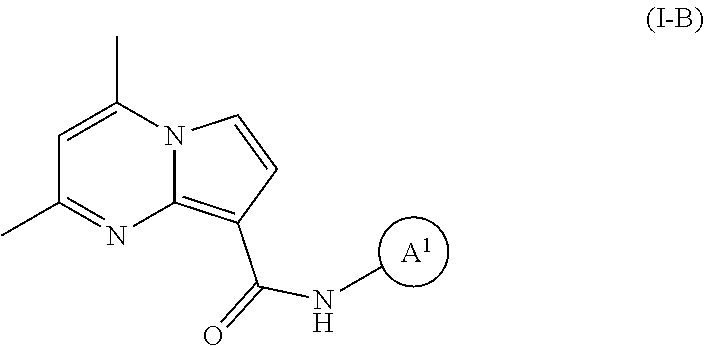
C00020

C00021

C00022

C00023

C00024

C00025

C00026

C00027
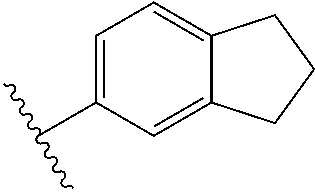
C00028

C00029

C00030
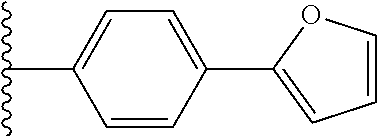
C00031

C00032

C00033

C00034

C00035

C00036

C00037

C00038
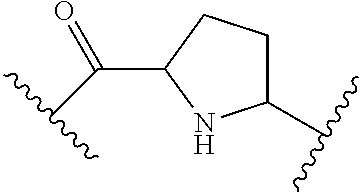
C00039

C00040
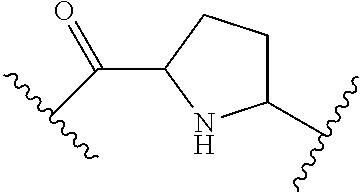
C00041

C00042

C00043

C00044
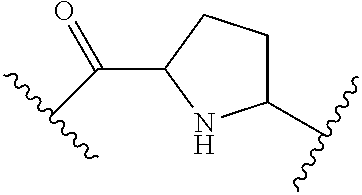
C00045
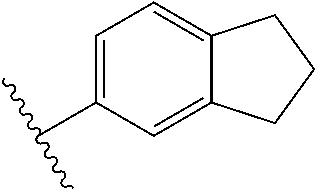
C00046

C00047

C00048

C00049
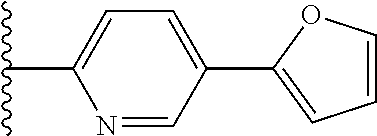
C00050

C00051

C00052

C00053

C00054

C00055

C00056
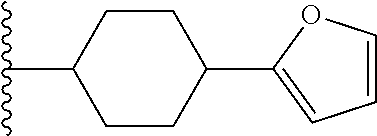
C00057

C00058

C00059

C00060
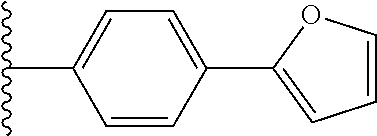
C00061

C00062

C00063

C00064

C00065

C00066

C00067

C00068

C00069

C00070

C00071

C00072

C00073

C00074
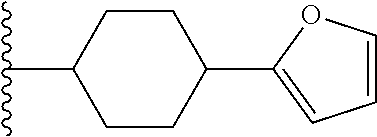
C00075
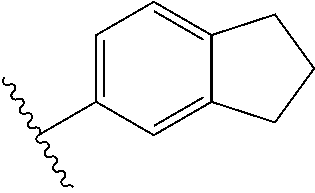
C00076

C00077

C00078

C00079

C00080
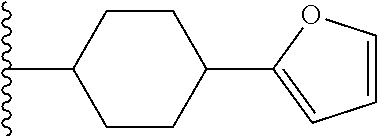
C00081

C00082

C00083

C00084

C00085

C00086

C00087
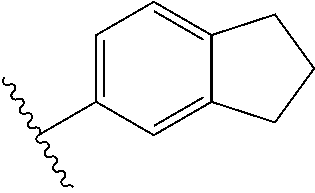
C00088

C00089

C00090

C00091

C00092
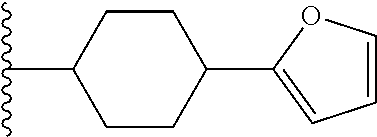
C00093

C00094

C00095

C00096
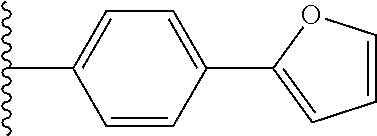
C00097
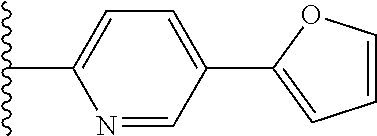
C00098

C00099

C00100

C00101

C00102

C00103

C00104

C00105

C00106

C00107

C00108
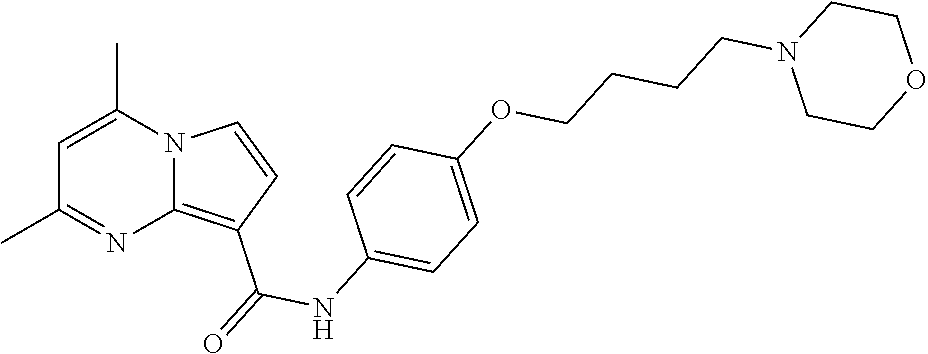
C00109

C00110

C00111

C00112
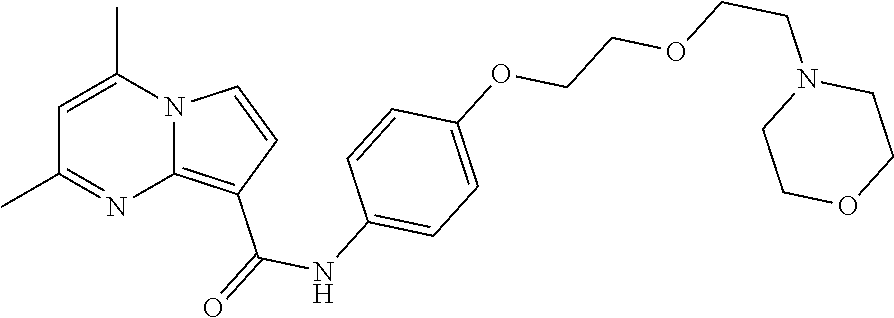
C00113

C00114

C00115

C00116

C00117

C00118
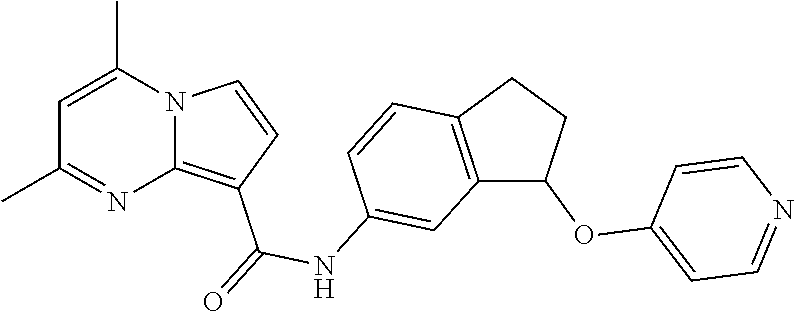
C00119
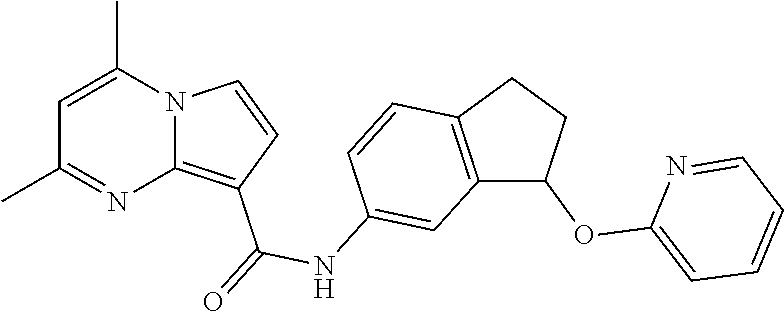
C00120

C00121

C00122
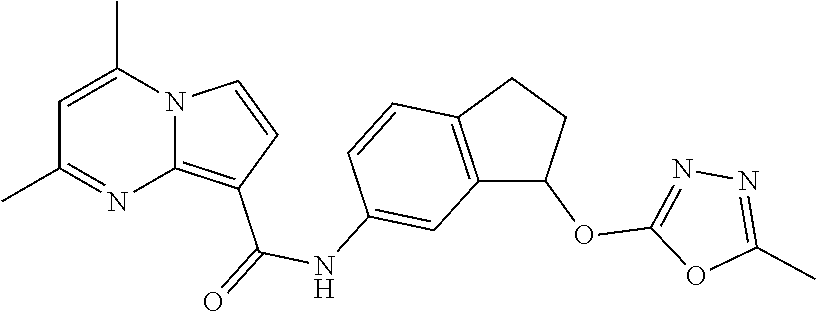
C00123

C00124

C00125
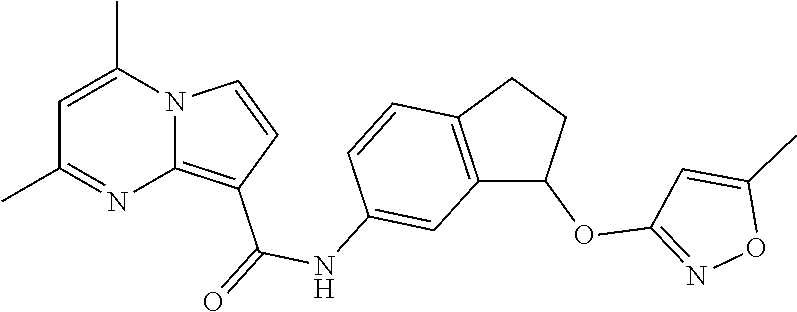
C00126

C00127

C00128
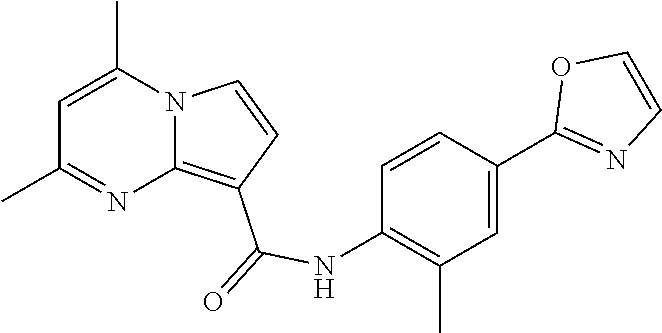
C00129

C00130

C00131

C00132
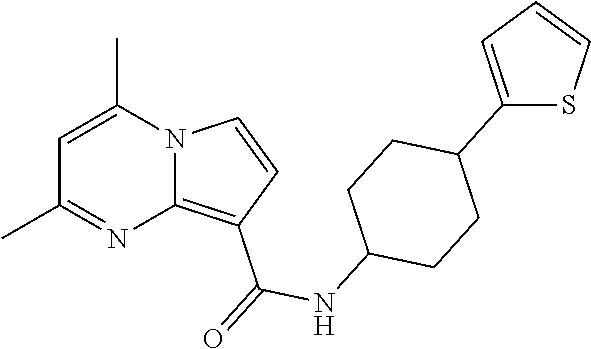
C00133
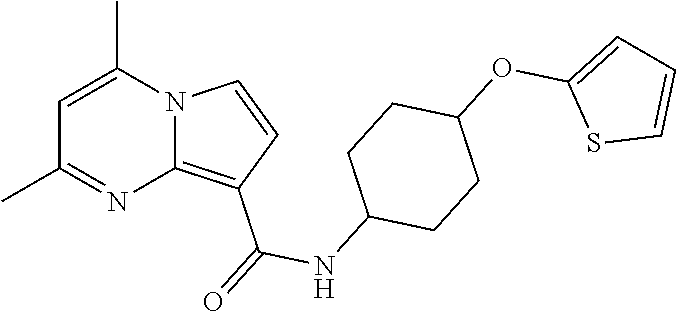
C00134

C00135

C00136
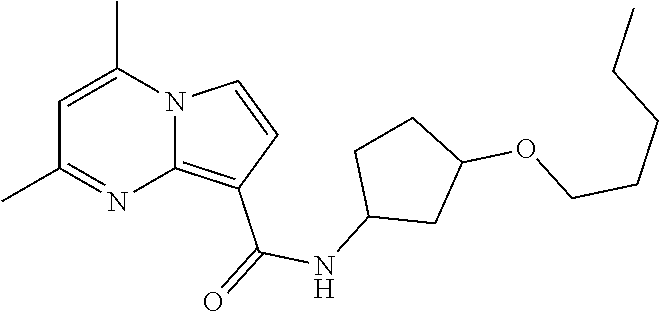
C00137

C00138
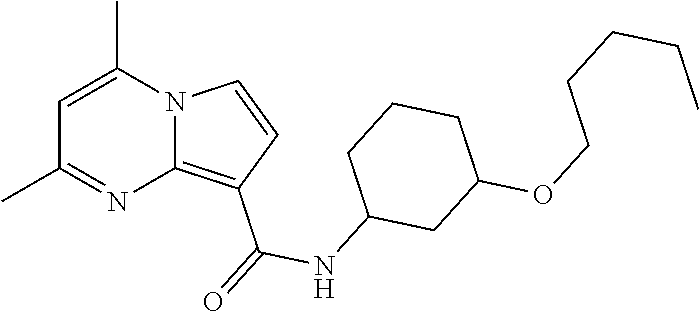
C00139

C00140

C00141

C00142
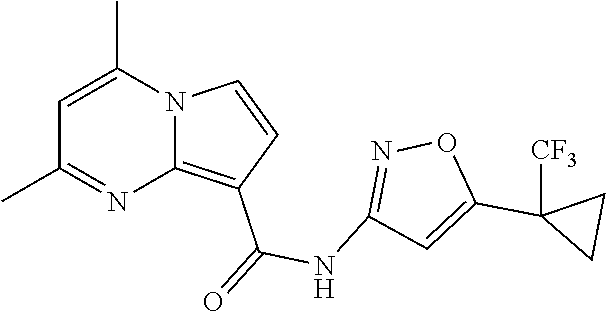
C00143

C00144
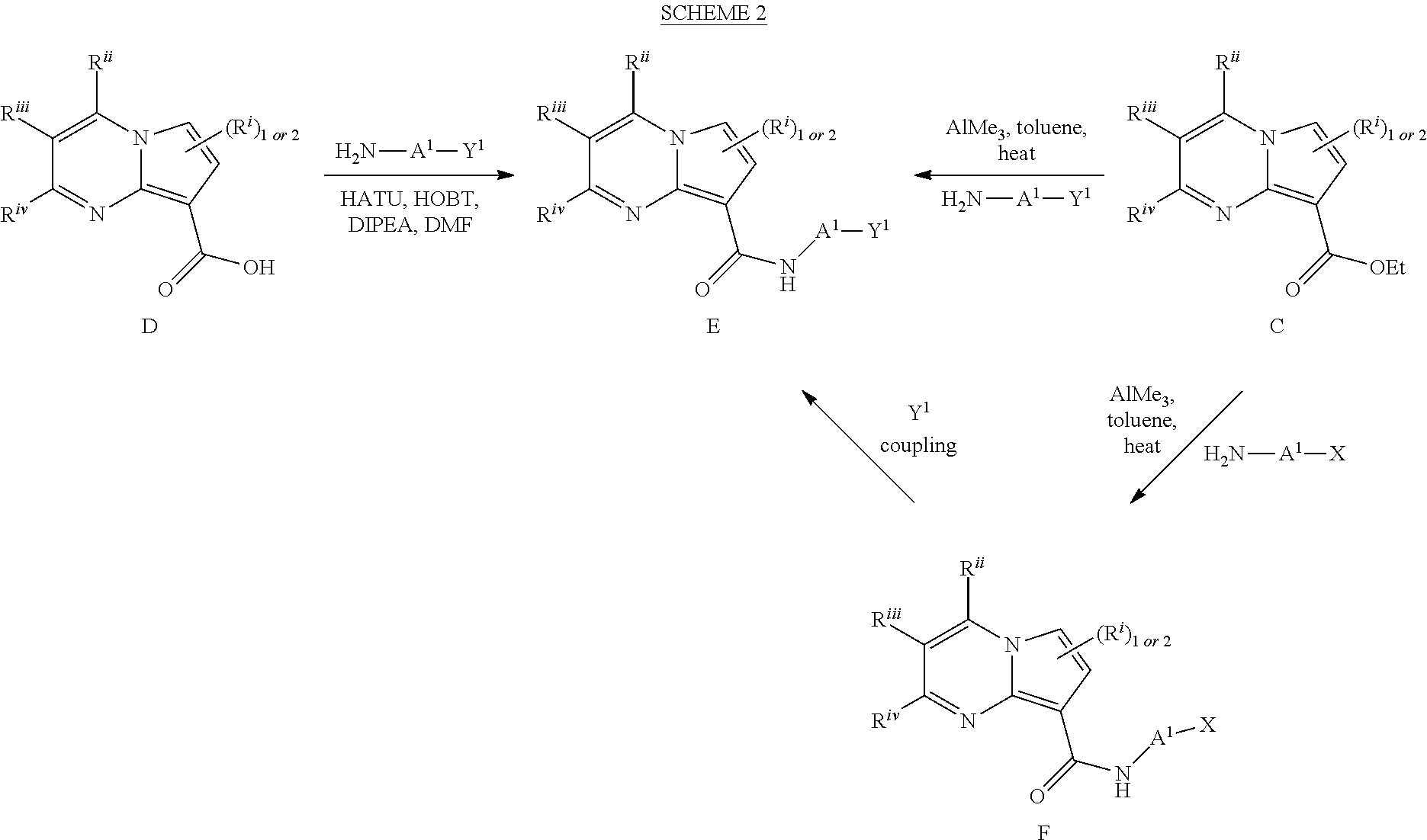
C00145
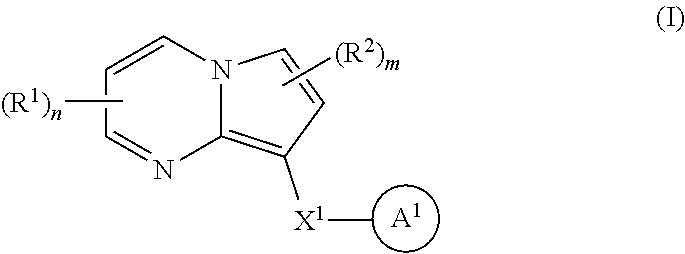
C00146
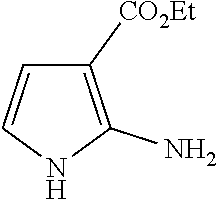
C00147

C00148

C00149

C00150
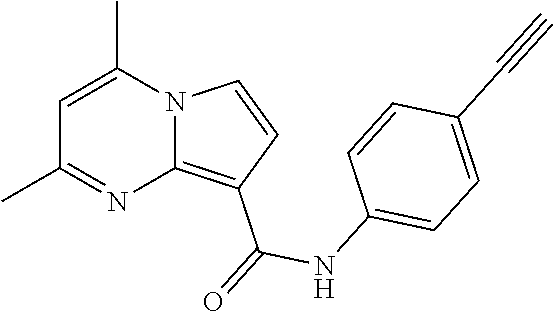
C00151

C00152

C00153

C00154
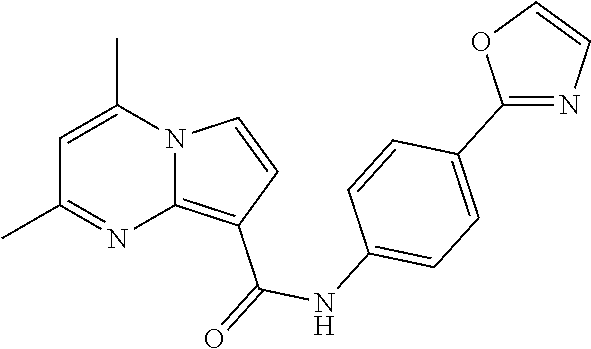
C00155

C00156

C00157

C00158
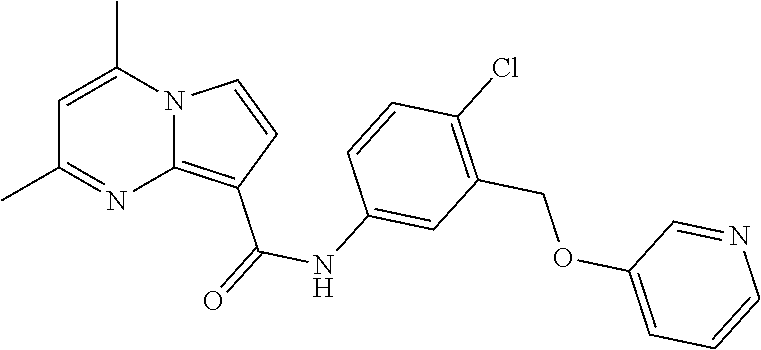
C00159

C00160

C00161

C00162

C00163

C00164
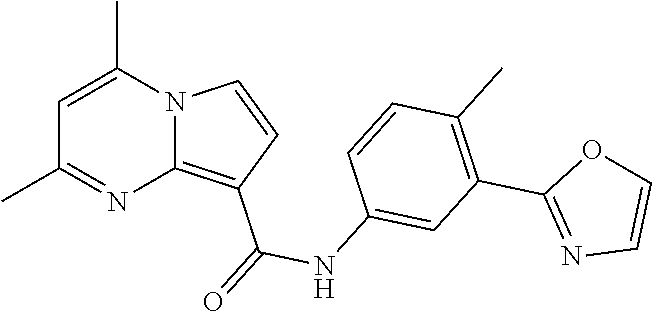
C00165

C00166

C00167

C00168
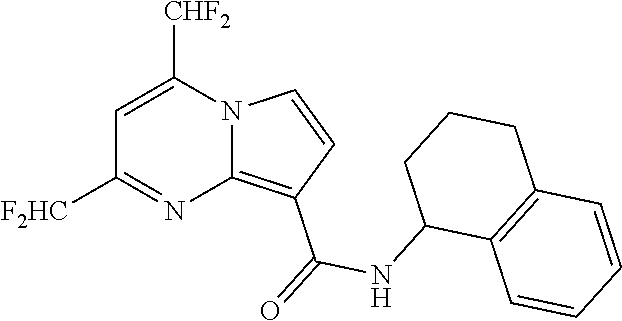
C00169

C00170

C00171

C00172

C00173

C00174

C00175

C00176
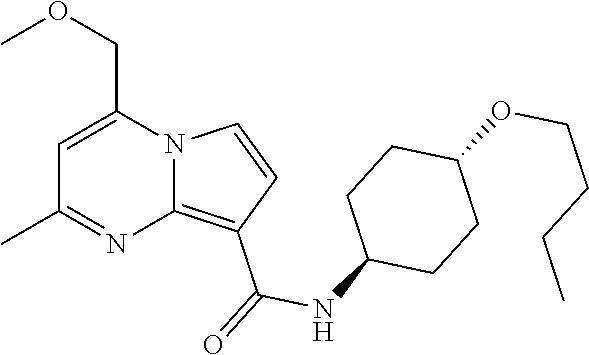
C00177

C00178

C00179

C00180

C00181

C00182

C00183

C00184

C00185

C00186

C00187

C00188

C00189

C00190
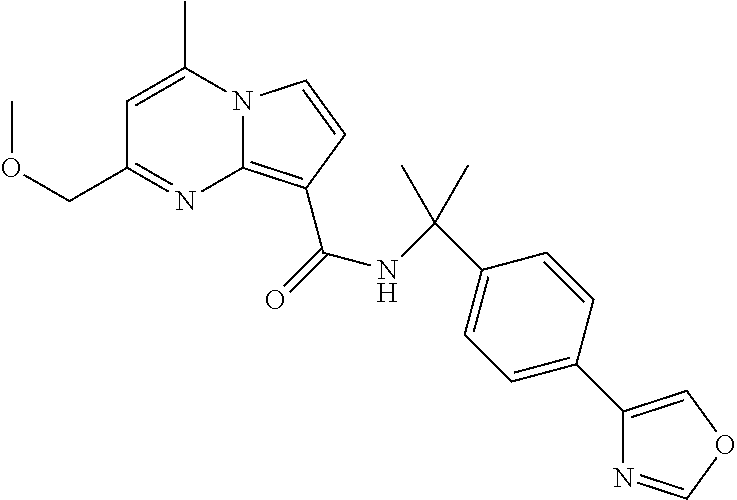
C00191
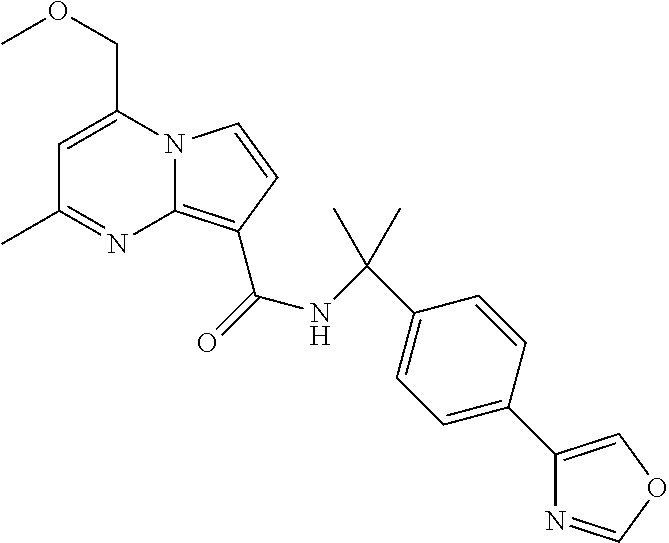
C00192

C00193

C00194
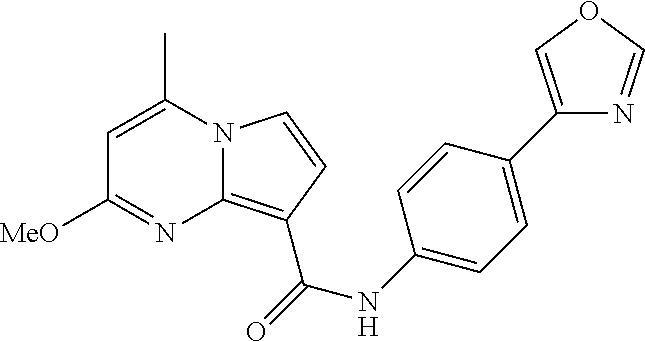
C00195

C00196

C00197

C00198
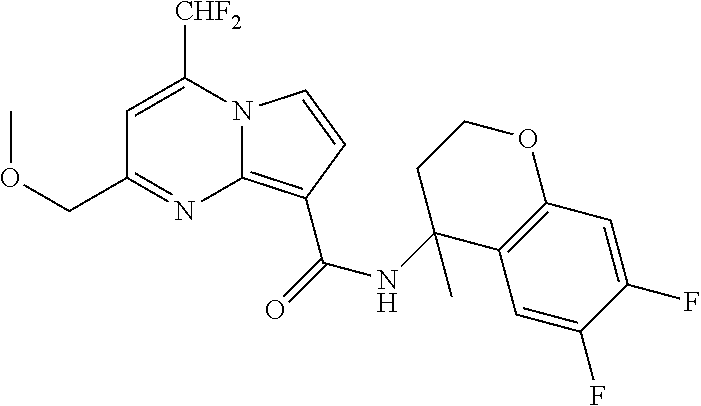
C00199

C00200

C00201
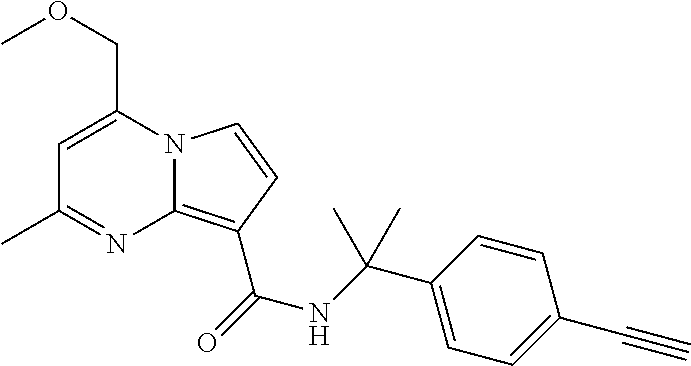
C00202

C00203

C00204

C00205

C00206

C00207

C00208

C00209

C00210

C00211

C00212

C00213

C00214

C00215

C00216
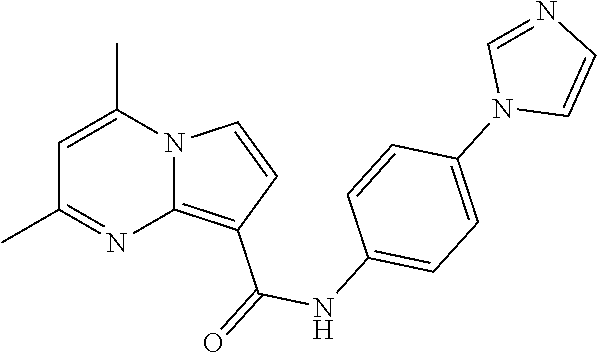
C00217

C00218

C00219

C00220

C00221

C00222

C00223

C00224
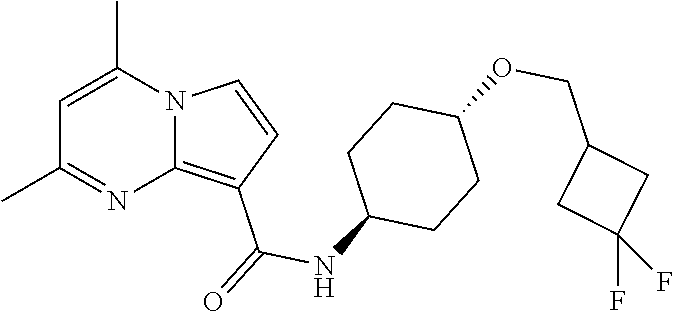
C00225

C00226

C00227

C00228

C00229

C00230
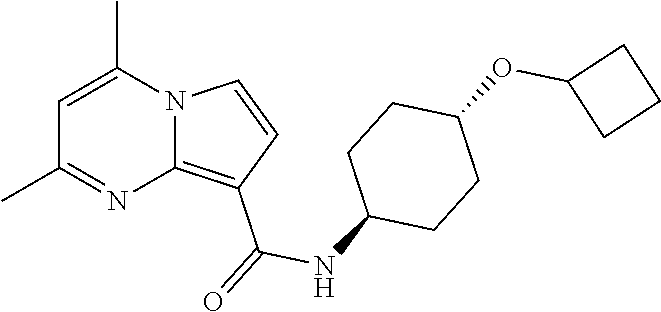
C00231

C00232
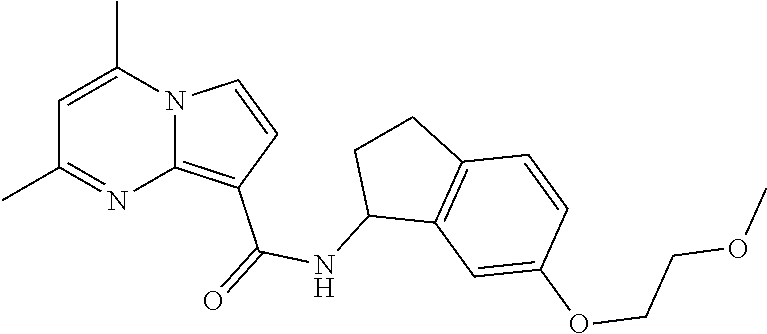
C00233
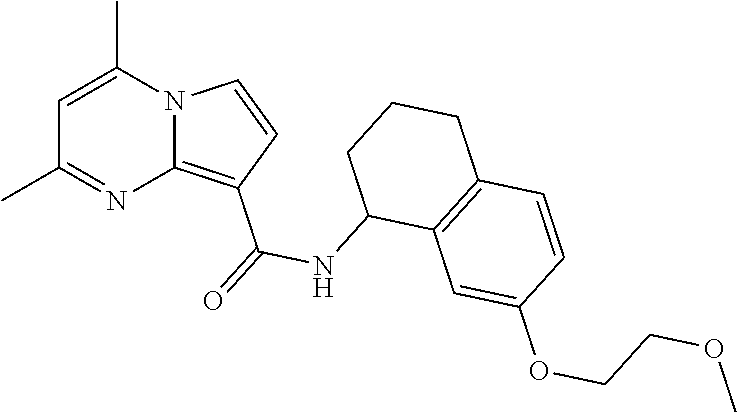
C00234
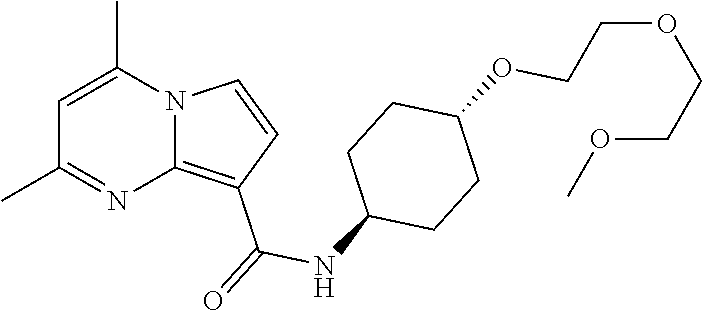
C00235

C00236
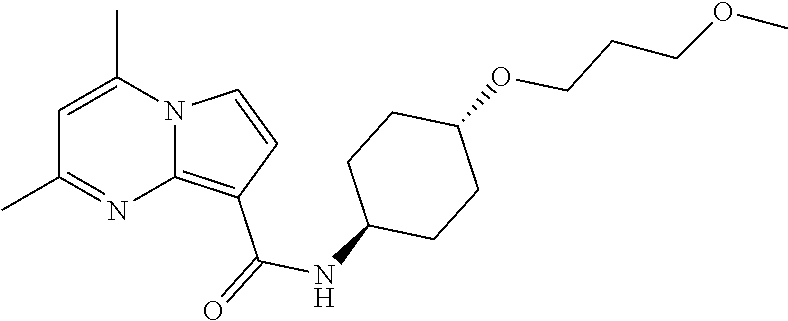
C00237
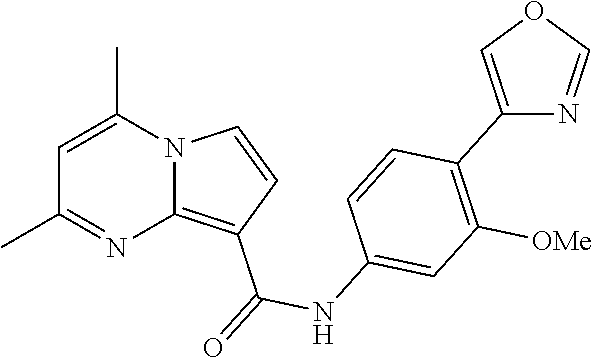
C00238
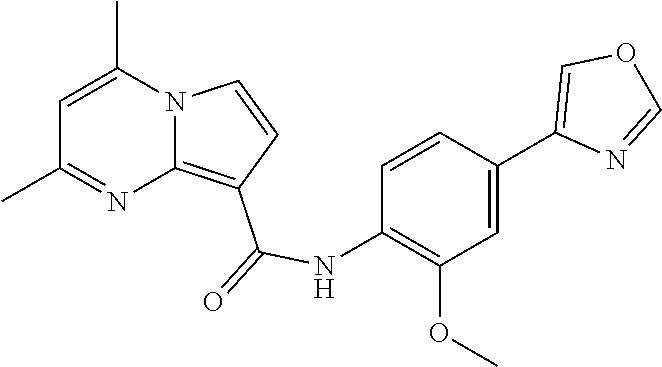
C00239
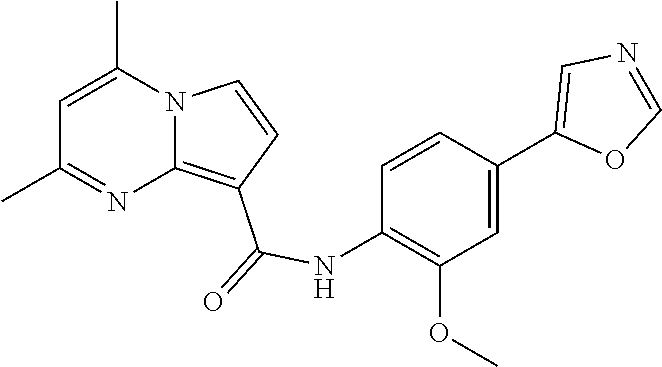
C00240

C00241
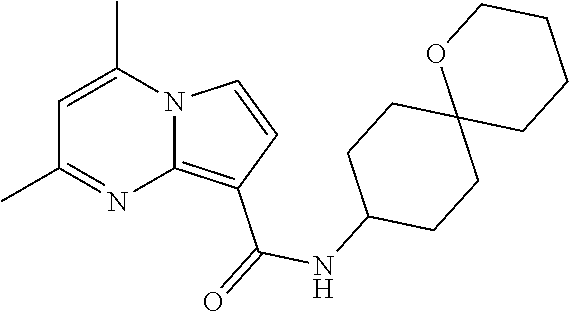
C00242

C00243
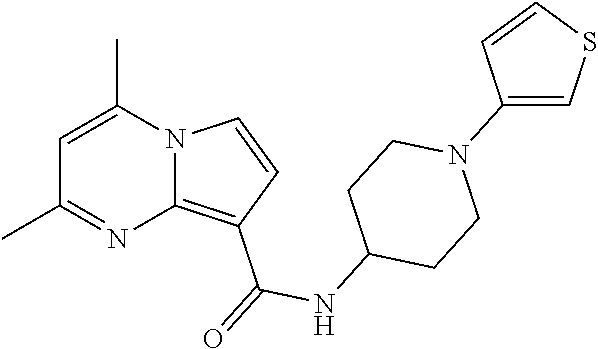
C00244
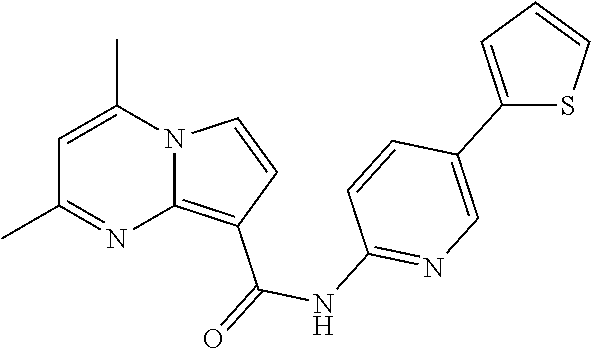
C00245

C00246

C00247
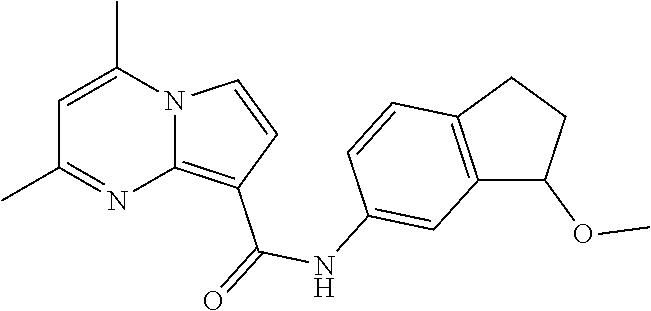
C00248

C00249

C00250
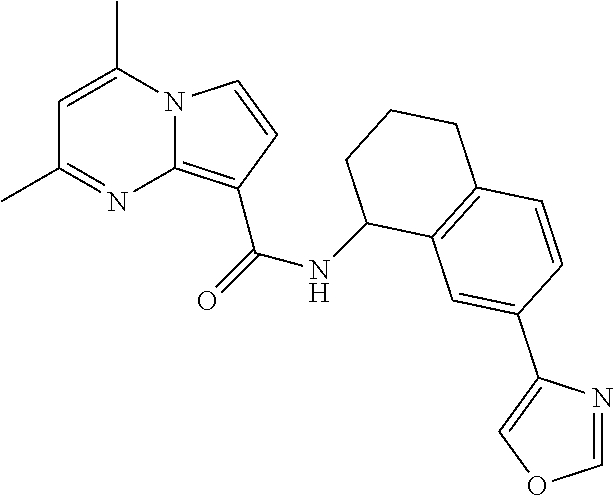
C00251
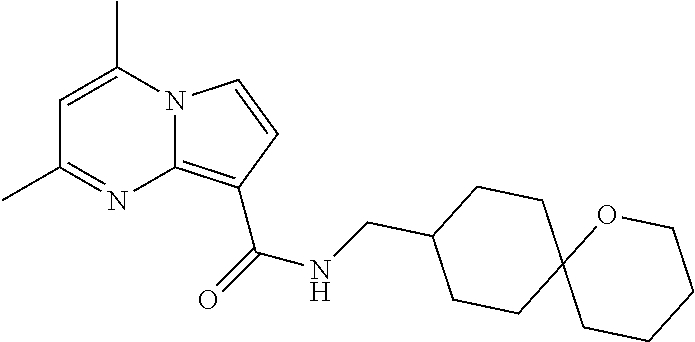
C00252

C00253

C00254
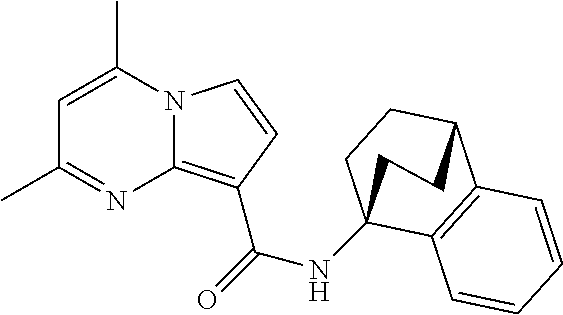
C00255

C00256

C00257
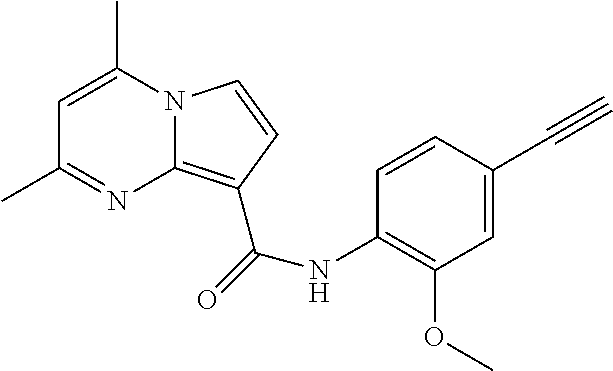
C00258
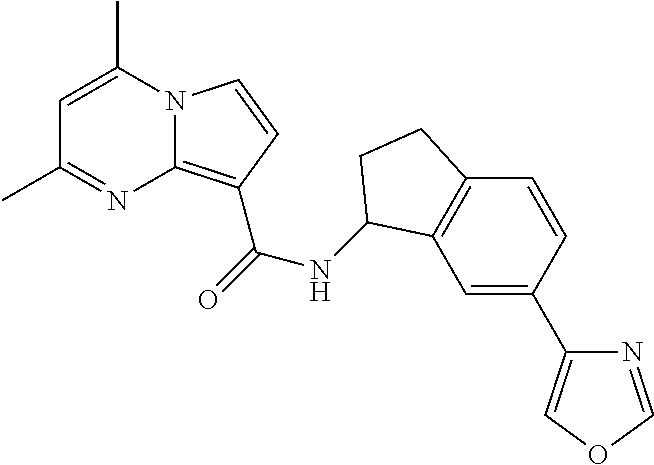
C00259

C00260
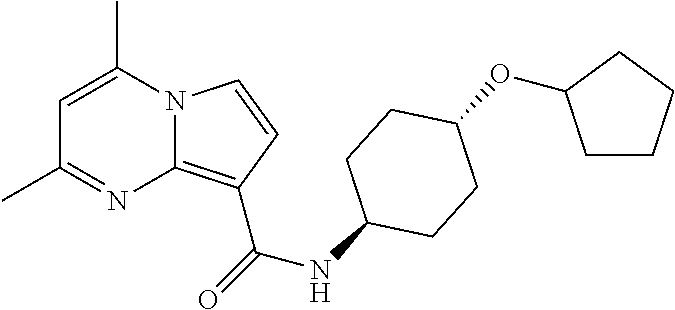
C00261

C00262

C00263

C00264
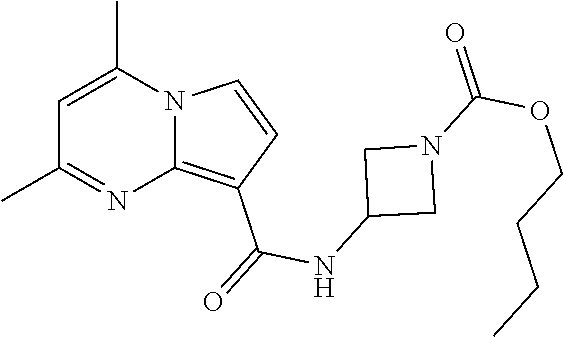
C00265

C00266
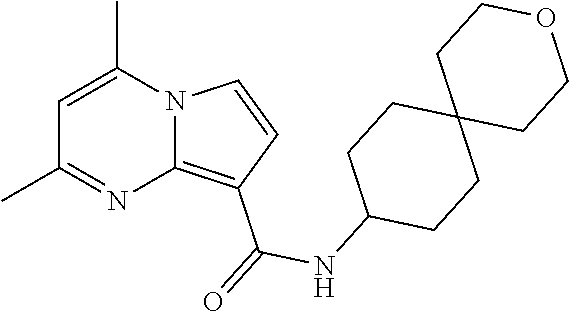
C00267

C00268

C00269

C00270

C00271

C00272

C00273

C00274
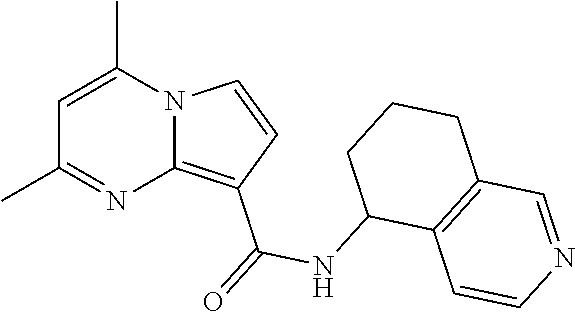
C00275

C00276
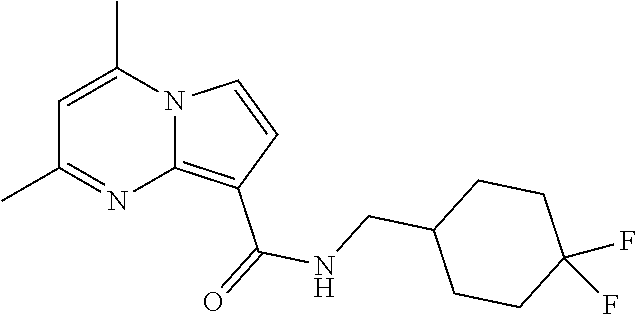
C00277
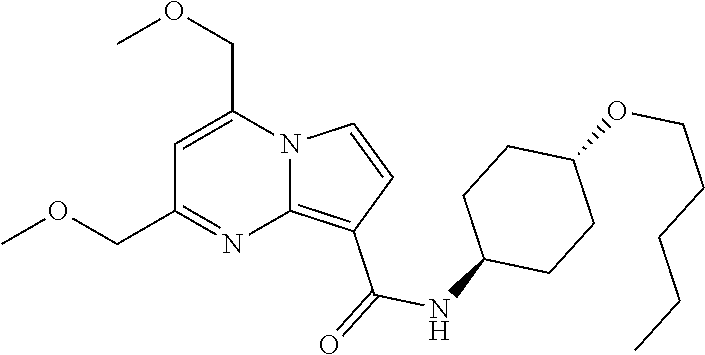
C00278
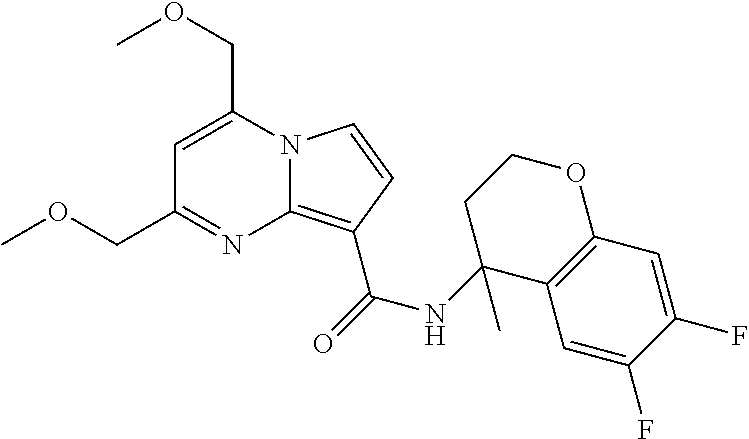
C00279

C00280

C00281
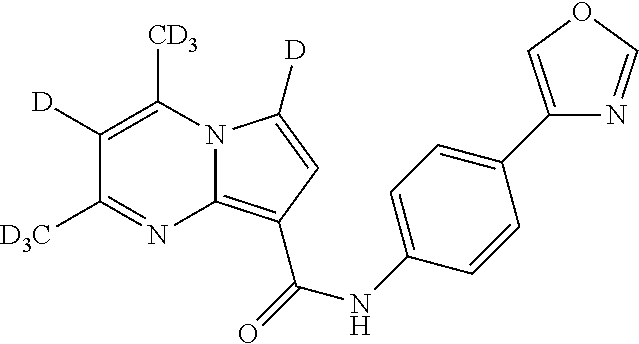
C00282

C00283
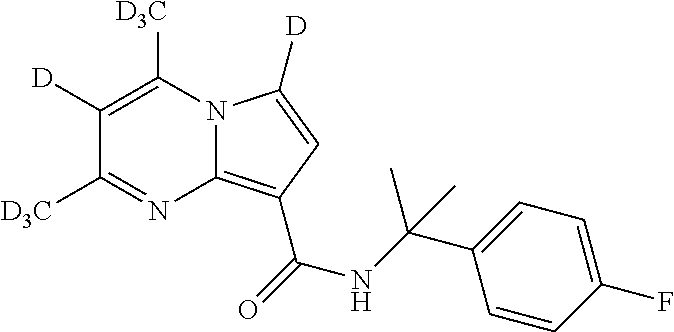
C00284

C00285
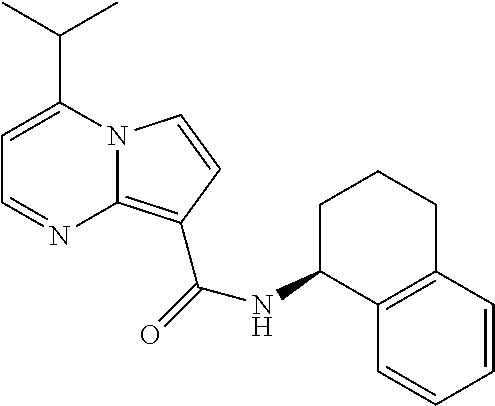
C00286

C00287

C00288

C00289
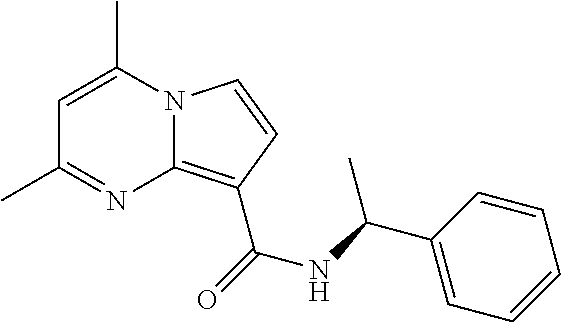
C00290

C00291

C00292

C00293

C00294

C00295
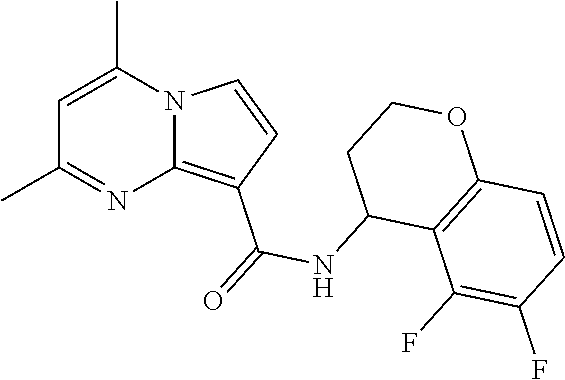
C00296

C00297
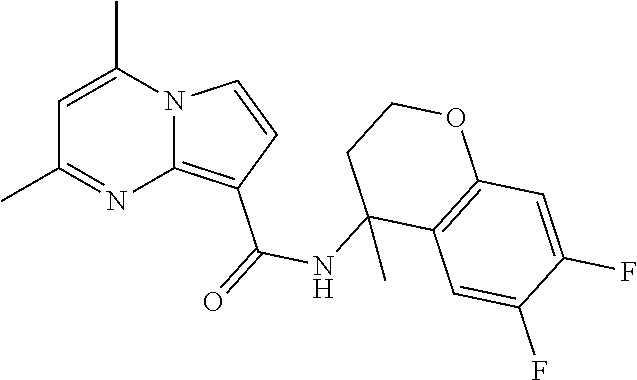
C00298

C00299

C00300

C00301
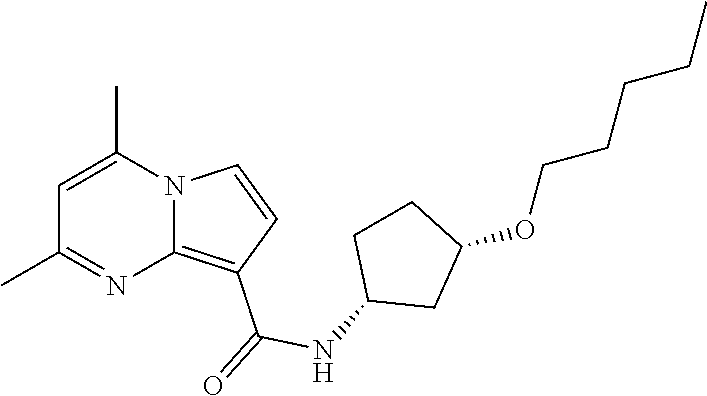
C00302

C00303

C00304

C00305

C00306

C00307
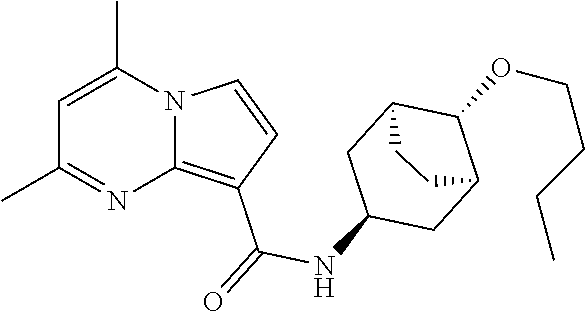
C00308

C00309

C00310

C00311

C00312

C00313
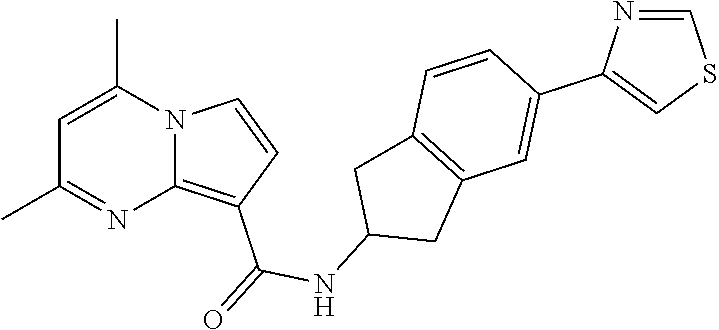
C00314

C00315
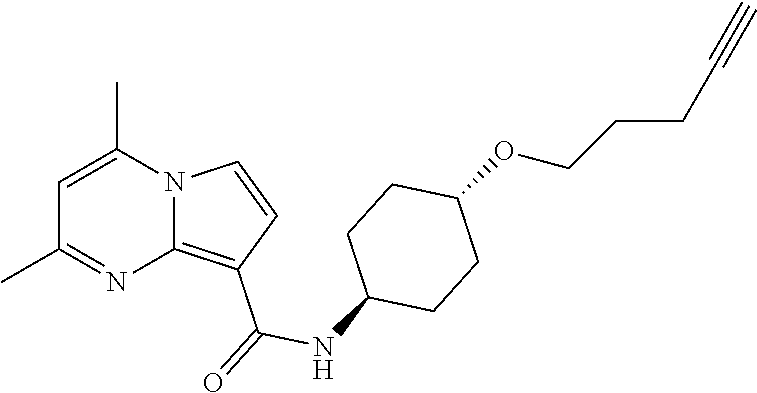
C00316
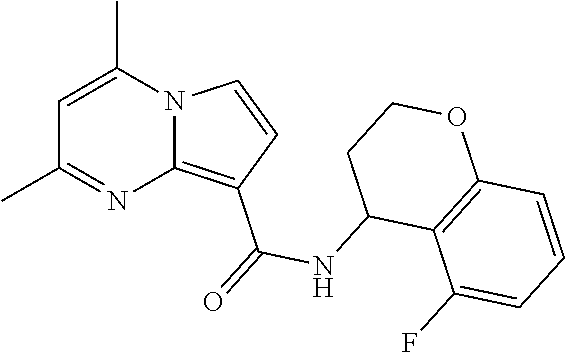
C00317

C00318

C00319

C00320

C00321

C00322
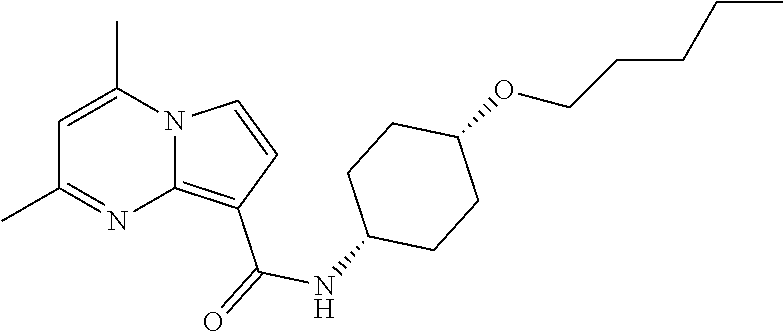
C00323

C00324
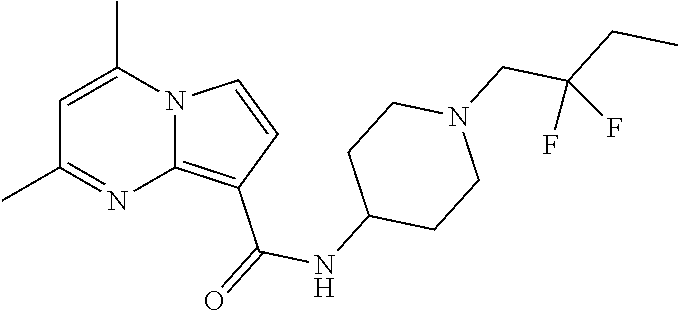
C00325

C00326

C00327

C00328

C00329
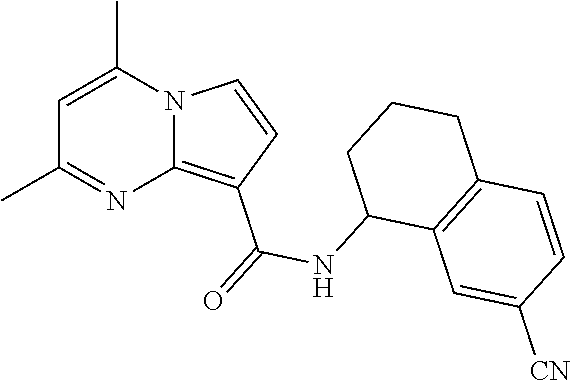
C00330
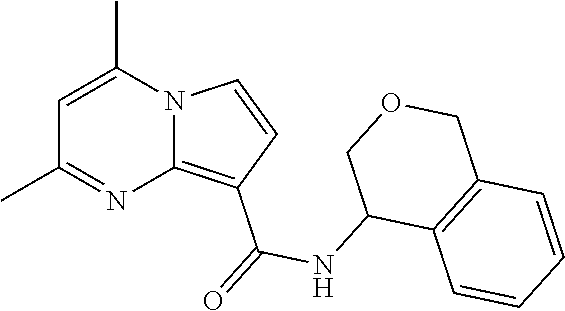
C00331

C00332

C00333

C00334

C00335

C00336

C00337

C00338

C00339

C00340

C00341

C00342

C00343

C00344

C00345
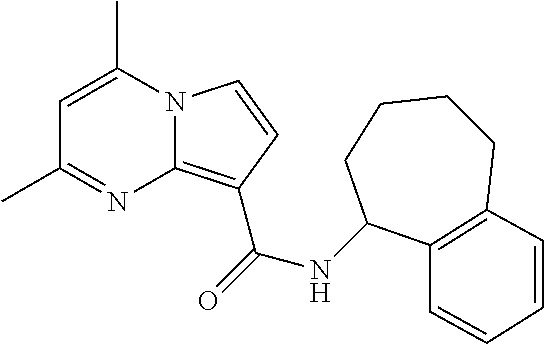
C00346

C00347

C00348

C00349

C00350

C00351

C00352

C00353
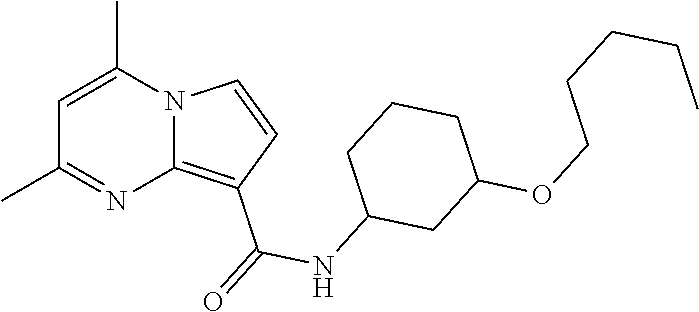
C00354

C00355
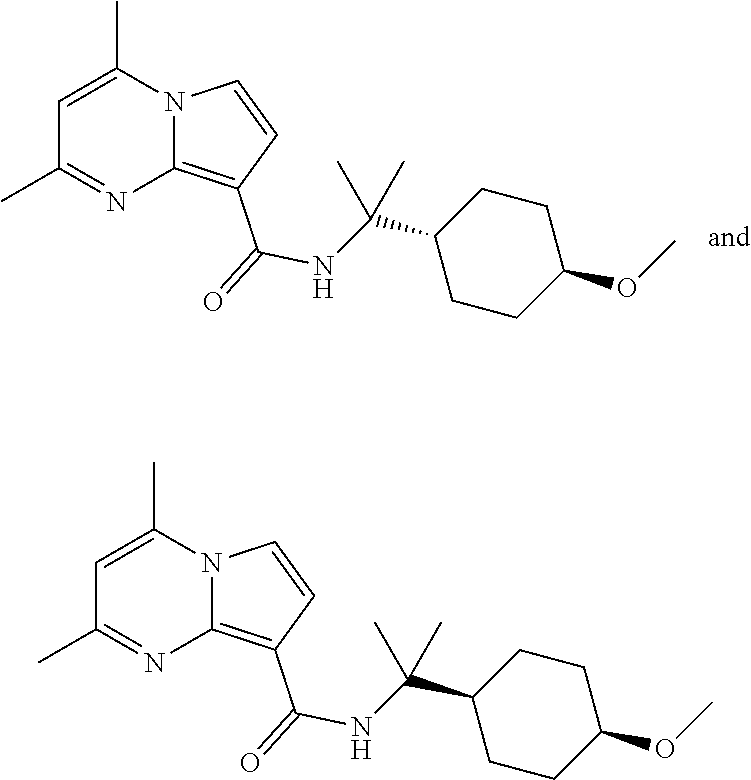
C00356

C00357

C00358
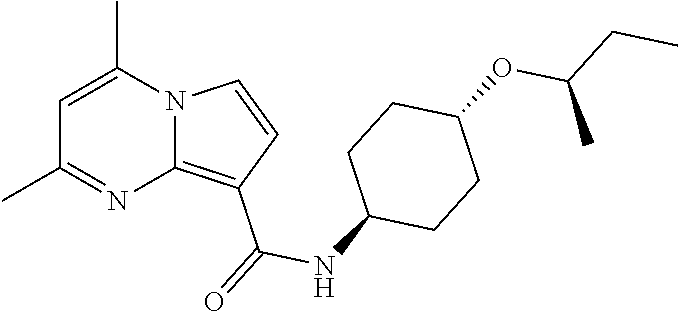
C00359

C00360

C00361

C00362

C00363
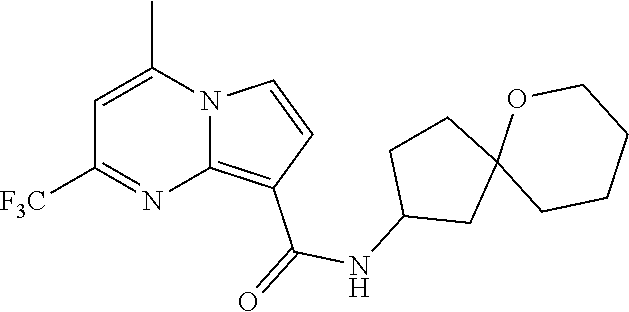
C00364

C00365

C00366

C00367

C00368

C00369

C00370
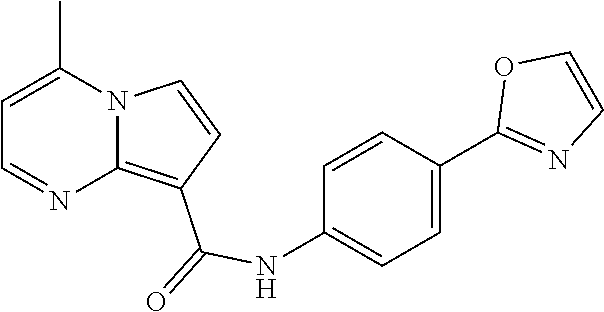
C00371

C00372

C00373

C00374
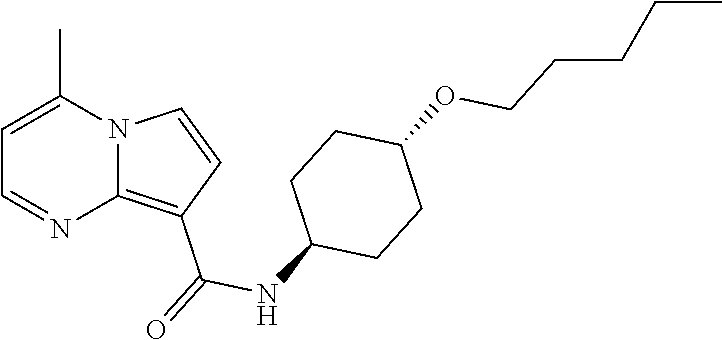
C00375
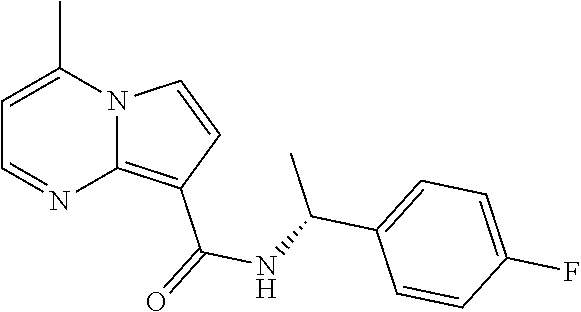
C00376

C00377

C00378

C00379

C00380

C00381

C00382

C00383

C00384

C00385

C00386
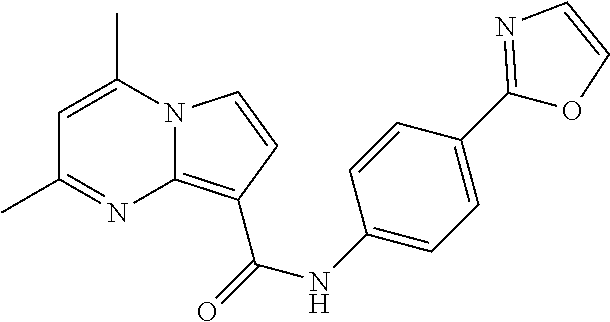
C00387

C00388

C00389

C00390

C00391

C00392

C00393
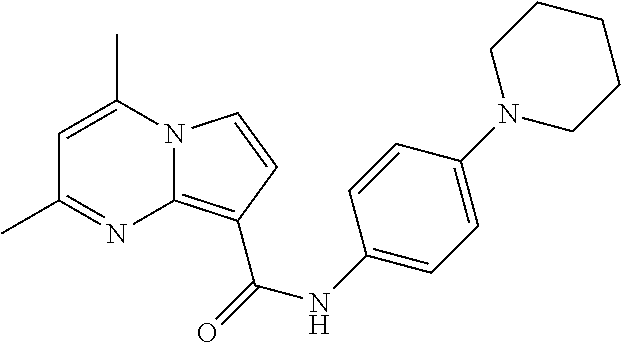
C00394

C00395
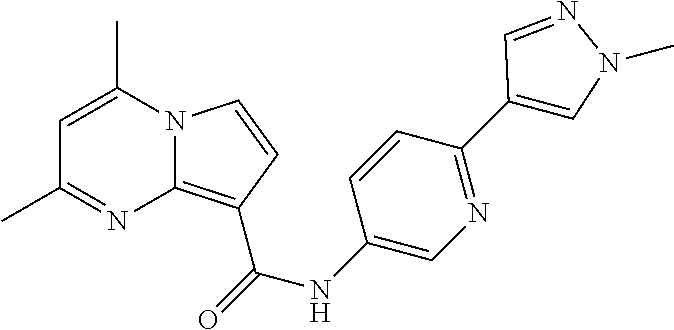
C00396

C00397

C00398

C00399

C00400
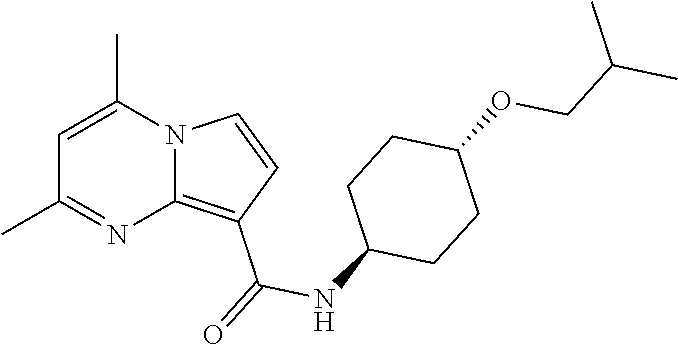
C00401
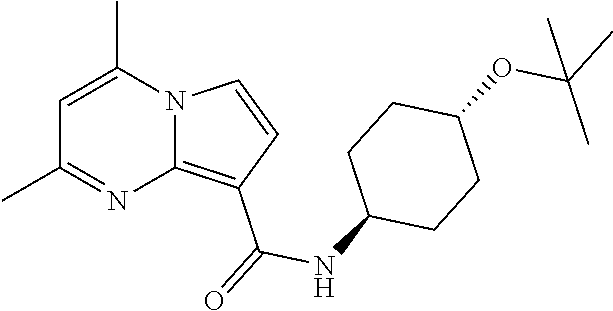
C00402

C00403

C00404
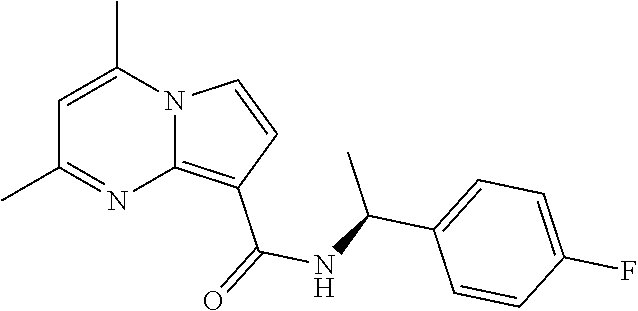
C00405

C00406
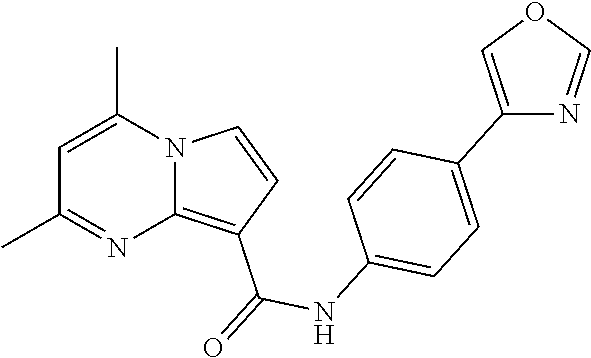
C00407

C00408

C00409
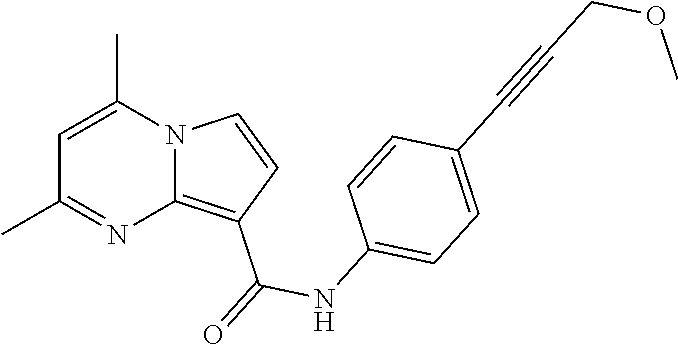
C00410

C00411

C00412

C00413

C00414

C00415

C00416

C00417
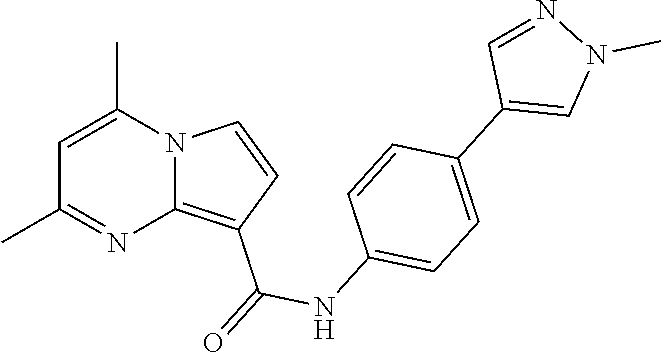
C00418

C00419

C00420

C00421

C00422

C00423

C00424

C00425
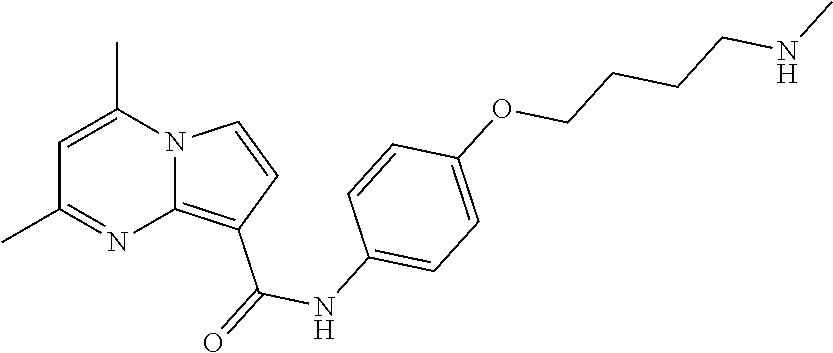
C00426
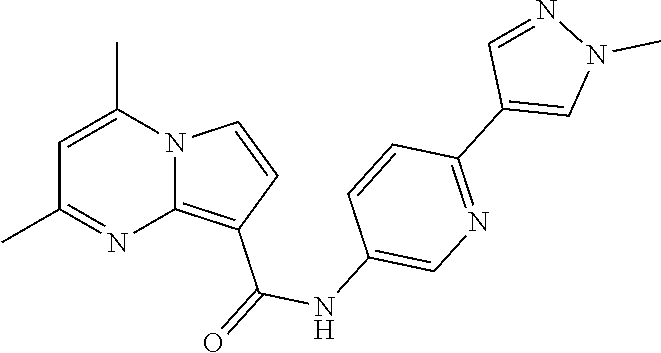
C00427

C00428

C00429

C00430

C00431

C00432
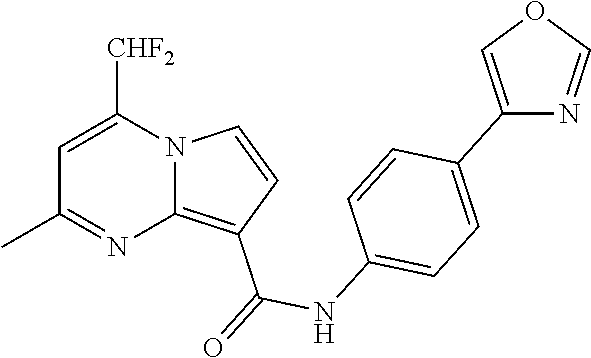
C00433
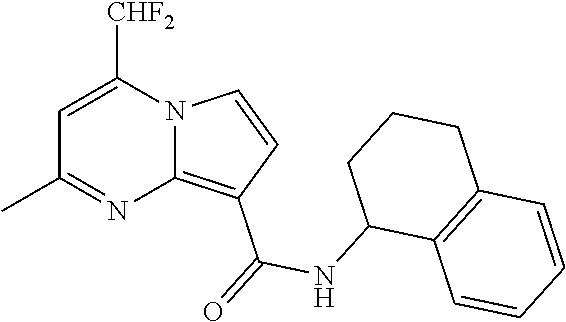
C00434

C00435

C00436

C00437

C00438

C00439

C00440

C00441

C00442

C00443

C00444
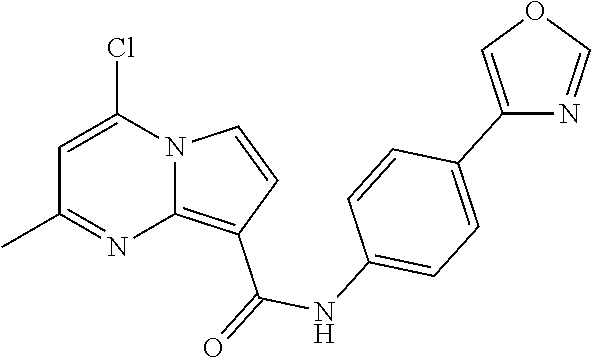
C00445

C00446
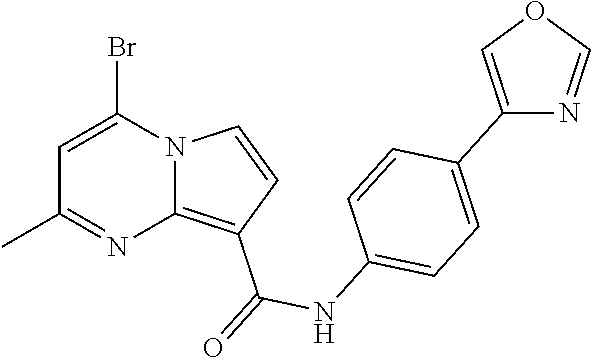
C00447

C00448

C00449

C00450

C00451

C00452

C00453

C00454

C00455

C00456
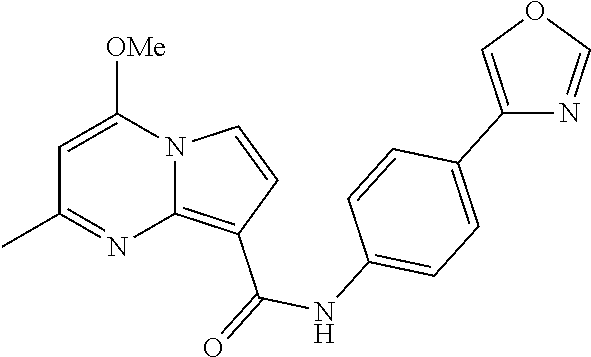
C00457

C00458

C00459

C00460
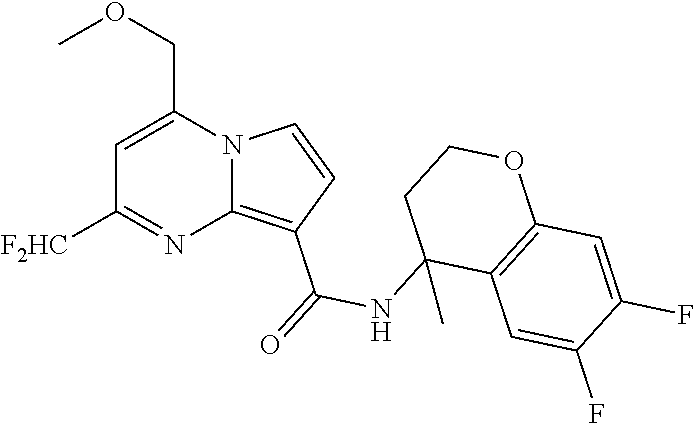
C00461

C00462
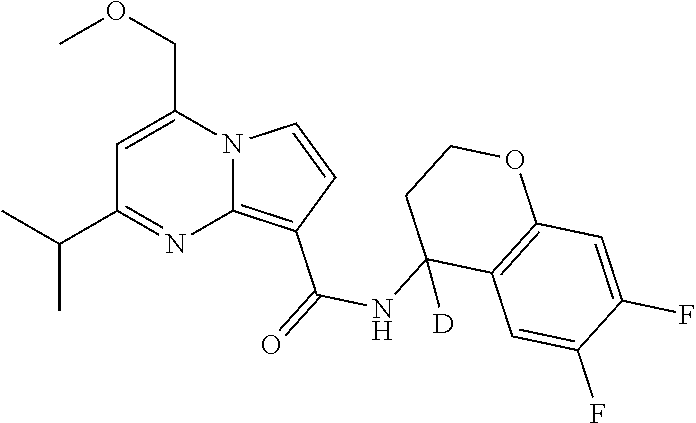
C00463

C00464

C00465

C00466

C00467

C00468
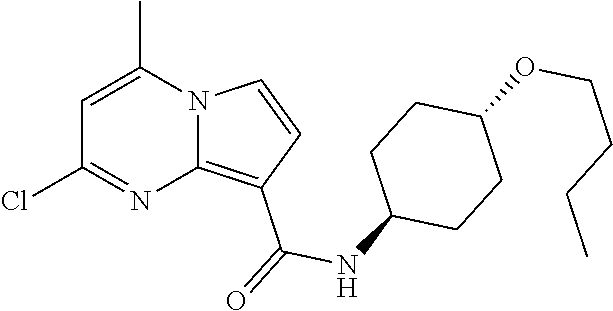
C00469

C00470
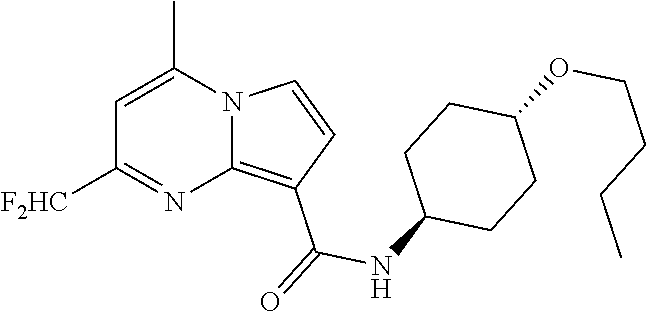
C00471

C00472

C00473
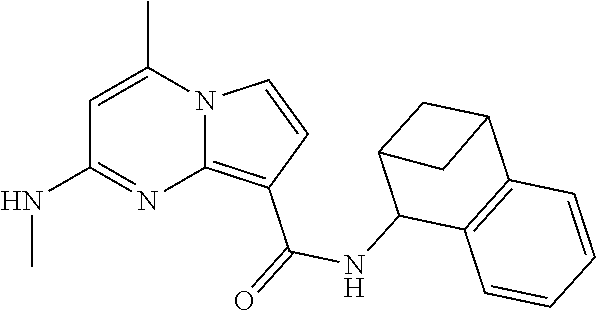
C00474

C00475

C00476

C00477
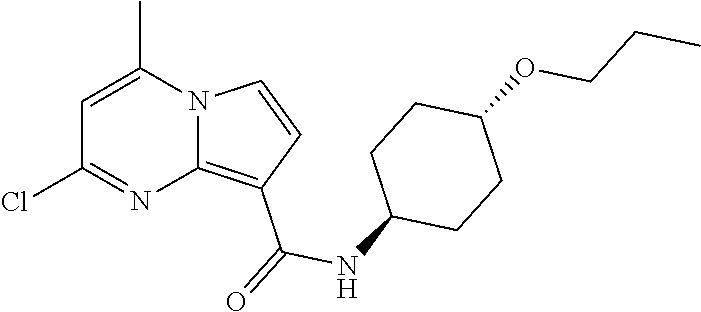
C00478

C00479

C00480

C00481

C00482

C00483

C00484

C00485

C00486

C00487

C00488

C00489

C00490

C00491

C00492

C00493
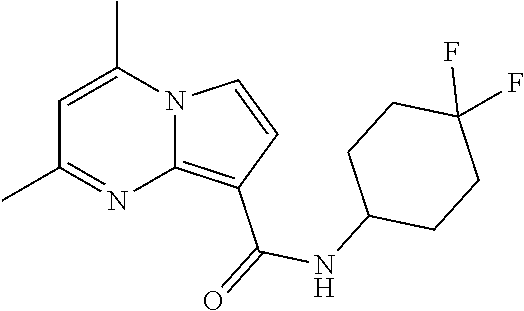
C00494
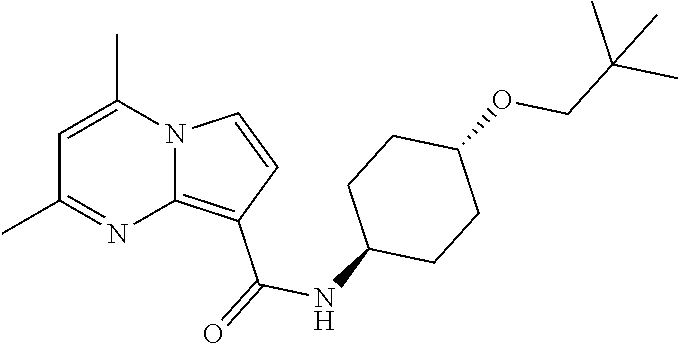
C00495

C00496

C00497

C00498

C00499

C00500

C00501

C00502
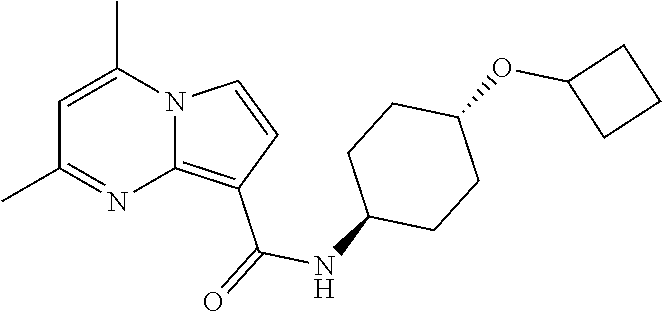
C00503
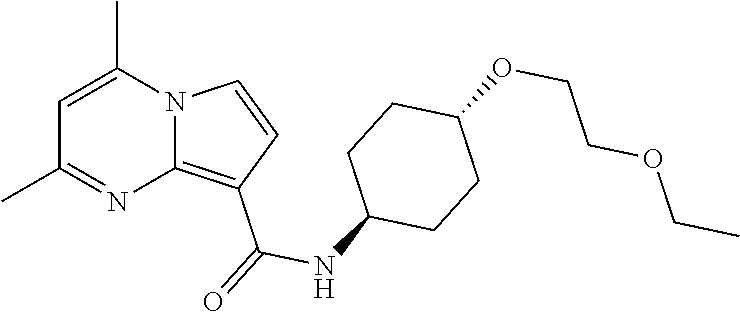
C00504

C00505
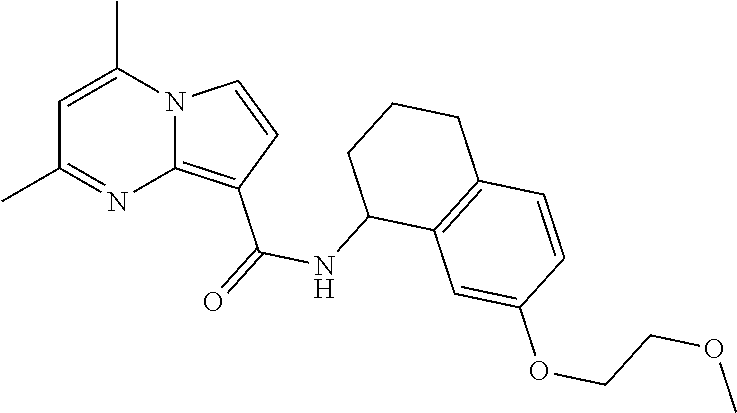
C00506

C00507

C00508

C00509
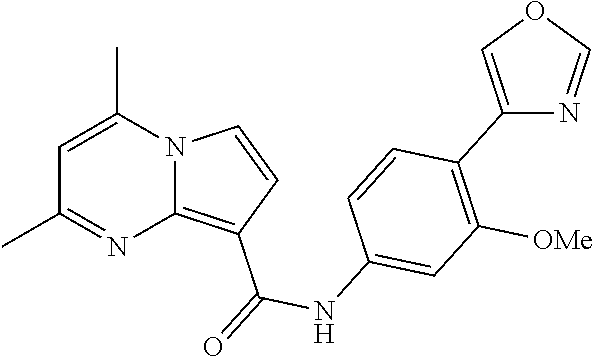
C00510

C00511

C00512

C00513

C00514

C00515
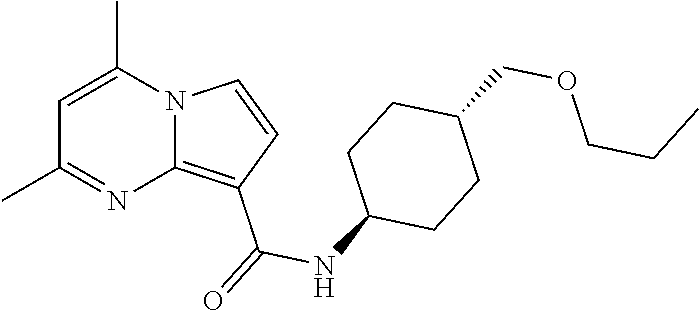
C00516

C00517

C00518

C00519

C00520

C00521

C00522

C00523

C00524
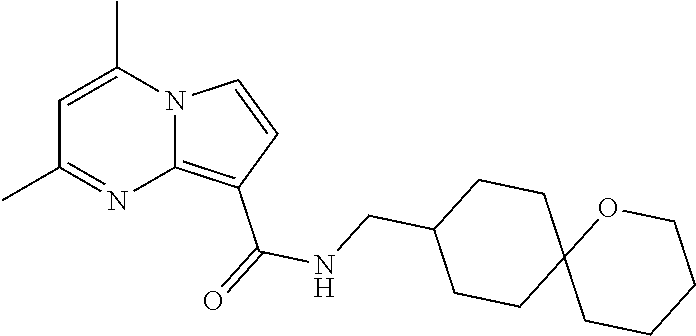
C00525

C00526

C00527

C00528
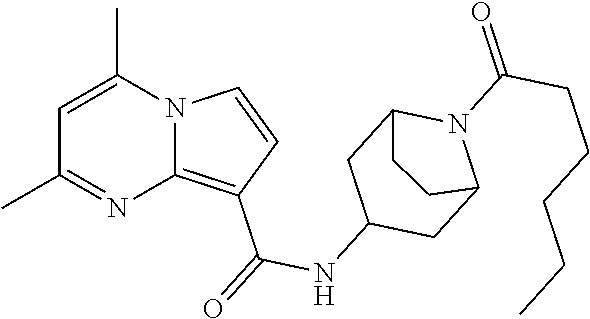
C00529

C00530
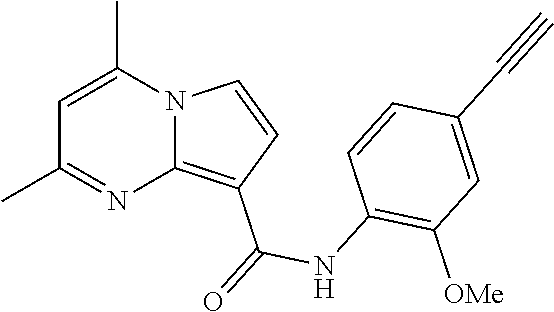
C00531
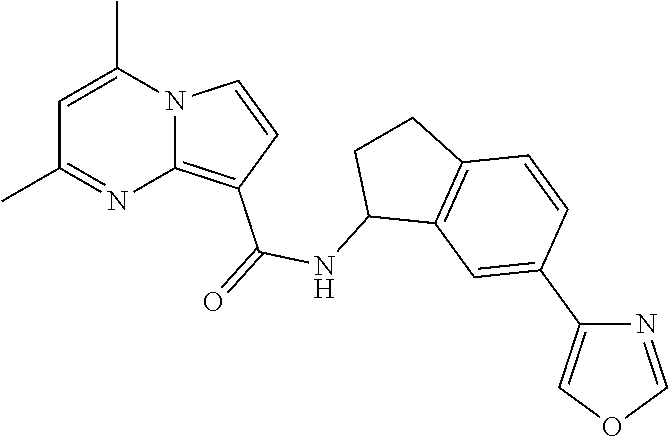
C00532

C00533
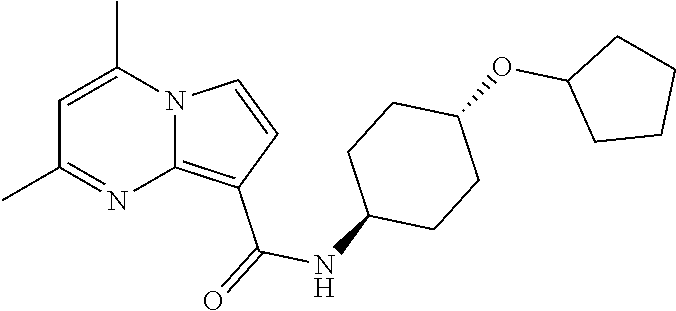
C00534

C00535

C00536
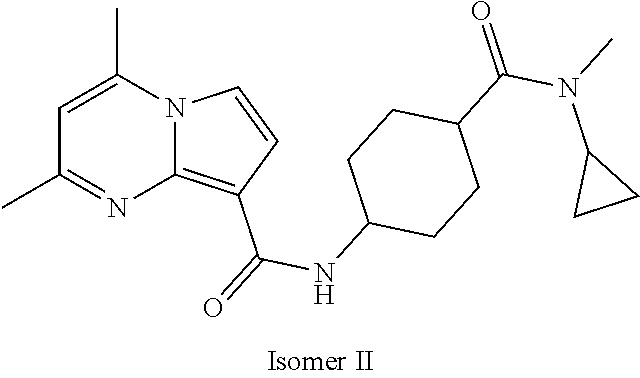
C00537
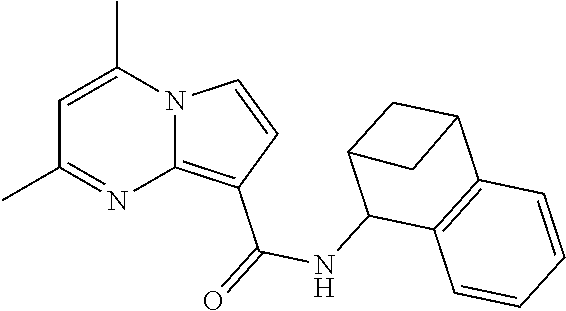
C00538

C00539

C00540
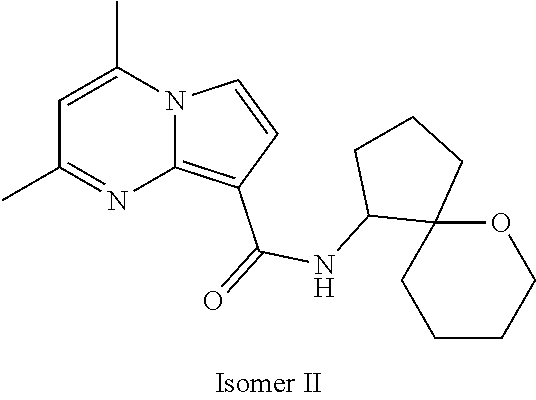
C00541

C00542
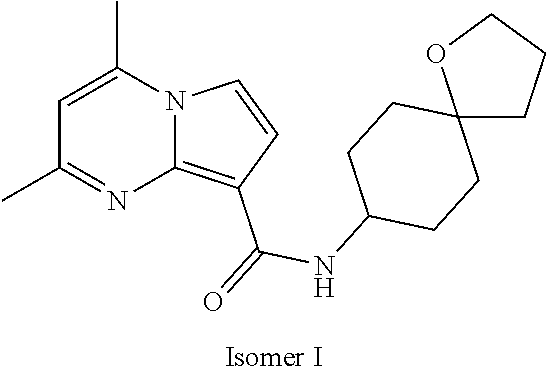
C00543

C00544
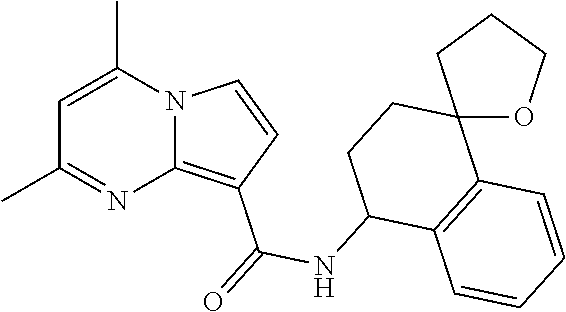
C00545

C00546
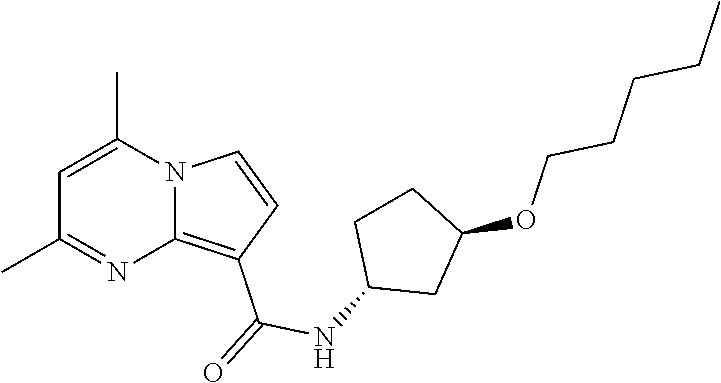
C00547
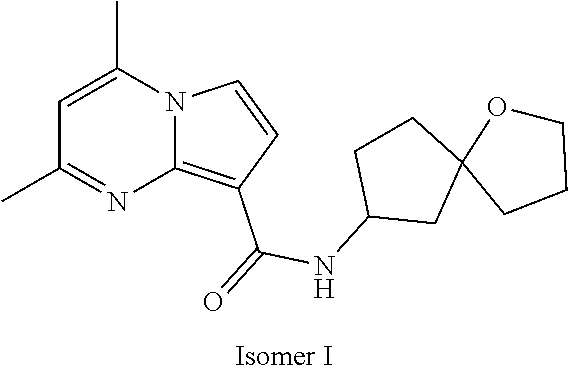
C00548

C00549

C00550

C00551
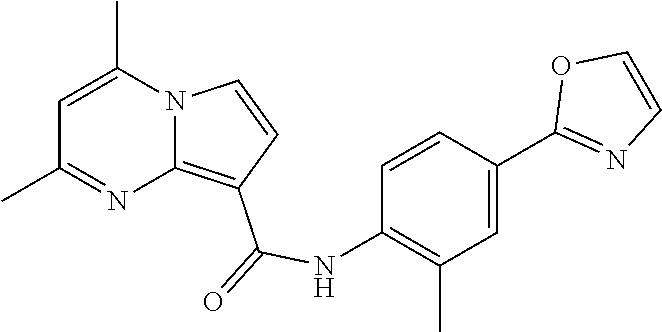
C00552
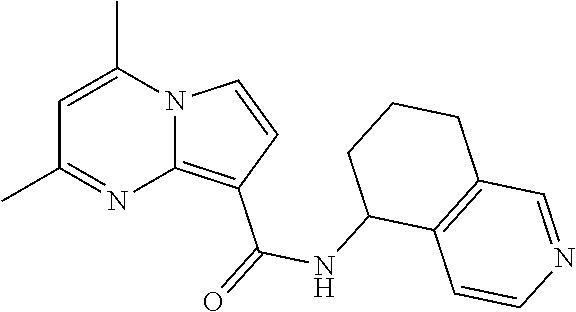
C00553

C00554
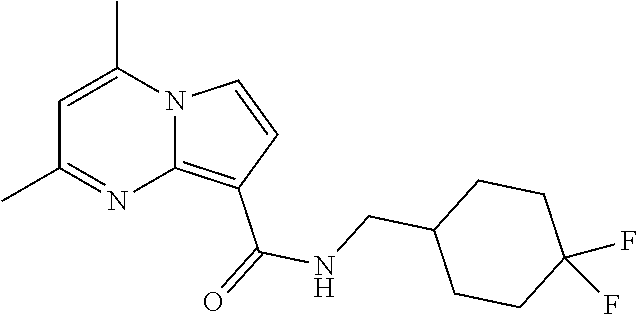
C00555
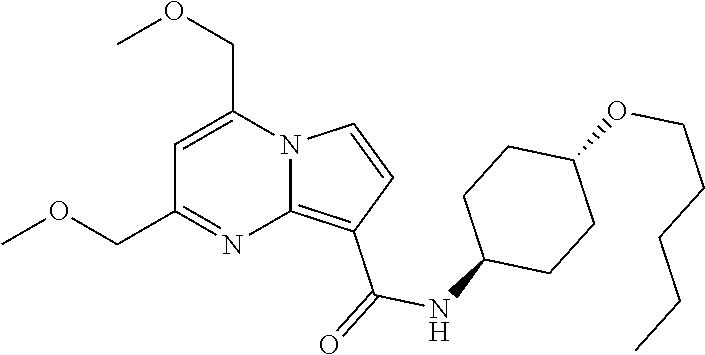
C00556

C00557

C00558

C00559

C00560

C00561
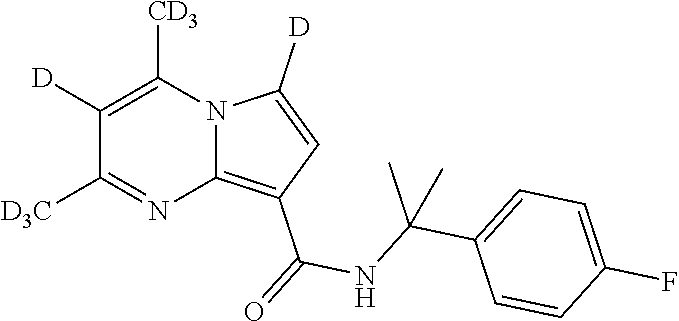
C00562

C00563
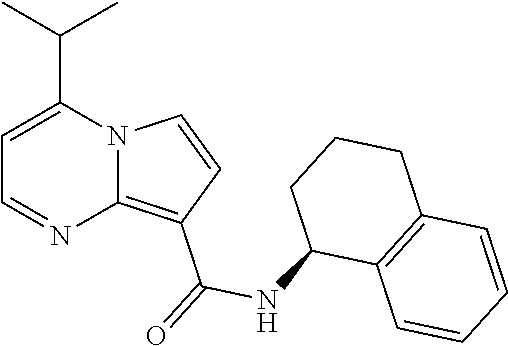
C00564

C00565

C00566

C00567

C00568
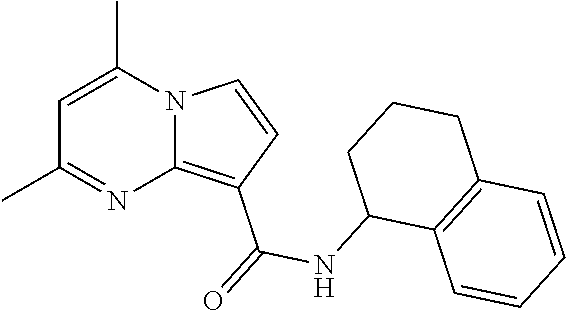
C00569

C00570
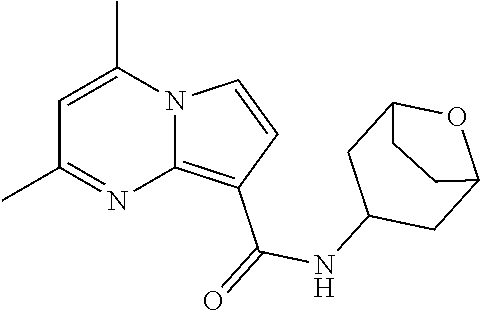
C00571
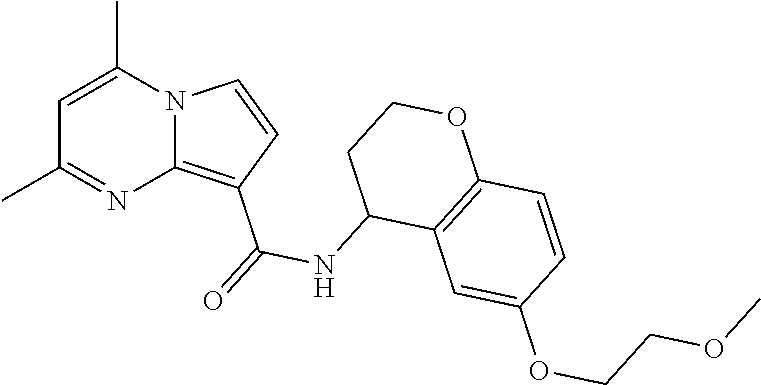
C00572
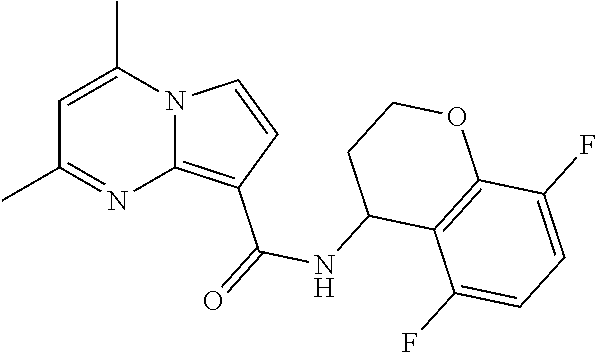
C00573

C00574

C00575

C00576

C00577

C00578

C00579
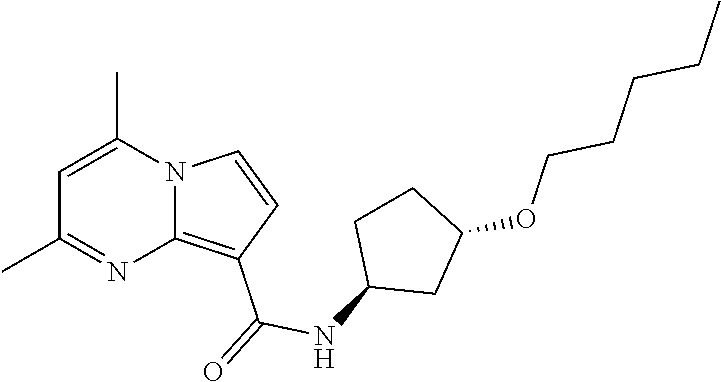
C00580

C00581
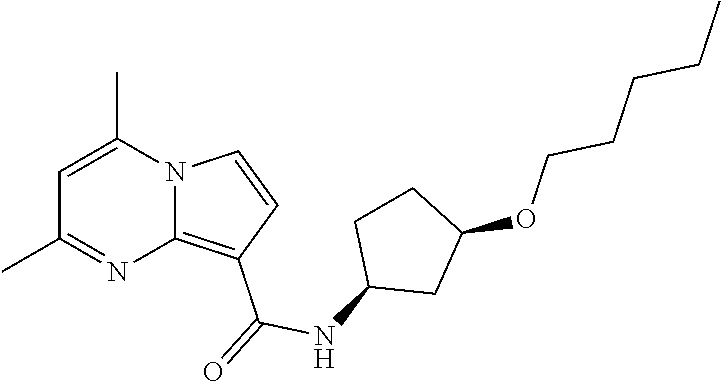
C00582

C00583

C00584
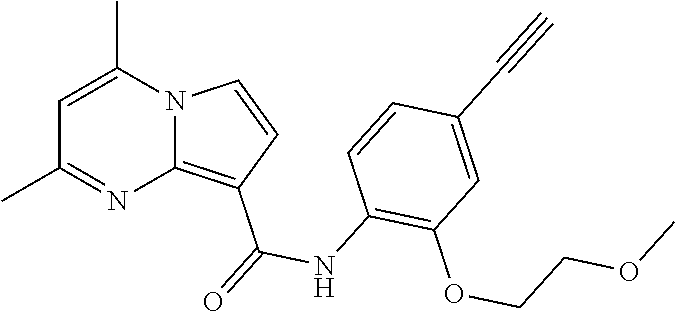
C00585

C00586

C00587

C00588

C00589
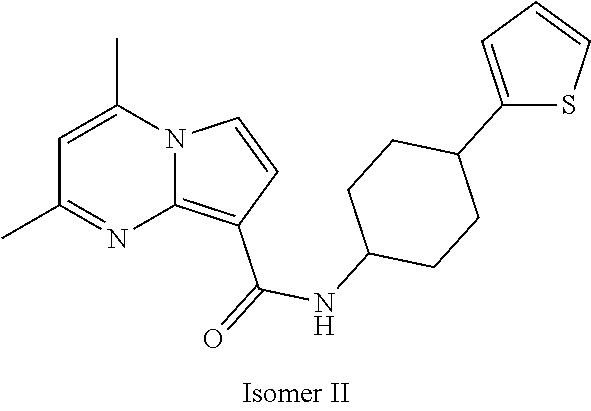
C00590

C00591

C00592

C00593
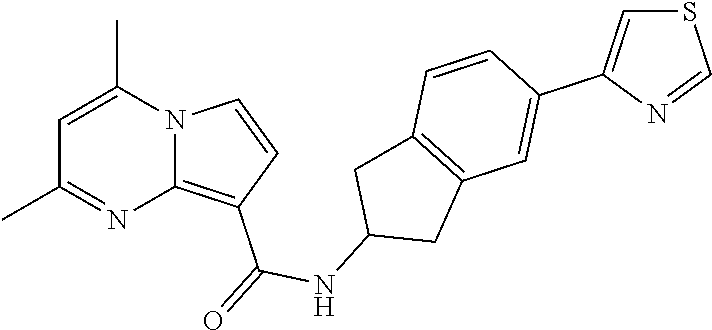
C00594

C00595
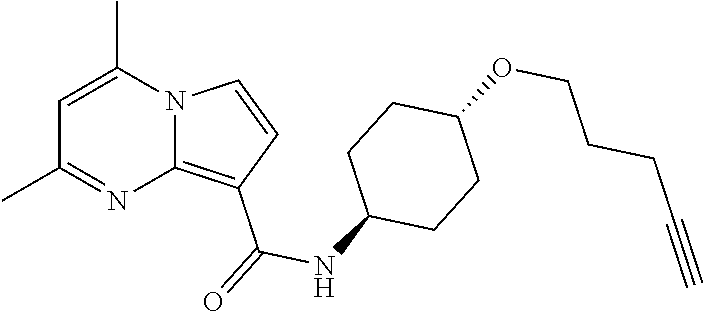
C00596

C00597

C00598

C00599

C00600

C00601
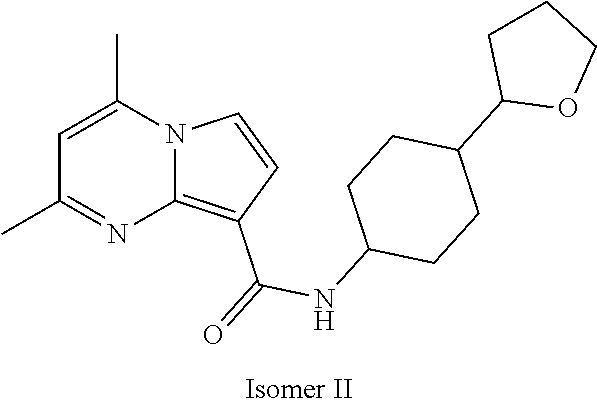
C00602
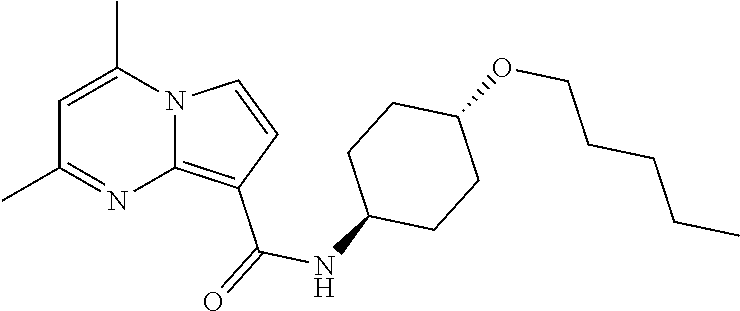
C00603

C00604

C00605

C00606

C00607

C00608

C00609
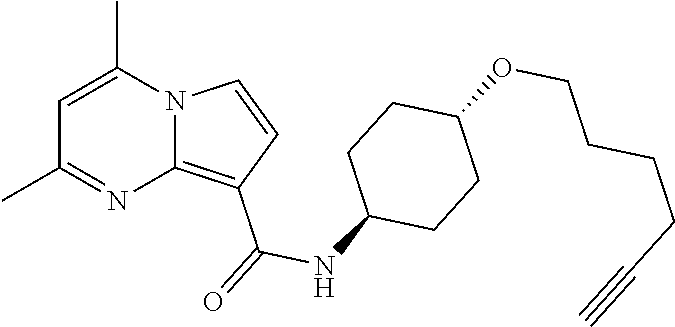
C00610
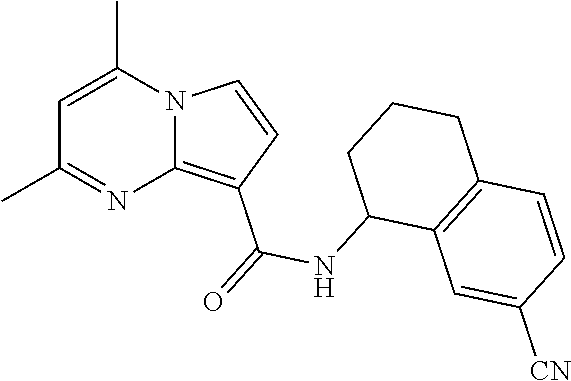
C00611
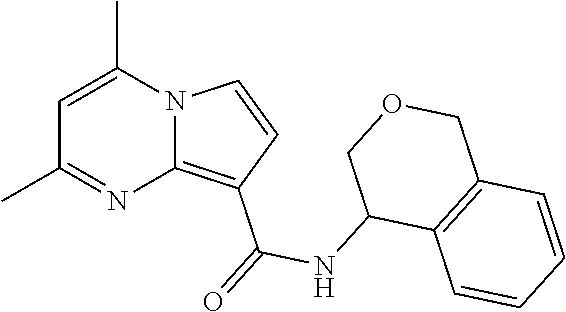
C00612

C00613
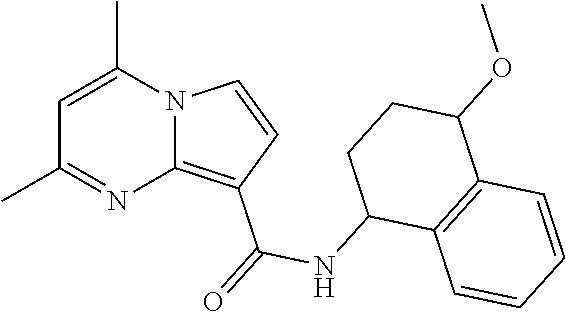
C00614

C00615

C00616
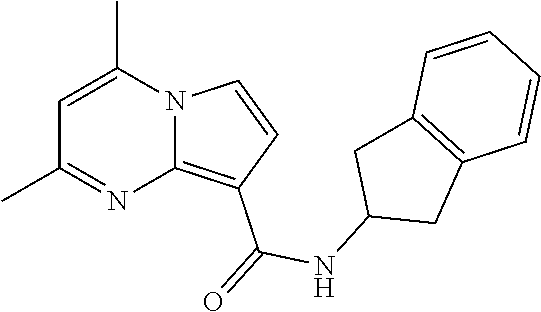
C00617

C00618

C00619
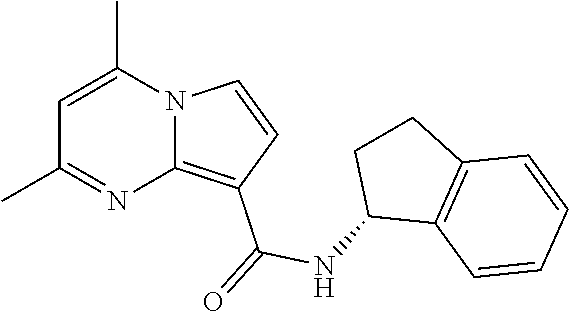
C00620

C00621
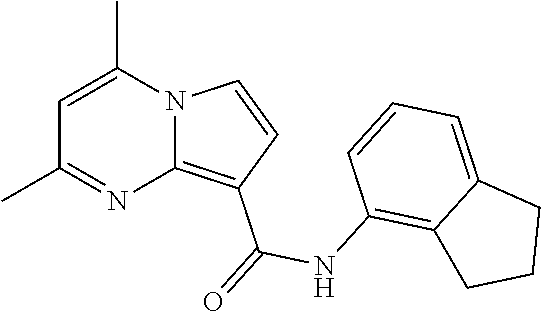
C00622

C00623

C00624

C00625

C00626

C00627

C00628

C00629

C00630

C00631

C00632

C00633

C00634
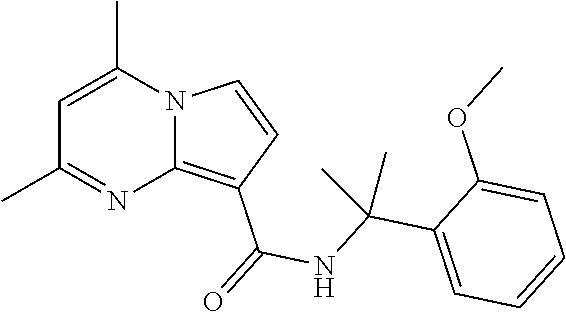
C00635

C00636

C00637

C00638

C00639
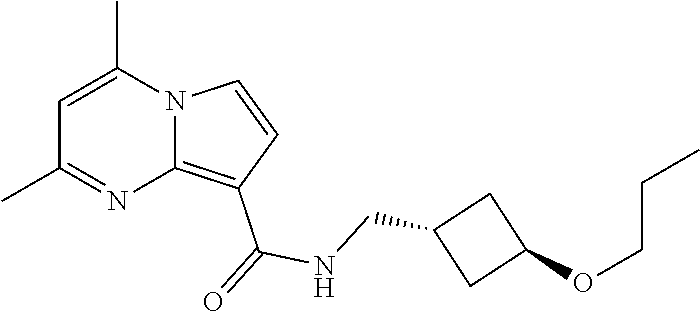
C00640

C00641

C00642

C00643

C00644

C00645

C00646

C00647

C00648

C00649
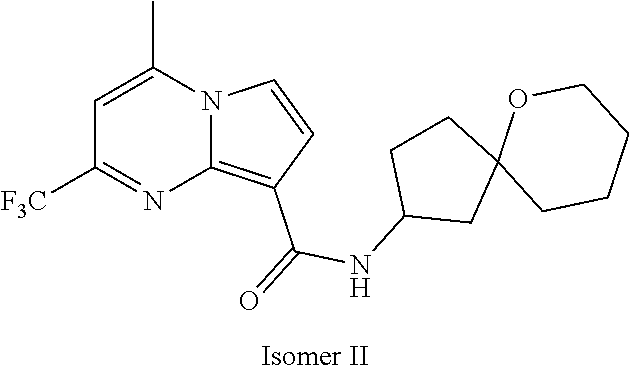
C00650

C00651

C00652

C00653

C00654
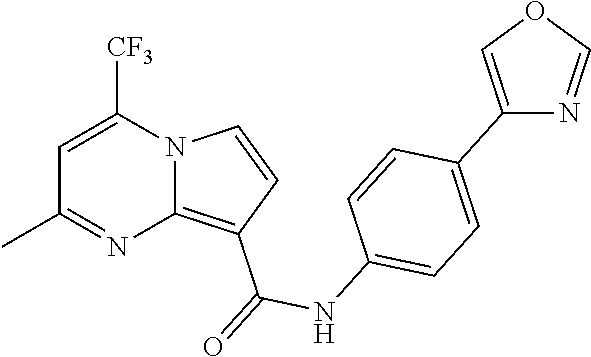
C00655
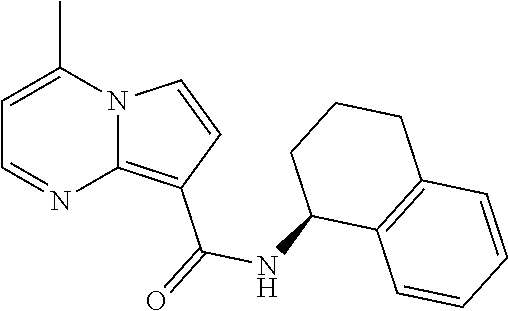
C00656

C00657

C00658

C00659

C00660

C00661

C00662

C00663

C00664

C00665

C00666

C00667

C00668

C00669

C00670
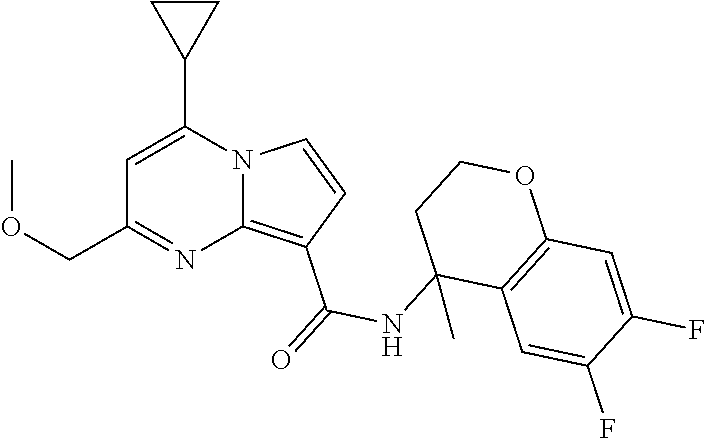
C00671
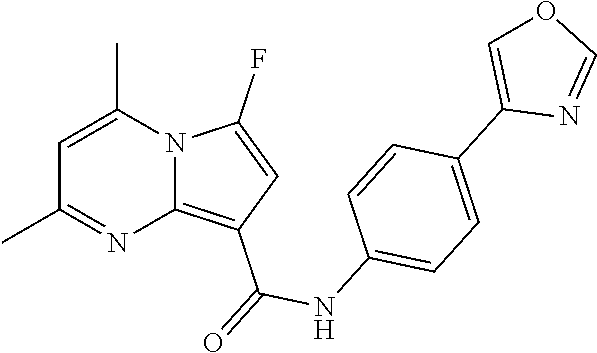
C00672

C00673

C00674

C00675

C00676

C00677

C00678

C00679
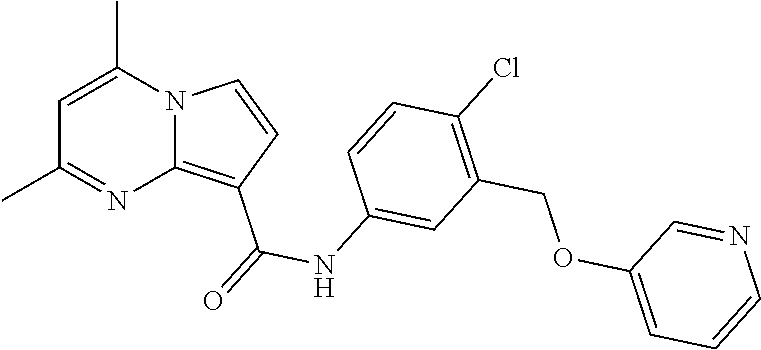
C00680

C00681

C00682

C00683

C00684

C00685

C00686

C00687

C00688
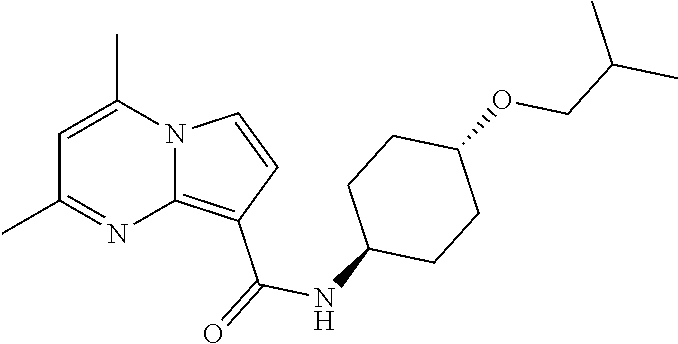
C00689

C00690

C00691
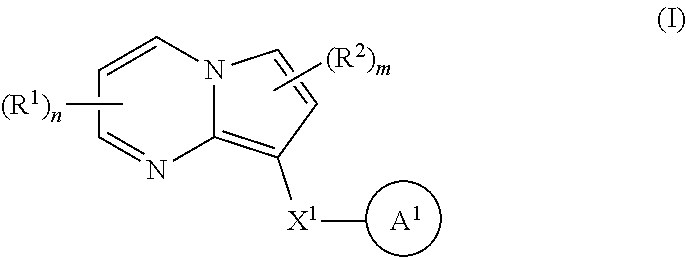
C00692

C00693

C00694

C00695
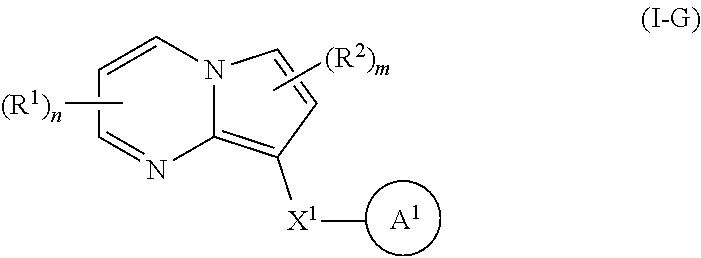
C00696
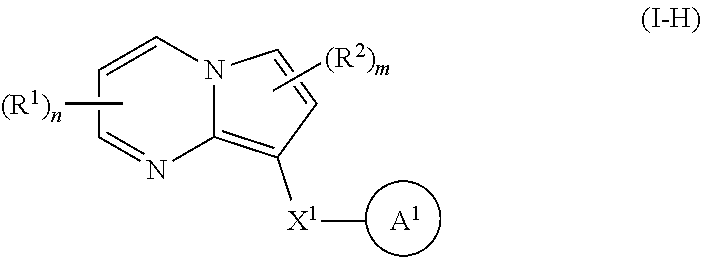
C00697

P00001

P00002

XML
uspto.report is an independent third-party trademark research tool that is not affiliated, endorsed, or sponsored by the United States Patent and Trademark Office (USPTO) or any other governmental organization. The information provided by uspto.report is based on publicly available data at the time of writing and is intended for informational purposes only.
While we strive to provide accurate and up-to-date information, we do not guarantee the accuracy, completeness, reliability, or suitability of the information displayed on this site. The use of this site is at your own risk. Any reliance you place on such information is therefore strictly at your own risk.
All official trademark data, including owner information, should be verified by visiting the official USPTO website at www.uspto.gov. This site is not intended to replace professional legal advice and should not be used as a substitute for consulting with a legal professional who is knowledgeable about trademark law.